
KAREN WAZEN















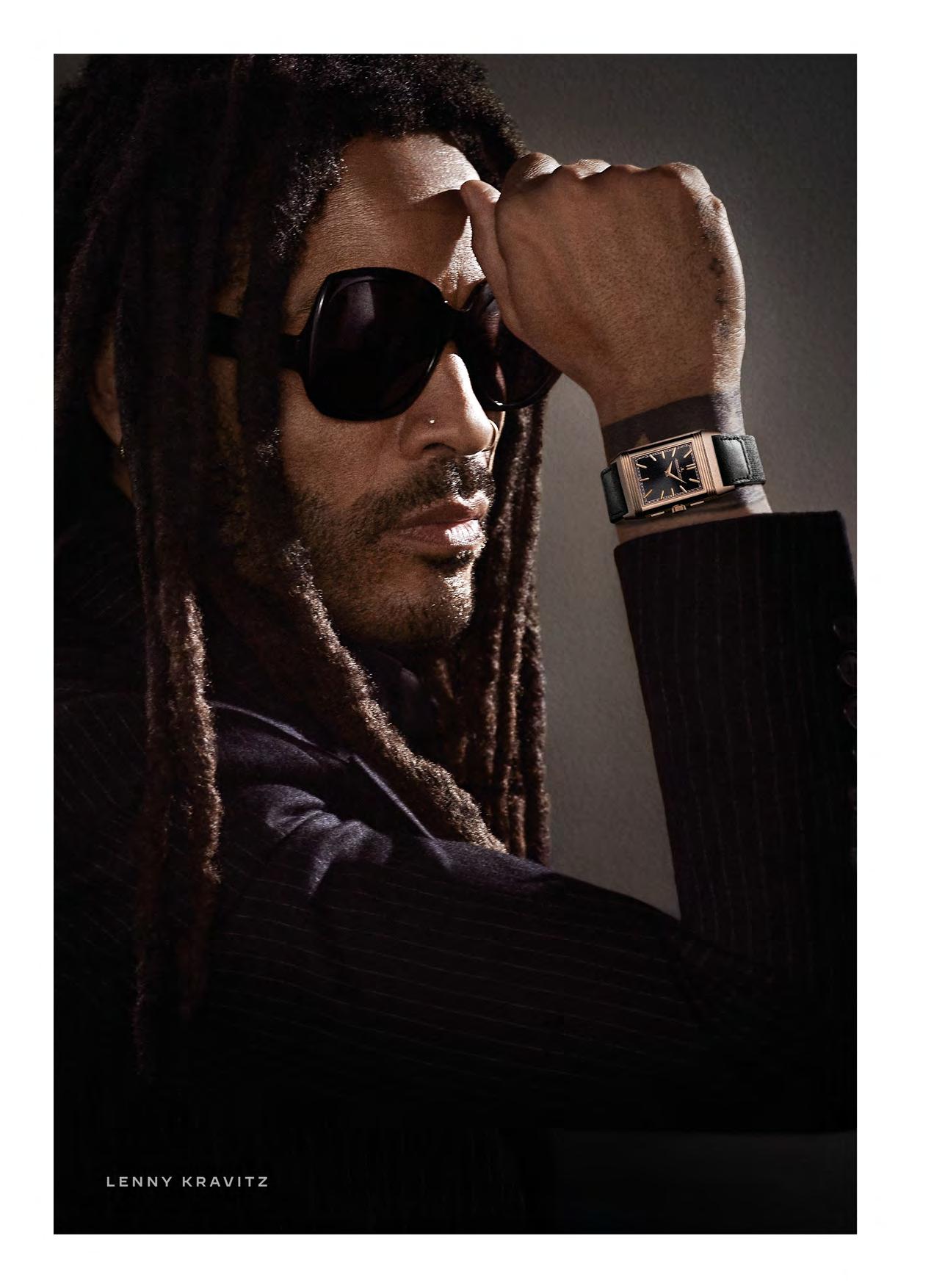




KAREN WAZEN


















To Our Empowered Creatives,
As the pages of YUNG turn, so too does our perspective on the world around us. This issue, we delve into the very essence of power – a concept as multifaceted as the talent we celebrate.
Power. The word itself evokes a spectrum of emotions – awe, intimidation, even fear. Traditionally, it’s been associated with dominance, control, and the wielding of authority over others. But what if we dared to redefine it?
Inspired by the frames of Matthew Jacobs Morgan in his short film “Redefining Power”, we were fueled by imagination to delve deeper into the idea of power and crown it central in this issue.
Here at YUNG, we believe power lies not in subjugation, but in empowerment. It’s the ability to ignite your own flame, to harness your unique voice and vision, and to illuminate the world with your brilliance. It’s having the courage to challenge the status quo, to break free from limiting expectations, and to forge your own path.
Think of the countless creatives we’ve featured – artists who defy categorization, musicians who rewrite the rules of melody, and storytellers who paint vivid realities with their words. Each one embodies the power of self-expression, unwavering belief in their own potential, and the drive to make their mark on the world.
With them there could be so many others, in this edition you can find in our covers Mila Al Zahrani, the Saudi actress challenging the zeitgeist; Kinzy Diab, the curator and creative giving voice to underrepresented Arab artists; the rising actress, Kira Yaghnam, making waves through Netflix; the outsider auteur, Meshal Al Jaser, so influential within Saudi cinema; Maitha Abdalla, the artist basking in the power of self and emotion; Marilyne Naaman, the Beiruti artist whose voice and talent resonate across stages and screens beyond Lebanon and the one and only Karen Wazen, the entrepreneur turned designer who tells us we are our most powerful asset.
But redefining power also means acknowledging the responsibility that comes with it. It’s about using your voice to advocate for change, to amplify marginalized voices, and to fight for a more just and equitable world. The creatives we highlight are not just creating, they’re sparking conversations, challenging perceptions, and inspiring action.
This issue is an exploration of this new power paradigm. Within its pages, you’ll find stories of individuals and collectives who are rewriting the narrative. You’ll be inspired by their audacity, their resilience, and their unwavering belief in the power they hold within, discover the stories of the awe inspiring Paralympic athlete Arz Zahreddine, the artistic breakthrough of Zineb Mezzour, and the surreal realities of Mariam Ajami.
You’ll find hallmarks of hope. In these times of uncertainty, We Design Beirut emerged as a powerful testament to the enduring spirit of Beirut’s creative community and the cultural history of the country in such a beautiful way. By bringing together artisans, designers, and artists, the event served as a platform to showcase their resilience and unwavering passion. This celebration of talent not only contributes to a vibrant cultural landscape, it also illuminates a path towards a brighter future.
So, let us redefine power together, not with a roar, but with the unwavering pursuit of a more just and equitable world.
Here’s to you, the empowered creatives shaping our world.

Masthead
The Mood
Karen Wazen
Kinzy Diab
Meshal Al Jaser
Mila Al Zahrani
Kira Yaghnam
Maitha Abdalla
Marilyne Naaman
Chanel
Backstage
Shadowy Whispers
Redefining Power
Tradition and Modernity
L'ÉCOLE Middle East
Nadine Kanso
Jaeger-Lecoultre
Richard Mille
Hublot
Bvlgari
Hermès

ABDULLA ELMAZ / ABDEL KEBDANI / AIMÉE TWIST / ALAN SCOTT / ALHASSAN
ANGAWI / ALI ALMADINA / ALIREZA
YAHOOZADEH / ALLEGRA S / AMBER
SOPHIE / ARIUNZUL OYUNBAATAR / ASPRIL RG / AZIZ ALSHARIF / BETH PRICE KING / BROOKE SIMONS / CANDICE SHEPSTONE / CARLOS DURO YAGÜE / CHARLOTTE ELLIS / CHRISTOPHER LOW / CHRISTOPHER LOW / DEENA ALAWAID / DESIREE ADAMS / DOUGLAS MILLER / ELLIE BOND / ESRA SAM / FABIEN RENNA / FINN L / FOUAD TADROS / GEORGIA WILLIAMS / IVANNA OSPY / JAMES ROBERTSON / JEN ALDERSON / JEAN KAIROUZ / JOSH JAMES / KHADIDJA
SYLLA / LARA ZANKOUL / LAURIE KIRWAN
ASHMAN / LAURIE MOULARD / LUCY VEALE / MARIANA PINA / MARCO AIELLO / MARILLA
RIZZI / MASAKI KAMEDA / MATTHEW
JACOBS MORGAN / MAURO D.HERNAN / MAZEN ALHAMAI / MEGAN CUMMINGS / MOE RIDA / NEKITA NARANG / NICOLAS SUK SOON / NOUR ANABTAWI / PREETHAM PEREIRA / RAY BUNDU / REMAH JAMMOUL / ROSEANNA HACKETT / SAIF AL-SOBAIHI / SANA JAMALI / SARAH RUXTON / SILAI / TARECK RAFFOUL / TOM ARNETT / TOM FRIMLEY / VINCENT KABBARA / YEHIYA
BEDEIR / YINKA

founder and chief content officer
SANDRA YEGHIAZARIAN
creative director SAIF HIDAYAH
art director
ATHINA SYMEONIDOU
senior editor LOUIS PARKS
junior fashion stylist NUJOUD OWEIS
junior talent manager OMAIA JALLAD
producer LANA SHASH
digital writers MENNA SHANAB
MARIANA BAIÃO SANTOS
executive assistant DARA HAMARNEH dara@thisisyung.com
SUBMISSIONS AND INQUIRIES hello@thisisyung.com
PRINTING
AL GHURAIR PRINTING AND PUBLISHING LLC
PUBLISHED BY THIS IS YUNG LLC
Sharjah Media City hello@thisisyung.com www.thisisyung.com
All rights reserved. No part of this publication may be reproduced in whole or part without permission from the publishers. YUNG Magazine welcomes new contributors but can assume no responsibility for unsolicited photographs or illustrations. Every effort has been made to contact the copyright owners of the images and text in this issue.



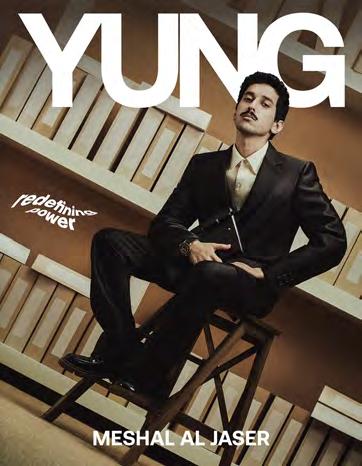



words
Moroccan photographer Fatimazohra Serri’s artistic journey began long before she embarked on it as a full-time profession. Despite her desire to pursue photography after graduating from school, she found herself behind a desk, as an accountant. Yet, her passion for the arts remained steadfast, using her camera as a way to alleviate depression brought on by the monotony of her accounting job. Serri’s portraits serve as a reflection of her reality, challenging societal norms and initiating conversations about gender and inequality. For her, photography is more than a hobby; it serves as a tool to dismantle stereotypes and amplify silent voices, particularly those of women within her community.
Can you tell us about your journey into photography, from starting with your smartphone to purchasing your first camera?
I started photography in the summer of 2016 out of curiosity, I first turned to it as an outlet for my depression after starting a desk job as an accountant. My days were composed of sameness, solitude and a feeling of voicelessness. I started shooting with the simple lenses of a mid-range phone, a year later I received an affordable camera as a present from a friend to take my hobby to the next level.
After enjoying street photography for some time, I wanted to discover a completely different style, conceptual photography, to create something that reflects who I am and more related to me. I started with self portraits on the roof of our house, sometimes with my sister as a model.
Due to the controversial nature of my work, I find it challenging to freely shoot in public. As a result, most of my early works were shot exclusively on the roofs of my home or my friends’ homes. In August 2021 I decided to quit my job and focus on photography to work as a full time artist photographer. I took this decision after 5 years of working as an accountant, it was affecting my practice as an artist and most importantly my mental health.
How has your background and upbringing in Morocco influenced your photographic style and subject matter?
My environment and people that surround me are my biggest inspirations, particularly the women in my conservative society, as well as the situations I have experienced personally or witnessed through the people around me. Photography is my tool to express my feelings about those experiences. Through my work, I aim to shed light on their stories and challenges and spark conversations.
What challenges do you face as a photographer in Morocco, particularly concerning the limitations on taking photographs in public spaces?
Navigating cultural norms and perceptions in Morocco can be challenging for photographers. Capturing the stories of women and sensitive situations is my passion, but it sometimes clashes with societal expectations. In public spaces, people often misunderstand or feel uncomfortable with my unconventional style. Despite these hurdles, I persist in using photography to shed light on important narratives and spark conversations.
Your work often addresses issues faced by Moroccan women in society. How do you navigate portraying these themes while respecting cultural sensitivities?
As a woman photographer in Morocco, I encounter both obstacles and chances for growth. While societal norms can shape perceptions, sometimes dedication and skill can overcome these barriers. Being a woman grants me access to perspectives and moments that add depth to my work, offering a more authentic portrayal of Moroccan life.
Loneliness, confinement, and the quest for escape are recurring themes in your work. What draws you to explore these themes, and what do you hope viewers take away from your images?
I explore themes like loneliness, confinement, and the quest for escape through my photography because they reflect my own experiences and emotions. I want viewers to feel a connection with my images and maybe see their own struggles mirrored in them. Ultimately, I hope to evoke understanding and empathy through my work.
In what ways do you challenge or subvert stereotypes and clichés about Morocco in your photography?
I’m not intentionally challenging stereotypes or clichés about Morocco through my photography. Instead, I aim to authentically reflect the reality of my experiences and surroundings. By capturing moments and stories as they unfold in my life, I naturally portray a diverse and multifaceted perspective of Morocco that may challenge preconceived notions. My focus is on honesty and sincerity rather than actively confronting stereotypes.
How do you approach the process of staging and composing your self-portraits? Do you plan them meticulously or allow for spontaneity? Most of the time, I plan my self-portraits meticulously. I begin with a clear concept or idea in mind, considering everything from composition to lighting to props. This planning process helps me execute my vision precisely and ensures that the final image accurately reflects my intended message or emotion. However, I’m also open to spontaneity during the shoot, allowing room for creative experimentation and unexpected moments to emerge organically.


Can you describe the journey of creating a collection from initial concept to the runway? What are the key stages and challenges you encounter along the way? We start with the concept, the initial idea. It must have a meaningful purpose, it must have a message. Otherwise it’s not inspiring enough for me to dive into it for months. Then we start breaking down this concept into colours, textures, shapes, techniques, proportions, et cetera. MARAM is really about storytelling, nothing is an accident. Every piece is part of the whole and when it all comes together it’s really saying something. The stages are always standard: concept, design, edit, present. The challenges only keep getting harder because each season we try something completely outside of our comfort zone which keeps us in a never-ending learning process. This is the beauty of design and this is how we continue to evolve and grow, by facing challenges with curiosity and humbleness.
How does MARAM achieve the balance between lightheartedness and sophistication in its collections, and what do you aim to evoke in those who wear your designs?
MARAM is really about the meeting of two worlds. Polarity is a core for us. And in my opinion, good design always has two opposing forces meet in perfect harmony. I love mixing serious elements with childlike, playful elements. I’m inspired by people who have the ability to embrace all sides of themselves, the strong and the vulnerable, the loud and the quiet, the light and the dark. I think that dichotomy is the true beauty of human nature. I design with the purpose of evoking positive emotion in the wearer, fashion really is a silent language. I want my clients to feel like they are stepping into their power every time they put on a MARAM piece.
Sustainability and ethical manufacturing are core values for MARAM. Could you elaborate on your commitment to conscious creation and how it influences your design process and business practices?
MARAM collections are now designed in “Cycles” instead of standard industry seasons, going against the grain of your industry is always a big risk to take, but we aspire to be change makers and thought leaders. By exploring alternative systems within the industry and challenging the standard production cycles and methods, we can hopefully build a more ethical and sustainable future. Conscious design is really important for me, if you’re going to put something new out into the world it has to be intentional, it has to add value. In an era of overconsumption,

MARAM is a ready-to-wear brand born from a passion for old-world craftsmanship, creative escapism and storytelling. Established by Egyptian designer Maram Aboul Enein, MARAM’s collections effortlessly reflect balance and polarity, offering pieces that span the spectrum from loud to quiet, playful yet sophisticated, and light as well as dark. By blending intricate details with timeless style, MARAM modernises heritage and local craftsmanship. Embracing the concept of ‘off-duty luxury,’ the brand redefines modern elegance while prioritising sustainability, ethical practices, and mindful creation at its core.
overstimulation and hyper-consumerism, we want to bring back the true essence of fashion that has been lost in all the noise.
How do MARAM’s locations in Montreal and Cairo, along with its presence at Paris Fashion Week, shape the brand’s identity and design aesthetic?
The brand’s identity is very hybrid and multicultural. We “belong nowhere and everywhere at the same time” and this non-identity is deeply woven into our collections and communication. Living the majority of my life between Paris, NY, Montreal and Cairo, allowed me to rediscover and embrace my roots while immersing myself into different cultures and worldviews. It made me realise that in the end, we are all the same, we are all part of one consciousness. Our nationalities and ethnicities are worldly identities, but we are all human. This perspective of oneness is very much the driving force behind all of my work. I never attach my brand to one country or culture, MARAM is for everyone who embraces their humanness over worldly identities.
How do you innovate within the realm of ready-to-wear fashion while still honouring timeless craftsmanship and design principles?
We are very much dedicated to reviving dying artisanal techniques such as loom hand embroidery. We are always trying to find ways to modernise heritage and local craftsmanship without losing its timeless essence. So the challenge is always how can we create an artisanal piece that is so easy to wear, comfortable, timeless and that can be priced reasonably? Each cycle we manage to get one step closer in innovation, our latest challenge has been to create a weightless embroidered dress and we managed to create an entirely hand-embroidered gown that weighs less than one kilo.
How does the brand challenge traditional notions of luxury, and what does luxury mean to you in the context of contemporary fashion?
Luxury for me means absolute comfort. If something is not comfortable, it’s simply not luxurious, no matter the price point. MARAM aims to connect the dots between comfort and extravagance. If we can make an incredibly high-quality, timeless piece that our client feels extremely comfortable in, that for me is the ultimate luxury.




Hashim Musa JR is a Palestinian-born artist currently based in Copenhagen. He wears multiple hats, ranging from singing, songwriting and music production, to photography and directing. Despite his various creative endeavors, Musa brings a unique perspective to each of his pursuits. Through his visual work, he infuses feel-good energy that reflects his unique perspective on life. When it comes to music, Musa creates sounds that combine different tastes of soft rock and R&B/Soul, further enriching his artistic style.
What was your earliest experience in the creative world, and how did you decide this was the field you wanted to work in?
I was working for a music/fashion/lifestyle magazine. From brainstorming ideas to seeing it become reality opened a new world of feelings for me and so I followed that path.
As a multi-talented artist involved in music production, songwriting, photography, directing, and occasional DJing, how do you navigate the diverse creative avenues in your career?
I try to give each avenue my full attention when it comes to each path. I would lie if I said it wasn’t difficult to keep up, but luckily they all share common ground in my opinion.
Your roots lie in Palestine, yet you’re based in Copenhagen. How does your cultural background influence your artistic expression, particularly in your music and visual work?
It’s difficult to specify what it is. My cultural background appreciates having fun, being confident and very honest and I want my work to represent that.
Could you share how your photography intersects with your music and directing projects, if at all?
Some projects may differ, but I’d say capturing innocent, true moments. That’s where I feel honesty and vulnerability comes in.
In what ways do you use your platform as an artist to address social or political issues, particularly given your Palestinian heritage?
I raise awareness by sharing content from reliable sources. I share thoughts and stories to create more sympathy and perspective for the people observing.
How do you stay inspired and motivated in your creative pursuits, especially when facing challenges or creative blocks?
I keep moving, with my eyes, ears and heart wide open. I take in as much information as I can, whether it’s through traveling, books, music, movies, real life experiences. I embrace the challenges as a way of learning.
You travel extensively, as evidenced by your active presence on social media. What inspires you the most when you visit a new city, especially in terms of how it influences your artistic expression?
Experiencing different cultures, the expansion of my visual expression via exterior/interior, environment, and social interactions. Everything expands my creativity and perspectives on life.
If you could photograph any person, alive or deceased, who would it be and why?
Tupac Shakur is definitely on the list. Even though I’m born after his time, he still remains a timeless inspiration for me and I truly believe we could have created something special.
With your recent EP release, could you share how your diverse range of musical influences has shaped the sound and themes explored in these new songs?
I wanted to create sounds that combined different tastes of soft rock and R&B/Soul. During the process, the producer, Christian Sigvardt, and I agreed that it would suit the project if we played around with effects on my vocals and so that approach added the indie genre as well.
In your own words, how would you define “power”?
Power for me is believing in something so much that no one can change that belief. That can be the cause of very great, or very bad things. Free Palestine.
Arz Zahreddine is a Paralympian hailing from Lebanon. After a life-altering accident when he was just three, Zahreddine lost his right leg. However, he has since defied odds to emerge as an inspiring athlete, proudly representing his country as their sole Paralympian at the Tokyo 2020 Paralympic Games. Through his determination and skill in the men’s 200m T64 qualifying heat, he managed to beat his personal best.
Your journey to the Tokyo 2020 Paralympic Games is incredibly inspiring. Can you share with us what motivated you to pursue sports, particularly running, at such a young age despite facing challenges?
I was once a top fencer, winning many medals. Switching to elite running wasn’t easy, but I’m driven by pushing my limits. Seeing athletes overcome challenges inspires me to be even better. I faced bullying for being different, but I embrace my uniqueness. We’re all unique, and I believe in working hard around the clock to show our true potential and strive for excellence.
Transitioning from fencing to running is quite a significant change. What prompted this transition, and how did you find your passion for running?
I love moving fast and playing around, so I decided to switch gears and focus on short distance running. My big dream? Competing in the Paralympics and becoming the first Arab qualifier in my category, T64 (one leg amputation below the knee). I wanted to make myself proud and inspire pride in all Arabs! And I achieved my goal in a very short period of time.
Qualifying for the Paralympic Games after just two years into your Paralympic career is an impressive achievement. What do you attribute your rapid success to, and what challenges did you face along the way?
Dedication always beats motivation! My goal was to run in Tokyo with my idol, now that we became friends, Jarryd Wallace, and to see myself in front of these high-level athletes back then... my rapid success came, but I put and focused on short term goals that will lead to big successes, and I made it. After Tokyo 2020, I was ranked 2nd in Asia and 8th in the world in the T64 category.
Jarryd Wallace served as an inspiration for you. How did his journey influence your own path in sports, and do you hope to inspire others in a similar way?
Jarryd played a big role in my life after I watched his journey. I learned how to be more resilient in life, seeing how he holds many titles yet remains down to earth and helps everyone. He’s one of the greatest men in the history of para athletics. From my perspective, my motto reflects what matters most to me: ‘Serve, Empower, Conquer.’ As you grow in influence and power, you should serve the community that supported you during your journey. Empower them to be productive and independent, so they can conquer and excel in their own fields.
How has sports impacted your life beyond the realm of athletics, and what lessons have you learned from your experiences as a Paralympic athlete?
Sport is the ultimate remedy for all pain and trauma. Running and confronting obstacles make you stronger in life because you realise that every problem is like a race - it starts at point A and always ends at the finish line. There’s always an end to all the negative things we face, but we have to believe in ourselves and not stop half way!
Can you describe the camaraderie and sense of community among Paralympic athletes, and how this support network contributes to your journey?
Every athlete has their own unique story; that’s what life is all about. We come from different countries, cultures, and circumstances, but we share the same mindset of striving and working hard daily. Disability is often just an illusion, and true disability is when you have all you need but choose to do nothing. We’re like a family, supporting each other along the way.
How does it feel to represent your country on such a prestigious international stage?
Lebanon first appeared in the Paralympics in 2012. Since then, my goal has been to showcase Lebanon in major events and stadiums like the Paralympics again. When I was in Tokyo, tears welled in my eyes because I realised I was the only representative for my homeland, despite also holding a second passport from Argentina.
What are your aspirations and plans for your athletic career, and how do you envision continuing to inspire others through your journey?
My aim now is to find support from an Arab country, especially from the GCC, to make a greater impact in the sports industry and show that Arabs can excel in major events. Why not the UAE, since they’ve supported me throughout my life? I feel that UAE and Dubai are my true sources of inspiration, offering boundless opportunities, especially for people with determination. I greatly admire His Excellency Sheikh Hamdan for his unwavering support, leadership, and vision.
What does power mean to you?
Power, to me, is the ability to inspire, create change, and uplift others. It’s not about control or dominance, but about using influence to make a positive impact and empower those around you to reach their full potential.

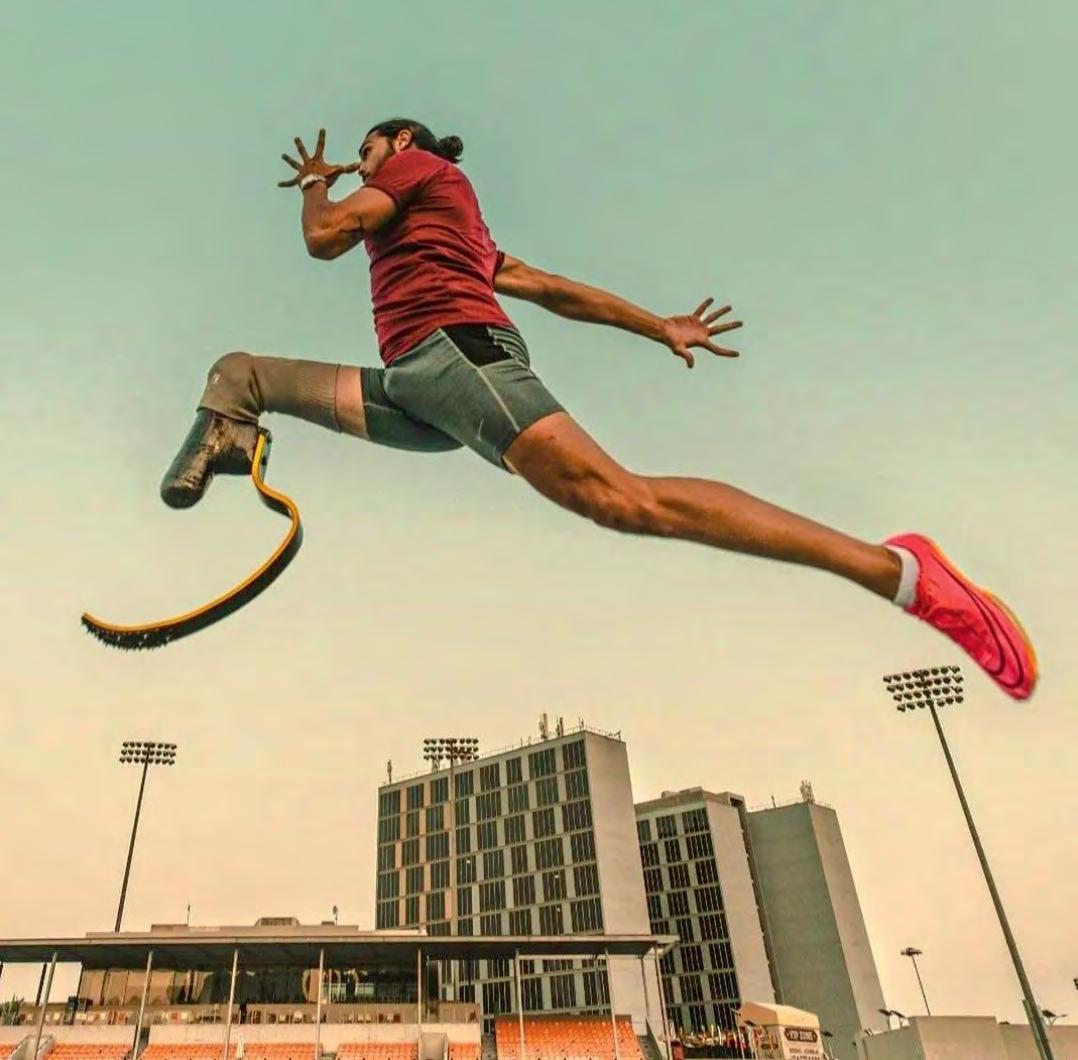


Munzer (Munzy) Kabbara is a Lebanese swimmer who has left a lasting mark on the international stage, despite undergoing back surgery at 19 years old. His participation in the men’s 200-metre individual medley at the 2020 Summer Olympics is a testament to not only his dedication to the sport, but his resilience in overcoming obstacles in the face of adversities. Kabbara, a beacon of Lebanese pride, solidified his status as a formidable competitor by participating in the 2022 World Aquatics Championships held in Budapest.
What inspired you to pursue swimming as a competitive sport?
I was so bad at every other sport I tried, I had no hand-eye coordination whatsoever, so swimming was the one thing I could do really well. What pushed me to keep going was my natural love for water and the sport.
Could you share a memorable moment from your experience competing in the men’s 200 metre individual medley at the 2020 Summer Olympics?
I think the best part about the 200 IM in Tokyo was when I dived in and started smiling so hard because of how excited I was to race and the underwater camera caught it.
How do you balance your academic and athletic commitments while swimming collegiately for the Texas A&M Aggies?
Balance is one of the hardest things for me because in highschool swimming was my number one priority, but when I got to college academics and swimming were now both number one…so creating that sense of urgency and committing to myself beforehand to give 100% in both helps me, for sure.
What are some of the biggest challenges you’ve faced in your swimming career, and how have you overcome them?
One of my biggest challenges was having back surgery at 19 years old and having to take a year off of swimming. I would not have been able to come back without my incredible support system, from family, to my team, coaches, and friends.
Can you describe your training regimen leading up to major competitions like the World Aquatics Championships?
The training is always miserable, but it makes the races that much easier, haha! We train like crazy so that the race feels easy. I love training more than the racing, finding little ways to get better everyday is what motivates me.
As a representative of Lebanon on the international stage, how do you feel about the role of sports in promoting cultural exchange and understanding?
When I was younger I felt that there was a lot of pressure representing Lebanon, my country, however as I got older I learned that it was a privilege to represent Lebanon and to be surrounded by so many athletes from different countries and to learn about the different cultures and traditions.
Are there any specific swimmers or athletes who have served as role models or sources of inspiration for you?
Definitely Caleb Dressel…I just love how he treats his fans, I love how he carries himself and I strive to be like him everyday. If you met him on the street you would never know he’s an Olympic record holder and gold medalist.
How do you stay motivated during periods of intense training or when faced with setbacks?
I remember why I started, when I feel like giving up I just ask myself why I am still waking up at 4 AM everyday. Once I answer that question it becomes so much easier to get through the rough patches.
Outside of swimming, what are some of your hobbies or interests?
I love playing pickleball, spike ball, lounging at the pool with friends, and just being around people I enjoy. I’m a thrill seeker, so anything to do with water sports like jet skiing and stuff like that is at the top of my list.
In your own words, how would you define “power”?
I would define power as the ability to stand tall in the face of adversity and lead with unwavering confidence.
Kairo Lulumba is a British-Egyptian abstract artist. His art is a proclamation of freedom, a visceral expression of his emotions and life experiences. Lulumba’s artistic journey began during his university years, where he discovered the transformative power of painting as a medium for self-discovery and reflection. Through his vibrant and dynamic compositions, which he dubs “Kairolglyphics,” he invites viewers into his world, encouraging them to explore the depths of his psyche and engage with the raw energy that pulsates through the work.
Can you tell us about the moment or experience during your university years that sparked your passion for abstract art?
The first painting I made for an intro to drawing course I signed up for as an elective; I painted a bunch of noses and stood in front of everyone and made up some story on the meaning behind it. My professor saw right through me and called me out for spewing nonsense. It was then and through hours of sketching everyday that I had learned that there was no room for nonsense in my artwork but rather meaning or genuine feeling.
Your art is described as bold and expressive, often serving as a conduit for your emotions and experiences. How do you approach translating your innermost thoughts and feelings onto the canvas?
I believe my art is a direct representation of my personality and how I absorb issues and my ability to vocalize them. Sometimes it’s a premeditated process but most of the time I’m in a complete bubble channeling thoughts and feelings from my subconscious to become conscious of them upon facing them on the canvas.
What role does freedom play in your creative process, and how does it influence the direction of your work?
Painting was always my liberation from the confines of working life, where so many externals control your movement. I painted as an escape, which gave me autonomy during my days working in the conventional business world, where you cater to demand. As an artist I cater to my own desires and to me there is nothing more free than doing what you feel is right with no requirement to fulfill anyone’s needs but your own.
Abstract art often challenges traditional notions of representation and interpretation. In your work, how do you navigate the balance between personal expression and how it will be received by your audience ?
If I’m being honest, I don’t try to navigate how it will be received, but rather pursue a more true approach in relation to my interpretation. I believe that through doing this my work will draw an audience that more genuinely relates to it.. I’m a firm believer that true artistry doesn’t depend on making sure an audience understands it, but rather finds the audience that does through sincere relatability in meaning or in the feeling it evokes. We don’t always have to understand something to love it.
Your compositions are vibrant and dynamic. Could you walk us through your creative techniques and how you achieve such energy in your work?
I’ve discovered through years of practice and on countless occasions that my most powerful work is created in a somewhat meditative state, where I am so focused I am truly somewhere else in my head. In those times, once a piece is complete it is as if I have just woken up from a dream and It takes me a while to snap back to reality.
How do you perceive the relationship between your cultural background as a British Egyptian and the themes or motifs present in your art?
The Kairolglyphics which I paint are a lifelong experimentation I am pursuing. I aim to figure out how this language develops as I grow and as I am exposed more to life. I believe they carry influence from the Arabic language as well as the English language, not to mention some African tribal influence. You could say they are modern day cave markings.
Can you share with us any specific experiences or moments that have significantly influenced or shaped your artistic journey?
In 2021 I experienced betrayal in its most extreme form. I nearly lost everything I was working for in my business career due to the lies and unethical practices of a dear friend and business partner. In a plea to not lose my sanity I turned to my canvases in hopes of regaining my composure. As I worked on my craft day in and day out, my art career began to flourish organically on its own and I had no choice but to acknowledge that this was my purpose in life.
Abstract art has the potential to evoke a wide range of emotions and interpretations. What do you hope viewers take away from engaging with your work?
As long as they feel something, then the artist has done their job. Even if they feel disgusted by it. The stronger the feeling, the better. Art is subjective, however, and not every art piece will serve its purpose to the viewer, I believe if it serves its purpose to the artist then it is at least genuine and that’s what matters to me most.
What does power mean to you?
To me, power is positivity. It is to be able to acknowledge the bad and yet still see the good in the world and those around you. Influence is the greatest power and to inspire is the most powerful influence.





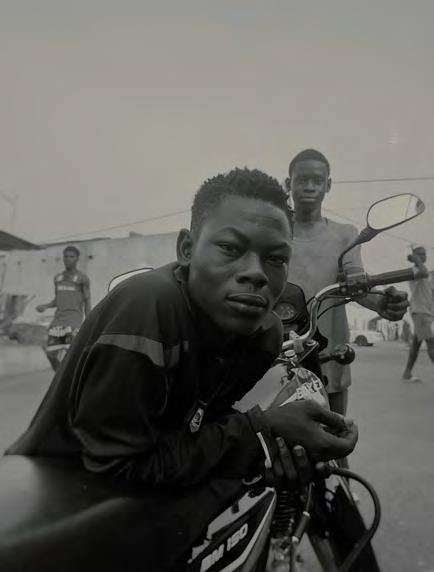




Jude Lartey is a Ghanaian self-taught image-maker whose portraits convey emotion and sensitivity. He is also an art director and a fashion stylist for various brands, magazines, and artists, lending his creative input to the diverse projects that come his way. His cinematic compositions vividly present scenes that talk of the emerging identities within his community, reflecting dreams and societal shifts, too. Whether through his exploration of documentary or fashion photography, Lartey always manages to intertwine the realities of everyday life with the vibrant energy pulsating through Accra’s creative scene.
As a self-taught image-maker, what initially sparked your interest in photography, and how did you develop your skills to the level they are today?
My granddad was a personal bodyguard to the first ever president of Ghana, Kwame Nkrumah, so growing up I heard all of his stories about the experiences he had within that role. He was exposed to so much that he was able to share with me through photos. Looking through family photo albums always gave me so much delight, and I would say that these moments are some of my earliest inspirations. Later, with this love I had developed for images capturing moments in time, I discovered pioneering photographers such as James Barnor, Malick Sidibe, Sanle Sory, et cetera. These photographers really empowered me to chase my dream. At the time I was a freelance model and this was the start of my journey. My friends and I would hit the streets of Accra every weekend to shoot images of each other. We were more like a team spearheading street style in Ghana. Then as the years went by I channelled my modelling career into styling, creative direction, art direction and set design. These themes shaped my eye for image-making.
In addition to photography, you also work as an art director and fashion stylist. How do these roles complement your work as a photographer, and how do they influence your creative process? These roles go hand in hand with my photography. Having these as part of my repertoire allows me full autonomy on a shoot and allows me to think about the image in a holistic way. I pay attention to every little detail from how the fabric sits on the body, the movement of the models and muses, the colour palette, the narrative that all these elements tell- all of this sits within my control, and I think this is what gives my work its defining feature. That thing that one can’t quite put their finger on, but what makes them know instantly that it’s a Jude Lartey image.
From documentary to fashion photography, your portfolio showcases a diverse range of styles and subjects. How do you navigate between different genres, and what attracts you to each of them?
The diversity of my work is what makes me special, whether documentary or fashion photography. The end goal is to capture an era and fashion is a tool which I use to sell my story. I see and experience so much, there are always new ideas brimming. But once I focus on one, I explore and execute it in it’s entirety, for that moment, and then move on. I don’t want to be put into a box. My work is truly a reflection of Ghana, and Ghana is so much and everything all at the same time. A multiplicity of colours and cultures and ways of living and being.
Accra’s creative scene plays a significant role in your work. How does the city’s energy and cultural richness inspire and influence your photography?
There are so many amazing creatives in Ghana and we are all in it together. Whether you know someone personally or just through
Instagram, advice and inspiration is always on offer. I love this creative art scene. Ultimately a scene is made up of people, and we are one big community championing one another. Proud of each other and inspired and motivated by our ingenuity, our tenacity and our love of our culture. I am because of them, and vice versa. With regards to the city’s energy, it’s in the everyday hustle and bustle in my city that is like the heartbeat of the country. You can’t not be motivated by it. Especially when you’re in the market. The market women and the vendors, their zeal for what they do and relentless determination inspire me to pursue my goals. And lastly, just the freedom and expansiveness of my culture.
Your art reflects the aspirations and evolution of your generation. How do you see your role as a photographer in capturing and documenting this cultural moment?
I believe I am making an impact and creating a narrative for the future generation to lean on. That, I believe, will be my legacy, but I’m not attached to that. I love what I do and it is that love that is the driving force.
Can you share any memorable experiences or stories from your journey as a photographer that have had a profound impact on your artistic vision or approach?
Working on the Converse campaign ‘Let the Black Star Shine’ with creative director TJ Sawyerr. We had met in Ghana a year or so before and had really hit it off. We just vibed and had said we’d love to work together. So when the opportunity came up for the campaign, I jumped at it. The campaign was shot in one of the local communities in Accra called Jamestown. It is also the oldest community in Accra. This made the shoot even more special, not only were we showcasing the shoes, but we were able to amplify the community by showing it in a raw and authentic way. During the shoot, the kids and the elderly really embraced us and everyone wanted to be a part of the project.The energy was palpable. The raw energy of support and enthusiasm from the locals - it’s just something you have to experience. This is a moment I will cherish and it reiterated the value in community based work and has served as a great influence on how I envision community, using fashion to unite everyone and tell a story of my people and culture.
Looking ahead, what are some of the themes or projects you’re excited to explore in your photography?
I am really looking forward to diving deeper into exploring masculinity, and the different ways it is portrayed and embraced by different generations of men within Ghana. I believe that there are so many nuances to masculinity in Ghana and I want to use my photography to explore and showcase them for a local and international audience. I am also working on my two personal projects “Unseen Ghana” and “Land of the Morees”. Both of them capture the rawness and authenticity of my Ghanaian subjects. It’s my way of amplifying their cultures and traditions and to create a visual catalogue that can become a part of history.
Lebanese collage artist and photographer Mariam Ajami is all about the surreal lens. Her art, a mix of photography and collage, which she dubs as her “cut-and-paste” method, delves into a world where solitude and creativity intertwine. Her work allows you to think outside of the box – where the unconscious becomes reality. Drawing inspiration from her childhood and experiences in Lebanon, Ajami’s art emerges from meticulous observation of her surroundings, aiming to convey a dreamlike interpretation of reality. Through her work, she visualises a distorted and whimsical personal world, inviting viewers to explore the depths of her imaginative vision.
Can you describe your artistic journey and what initially drew you to collage as your chosen medium of expression?
I started with painting and illustration. When I discovered Surrealism and Dadaism, I found inspiration in artists like Lola Dupree, Linder Sterling, and John Stezaker. Collage art captivated me because of its boundary-breaking nature. I love the idea of reimagining existing images into new narratives.
Your work is described as driven by a desire to perceive reality through a surreal lens. How do you approach blending reality and imagination in your collage artworks?
My main inspiration is Salvador Dali’s method of prolonged observation. I like to use collage to play with scale and positioning, bending recognizable elements to defy convention, this is how I infuse whimsicality into my creations. But beyond visual experimentations I prioritise having a narrative or message for each piece which adds depth and meaning to my work.
Could you walk us through your creative process, from the initial spark of inspiration to the finished collage piece?
My creative process begins with a highly automatistic approach. I’m drawn unconsciously towards particular images or aesthetics that I feel like exploring. The core of my process revolves around trial and error, it’s about giving myself the freedom to play and experiment with different elements to tell a story. As my collage progresses, I consistently evaluate if the elements present are enough, pausing until deeper meaning emerges, and I understand its significance.
How do your childhood experiences and your time in Lebanon influence the themes and imagery present in your artwork?
With Surrealism and collage, there’s a liberating opportunity to express personal experiences or construct alternative realities. I’m proud of my Lebanese identity, although the situation of the country is undeniably challenging. I try to address our crises with satire, infusing a whimsy reminiscent of childhood innocence. My goal was to reimagine our harsh reality through an unconventional lens, presenting it in a more colourful and surreal way. Ultimately, my aim is to reveal a beauty hidden beneath disruption.
Can you share any specific techniques or tools you use to create the surreal and whimsical atmosphere present in your artwork? You mentioned that your art emerges from detailed observation and a longing to convey a dreamlike interpretation of reality. How do you balance these elements in your collage compositions?
With found images, I like combining unrelated elements. Symbolism is key in my work; using it to convey deeper meanings. When I shoot my own photos, I prefer using my film camera for the element of surprise—never quite knowing how the shot will turn out. Vintage cameras have a nostalgic charm that I enjoy contrasting with colourful elements. But with both I like sketching the story first and then finding the right way to express it.
What role does automatism play in your creative process, and how does it contribute to the spontaneity and fluidity of your collage creations?
It’s the basis of my work. There is a certain magic in allowing yourself to create purely to experiment. Automatism allows your subconscious to speak, and it’s always interesting to look back at a piece and ask yourself, “What do I mean by this?” and build on that. It’s like having a conversation with yourself.
How do you decide which objects and elements to include in your collages, and what significance do they hold for you personally?
It’s about what makes sense for the story I’m telling -my aim is always to mix unconventional elements, the personal symbolism doesn’t have to be universally understood. I love getting my inspiration from children’s novels. It’s interesting to see how they communicate metaphors. The themes I chose to explore aren’t always cheerful, so I use vibrant colours or nostalgic childhood elements to establish a contrast.
Your work visualises your own distorted and whimsical personal world. How do you hope viewers will interpret and connect with the narratives you create in your artwork?
What fascinates me about collage is its ability to tell a compelling story. Viewers often draw their own conclusions based on personal experiences. My aim is to provide a window into my world, I want to encourage viewers to reflect on the elements that make up their own reality - to look at yourself through the world that you imagine and to find new ways to piece things together.
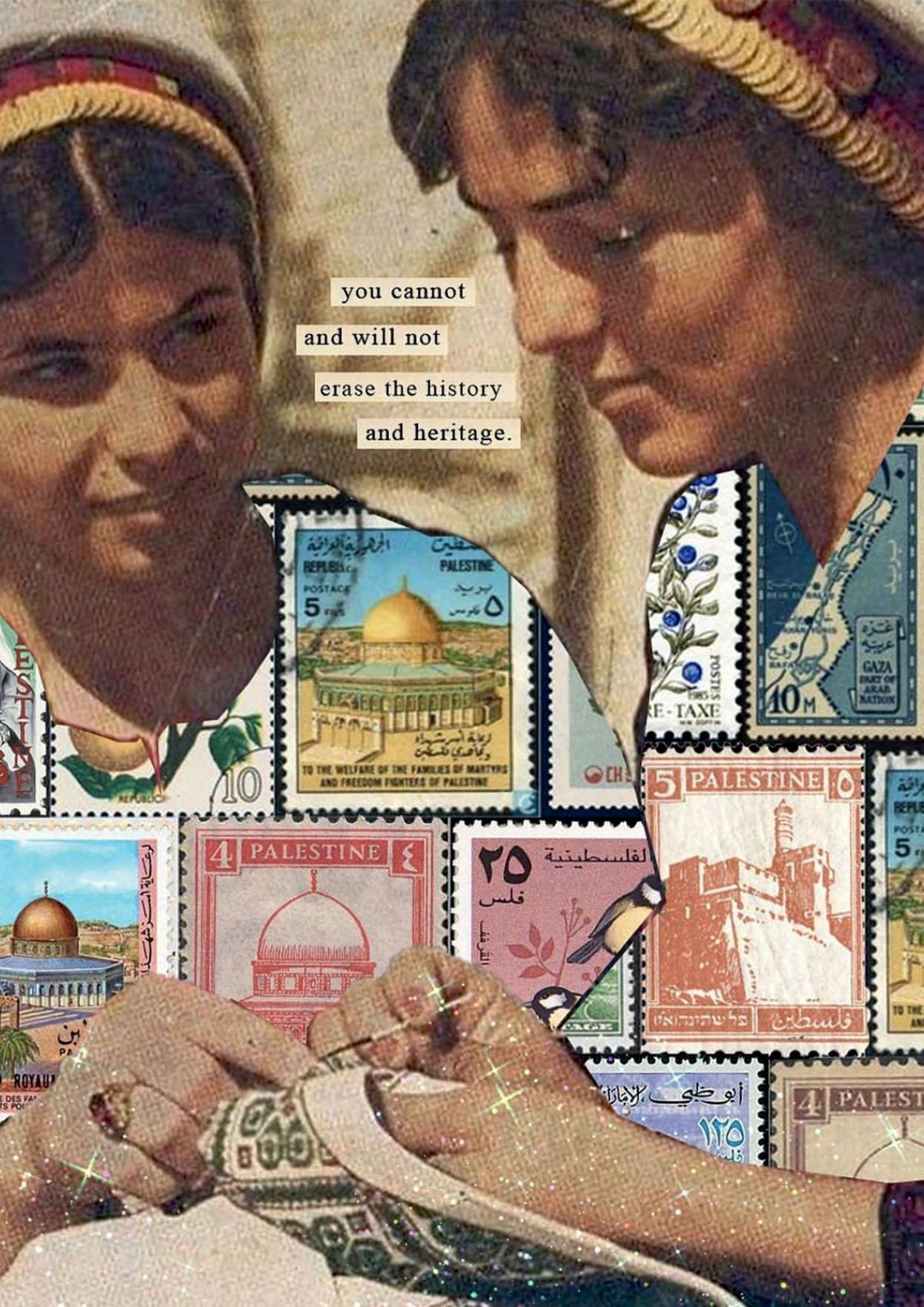
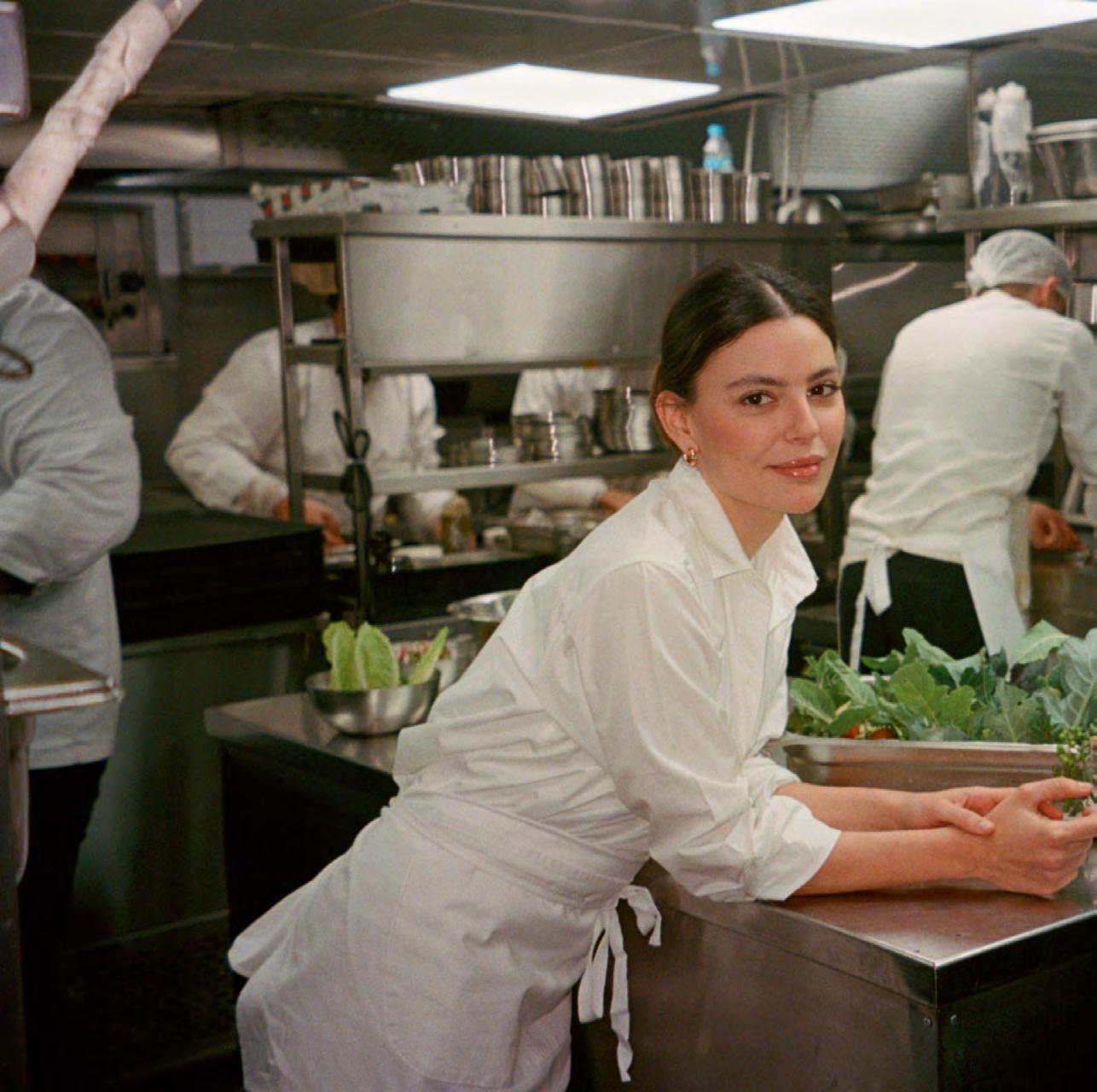
Yasmina Hayek, the Executive Chef of Em Sherif, a renowned Beirut-based restaurant group of international acclaim, first started her journey in the culinary world when she was a kid. Raised amongst a family that loves food, Hayek’s passion for great dishes drives her to defy stereotypes in a male-dominated industry. With her rich background, including Michelin-starred restaurants in Copenhagen and Paris, Hayek brings a unique blend of experience to her role. With a Master’s degree in Food Design and Innovation, she is dedicated to elevating Em Sherif’s culinary legacy with creativity and style, one plate at a time.

Can you share some of your earliest memories or experiences that ignited your passion for cooking and led you to pursue a career as a chef?
Since my childhood, my mother has been instrumental in inspiring and fostering my culinary passion. Ever since I can remember, she imparted in me not just the techniques and her favourite recipes, but also the essence of creativity in crafting soulful and memorable dishes for those around us.
How has your family’s background in the culinary world influenced your approach to cooking and your culinary philosophy?
Growing up with three brothers in a family where dining was a cherished ritual, I learned early on the significance of sharing meals and creating memorable experiences with and for loved ones. This upbringing profoundly influences my culinary philosophy, emphasising the importance of warmth, hospitality, and the joy of gathering around a table.
As Executive Chef at Em Sherif what principles guide your culinary vision, and how do you aim to showcase Lebanese culture through your cuisine?
At Em Sherif, our culinary vision, inspiration and culture is deeply rooted in Lebanese heritage. We strive to encapsulate the essence of Lebanese life in every aspect of the dining experience, from the food and service to the décor and ambiance. Our goal is for guests to feel embraced by our unique ethos, like they are a part of our extended family.
Being a woman in the culinary industry, what challenges have you faced, and how have you overcome them to achieve success?
As an Arab woman in a predominantly male industry, I have encountered stereotypes, something that my mother knows well, too. However, my passion for showcasing Lebanon’s culture, talent and flavours has always been a driving force in overcoming barriers and defying biases.
Can you describe your creative process when developing new dishes or menus for your restaurants, and where do you draw inspiration from?
Drawing from my French culinary and academic background, I merge both traditional and modern techniques and practices with Middle Eastern flavours to keep innovating. This fusion allows us to offer a dining experience that is both familiar yet modern and distinctive.
What role do tradition and innovation play in your approach to Lebanese cuisine, and how do you strike a balance between preserving culinary heritage and introducing new flavours and techniques?
Tradition and cherished rituals form the foundation of our approach to Lebanese cuisine, but with innovation that breathes new life into both favourites and newly crafted dishes. By marrying tradition with contemporary techniques and ingredients, we honour our culinary heritage while keeping our cuisine and offerings continuously dynamic and relevant.
Could you share any memorable or transformative moments in your culinary career that have shaped your perspective as a chef?
Reflecting on some of the milestone moments in my culinary journey, I recall the early days in Mathieu Pacaud’s kitchen, where I found myself a newbie in a professional kitchen. Later, under the guidance of Jean-François Piège, I learned the invaluable lesson of resilience and perseverance. My culinary journey continued to evolve as I ventured to Denmark, with Rasmus Kofoed. His emphasis on precision and meticulous attention to detail not only refined my techniques but also instilled in me a deep appreciation for culinary craftsmanship. Each of these experiences has left an unforgettable mark on my perspectives as a chef, shaping my commitment to the craft.
Looking ahead, what aspirations and goals do you have for the future of your culinary journey and the restaurants under your guidance?
Looking to the future, aside from growing our newest outlet, The Deli, I also aspire to explore new avenues in food tech and innovation, further growing the Em Sherif brand and footprint, as well as expanding our offerings to our beloved customers.
Kwame Acheampong, a Ghanaian artist from Jamestown, Accra, captures life around him with one simple tool – his iPhone. Infusing each image with vibrant energy and contemporary flair, his work resembles paintings more than photographs. Frequently capturing people working, playing, and living on the shore, he aims to show the rich and unique coastal city of Accra. Acheampong’s passion for philosophy drives him to explore new mediums while continuing to push the boundaries of his craft.
Can you tell us about your journey as an artist, and what inspired you to pursue photography as your primary medium?
Attempting to create imagery to accompany my poems led me into photography.
I acquired an iPhone 4s in 2015, my sophomore year, which enabled me to easily write and share poems online via Instagram. I was mesmerized by the quality of images the phone’s camera produced, it was an inspiration to document life around me. I had developed an interest in editing images prior to owning an iPhone, so I began experimenting with image editor apps to produce abstract and artistic effects on some photos that were to be used as poem covers.
How do you choose which aspects of Jamestown to feature in your art, and what inspires your artistic decisions?
The choice of setting depends on the elements present and their suitability to the envisioned idea. Life in general and human nature greatly inspire my artistic decisions.
How has your science degree from the University of Ghana shaped your approach to art, and do you see any connections between science and art in your work?
I think the scientific trait in my artistic approach is the experimental tendencies I try to infuse into some works. A number of my favourite pieces are the result of allowing the unconscious to operate in an unrestrained fashion. Secondly, the strain in establishing a seemingly perfect logical relation between an idea and its visual output is a result of my academic background.
How do you balance preserving cultural authenticity with infusing innovative and contemporary elements into your art?
By ensuring a healthy inclusion of traditional elements from my culture and simultaneously applying contemporary ideas when appropriate.
What is it about the seaside that resonates with you, and how does it inform your artistic vision?
Locations near the sea are the usual setting for my work because I have a connection with the ocean. I have been close to the sea since infancy; I was born and bred here,
in Jamestown. My father used to carry me along to the beach after school hours to relax, and it has since been a place of solace for me growing up.
The beach also provides a more natural environment for my art.
Your work often features vibrant colours that draw viewers in. What role do these colours play in conveying the atmosphere and emotions of the scenes you capture?
Colours are not only mesmerising and beautiful, but they have the ability to evoke feelings and communicate intentions. My colour usage often sets the tone for the artwork’s emotion. Sometimes I use colour to create an attraction for the underlying principle behind the work to be discovered; it’s more or less visual bait.
Many of your images resemble paintings rather than conventional photographs. What techniques or effects do you use to achieve this quality in your work?
I make use of multiple image editing apps downloaded from the App Store on my iPhone. The painterly effects are achieved by manipulating hues and completely changing the background of pictures.
Beyond photography, are there any other forms of artistic expression or mediums you’ve experimented with or would like to explore in the future?
I have always had a keen interest in painting and sculpture; my favourite artists are painters and sculptors. I see myself delving into these art forms and possibly pursuing an MFA.
What role do you believe art plays in society, and how do you see your own work contributing to cultural dialogue and understanding?
Art is a means of documenting culture, addressing social issues and is a source of beauty. My work addresses racial representation and provides solace by virtue of its vibrance.
How do you redefine power through your art?
The use of black bodies in my art is a challenge to the marginalisation of the black race, which has a history of a lack of representation in the historical canon of art.
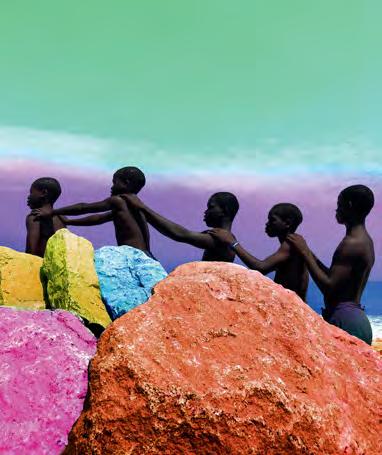
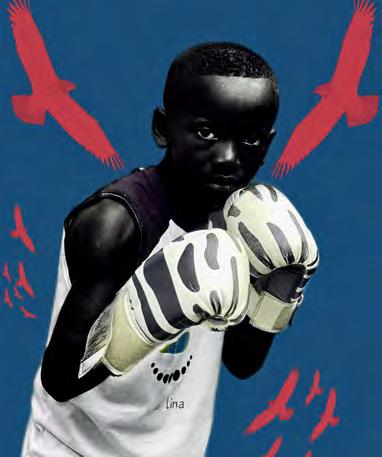



by
Hailing from Egypt, FORM is an innovative hub that blurs the lines of a traditional interior and product design studio. At its essence, FORM delves into the interplay between individuals and their environments, aiming to create spaces that go beyond mere utility. With a dedication to innovation, they craft environments that not only serve practical purposes, but also foster emotional resonance and elevate the human experience. By seamlessly merging form and function, the studio breaks free from conventional design constraints, opening doors to immersive and deep interactions within every curated space.
What’s your earliest memory of art and design?
My earliest memory of art and design would have to be going with my dad to his site visits while I was still a child. I also used to hang out in his office a lot with his architects and designers and draw with them; it used to be my favourite hangout spot.
What inspired the founding of FORM, and how has its philosophy evolved since its inception?
The inspiration behind the inception of FORM emerged from my return to Cairo after completing my BA in Interior Design in London. Recognizing market gaps while designing interiors, I identified a need for items that elevate living spaces.
At FORM, our philosophy centres on the belief that exceptional design should not only enhance functionality, but also captivate aesthetically. Initially conceived to explore the untapped potential of Egyptian materials in daily use, FORM has evolved to challenge repetitive design norms. Our aim is to introduce forms and materials that break away from convention, offering fresh perspectives to the design landscape.
Can you describe the process of integrating concept, function, and design to create transformative experiences within spaces?
The process of creating transformative experiences within spaces begins with drawing inspiration from themes or objects around me. We start by initial sketches that capture the essence of the concept, which is then refined through digital modelling.
Prototyping plays a crucial role in the development phase, allowing for experimentation and adjustments to ensure the final product aligns with both the design intent and functionality requirements. This iterative approach ensures that each element within the space contributes to a cohesive and impactful experience for users.
Can you discuss your latest collection, Cosmic Candy, and the idea behind it?
The Cosmic Candy collection explores elements of the colour, shape, and form of cosmology. It is inspired by the structures and dynamics of cosmic energy, space, and time. Cosmic energy is a source that stimulates all forms of life in the universe. The collection aims to form conversations between the present and the future, the physical and the mental, the familiar and the uncommon.
How do you approach selecting the materials in your design projects, and what criteria are considered when making these choices?
Material selection is a thoughtful process that aligns with our creative vision and the functionality of each piece. While our current
collections predominantly feature glass and marble, our commitment to innovation leads us to continually explore new mediums and materials such as wood.
For our latest collection, we integrated blown glass, a choice that complemented our design objectives compared to the glass panels utilised in previous collections. Each material is chosen based on its unique properties and how it enhances the functionality and aesthetic appeal of the piece.
In what ways does FORM prioritise both practical needs and emotional connections when designing environments?
FORM places a strong emphasis on balancing practical needs with emotional connections in our design approach. By employing minimal yet conceptually rich approaches to both product and spatial design, we aim to cultivate a relationship between the consumer and the product. This means considering not only the functional aspects of our designs, but also their ability to evoke emotional responses and create memorable experiences within the environment.
What inspired your aesthetic focus on the integration of mirrors and reflections in its design approach?
Mirrors offer a captivating opportunity to play with light, space, and perception, creating dynamic and ever-changing visual experiences within a space. The beauty lies in the inherent diversity of mirrors; no two mirrors are identical. Each mirror possesses its own distinct characteristics, whether it be in shape, size, or reflective properties. This inherent variability allows us to craft designs that are not only functional but also imbued with a sense of personality and individuality, reflecting the uniqueness of each piece and the spaces they inhabit.
How do you stay ahead of design trends while maintaining a commitment to timeless and enduring design principles?
A functional and simple object is always going to be timeless. Staying ahead of design trends while upholding timeless principles is a delicate balance that we maintain by prioritising functionality and simplicity in our designs. We offer colour options to cater to individual preferences, allowing our customers to customise their pieces and infuse them with a sense of personal identity.

AOI, an abbreviation for “An Ocean of Ideas,” is not your typical design brand. Founded by the Kuwaiti-Lebanese designer Farah Marafie, AOI embraces a surge of creativity influenced by music, colours, and textures. AOI’s meticulously crafted products, from clothing to jewellery pieces and beyond, are sure to make you stand out from the crowd as they’re never restocked, reproduced, or re-released. Similar to the ocean’s movement, the brand moves with a multitude of ideas and just like waves, no two are alike.
When was it that you decided to venture into the world of fashion?
It wasn’t a conscious decision to begin in fashion, rather I evolved into it. Since I was a young girl, I was always artistically creative in so many areas, from dance and ballet classes to painting, sculpting, and singing. I was always drawn to creativity and expression. From there, it evolved from fine art to using myself as a canvas. I became obsessed with the technique in the craft and really value the time it takes to create beautiful products.
Can you share the inspiration behind the creation of AOI (An Ocean of Ideas) and how the concept of an ocean serves as a metaphor for your design philosophy?
My inspiration is always the process behind the craft; I really respect the journey of my work and the intricate details that lead to each final piece. I envisioned AOI as a testament to this journey and to celebrate the craftsmanship and master craftsmen that breathe life into each piece. An Ocean of Ideas serves as a metaphor for an endless space for my creative canvas where, I can work my ideas and allow them to flow freely using different mediums.
Can you elaborate on the archive that AOI has been forming from day one and how it contributes to the narrative and identity of the brand?
The concept of one-of-a-kind collectibles holds significant value, particularly in today’s fast-paced fashion landscape. In an industry that has quick turnover and accessibility I wanted to prioritise quality and individuality while creating pieces that resonate on a deeper level and allow collectors to build their own curated archives.
How have your studies at Parsons School of Design in New York and Central Saint Martins in London influenced your approach to designing wearable art? If so, how?
Parsons is known for its progressive approach and this opened my eyes to functional designing. In projects, we were creating clothing lines for medical wear to create purposeful fashion, which really opens your eyes to how fashion is part of a much larger conversation than just luxury fashion. This emphasis on functionality provided me with a fresh perspective and allowed me to approach design with a focus on utility and usability.
Central Saint Martins, on the other hand, was very open and allowed me to stay focused and concentrated on my particular passion and purpose within the realm of design.
How do you prioritise quality, craftsmanship, and factor in the time it takes to create each piece within the fast-paced fashion landscape?
I am very hands-on with the process of materialising each piece, from design, development and production to shoot planning, messaging and creative direction. This process for me is prioritising quality and craftsmanship, which holds a deeper power than simply designing the pieces. I see my collectables as a celebration of the efforts and crafts they journey through.
I always allow for the process to take as long as is necessary for the craft to be perfected. I realise creativity takes time and requires immense attention to detail, by respecting this journey you are able to create beautiful products.
Being a Kuwaiti-Lebanese designer, how do your cultural roots influence the aesthetic and themes explored in AOI’s creations, and how do you balance global appeal with cultural authenticity?
In Middle Eastern culture, there’s a celebration in the act of taking time to get ready. It’s a form of self-care and we embrace the opportunity to express ourselves through fashion.
Growing up in an Arab household, there is a beautiful understanding of dressing for yourself; it’s a ritual which I learned watching my mother and grandmother get ready. We all have our own individual styles, but we always dress to empower ourselves. Choosing the clothes to dress yourself in each day allows you to explore feeling and emotion, it is a very empowering morning ritual.
In what ways does AOI diverge from conventional fashion industry practices, and how do you navigate the challenges associated with this distinctive approach?
I always focus on connecting the maker to the wearer. So many hands are involved in creating these pieces, so the beauty in sharing the story behind this process is what sets AOI apart from convention. This approach does present unique challenges, such as having to persuade the ideal makers to believe in my vision the same way I do and to trust in my process. With many hands contributing to one piece, maintaining a strong vision and upholding a level of refinement is very important in order for my ideas to naturally adapt.
What message or emotion do you hope individuals feel when wearing or experiencing AOI’s unique creations?
I hope individuals feel a sense of strength and identity. Each piece is crafted with such attention to detail, allowing the collector’s identity to shine through. The pieces should carry you through all areas of life – the highs and lows, the familiar and new. They serve as a form of self-celebration through all those moments.
AOI designs pieces that should not only be worn on special occasions, but that will also guide you through your everyday lives, creating memories and embracing the journey with each wear.






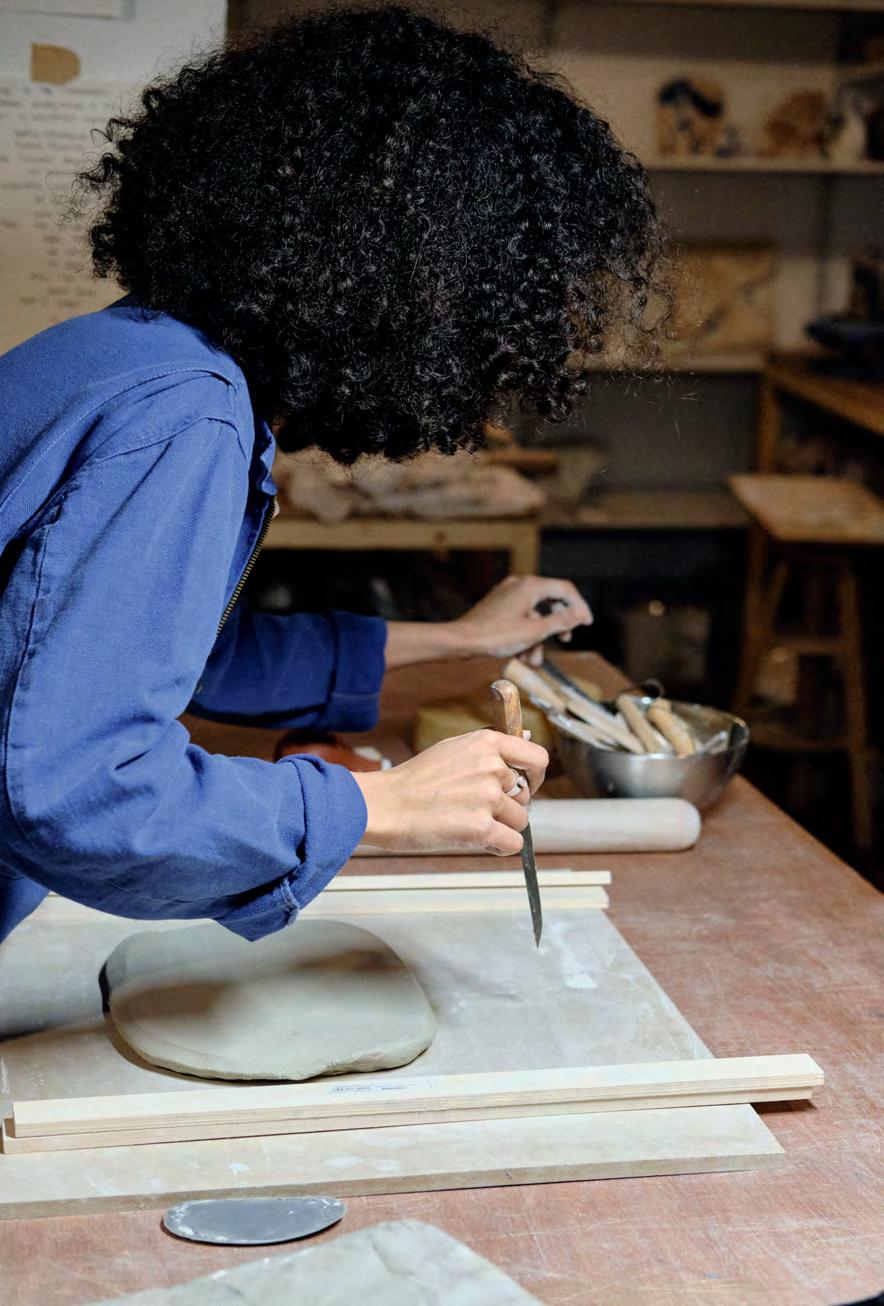


Swiss-Moroccan artist Zineb Mezzour trained in computer science before unveiling her talents as a multidisciplinary artist in 2021. Mezzour’s art immerses us in a mysterious world where nature’s essence reigns. Inspired by water, she unveils microscopic wonders, symbolising life’s creative force through ink and dendritic cells. Fascinated by nature’s fractal beauty, she invites us to explore the present moment’s power through her photography, ink drawings, and sculptures, prompting a deeper reflection on our intrinsic bond with the natural world and its elements.
Coming from a background in computer science, what prompted you to pursue a career in art? How do you think your background informs your artistic approach?
My journey into art began unexpectedly during a moment of solitude, when I felt a surge of emotions that needed expression. Initially, this took the form of poetry, but soon evolved into visual explorations with water and blue ink. My entry into the art world was entirely organic; becoming an artist was never a premeditated goal, but rather a path that unfolded as I followed my instincts, seeking comfort for my own spiritual and mental well-being. Although my background in science seemed at odds with my creative pursuits at first, everything fell into place when I discovered the mathematical concept of fractals. It not only resonated with my scientific training, but also deepened my artistic expression, bridging two seemingly disparate worlds.
How do you integrate fractal structures into your art, and what meaning do they hold as symbols and conduits to the power of the present moment?
Fractals fascinate me because they are a fundamental pattern of our universe, from the branching of trees to the structure of our neurons. In my process, I provoke fractal patterns on various materials, capturing the instant where nature itself paints these patterns before my eyes. This moment is when I feel a profound connection to the present—a divine experience that encapsulates the essence of all living things. In these moments, time ceases to exist. The nostalgia of the past and the projections of the future dissolve, leaving only the pure experience of the now.
Could you describe your artistic process, particularly your technique of drawing invisible shapes in water and unveiling them with ink? How do you see this process reflecting the themes of your work?
My artistic process thrives on spontaneity and experimentation. As I shape the contours with my brush soaked with water, the movement of ink within these bounds remains beyond my control. Each piece emerges, uniquely beautiful, mirroring the unpredictable beauty of life itself. This method reflects a deeper philosophy: just as we can set the broader strokes of our lives, much of what happens within those outlines is shaped by forces beyond our
control. Embracing this unpredictability is akin to embracing life itself, with all its surprises. It’s about letting go of our preconceptions and confidently trusting the flow of life.
Your artistic practice spans various mediums, including photography, ink on paper, and sculpture. How do you decide which medium to use for a particular project, and what do you aim to achieve through each medium?
Whether it’s through photography, ink on paper, or sculpture, each medium offers a unique lens on the same fundamental truths of nature’s design. My role is to act as a mediator, facilitating a creative dialogue between nature’s inherent artistry and various mediums. The core of my work is about discovering processes that spark this interaction. It’s exhilarating to find the right chemical reaction that allows the magic of creation to unfold. For me, each medium is a new realm of exploration, offering endless possibilities to discover and create.
Marseille, where you are currently based, has a rich cultural and artistic heritage. How has living in this city influenced your artistic practice and the themes you explore in your work?
Marseille is renowned for its stunning sea views and seamless access to nature, which serve as endless sources of inspiration right at my doorstep. The city is also vibrant, with young creatives who boldly redefine career paths, often juggling multiple roles simultaneously, much like myself. This dynamic environment significantly boosts my motivation and creativity, making me feel more empowered.
How do you hope viewers will engage with and interpret your artworks? What message or feeling do you aim to evoke through your art?
My aspiration for my work is to inspire a deeper connection with nature and foster personal spiritual reflections, reminding us of the inherent perfection of nature and our fundamental place within it. Additionally, I like to think that my artworks serve as a gateway to initiate conversations and raise awareness about the concept of fractals, encouraging viewers to see the profound interconnectedness that fractals reveal in the natural world.



“Knock on doors, don’t be afraid to knock on doors, I still do this today!”
Forget following trends – Karen Wazen is all about forging your own path. In a world where fashion can feel dictated by external forces, Wazen’s story is a breath of fresh air. She’s a beacon of authenticity, blending passion and purpose to carve a unique space in the industry. Her journey, challenging stereotypes and inspiring millions, is a testament to the power of staying true to yourself.
Starting with personal expression and blossoming into true global influence, Wazen’s story resonates with anyone who dares to dream big and chase their dreams. Here, she offers a glimpse into her motivations, the challenges she faces, and the core message behind her brand.
Wazen’s journey move into fashion didn’t follow a preordained path. “It wasn’t really my thing,” she admits, dispelling the myth of the fashion-obsessed child. Instead, her life’s course stemmed from a deeper wellspring: passion. She’s a self-described heart follower, guided by intuition. But fashion, she discovered, transcended mere fads. It became a powerful tool for self-expression. “Through fashion, I felt like I was gaining more confidence,” she explains. The connection between what she wore and how she felt, how it impacted her behaviour, was a revelation. This newfound confidence fueled a desire not just to embrace fashion, but to challenge its conventions. Wazen recognized a prevailing stereotype around who belonged in this world. She didn’t see herself reflected in the mainstream images, yet she craved a place at the table. Thus began her mission – to enter the industry and reshape it from within.
Wazen laughs when asked about her aesthetic. “I guess I do have a style, yes, but my fashion sense is so based on how I feel, you know? Sometimes I want to go all out, glam and bold. Other days, it’s all about pared-back minimalism. So, I wouldn’t say I have one signature look. It’s very much an expression of how I’m feeling at that moment. But if I had to pick a general aesthetic, I’d say it leans towards effortless chic. Being a mum and a businesswoman, comfort is key. I wear many hats in one day, so my clothes need to keep up! I also love incorporating a little ‘je ne sais quoi,’ that special third piece that elevates an outfit and adds a touch of magic.”
This concept of empowerment through individuality resonates deeply with Wazen. “Power,” she declares, “especially in the industry I’m in, signifies owning your own narrative and living authentically.” We’re bombarded with messages, she explains, constantly pressured to conform to fit in. But that’s a recipe for short-lived success. “You’ll never win that way,” she warns. “Longevity comes from authenticity.”
In a world obsessed with crafting narratives, Wazen champions the power of embracing your own story, a message that resonates beyond fashion. This concept of empowerment through individuality translates seamlessly into her social media presence. Wazen’s refreshing sense of self shines through as she shares not just the glamorous highlights, but the everyday realities of life. Recognizing the responsibility that comes with her platform, Wazen, a mum with two daughters and a son, knows the dangers of social media illusions. In an era dominated by Instagram filters and curated feeds, she strives for truth. She feels a duty to her audience, largely younger generations, to show the full spectrum of life’s experiences, the positive and the negative. By embracing reality, Wazen offers a refreshing antidote to the often-sugarcoated world of social media.
Reflecting this personal vision for empowerment and creativity, Wazen’s recent foray into jewellery expands her brand beyond sunglasses. The new line symbolises the brand’s continuous growth while rejecting limitations. It embodies the freedom to explore different avenues of expression, both for the brand itself and the consumers it empowers.
Stepping out from behind oversized sunglasses wasn’t always the power move it is for the entrepreneur today. In a refreshing display of vulnerability, Wazen shared how her childhood insecurity about her large eyes fueled a lifelong passion for sunglasses, which ultimately blossomed into a thriving business. This transformation exemplifies the core message woven into the very fabric of her personal brand: celebrating what makes you distinct and wielding it as a springboard for self-expression is the path to personal success.
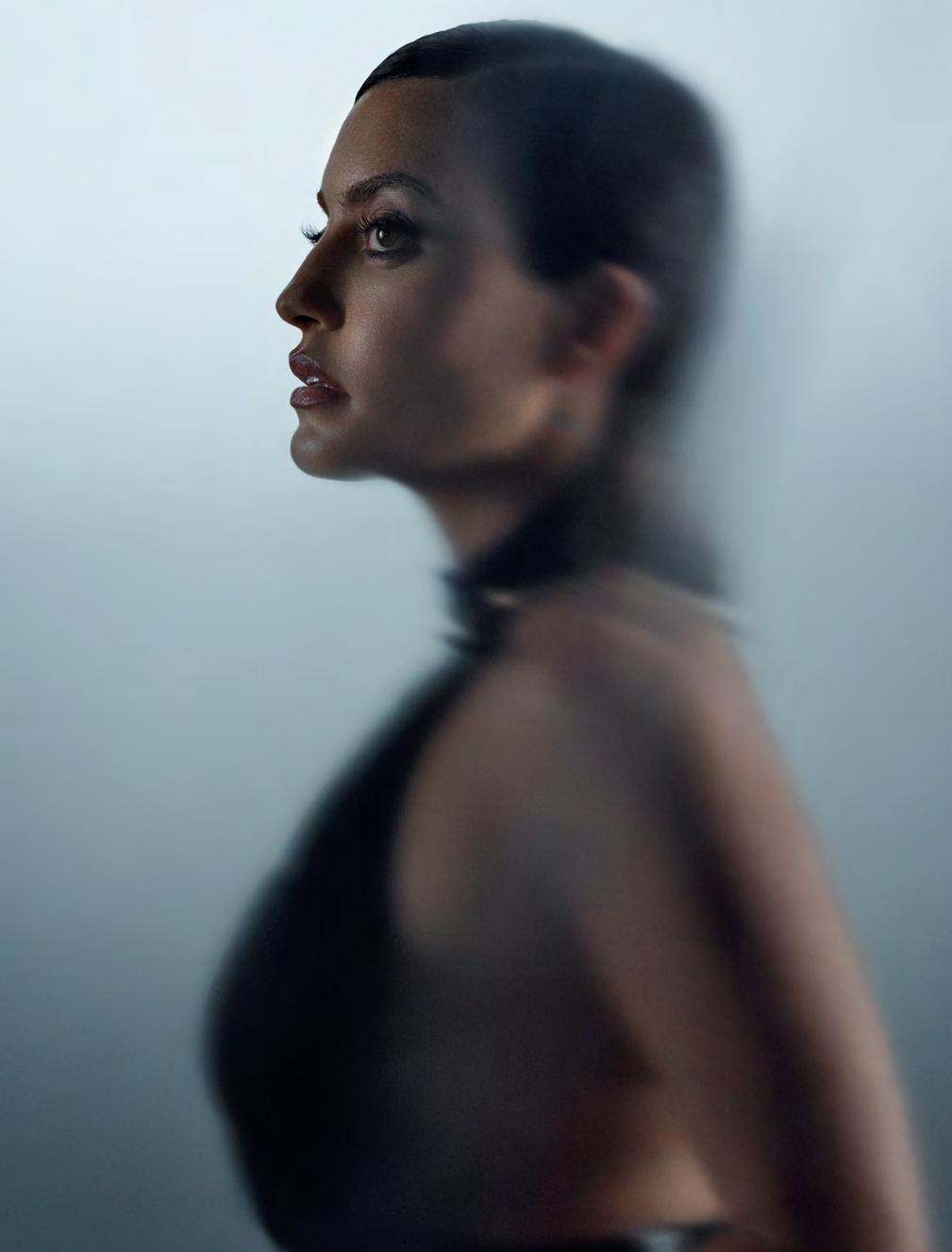
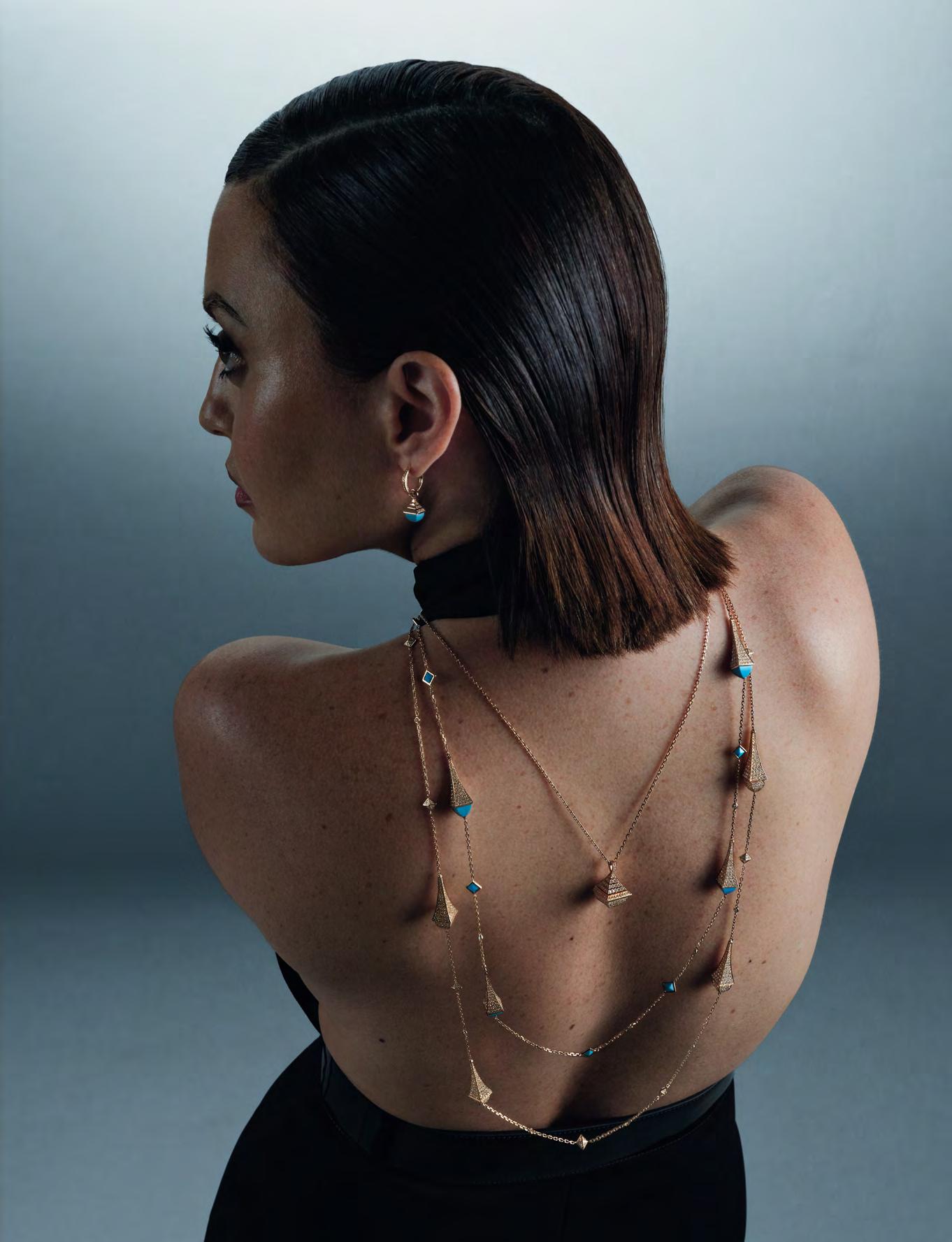
This isn’t just lip service; Wazen actively challenges fashion’s conventional norms. Take, for example, her role as the face of a Roberto Cavalli fragrance campaign. “Being a creator, not a model,” she says, “I think that was quite a big moment.” Her transparency about “imperfections”, coupled with a major brand endorsement, is helping to shatter expectations and open doors for creators to see themselves represented in the fashion sphere. It’s a bold move that perfectly embodies Wazen’s spirit. The Cavalli campaign serves as a beacon for aspiring creators, a reminder that the fashion world craves fresh perspectives and celebrates those who rewrite the rules.
But navigating the pressures and expectations of online influence? That’s a battle, Wazen admits. “It’s a constant conscious exercise,” she says. She emphasises the importance of purpose, a guiding light that cuts through the noise and allows her to refocus on her goals. It’s also a balancing act between confidence and insecurity, a struggle familiar to any public figure. The key lies in authenticity, according to Wazen. Being true to yourself has always been the right way to do it and this includes acknowledging vulnerabilities, she emphasises. Owning a bad day and seeking support from her team is a crucial part of the equation. Surrounding herself with a positive support system and staying true to her core values allows her to weather the storms of online fame.
Motherhood has further reshaped her approach. “When I first started,” she reflects, “fame could have overpowered purpose.” Now, her focus has shifted. Building a legacy her children can be proud of, a legacy built on business success, reputation, and positive impact – that’s what truly matters. It’s a message that resonates deeply: fame is fleeting, but the power of authenticity and purpose can leave a lasting mark.
Her dedication to empowering others extends far beyond her own brand. A recent appointment to the executive board of Fashion Trust Arabia (FTA) exemplifies this. This prestigious organisation provides critical support and mentorship to emerging designers from the Arab world. For Wazen, it was a perfect fit. “From the start of my journey,” she says, “I’ve always been a champion for the incredible talent we have in the region.” She believes it’s not just about support, but about genuine belief in the designers’ potential. Highlighting their work, whether on international red carpets or through her social media channels, has always been a priority. But FTA offered a more amplified platform. “It’s a platform I truly believe in,” she emphasises. The founder’s vision and the organisation’s proven impact on young brands resonated deeply with her. However, Wazen brings more than just enthusiasm to the table. She recognizes the value her experience and connections can offer these rising stars. Her role on the board is a powerful extension of her core mission: to empower the next generation of Arab creatives and help them translate their unique visions into global success.
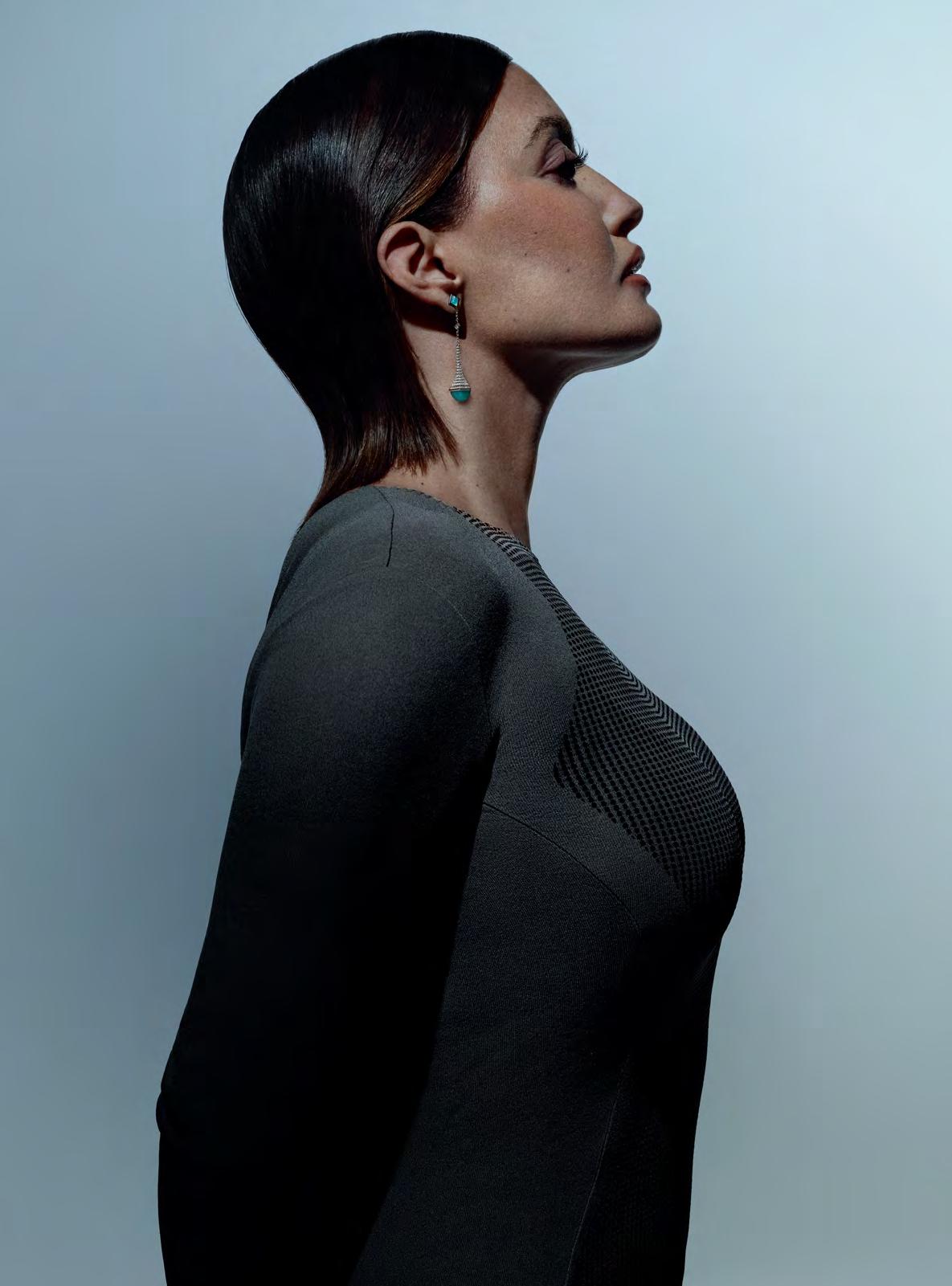

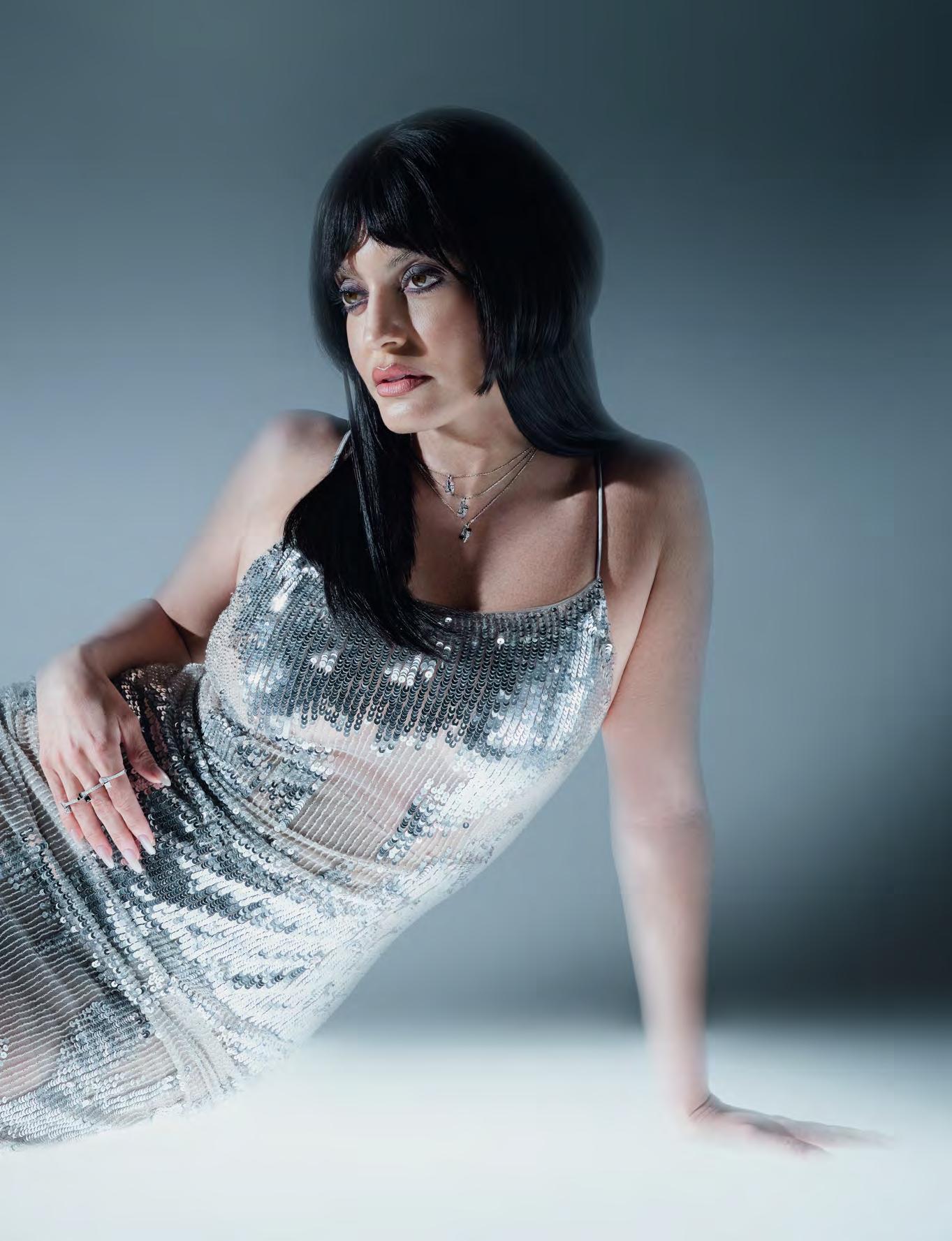


Her number one advice to emerging creatives? “Knock on doors, don’t be afraid to knock on doors, I still do this today!”
With a social media following exceeding 8 million, Karen Wazen’s influence extends far beyond the digital realm. Her voice carries significant weight. So how does she leverage this platform? “It circles back to the things I’ve mentioned before: responsibility and purpose,” she explains. These, along with authenticity, are the pillars of her online presence. “Right now,” she says, “what truly resonates with me is the desire to bring joy to others. It’s about making a positive impact wherever I can. And lending my platform, my voice, and my heart to those who could benefit feels like the least I can do.”
This commitment manifests in various ways, including being a Goodwill Ambassador for the UNHCR, a cause deeply personal to her. “I take this role incredibly seriously,” she emphasises. “If I can utilise my platform to make a difference in their lives, it’s a worthy endeavour.” But her advocacy isn’t confined to a single cause. “It’s not about limitations,” she says. When she feels the Arab world is being misrepresented, she doesn’t hesitate to act, “I believe it’s my responsibility to showcase the truth, to reclaim our narrative, and to champion what I truly believe in,” she says.
Wazen is more than just a successful entrepreneur; she’s a powerful voice for good. By fostering creativity, advocating for important causes, and using her platform responsibly, she inspires a new generation to embrace their individuality and make a positive impact on the world. Her influence isn’t a one-way street. She understands the power of fostering a community and empowering others to find their own voices. This vision extends beyond fashion and philanthropy. She actively seeks out opportunities to connect with her audience and inspire them to pursue their passions.
“There’s this misconception that because I have a large following, things just happen for me,” she says. “But that’s not true. I hustle. I have a plan, and I go after what I want.” She encourages her followers to do the same, to chase their dreams with unwavering persistence.
Karen Wazen’s journey is a testament to the transformative power of believing in yourself and staying true to your core values. She’s not just building a brand, she’s creating a movement – a movement that champions self-expression, empowers aspiring creators, and advocates for positive change.
As our time together comes to a close, her phone buzzes. It’s her children’s school. With a laugh, she says, “See? Just a normal mum juggling it all, like everyone else.” ■
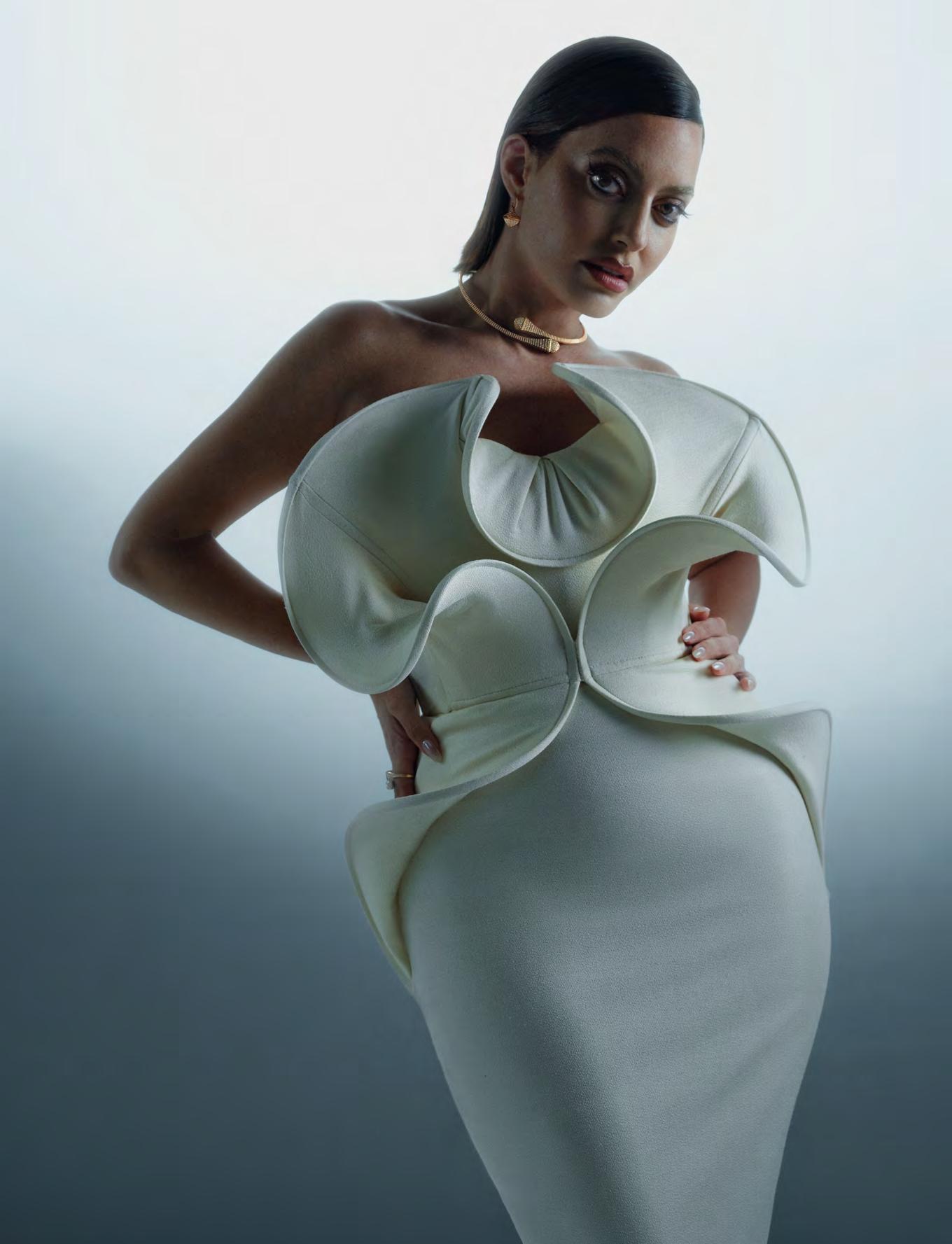
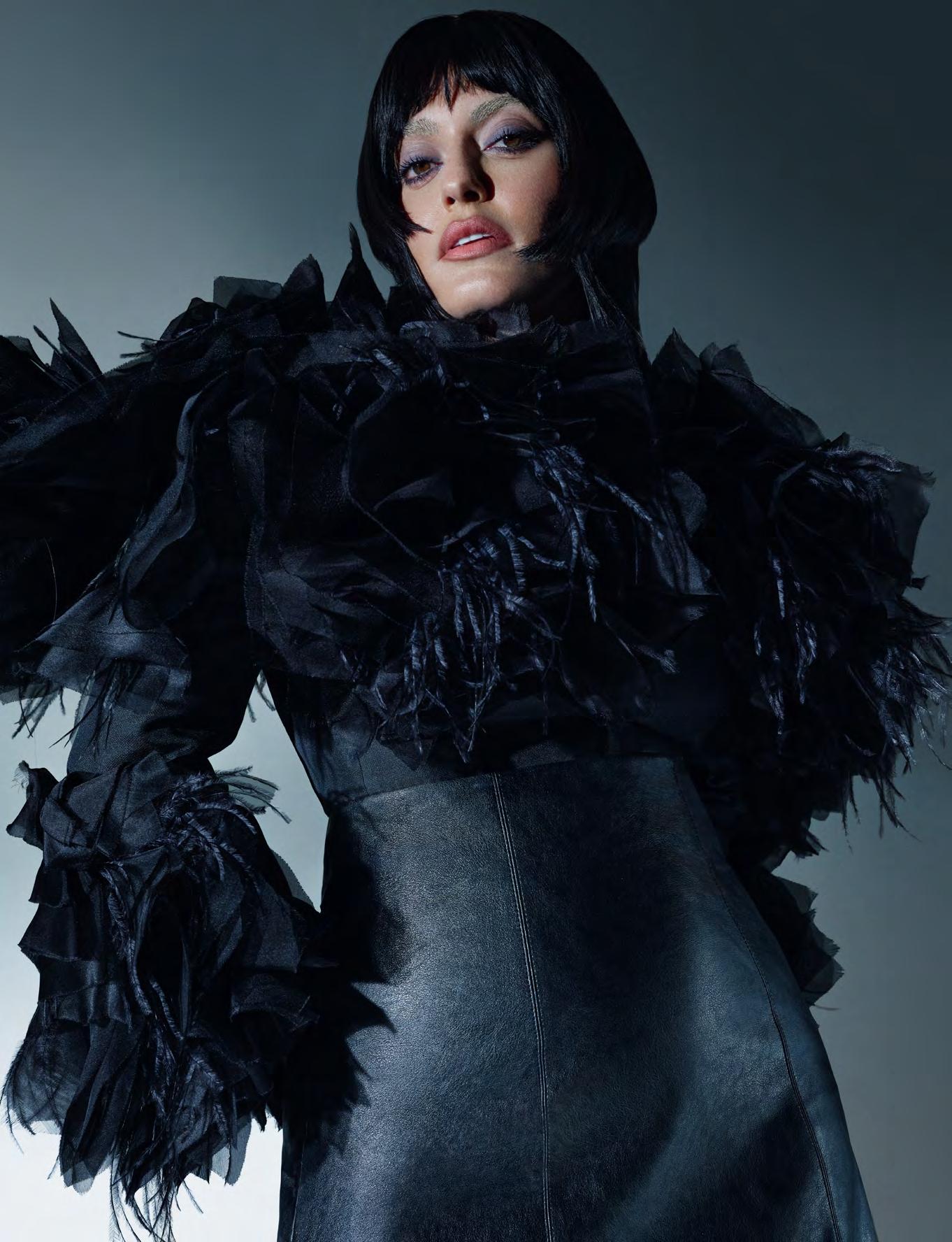
“What truly resonates with me is the desire to bring joy to others. It’s about making a positive impact wherever I can.”

London to Cairo and back: Kinzy Diab’s quest for identity and belonging.
photography CARLOS DURO YAGÜE
styling SAIF HIDAYAH
words MENNA SHANAB
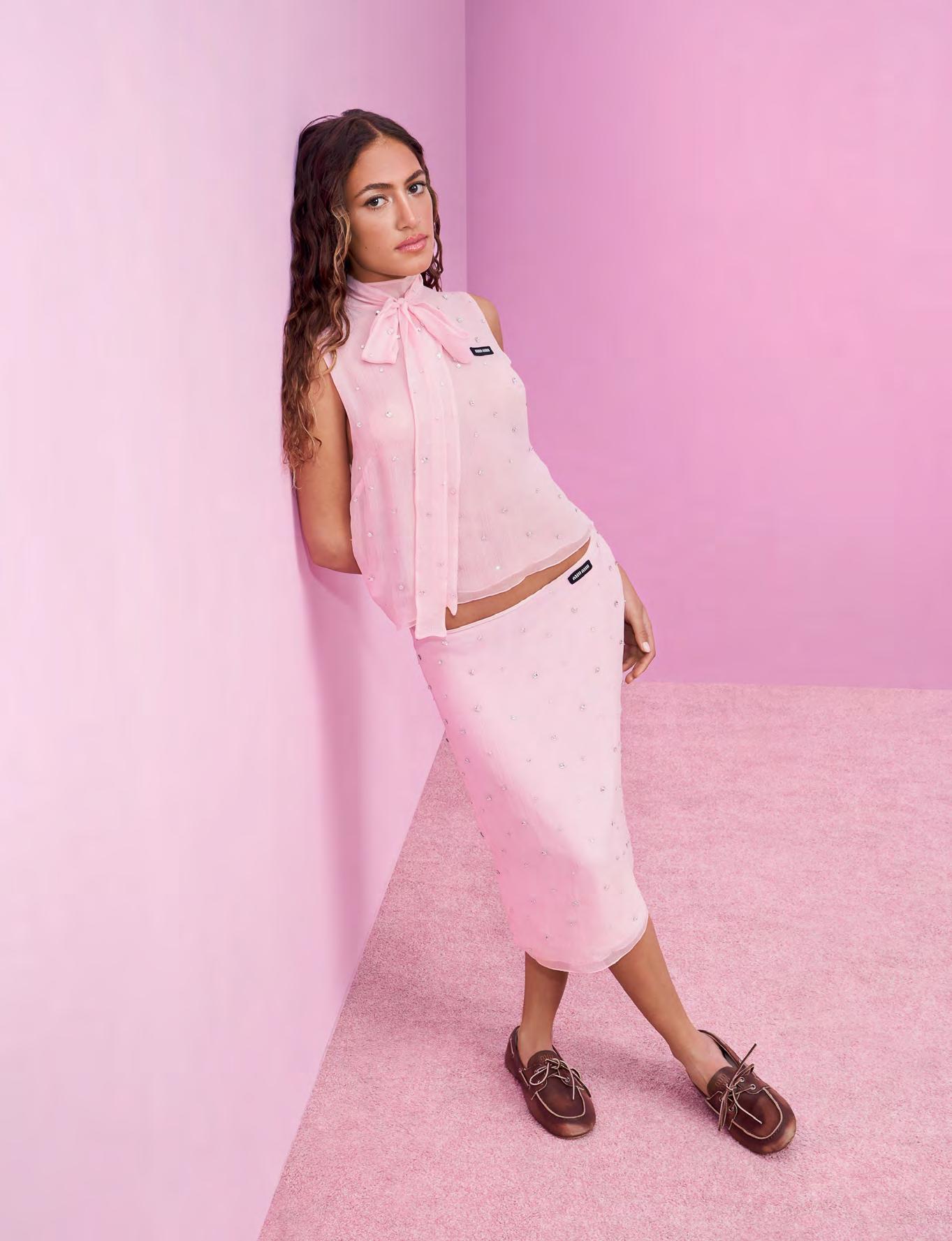

Kinzy Diab weaves her way through the humming crowd at Hayaty Diaries’ latest exhibition, the conversations around her accented with English, Arabic and the occasional excited burst of French. As she wound through the gallery, the murmur of voices faded. It was a success – the carefully curated space filled with works by female artists from across the Arab world was abuzz. A sense of accomplishment mingled with a restlessness she couldn’t easily define. London’s rhythm was familiar now. Yet, sometimes its soundtrack blurs with distant childhood memories –the beat of Cairo, her father’s melodies drifting from the studio, learning how to Moonwalk from one of his backup dancers. Each memory was attached to one of his songs, a soundtrack of shared nostalgia for millions across the Arab world.
The scent of jasmine and freshly brewed coffee hung heavy in the Cairo air, clinging to her even in her mind’s eye. As a child, Diab moved to a different rhythm than her bustling city. Her world was a place where melodies flowed and colours sparked conversations –her childhood defined by an undercurrent of art and expression. “I wouldn’t say that there is a particular moment that inspired me,” she reflects, “I think that what has always fascinated me is that his songs hold such a specific place in my memory.” The “he” is, of course, the legendary Amr Diab, who was unknowingly composing the score to her most precious memories. Those memories, it turned out, weren’t just her own.
“I’ve had friends tell me when they remember dancing to “Amarain” with their grandmother in the kitchen of the house they grew up in, or that “We Malo” was the song for their first dance,” she says. “It’s incredibly beautiful and inspiring to see how my personal experiences with my dad and his songs resonate with millions of others in different iterations…that thread of memory and emotion carried through his music that connects us.”
In the swirling, cosmopolitan chaos of London, where she’d moved as a teenager, that connection felt stretched thin. A subtle distance settled between Diab and her creative roots. But within the grand theatres of London, a spark was reignited. “Although I don’t quite remember what I watched, I remember feeling so fully immersed in the meticulously crafted world of the stage,” she recalls, “that I forgot about reality altogether.” It was the magic of storytelling, the power of art to transport and transform, that stirred a longing for connection within her. Lost in the world onstage, the line between fantasy and reality blurred. “Since then,” she recalls, “I have wanted to break the fourth wall and learn the magic so that one day, I could possibly provide that same feeling of awe and confusion to someone else.” Hayaty Diaries became her means of creating those immersive, transformative spaces, not on a stage, but through the language of art.
Music was in her blood, but Diab’s creative heart was restless. “I would say that I am a conduit for creativity; I really am inspired by a lot of the creative world, from music, fashion, and art to film.” Fashion held a lifelong allure, but her true drive, she realised, lay in the creative process itself – the magic of bringing ideas to life. “My main passion is not a specific medium of creating, but creative people themselves,” she reflects. “I think that my strong appreciation for multiple art forms pushes me to explore more innovative ways of showcasing the narratives and experiences of the incredible artists we work with at Hayaty Diaries.”


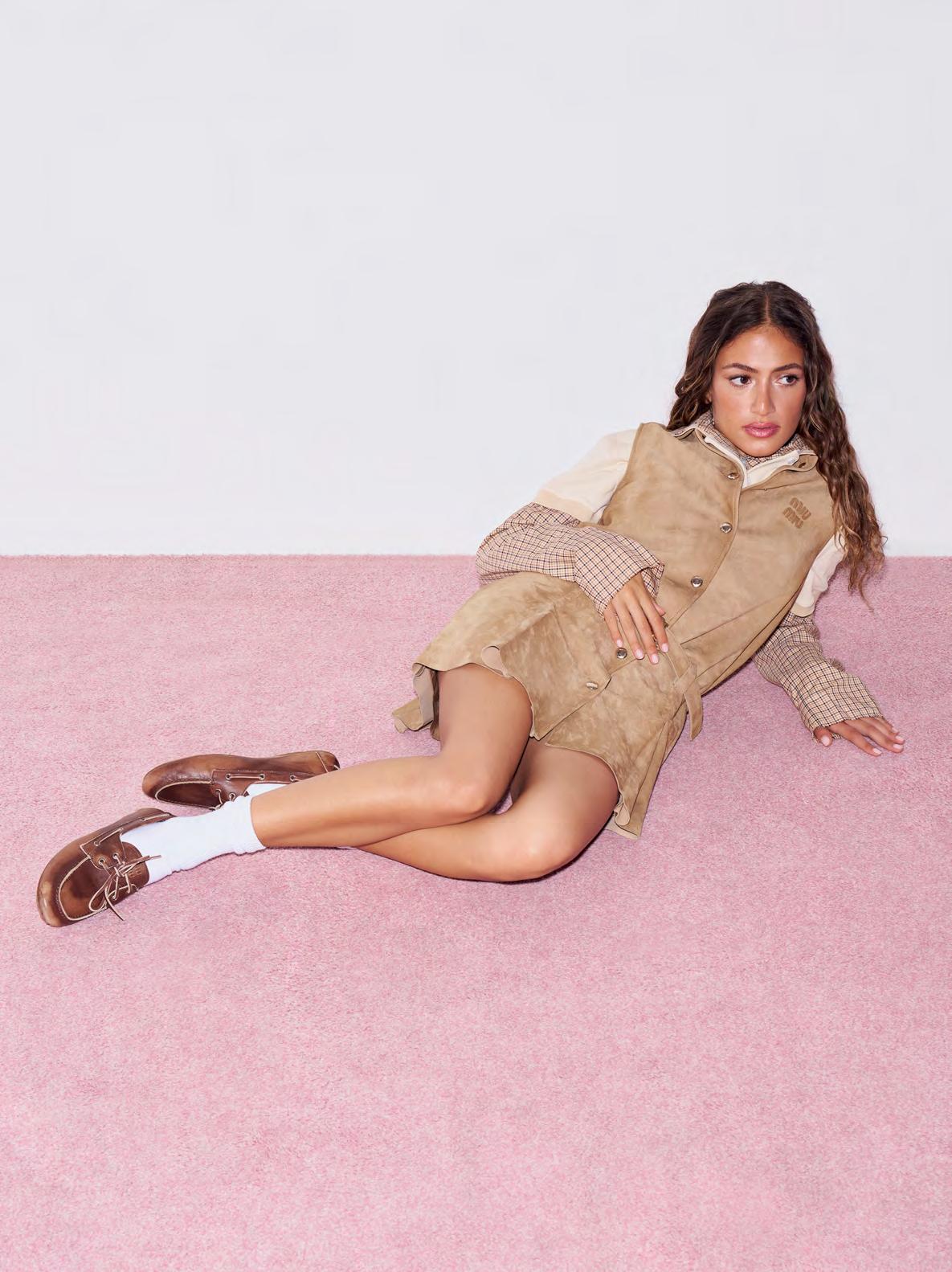
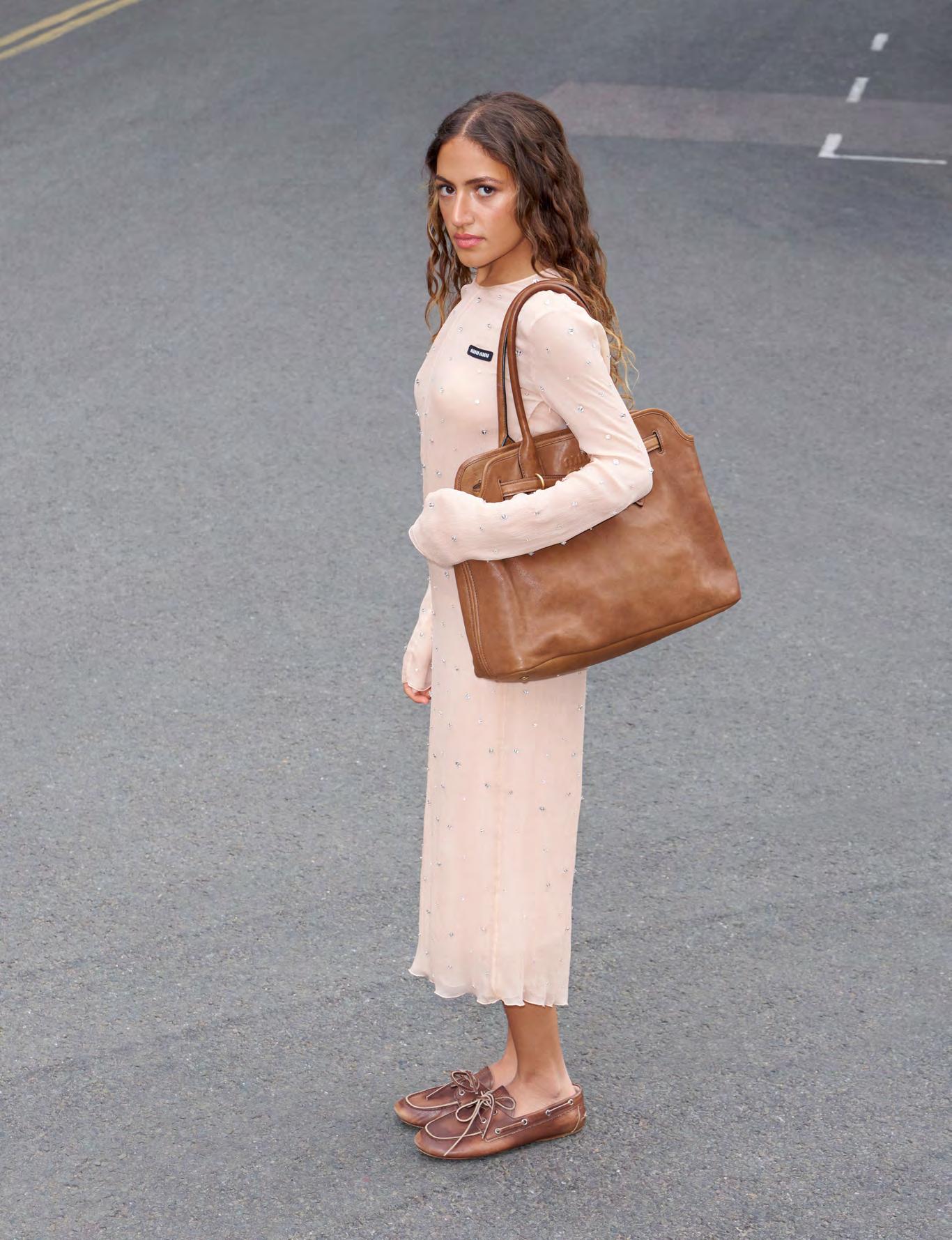

“I think that because I was in such a transient phase, I could only hold on to three truths: I was Arab, a woman, and I understood the creative space. It was from this foundation that Hayaty Diaries was imagined.”


London’s siren call couldn’t drown out a quiet, persistent hum of something still missing. A yearning for her Arab heritage continued to gnaw at her, there was a quiet dissonance within her, a growing sense of distance from her roots – a feeling amplified by those shared coffee-filled conversations with childhood friend Christina Shoucair, a kindred spirit yearning for that same sense of home. “Hayaty Diaries began to take shape when I pitched the concept of collaborating with Arab women creatives to Christina,” Diab explains. Hayaty Diaries was born in the space between that longing and their combined creative drive. “I think that because I was in such a transient phase, I could only hold on to three truths: I was Arab, a woman, and I understood the creative space. It was from this foundation that Hayaty Diaries was imagined.”
Their exhibitions are like portals to other worlds, meticulously curated with a keen eye for the raw and the beautiful. Diab, ever driven by a love for people as much as the art itself, shines brightest when championing the artists. “When selecting artists for collaboration, we begin by brainstorming potential exhibition themes,” she explains, “We deliberately seek out boundary-pushing artists who embody boldness and freshness.” Each exhibition is a mosaic of experiences: identity, womanhood, and liberation explored with courage and imagination. Diab wants to do more than showcase talent – she wants these spaces to dismantle assumptions about Arab women, to cultivate empathy.
“One misconception I would like to dispel is the notion that Arab women possess a monolithic identity,” Diab passionately declares. She believes that the beauty lies in the complexity, in the unexpected nuances that defy easy labels. Her hope is that Hayaty Diaries does more than just showcase stunning works; she wants it to be a space where viewers confront their own biases and leave with a deeper understanding of the multifaceted nature of Arab female experience.
“With its transformative power, each exhibition,” she says, “becomes a space for personal growth and understanding... inviting viewers...to engage with the complexities of Arab identity in profound and captivating ways.”
The collective’s philosophy is as bold as the artists they champion. “We want to revitalise and diversify the art market, creating a community where all voices are valued and heard,” she insists. This commitment extends to cross-disciplinary collaborations, pushing the boundaries of the traditional art experience with events like ‘The Material Woman,’ a collaboration with UK-based platform 3eib, where art and fashion fused into a mesmerising whole.
Success isn’t just about growth, but impact. “Ultimately,” Diab states, “we measure our success by our ability to amplify underrepresented voices, promote diverse representation, and cultivate a platform where creativity thrives without bounds. As long as we’re advancing in this direction, the possibilities for Hayaty Diaries are limitless.”
The impact of collectives like Hayaty Diaries extends far beyond the gallery walls “Any platform advocating for diverse representation...nurtures empathy and understanding on a global scale,” she says. But perhaps most importantly, within the Arab world itself. “Within our region,” Diab explains, “Arab women must not just see themselves represented, but feel valued and recognised.” The collective provides validation, role models, and a powerful message for young Arab women: “their voices matter, and that there are endless possibilities for their futures.”
When Diab has a moment to herself, a different kind of creative expression takes over. Her love for fashion is a love letter to her roots and a tribute to her mother, a woman of impeccable style. Her own wardrobe becomes a canvas where past, present, and future collide. “Fashion and styling, to me, are a fusion of the past, present, and future, allowing me to express who I am, who I want to be, and where I came from.”
A story still unfolding, Diab, curator, creative force, and passionate advocate, is driven by memory, a longing for connection, and a belief in the boundless power of the creative spirit. For Diab, Hayaty Diaries is a homecoming, a way of building a bridge between her past, her present, and the limitless possibilities of the Arab women she champions. She’s creating a platform where belonging, identity, and boundary-defying art intersect, leaving the world of art a more vibrant, inclusive place than she found it. ■
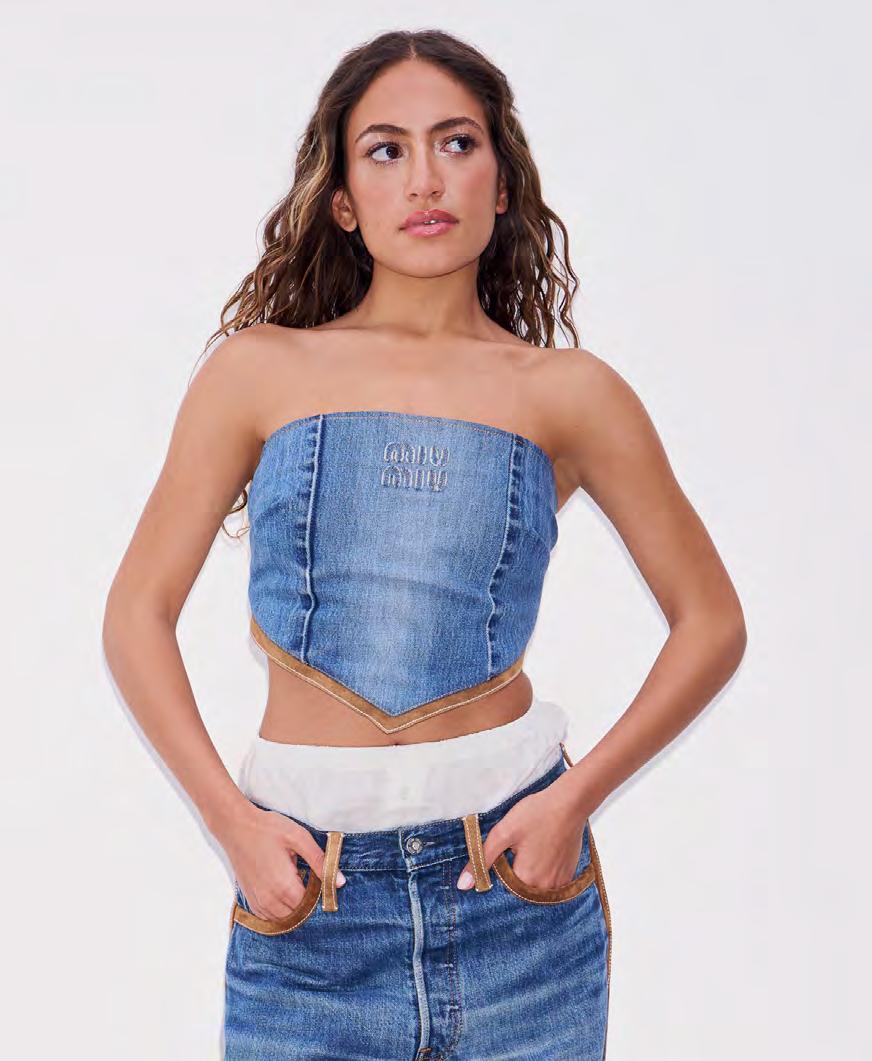
“It’s incredibly beautiful and inspiring to see how my personal experiences with my dad and his songs resonate with millions of others in different iterations.”
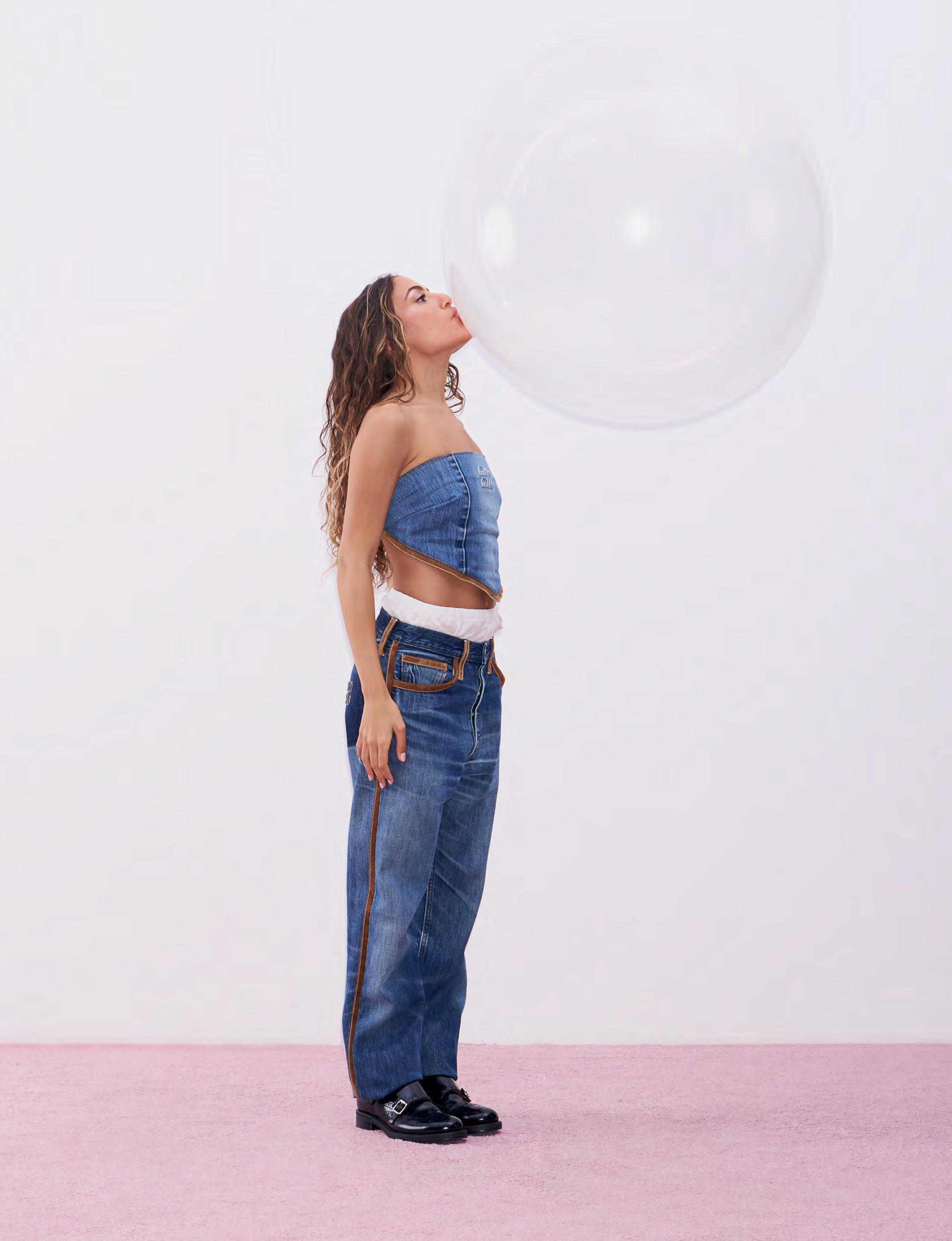

photography ESRA SAM
styling MARILLA RIZZI
words MENNA SHANAB
The Outsider Auteur: Meshal Al Jaser and the art of subversion.
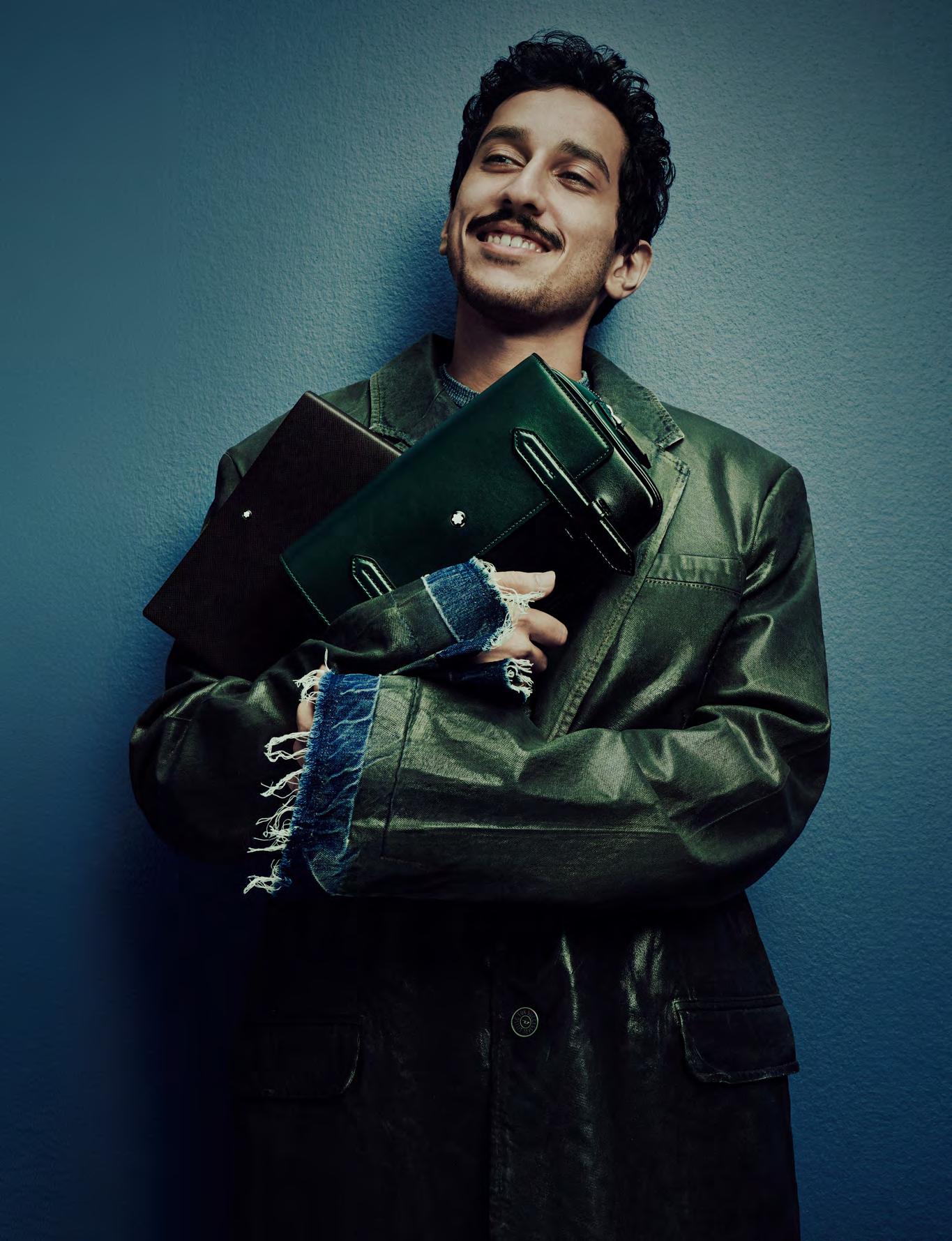
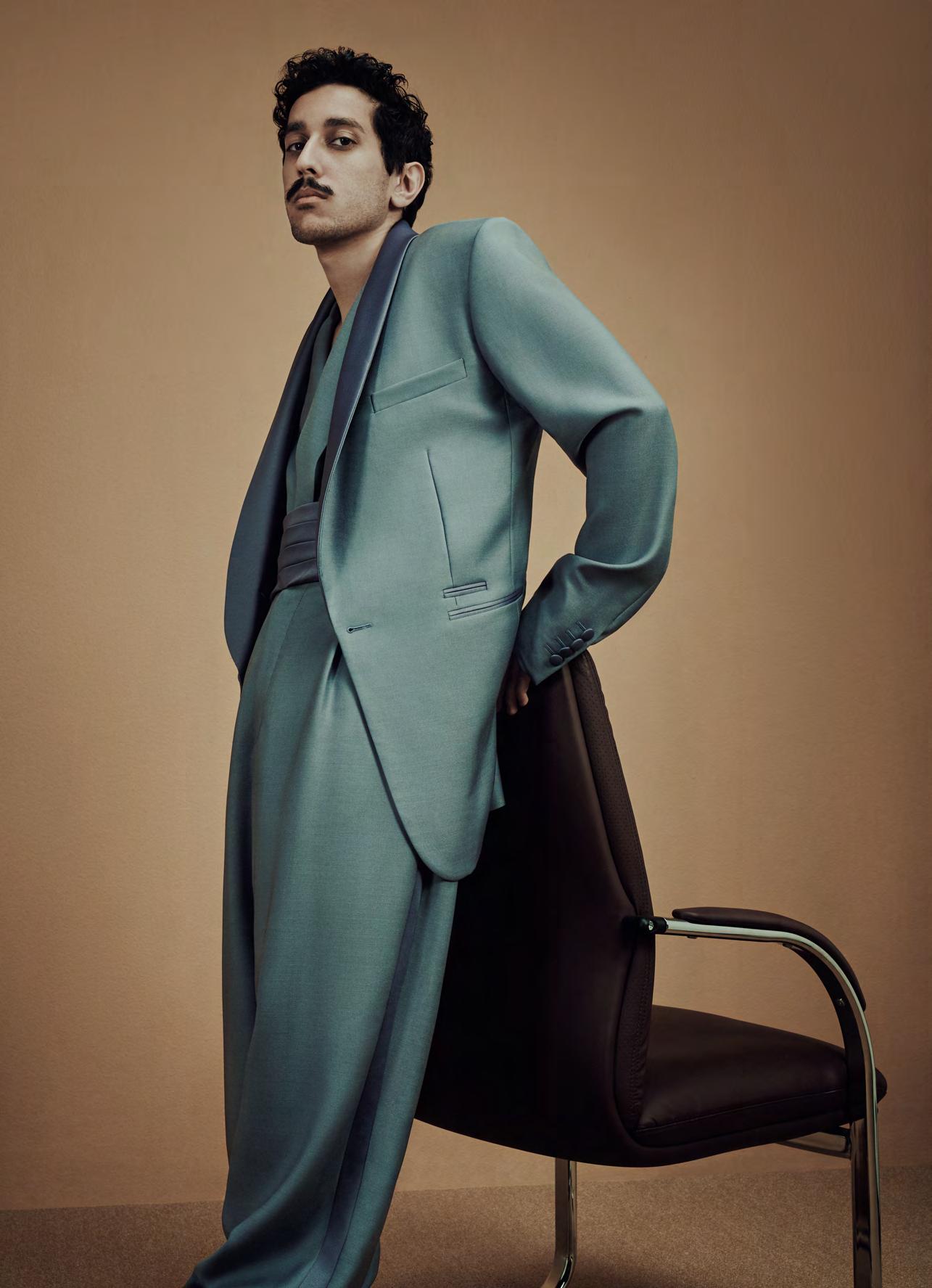
“If you can make someone laugh, you can share anything with them.
Meshal Al Jaser’s name is synonymous with the renaissance of Saudi cinema but if you ask him, he’ll brush that recognition aside with a shrug and a sly, half-smile that always seems to hint at something more. His isn’t a story about a meteoric rise to fame; it’s a tale of a passionate kid channelling a hunger for cinematic expression into something larger than himself. This is about building, not just creating.
There’s something subtly rebellious about Meshal – the quiet intensity masked beneath a playful grin, the flicker of mischief behind his eyes, the easy way he turns a serious question into something lighter, more playful.
He has a knack for subverting expectations. He speaks of his decade-long career as mere “practice,” a playful understatement that belies the groundbreaking impact he’s had on the industry. But Al Jaser is more interested in the future than dwelling on past achievements. He’s focused on what he can create, not on the accolades he’s already amassed.
At 28, the label “pioneer of modern Saudi Cinema” may land awkwardly on his shoulders but the weight of it isn’t lost on him. “I’m very committed to the evolution of Saudi cinema, and I’m dedicating my career to it,” he says, the playful edge replaced with quiet determination.
There’s no false modesty in his words. It’s this mix of grit and disarming humility that makes Al Jaser one to watch. The Saudi film scene was a blank slate when he started. Now, with government backing and a groundswell of talent blossoming in his wake, the future is dazzling. We’re fortunate to have such support,” he says, acknowledging the role of institutions like the Saudi Film Commission and the Ministry of Culture. “They’re taking our industry seriously, and that’s incredibly exciting.” But, grounded in that rebellious spark, Al Jaser isn’t racing toward the Hollywood glitz. “I feel like I just really want to be the best version of myself. And I think hopefully, if I do that, things will fall into the right place.”
Al Jaser’s journey began in the scrappy, unfiltered world of YouTube. “I didn’t even know I was directing,” he recalls of those early days. “I just wanted to tell stories.” He found his tribe on channels like ‘Folaim Ya Gholaim’ and ‘Telfaz11’. These were the rough, DIY workshops of a generation yearning to see themselves reflected on a screen. “It was a very vulnerable time,” Al Jaser admits, “Everyone could see our early work, the growing pains, the lack of polish.” But this public evolution also became his strength.
Anyone who views those early YouTube videos, filled with technical imperfections yet undeniable heart, can chart his trajectory. It’s a celebration of the young filmmaker he once was: the kid so hungry for his own voice that he was willing to learn in public, mistakes on full display. And maybe that’s precisely what makes him this generation’s most important Saudi filmmaker.

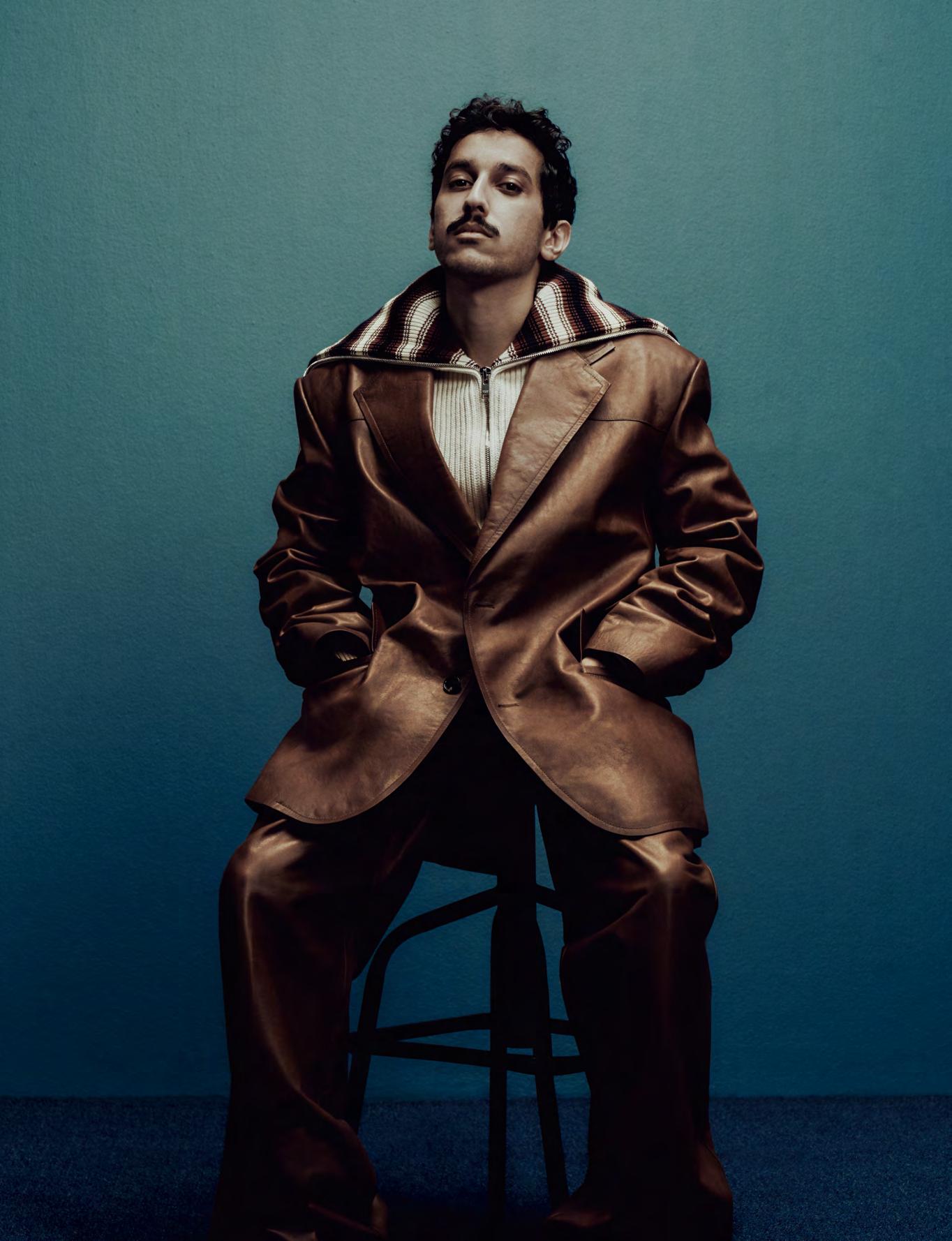
Al Jaser knows his work will inspire countless others. But he also understands that his path isn’t the only route to success. “I don’t have grand words of wisdom,” he says, “I’m still figuring it out myself.” He’s not a self-proclaimed guru, but a fellow traveller on the unpredictable road of creativity.
There’s a delicious subversive current that underpins his work. Is he a social commentator? A provocateur? A comedian with something to say? Maybe none and all of these at once. It was “Is Sumiyati Going to Hell?” that catapulted him into the spotlight, but this wasn’t a calculated grab for fame. With raw, sometimes uncomfortable honesty, he turned his lens onto those often unseen – domestic workers, their struggles caught between cultures and power structures. That film was a question mark, a refusal to sweep harsh realities under the rug of polite society, sparking a national dialogue about the often-ignored lives of those working on the margins of Saudi society.
He has a knack for making you laugh until the punch of his films lands, leaving you not with a sermon, but an invitation to linger on a question. “If you can make someone laugh,” he says, “you can share anything with them. Even criticism.” This playful edge is what makes him an outsider, even with accolades starting to pile up.
But don’t mistake Al Jaser for a filmmaker whose sole mission is to expose the gritty underbelly of society. “Arabian Alien” proved he can weave satire and social commentary with a wink and a sci-fi twist. He tackled themes of social acceptance and cultural norms, all filtered through the lens of an extraterrestrial encounter gone awry. “It started as a musical project,” he reminisces, “but it evolved as we explored the idea of feeling like an outsider, like an alien in your own world.” Playfulness disguises the punch his films pack. This is what makes his work resonate – it meets the audience halfway, even when the destination is a challenging one.
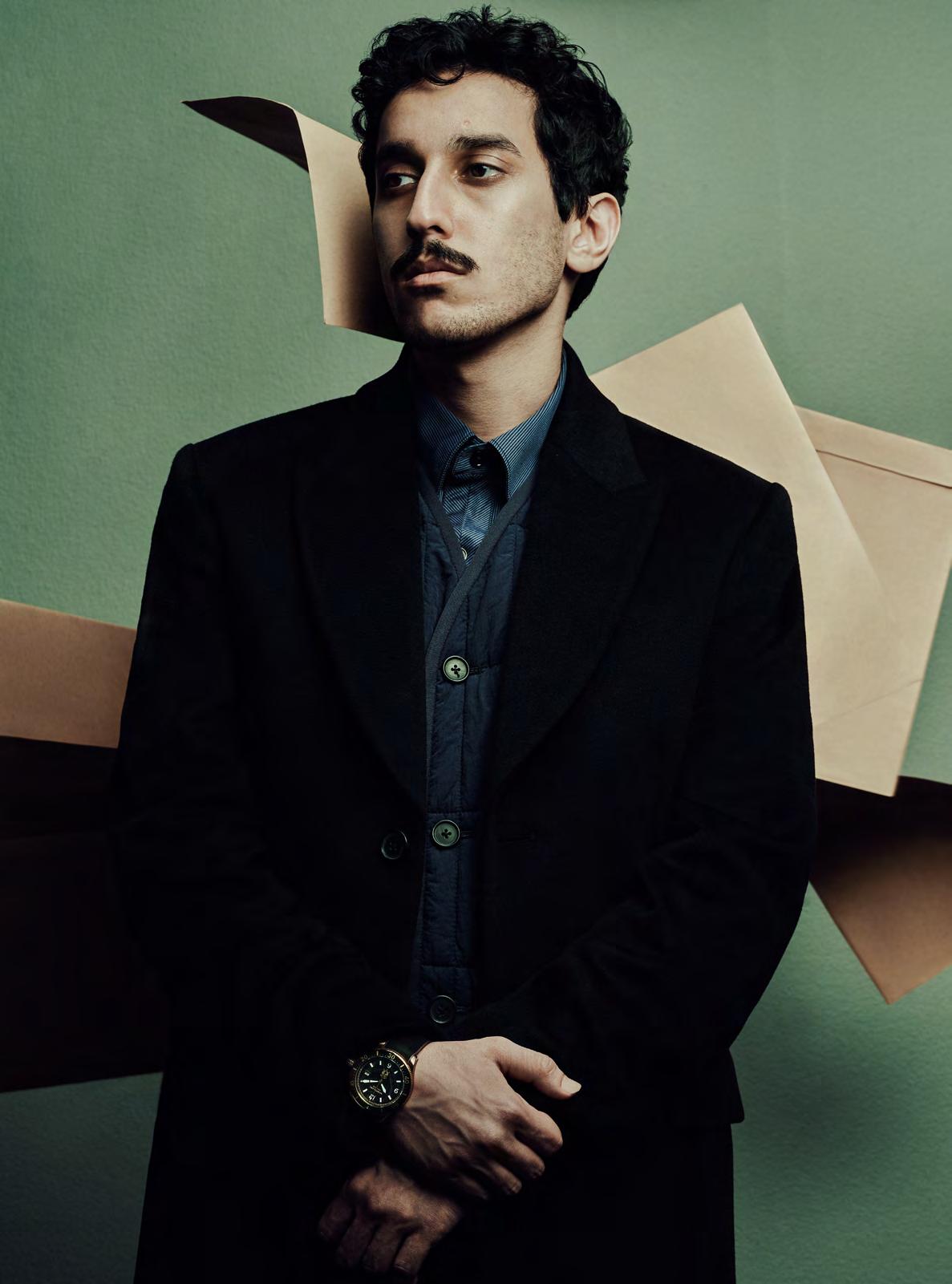

Success hasn’t made him complacent. He could have chased the glitz of international festivals, but then “Six Windows in The Desert” arrived. This wasn’t about grand statements. It was an intimate exploration of his homeland during a time of forced isolation. These vignettes showcased the humour, the beauty, and the relentless pulse of Saudi life in lockdown – messy, hopeful, and undeniably real.
But the real outsider move came with his debut feature, ‘Naga’. This madcap satirical thriller features a young Saudi woman stranded in the desert, racing against both time and danger to get home before curfew. Bold, brash, sometimes maddening, it premiered at the prestigious Toronto Film Festival, and was the first Saudi film to be selected for their Midnight Madness section. This isn’t the “Hollywood” version of Saudi stories – it’s the messy, stubbornly original heartbeat of a filmmaker refusing to paint within the lines. “It’s my first feature,” he says, “and it definitely has its own language, its own rhythm.” “Naga” is a chaotic, exhilarating ride, a film that refuses to be tamed or categorised.
Al Jaser’s creative process is as unique as his films. He talks about the importance of “a playful headspace,” a sense of childlike wonder that allows him to tap into his most authentic ideas. “Being playful is essential,” he asserts, “If you’re always serious, you might not produce your best work.”
This playful approach is evident in his willingness to experiment, to challenge conventions. “With ‘Naga’,” he explains, “I wanted to tell the story in my own language, not the traditional cinematic language.” This defiance of convention is a hallmark of his artistic signature, a refusal to be confined by pre-existing rules.
The early days saw him practising in public; now, a decade in, he’s proving there are no shortcuts. His path might be the most valuable blueprint for aspiring Saudi filmmakers. It’s messy, it’s human, it’s about dedication, not sudden stardom.
He is here to tell stories…and he’s building the stage on which thousands more can be told. It’s a far slower, grittier cinematic revolution than flashy red carpets may suggest, but that’s precisely what makes it worth watching, and worth waiting for. ■


“I feel like I just really want to be the best version of myself. And I think hopefully, if I do that, things will fall into the right place.”

Saudi actress Mila Al Zahrani is challenging conventions and changing the narrative one role at a time.




“You could tell that I was in disbelief while I was on the red carpet…
In the contemporary panorama of Middle Eastern cinema, few figures have emerged as vividly as Mila Al Zahrani in recent years. A trailblazer for Saudi women on the silver screen, Al Zahrani has navigated her career with a blend of tenacity, savvy, and a deep commitment to female empowerment.
Curious about the application of technology and how it could solve the world’s problems, in her early years, Al Zahrani was initially drawn to a career in computer science, something far, far from the glitz of the red carpet. Fascinated by the wide-ranging solutions technology could offer, Al Zahrani envisioned herself at the forefront of teams solving real-world problems through programming and innovation at institutions like KAUST in Saudi Arabia. However, her path took a dramatic turn towards the arts, after a director saw her on social media, “I participated in a casting just for fun, actually, nothing serious. And it was through this that they discovered this talent and skill I had. And this was how I discovered the love I have for acting,” she says.
Her pivot from a career in tech to acting was perhaps a simple synthesis of her passions. Al Zahrani sees technology as a “facilitator” for the arts, a tool that enhances creativity and accessibility in fields such as acting, drawing, and music. This belief is crucial in understanding Al Zahrani’s story so far—she uses technology to educate herself, but perhaps more importantly, she sees it as a great leveller, opening up areas of work or study that might not have been previously accessible to all. And, in a way, that’s what Al Zahrani does with her acting – she champions the cause of women from Saudi and across the region through her choice of films, opening up representation and vision for those who might not have had it.
“Innovations today, like ChatGPT, enable people like me, and even younger, to not just learn more about art online, but to train on their own, independently, and to pursue the passion we have for art,” she says. “I use technology to educate myself on everything around my passions… videography, art… whether it’s using various applications, or ChatGPT. I’m fascinated by the way that technology can help me develop these skills and teach me new things as well, things that I don’t necessarily have on hand,” she says.
Therein lies the power of technology, and it aligns with Al Zahrani’s own take on power: The relentless pursuit of goals, irrespective of the challenges that lie ahead. Power, to Al Zahrani, is about making bold choices and using every available tool to forge ahead, a philosophy she has applied from her earliest roles to her latest projects, “Take the risky decisions, you know, regardless of your fear, to overcome, continue on the path, take these decisions, take these challenges with the aim of reaching the goal that you want to reach,” she says.
Following that first serendipitous, social-media inspired casting, Al Zahrani’s acting career quickly blossomed as she found herself drawn to roles that resonate with strength and resilience, characteristics she naturally embodies. Her first significant break came with the TV show “Boxing Girls”, where she played a young woman defying the traditional boundaries set for female athletes in the Middle East, “Even before I got it, I had spent months and months preparing for the role and the character,” she says. She shot “Boxing Girls” in 2018 and it aired the following year. From there, things began to fall into place.

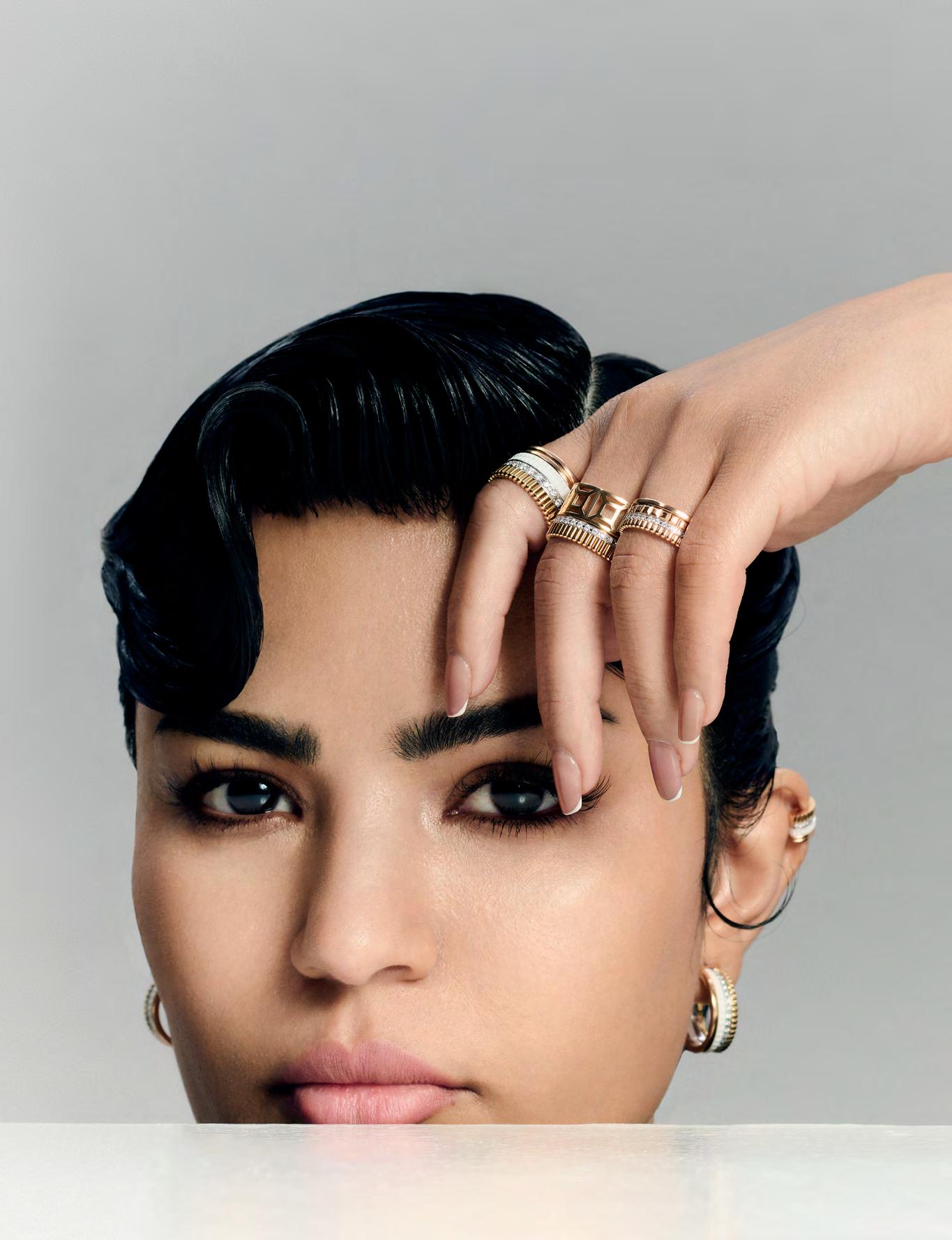
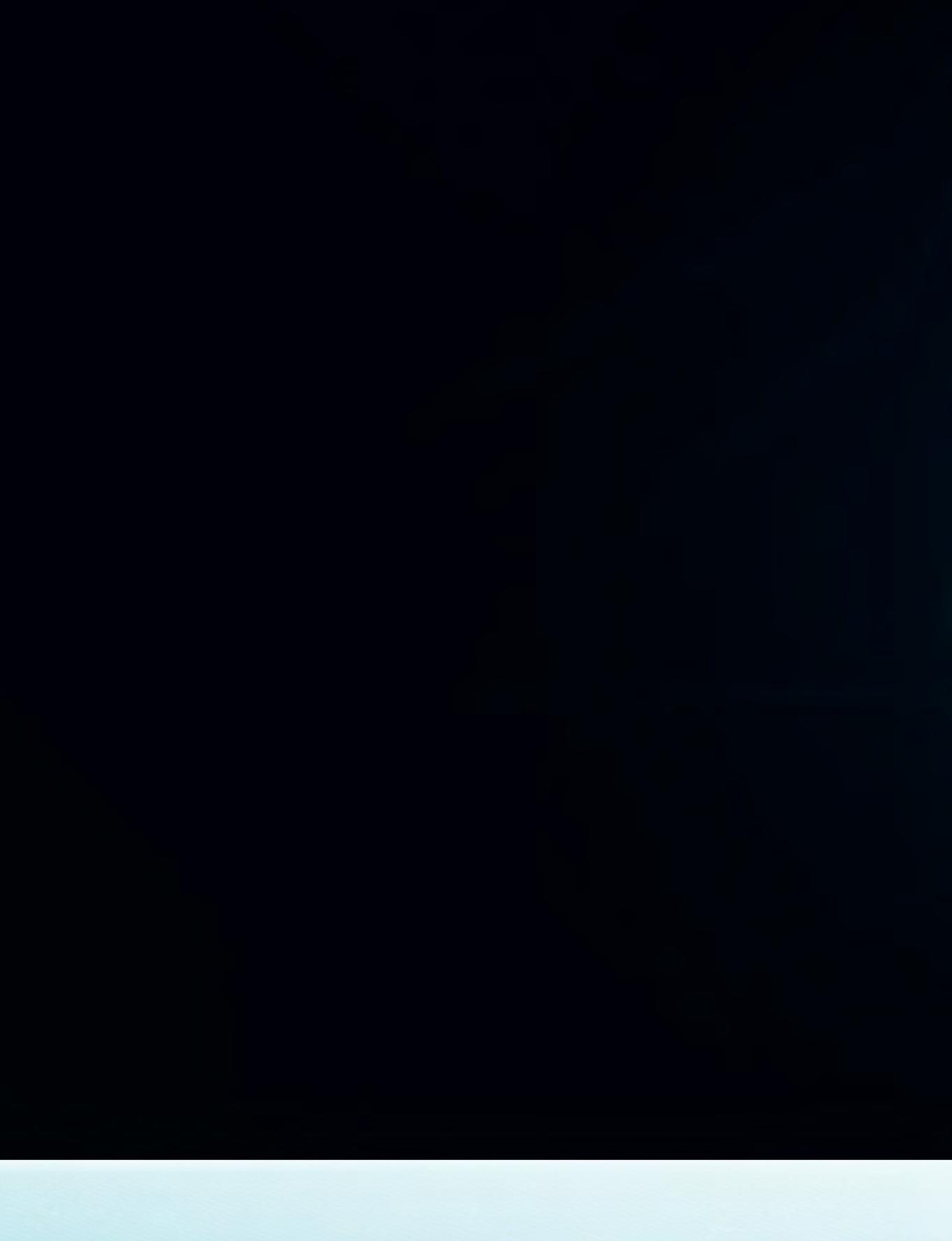
“If it wasn’t for my daughter, I wouldn’t have been as determined as I am to continue in my career path, despite the difficulties, because she gave me a reason to continue doing it.”

“Even before I got it [her part in “Boxing Girls”], I had spent months and months preparing for the role and the character.”
“While I was filming “Boxing Girls”, Haifaa Al-Mansour, a famous Middle Eastern director, who’s strong on female empowerment, got in touch. She’s known for breaking the stereotypes around females in the Middle East, and their acting careers. She recognized me as a new fresh face in the acting scene, in cinema, and was very interested,” she says. The project? 2019’s “The Perfect Candidate, in which she’d play another inspirational character. The film landed her at the Venice Film Festival and potentially marked her as a rising figure in international cinema. In it, she plays a doctor who stands for a local election in Saudi, having grown tired of the corruption she sees all around her. Another role, another strong female lead, albeit one very different from “Boxing Girls”.
Venice was an incredible experience for Al Zahrani. The film was selected to compete for the Golden Lion, and while it didn’t win, it was still high praise, especially given the leading actor’s lack of experience. “It was such a shock initially, it was shock to the point of disbelief,” she says, laughing. “I had only been in the industry for a year. You could tell that I was in disbelief while I was on the red carpet… on the red carpet at the Venice Film Festival!” She might not have chosen acting as a career, but she’s certainly turning heads with her portrayals of remarkable women.
Her next project, when it comes to film at least, is something that she can’t really talk about in that much detail. “I just finished, I just wrapped up shooting a huge film, a film that I’ve been working on for the past two years. And if it airs in the next year, people will get to see why I think it’s the most exciting thing I’ve done so far,” she says. The excitement in her voice is clear to hear, filling the air with an infectious enthusiasm.
She’s sketchy on the details, and without going into the plot, “It’s a film that is so vast, so wide, it speaks about different elements of society, from small to large. So it tackles a bunch of different topics and different societal struggles and elements that exist within the Middle East. I’m proud of it, I want to shed light on some things and help the rest of the world understand,” she says.
Beyond the screen, Al Zahrani has taken on the mantle of a cultural ambassador for Parisian jewellery house Boucheron and she sees the role as a platform to challenge and change the stereotypical views of Arab women. Through her roles and public appearances, she aims to convey the richness of Saudi culture and the evolving status of women in her society, to “break any kind of boundaries or limitations or misinterpretations that existed between the two [the Middle East and the West], and further introduce Saudi to the world,” she says. “It’s a major step in my career, and an absolute honour to be considered one of the first Middle Eastern ambassadors for such a global brand,” she says.
Looking forward, Al Zahrani has no intention of resting on her laurels and her dedication to supporting others extends beyond her work in front of the camera. She is just starting to develop a community platform for artists in the Middle East through which they can collaborate, share, and grow together. Still in its infancy, it’s intended to nurture a supportive environment for young talents in the arts, ensuring they have the tools and mentorship necessary to succeed. Watch this space.


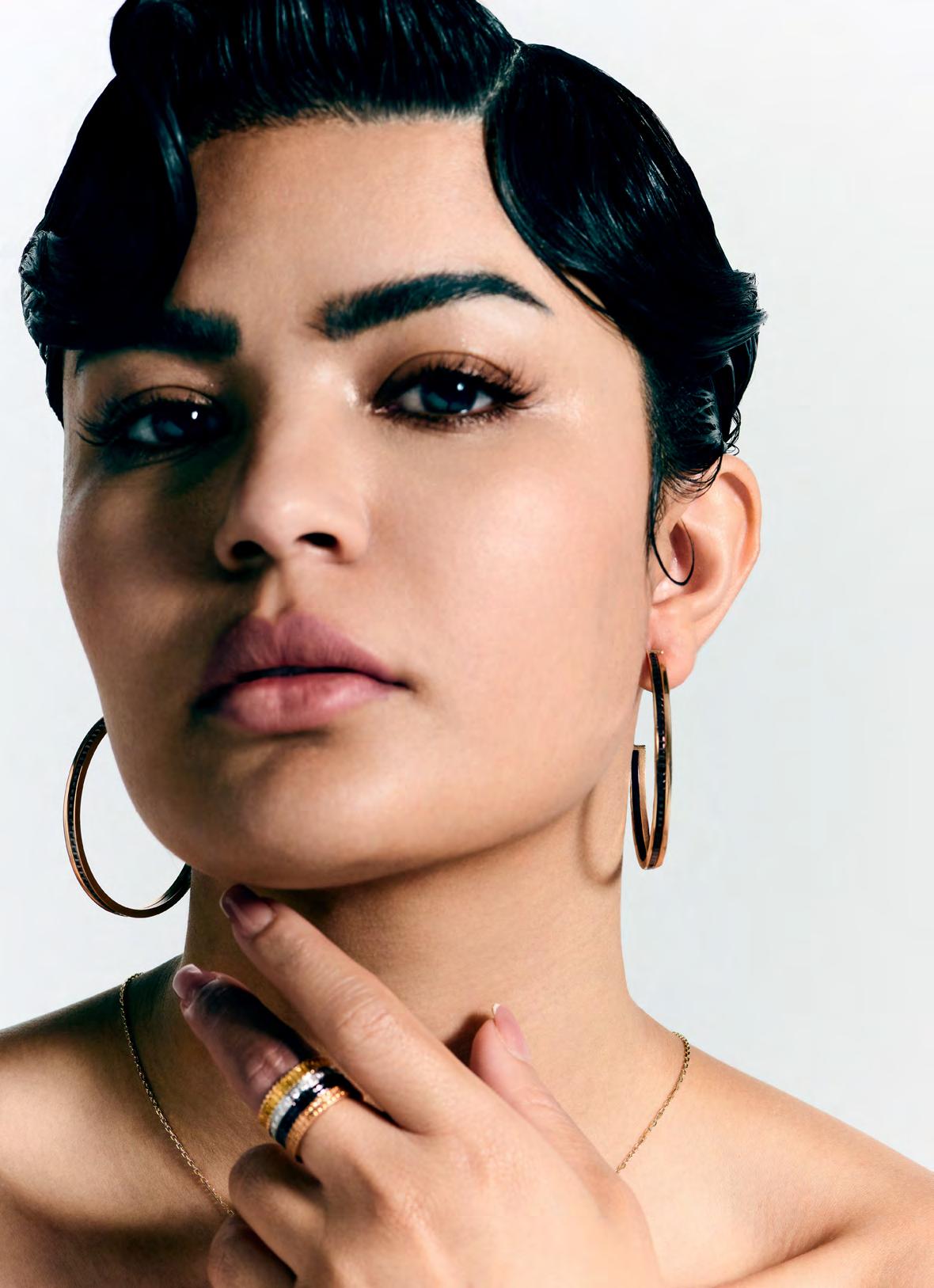
“I’m fascinated by the way that technology can help me develop these skills and teach me new things as well, things that I don’t necessarily have on hand.”
Al Zahrani’s commitment to female empowerment is clear to see, as is her inspiration. A mother since the age of 19, when she’s not on set, she pours her energy into her daughter. “I’m a super proud mum and I’m proud of my journey and the fact that I became a mum at a very young age, everything happened for a reason, because having my daughter so early also matured me at a very young age, and taught me things that I wouldn’t have learned otherwise,” she says. “If it wasn’t for my daughter, I wouldn’t have been as determined as I am to continue in my career path, despite the difficulties, because she gave me a reason to continue doing it, and a responsibility to fight for it, knowing that I had something to come back to and someone to take care of. I don’t know if I would have had the strength and bravery and boldness to continue in this career path, if I hadn’t have had my daughter.”
Her advice to young women looking to break into the media is reflective of her own journey: Be bold, embrace technology and the access and opportunities it brings, and don’t shy away from seeking support. “Be very brave and bold in the decisions that you take. Even if they involve risk, even if they involve fear, make these decisions boldly,” she says. “Lean towards technology and social media and production companies and websites, these will encourage you to connect with the right people and will educate you on what it is that you need to learn.” Education, perseverance, tech, Mila Al Zahrani’s journey and story (so far) is one of empowerment and what you can achieve if you’re willing to fight. ■
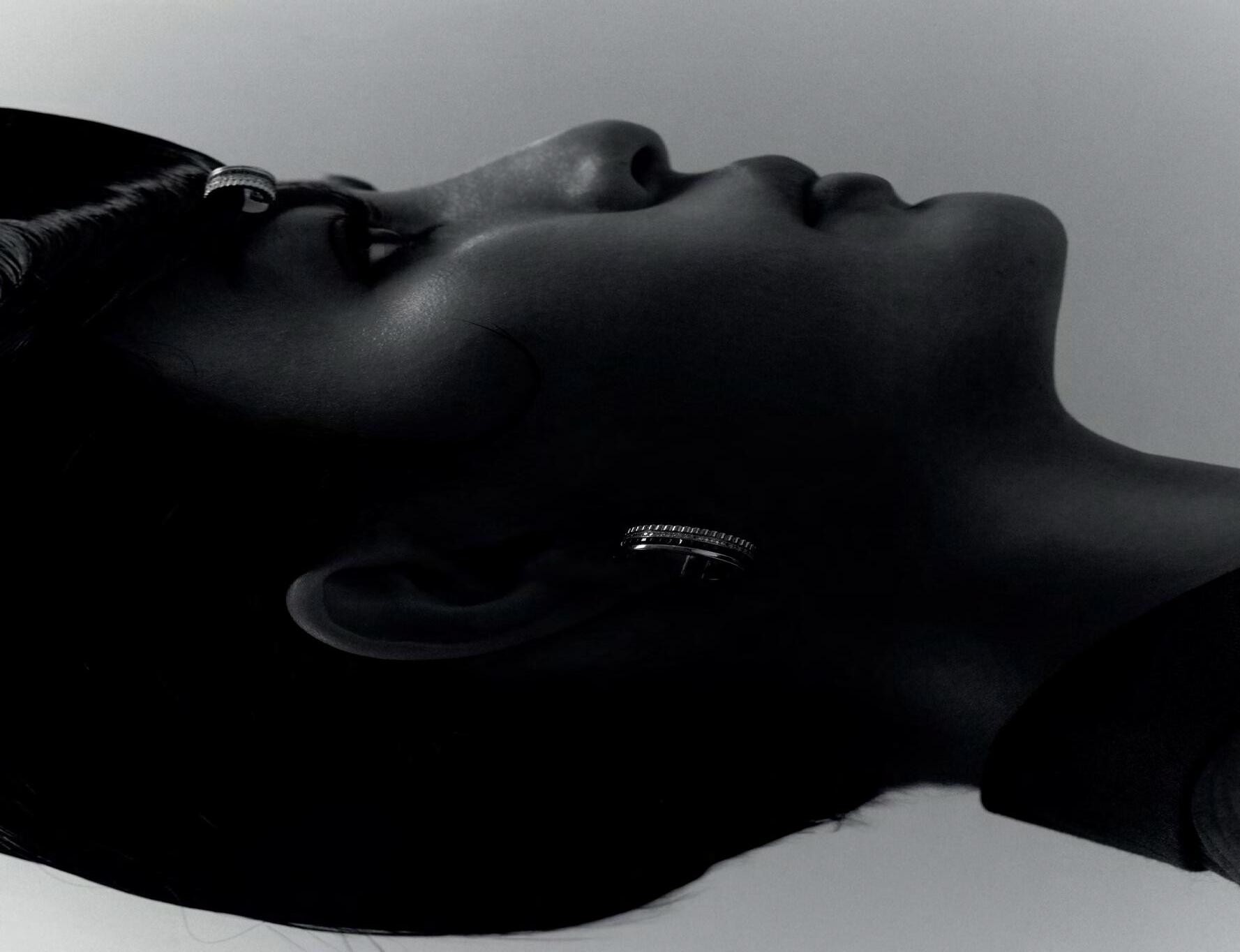
Kira Yaghnam of Al Rawabi School for Girls fame, talks passion, fashion and her desire to understand.
photography CHARLOTTE ELLIS styling DOUGLAS MILLER words LOUIS PARKS

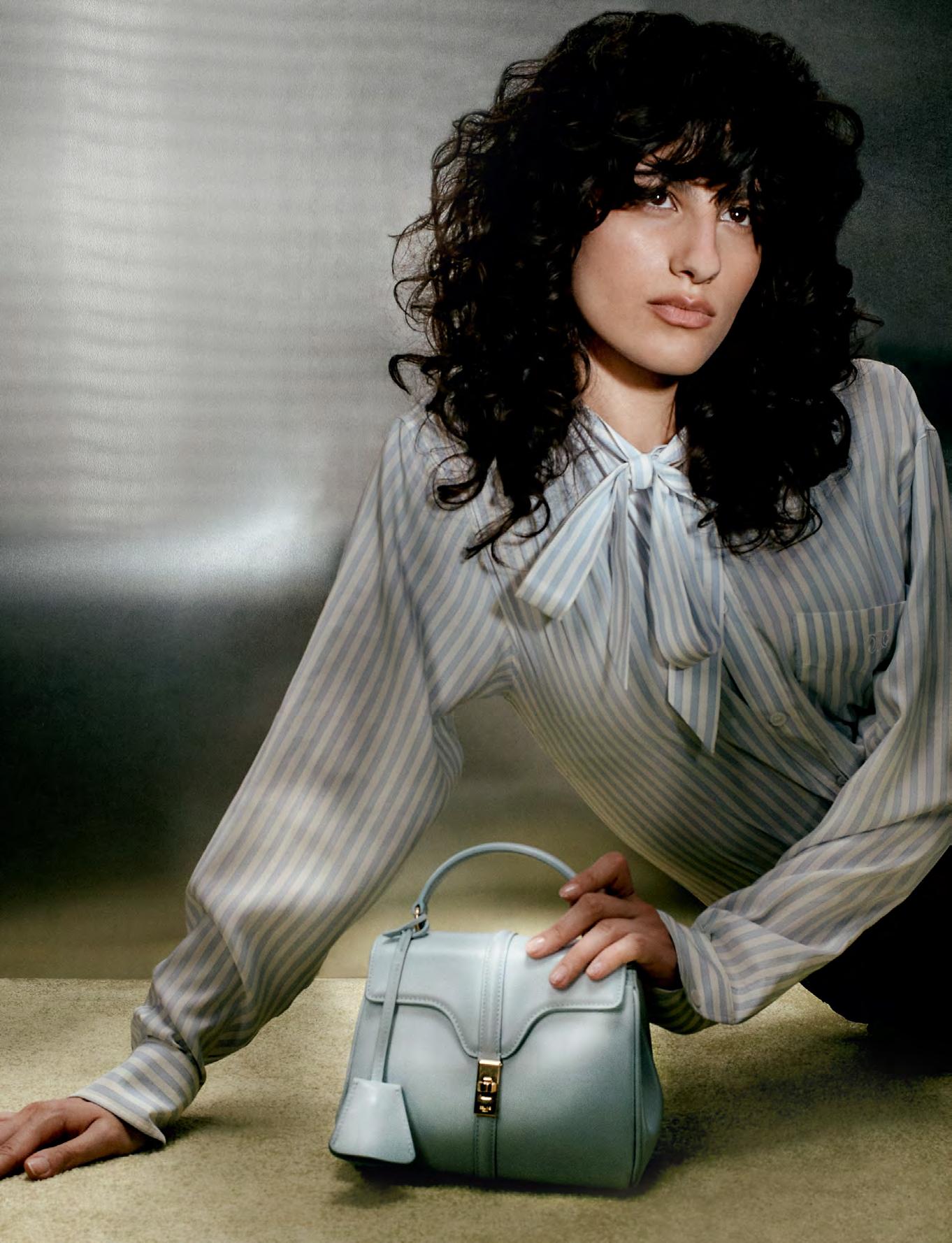
began at the tender age of three, influenced by a family deeply rooted in
Kira Yaghnam, a Palestinian-Jordanian actress, is one of those frustratingly talented people. Able to hold a tune, to act, to dance and to play the piano, Yaghnam seems to do it all, and she’s driven, to boot. With her debut as the rebellious Hiba in the acclaimed Netflix series Al Rawabi School for Girls, Yaghnam has already captured the attention of audiences both regionally and internationally.
Yaghnam’s journey into the world of performing arts began at the tender age of three, influenced by a family deeply rooted in artistic expression. “My mum’s an actress and my cousin was a dancer,” she recalls. Watching her cousin, her grace and precision, sparked a deep-seated desire to explore dance herself. “I used to watch her dance when I was three, and it quickly clicked in my head. I was like, ‘I want to be doing that, too.’ She inspired me and I quickly just knew I wanted to be on stage and dance and perform,” Yaghnam explains. This early exposure to dance and her family’s artistic inclinations –her mother was a singer in the 1980s - ignited a passion for the stage, setting her on the path to becoming the versatile performer she is today.
For Yaghnam, the performing arts are more than just a career, they’re a means to stay grounded and connected. “Dance brings me to the present,” she explains, emphasizing the immediate and immersive nature of performing arts that help her maintain a connection to the moment, her body, and her surroundings. Despite her busy schedule, which now includes studying psychology at the University of Nottingham, Yaghnam’s love for dance remains undiminished, “Unfortunately, with the hectic events of life, like starting uni, traveling, moving abroad, I have not had the time to get back into dance, but I really want to. One of my dreams is to just go to London, find a dance studio and explore myself there. Obviously, theatre in London is on the top of my bucket list,” she says.
Yaghnam’s transition from dance to acting was seamless, driven by her involvement in school plays and local theatre. But, aside from a short student film, Al Rawabi School for Girls marked her entry into the world of film and television and it happened right after she graduated high school. “The link was the theatre, the stage,” she notes, emphasizing the natural progression of her career. “I started acting, I had a few lead roles in my school plays,” Yaghnam adds. “There’s this casting agency in Jordan that I had always applied to. And so I just auditioned, also a team from the director saw me on Instagram and was like, ‘Yeah, she looks like Hiba.’ So, they brought me in for an audition and they did a few chemistry tests. And then I became Hiba,” she says with a laugh.
In discussing her Al Rawabi character Hiba, Yaghnam touches on the complexities of portraying such a strong, yet vulnerable persona. “At first glance, it may be easy to hate Hiba,” she admits, but through the role, she explores themes of judgment, pain, and ultimately, human frailty. Through it all, Yaghnam has found a personal connection with Hiba, noting similarities in their styles and how they both use appearance as a shield against emotional vulnerability. Speaking of how the character dresses, “It’s much more than a fashion statement, this is Hiba’s way of trying to conceal the pain that people would otherwise see in her eyes,” Yaghnam reflects before saying that maybe that’s something she did herself.
“Fashion is another part of art. It’s another part of selfexpression. I find it to be really hard. It’s really hard to find good art pieces in the form of clothes, because I’m a very picky person.”
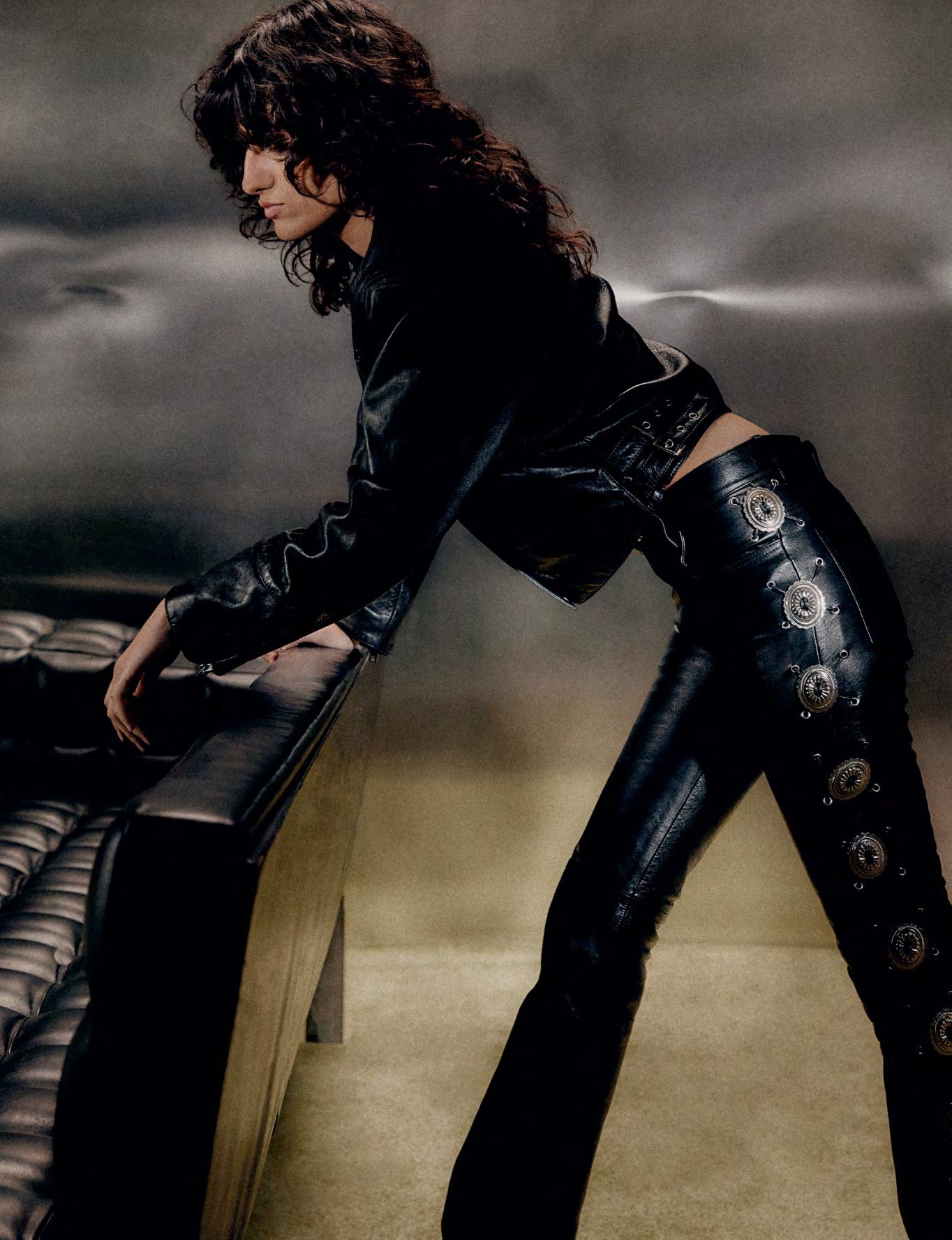


Al Rawabi School for Girls tackles pressing issues faced by teenage girls, from bullying to self-harm. Yaghnam is proud of the show’s impact, pointing to the influx of messages from viewers who felt seen and understood. “A lot of the DMs I receive talk about how the show made them feel like they’re not alone, which is such a comfort,” she says, appreciating the show’s role in initiating difficult but necessary conversations.
In an age where social media facilitates direct interaction with fans, Yaghnam describes her relationship with her audience as something of a “double-edged sword”. Though she then wonders if that’s the right way to put it. While she treasures the connection and the
support, she acknowledges the overwhelming nature of such exposure. “I have people telling us they’re so glad bullying in its different forms has been shown in the show, and I get people telling me, ‘I self-harm, too.’ And now I know I want to go get some help,” she says slowly. “They’re finally starting to talk about it, especially in our community where this stuff isn’t usually talked about. So it makes me really happy, but it’s also sad that people are going through that.” However, there’s an ugly side, too, “Yet people, even sometimes after watching the show, they just go on to on to posts about Rawabi, and spew their poison, even people who haven’t watched the show, people are so quick to judge sometimes, they just see a clip on TikTok or Instagram, and just continue judging and hating.”


Yaghnam’s study of psychology intertwines with her acting, as she believes understanding human emotions and motivations enhances her ability to bring depth to her characters. “Acting is where I feel strong in my vulnerability,” she states, discussing how the craft allows her to express and explore emotions that are often suppressed in everyday life. “Through acting, I found comfort in emotional vulnerability, because emotions that you’d usually be judged for in real life, or that I would be judged for, I can comfortably show through my characters and explore without being judged.” Given the emotions elicited by Al Rawabi, psychology seems an apt subject for the young talent.
Looking ahead, Yaghnam aspires to tackle a variety of roles that showcase not only vulnerability, but also the inner strength of her characters. She expresses a particular interest in exploring themes of rage and empowerment, inspired by her experiences and the complex emotions she has navigated in her roles so far. “Rage shows us that we don’t have to stay composed because that’s what’s expected of us most of the time, to compose ourselves, to not overreact to situations,” Yaghnam passionately explains. “People should be able to experience and healthily express the full range of human emotions. Even though society teaches us from a young age how to try and “channel” our emotions in an “acceptable” way, some people, sometimes, need to let out the strong emotions they are feeling in their own way, which may not be so “socially acceptable,”” she says.
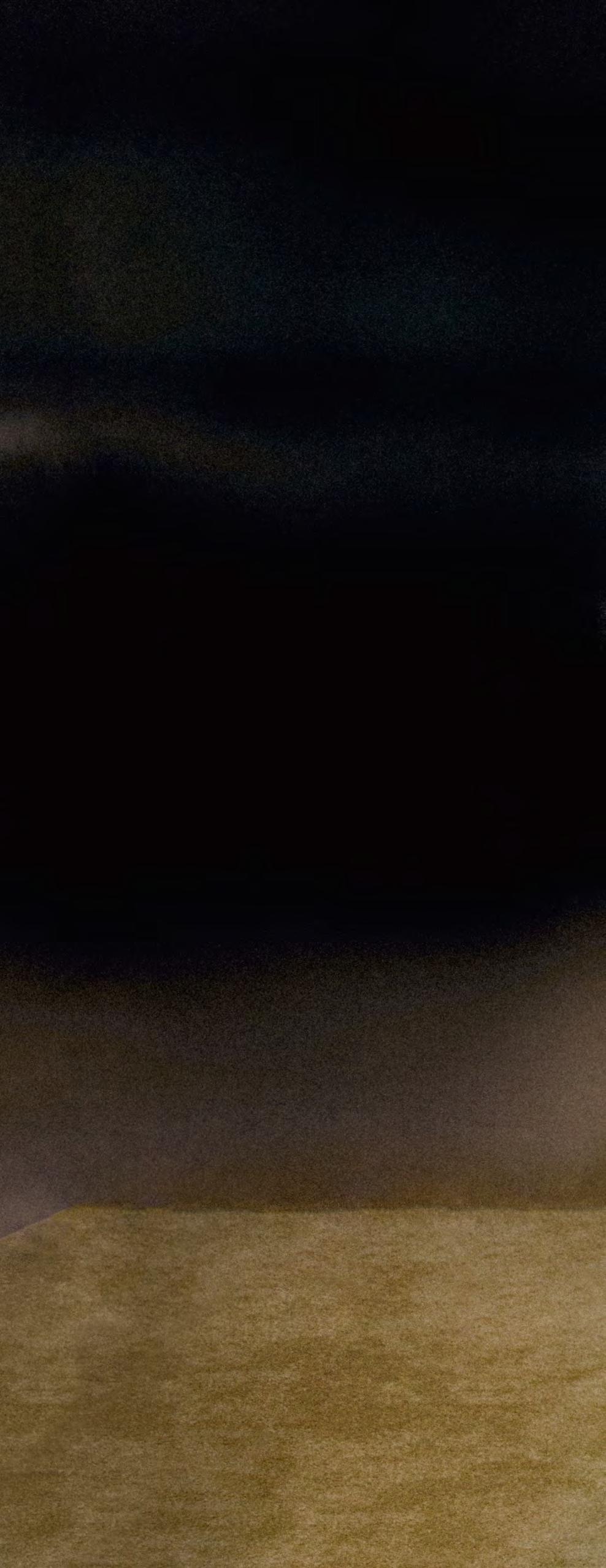
“Rage shows us that we don’t have to stay composed because that’s what’s expected of us most of the time, to just be, to compose ourselves.”


“A
of
which is such a comfort.”
Beyond acting, Yaghnam enjoys a couple of hobbies that keep her engaged and creative. From reading by the beach - her “comfort book” is the less than comforting ‘The Unbearable Lightness of Being’ - to baking, “I make a mean banana bread,” she finds joy in the simple pleasures of life. Yaghnam is one of those endearingly irritating people who claim that they have no time, yet fit in so much. After remarking on her lack of time for anything, she reveals that she’s learning the guitar and is also a pianist. You get the feeling that Yaghnam never sits still.
And then there’s the singing, with one particular song written by her mother doing nicely on Instagram, “My mum was a singer. She was actually part of a band called Mirage. They were the most popular band in the 1980s here in Jordan. But yeah, a lot of people knew them because they brought like a new a new kind of pop rock genre to the country that our part of the world wasn’t used to.” The song is called ‘A Nation with Rights’ and was written in 2001, during the Second Inftifada, “I found it relevant, like it’s such a beautiful song, and I found it relevant to what’s happening right now. Because I find it so... painful and sad that she wrote the song in 2001, and things are still horrible and unresolved, and it’s still...” she tails off.
Sitting still or not, one thing she loves is fashion, “I do enjoy fashion. I’ve always found it so satisfying how models walk on the runway. It’s so cool. And I love how symmetrical they are. They walk so symmetrically,” she says with a laugh. “Fashion is another part of art. It’s another part of self-expression. I find it to be really hard. It’s really hard to find good art pieces in the form of clothes, because I’m a very picky person. And it’s hard for me to find stuff that I like, in terms of fashion. So when I find a good runway show or a good magazine cover, and I love the outfit, it just feels so satisfying. It scratches a part of my brain. And yeah, it’s beautiful when done right.”
Kira Yaghnam represents a new generation of Arab artists who are not only breaking barriers, but who are also bringing authenticity and emotional depth to their performances. As she continues to grow in her career, her journey offers a compelling glimpse into the transformative power of the arts. With each role and performance, Yaghnam not only entertains but also enlightens, making her a true ambassador for her culture and an inspiration to young artists everywhere. ■





Maitha Abdalla’s studio bursts with emotion and creativity, birthing remarkable works.
photography ABDULLA ELMAZ
styling MARILLA RIZZI
words MENNA SHANAB

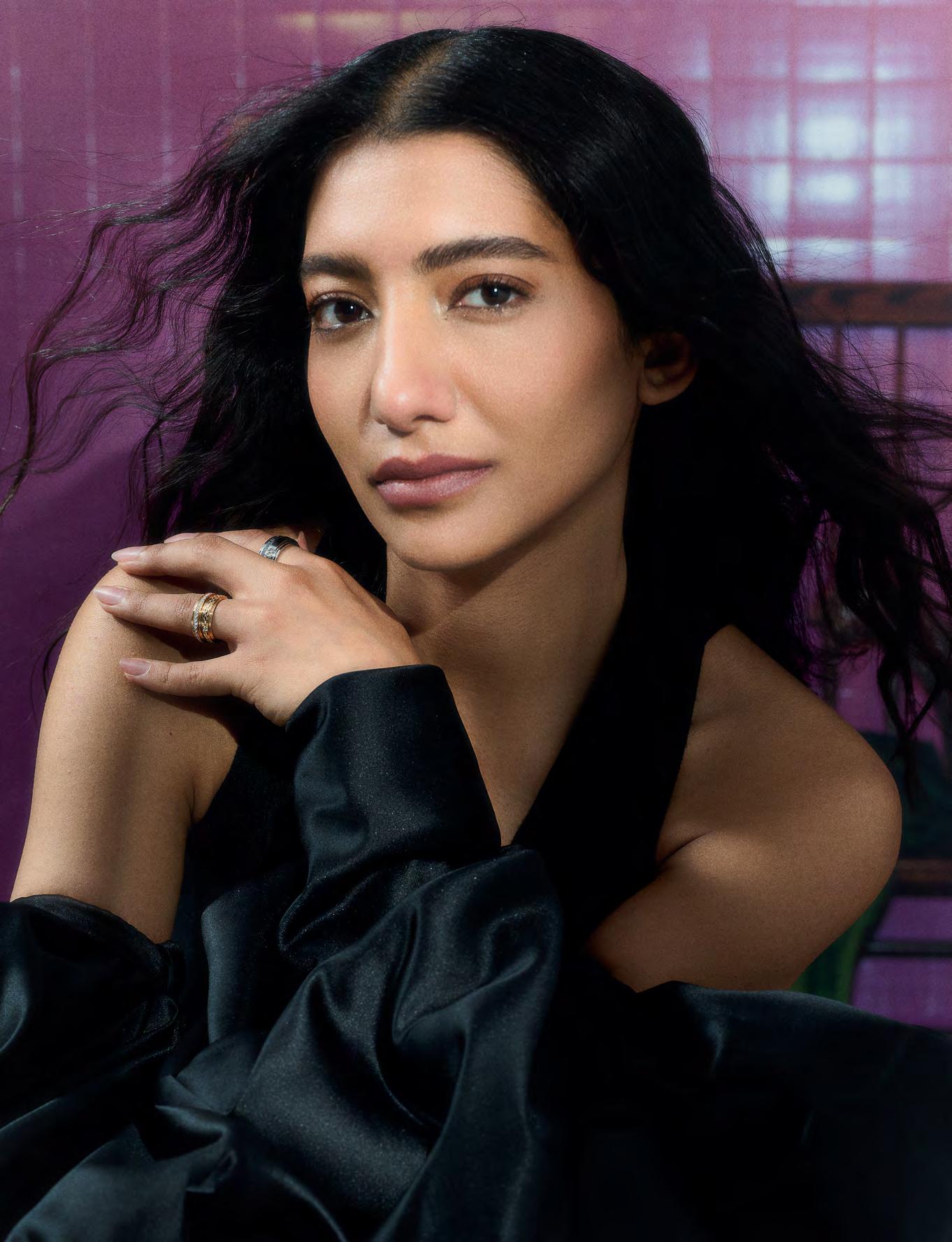
“Sometimes
me, being put in a box is what limits an artist.”
Step into the studio of Maitha Abdalla, and you enter a living canvas. Forget static easels and mute palettes. Here, creation is a performance, a dialogue between artist and material, where emotions take centre stage and the paintbrush becomes an extension of self. Abdalla, an Emirati artist who defies categorization, isn’t simply creating art – she’s inhabiting it. Her practice transcends mediums, weaving stories of identity, memory, and tradition through painting, sculpture, and performance. Abdalla isn’t afraid to delve into the shadows, confronting vulnerability with a powerful rawness.
Inspired by a lifelong love of stories, Abdalla began crafting narratives as a child. These tales soon birthed vivid characters who leaped from the page, inspiring her to explore sculpture, painting, and performance art, showcasing the power of storytelling.
Power takes on a new meaning when Maitha Abdalla enters the conversation. Her definition isn’t about outward displays of dominance, but rather the quiet strength found in vulnerability. This philosophy is captured in her simple yet profound statement: “I think being able to feel.” When asked what power means to her, Abdalla embraces the full spectrum of human emotions, welcoming not just the joy and excitement, but also the pain, sadness, and everything else that colours the human experience
The key, she explains, lies not just in experiencing emotions, but in navigating them. There’s a power, she suggests, in questioning the depths of sadness and the reasons behind it. This introspective process allows her to not just weather a storm, but to emerge with a newfound clarity.
Abdalla emphasises that every emotion, from joy to despair, holds the potential to be a source of creation. By learning to extract creative energy from all aspects of the human experience, she transforms the full spectrum of emotions into art. In this way, Abdalla pushes back against the romanticised notion of the suffering artist. She doesn’t believe in seeking out pain for the sake of art; instead, she advocates for embracing the entirety of the human experience. It’s this ability to navigate and find creative power in every emotion that defines her not just as an artist, but as a powerful individual who redefines strength through vulnerability.
“Even though I was drawn to stories at a young age,” Abdalla explains, “it wasn’t until my early twenties that I truly explored cinema and theatre.” She describes attending film festivals, then seeking out the scripts of the movies that resonated with her. “I loved reading the scripts,” she continues, “and seeing how the characters played out on the page. That’s when my practice began to shift.”
This shift involved a change in her creative process. She moved away from crafting novels and short stories, instead focusing on creating scenes reminiscent of theatrical productions or film scripts. She would meticulously develop these scenes, detailing the characters and their actions, essentially building a written foundation for the visual art she would create later. “It’s like a bridge,” she concludes, “that allows me to move from words to visuals.”
“(...) you see the rooster a lot in my work. And to me, it’s a sign for right, light, and forgiveness.”
The story comes first. Her creative process begins with crafting a narrative. Instead of writing it down, however, now she often translates it into a theatrical performance with characters embodying her emotional landscape. These characters grapple with extremes – sin and forgiveness, right and wrong – reflecting the polarities of human experience. Her artistic expressions, whether paintings or performances, often juxtapose confined spaces with expansive landscapes, mirroring the internal struggles she explores.
These contrasting ideas come together as metaphors woven into characters. They might be drawn together, locked in conflict, or sharing an intimate space. She might translate them into 3D models or stage a performance to explore their dynamics.
The studio is her starting point. She envisions her work as a grand performance. The studio transforms into a stage where she breathes life into these characters as sculptures on the canvas. The finished piece, she explains, is almost a byproduct of the story itself. It’s a visual record of the exhaustion, the performance, the play that has already unfolded within the studio walls.
Unfazed by specific mediums, planning is eschewed in favour of improvisation, music and scents set the scene, while Abdalla herself becomes a tool, using her body to paint and sculpt directly onto the canvas in a deeply physical approach. The artist thrives on this lack of control – her fingers paintbrushes, ensuring an uninterrupted connection between artist and artwork, focusing on maintaining energy throughout the process results in deeply tactile pieces.
In the world of Maitha Abdalla, human figures co-exist with a menagerie of animal characters, each imbued with profound meaning. This unique blend of human and animal forms transcends mere aesthetics, serving as a powerful language for emotions.
“A lot of these animals hold metaphors to different things,” the artist explains. “Like the rooster, you see the rooster a lot in my work. And to me, it’s a sign for right, light, and forgiveness.”
This symbolism draws upon regional beliefs that depict the rooster as a creature capable of perceiving angels. Juxtaposed against this symbol of purity is the pig, representing sin and moral transgression. By bringing these contrasting figures together, Abdalla constructs narratives that delve into a spectrum of human experiences. The rooster and pig might be depicted locked in fierce combat, reflecting internal struggles. Alternatively, they could appear in an intimate setting, like a bathroom hinting at a complex relationship. This interplay of opposites serves as a visual metaphor, conveying a range of emotions and conflicts.
While Abdalla’s work draws upon regional folklore and its symbolic creatures, it also transcends it. The artist emphasises that these metaphors are springboards for personal expression. The depicted scenes are infused with the artist’s lived experiences and emotional landscape, filtered through the lens of their present reality. Thus, these animal characters become a bridge, connecting the artist’s cultural heritage with their own unique perspective.



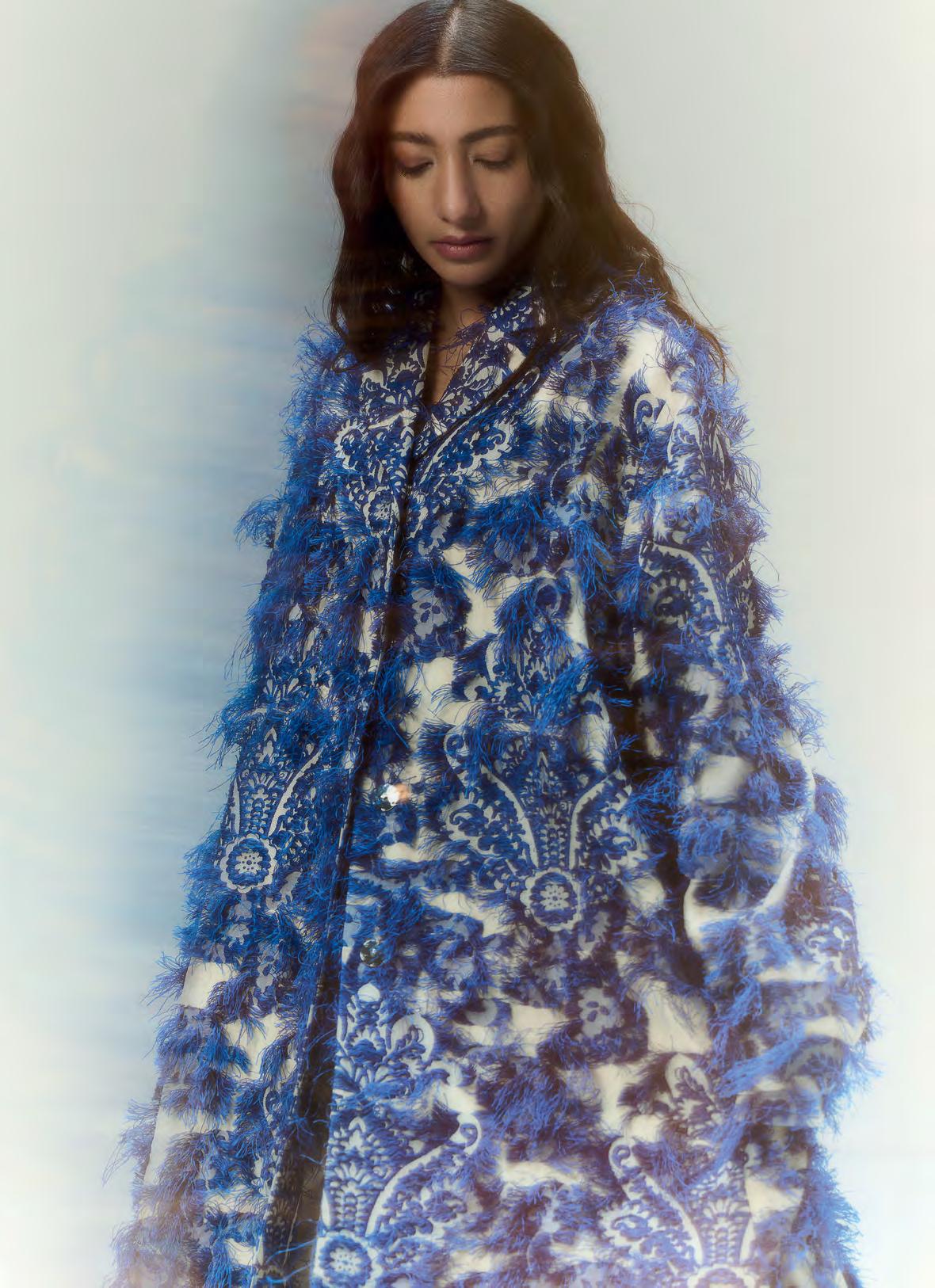
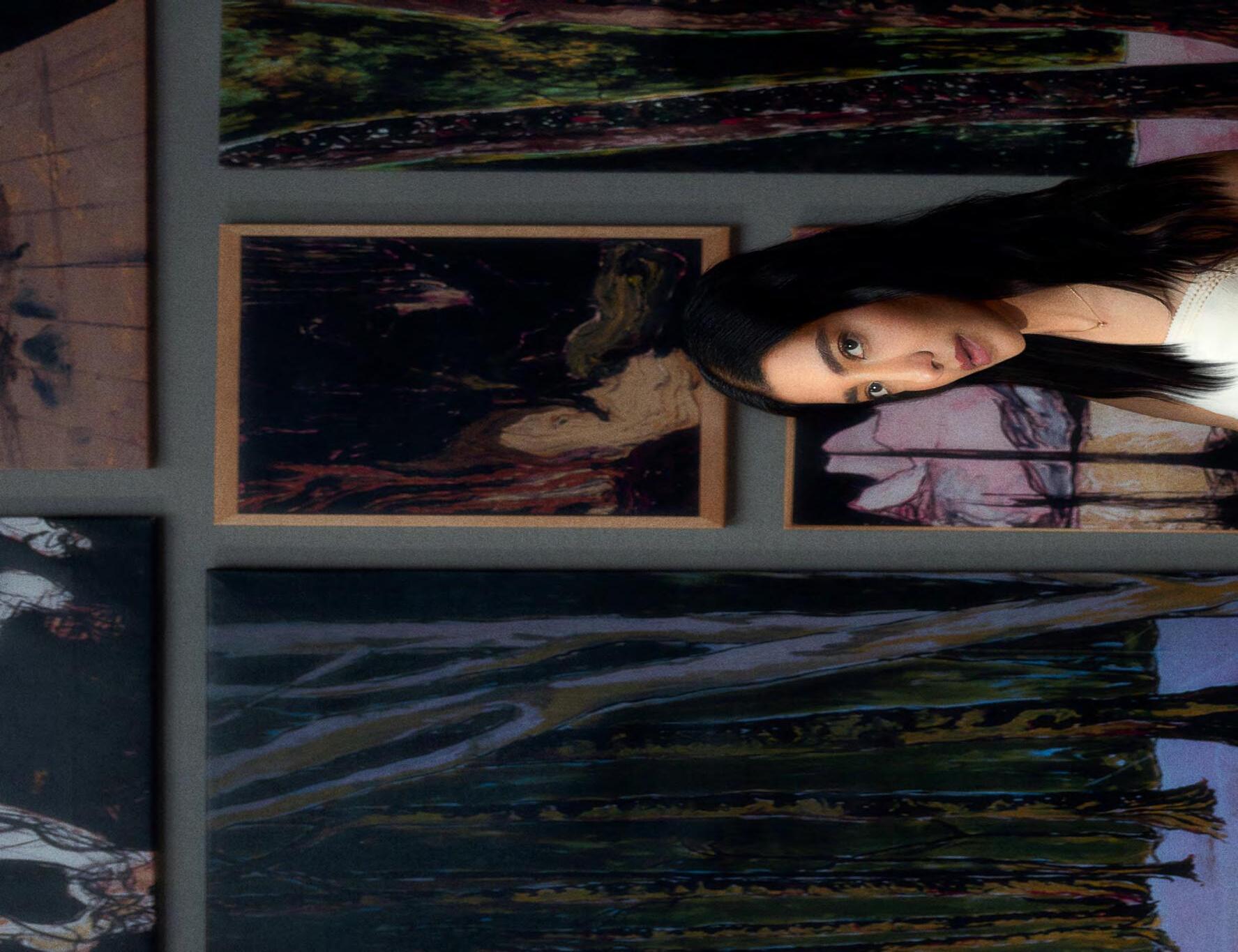


jewellery, PIAGET. dress, H&M STUDIOS
“I feel like as women in the UAE, we’re extremely empowered, more than how we are perceived in the West,” she says. Within the UAE’s art scene, she thrives in a climate that empowers female creators. However, her travels abroad seemed to box her in. During residencies in London and Paris, she felt a constant pressure to conform to a prefabricated image of the oppressed Arab woman artist who seeks artistic freedom outside her home country. This perception deeply frustrated Abdalla. For her, travel is a fundamental aspect of the artistic experience, a means to gather inspiration and broaden her perspective. She emphasises that her artistic practice flourished for a decade within the UAE before these residencies, a testament to the robust support for the arts in her home nation. Ultimately, while her identity as an Emirati woman shapes her experiences, it does not dictate the boundaries of her artistic expression. Her artistic vision transcends categorization. “Sometimes to me,” she emphasises, “being put in a box is what limits an artist.” Her unwavering desire is for her work to speak for itself, unconstrained by the limitations of labels. Her core message is clear: she refuses to be confined by any limiting stereotypes.
Consistent with her own artistic philosophy of defying limitations, Maitha Abdalla’s advice to aspiring artists is refreshingly straightforward. “Find your story and let it be interesting,” she urges. The key lies in identifying a narrative that resonates deeply with you, a story you won’t tire of sharing. Authenticity is paramount. “Don’t be scared to tell that story,” she emphasises. Ultimately, her message is a call to embrace individuality and let your unique creative voice ring out.
Despite her aversion to planning, Abdalla has a clear vision for her artistic evolution. Fueled by a desire to push boundaries, she sets her sights on the world of theatre. Her ambition is to incorporate movement and performance more deeply into her artistic practice. “I would like to get more into theatre,” she declares, “To try to use my body a lot, go more into performance.”
This isn’t entirely new territory – however, she acknowledges a lack of formal training in theatrical movement. This natural progression from her current artistic approach holds promise, and it’s a journey she’s eager to embark on. “I will,” she confirms enthusiastically, “I mean, soon.”
Maitha Abdalla’s unique blend of symbolism, uninhibited creative process, and powerful performances mark her as an artist to watch. Unafraid to challenge limitations, she thrives on defying expectations and pushing boundaries. Now, looking towards the world of theatre and a commitment to further hone her physical expressiveness, the future holds immense promise. As she embarks on this exciting artistic evolution, one can’t help but be curious about the new territories she will explore, both geographically and creatively. ■

“I feel like as women in the UAE, we’re extremely empowered, more than how we are perceived in the West.”


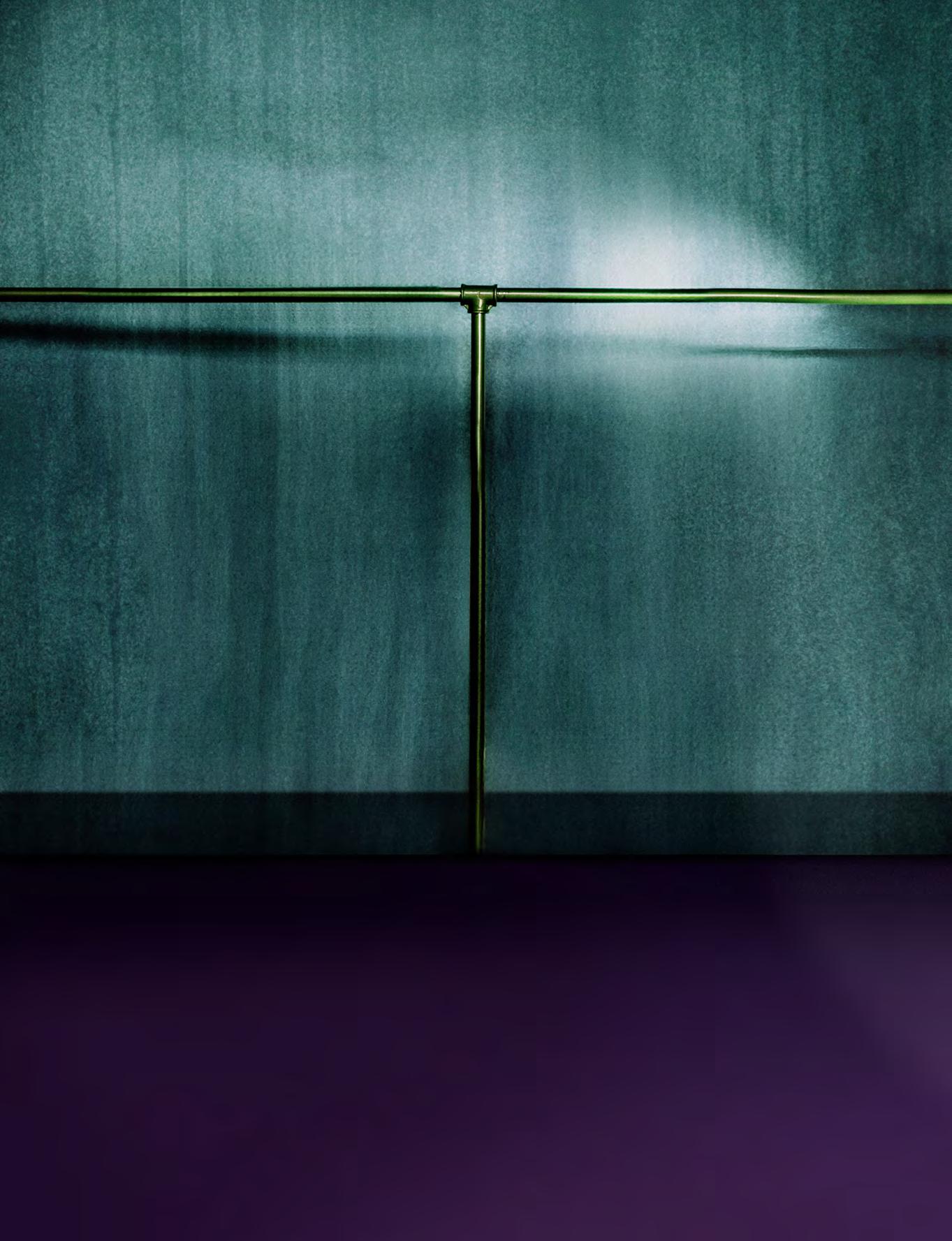
Marilyne Naaman outgrew every box she was placed in, blossoming from a promising young actress into a multi-faceted creative powerhouse.
photography LARA ZANKOUL styling NUJOUD OWEIS words MENNA

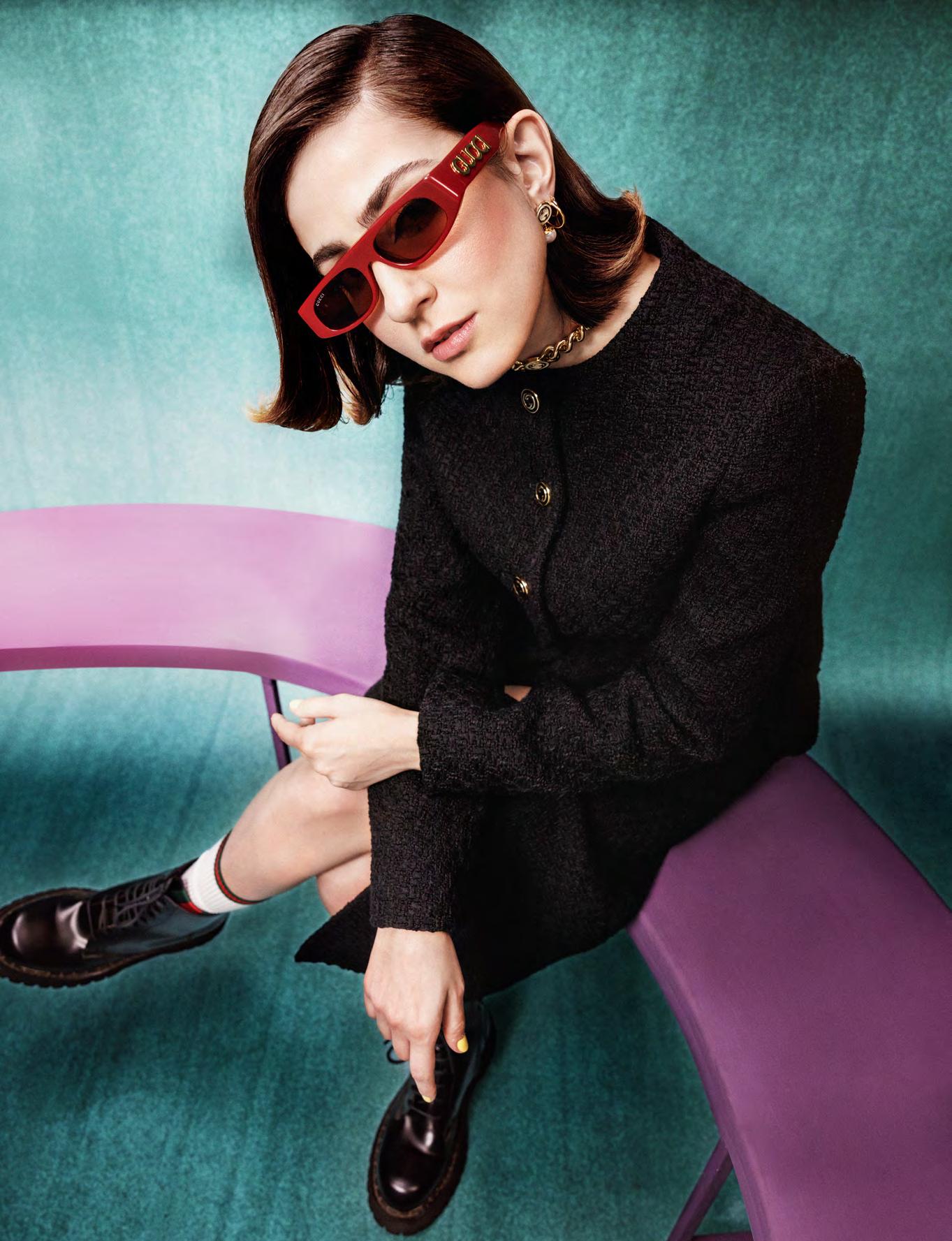
Beirut is a city of charming contrasts, forever imprinting itself upon those who wander its streets. “I find inspiration everywhere I look in Beirut,” muses Marilyne Naaman, actress, singer, screenwriter, and director, whose artistic spirit found its soul in the heart of this beguiling metropolis. “No two streets look the same in Beirut,” she says, “you can endlessly daydream and wander.” Beirut’s allure extends far beyond its charming facades, the city’s vibrant cultural history is imprinted on its Arabesque Ottoman buildings and the remnants of Roman and Byzantine structures that dot its landscape.
Yet, for Naaman, it is not the physical beauty that holds the true essence of Beirut, but its people. “What always motivates me to push forward is their spirit and determination,” she says. Despite the city’s ongoing struggles, she adds, “Beirut is always alive with energy, voices, aromas.” The city’s streets became her playground, its architecture a wellspring of creativity, and its people a constant source of motivation. Today, Naaman speaks of Beirut in warm reminiscences, and a voice brimming with admiration and gratitude for the place that shaped the artist she is today.
A luminous talent honed in the cultural heart of Beirut, Naaman outgrew every box she was placed in, blossoming from a promising young actress into a multi-faceted creative powerhouse. Born in 1998, Naaman seamlessly transitioned from celebrated teenage roles to portrayals of self-assured women with a depth and nuance that belies her years. Her expressive face, a canvas of endearing features, effortlessly adapts to diverse roles, mirroring her own artistic metamorphosis as she matures.
Her artistic roots were nurtured through her studies in audio-visual cinema at Notre-Dame University in Lebanon and the esteemed Filmakademie Baden-Württemberg in Stuttgart, Germany. This period of intense study was also one of deep introspection for Naaman, who recalls, “I was immersed fully in this world. Although my studies were rich in information and opened up a lot of doors and windows for me, looking back, I think this was more of a time of self-discovery for me, with myself. I was listening to myself and trying to unravel who I am as an artist. What are the tools I can use to express myself?” This journey of self-discovery led to an exploration of different creative outlets: “During this period, I was experimenting. And I found myself in more than one practice.”
“I approached the role of Farah with love and understood the responsibility and gravity of such a role. Farah actually brought so many emotions out of me.”
This period of experimentation and artistic exploration culminated in a diverse range of roles in local and international short films, as well as prominent series on Shahid and Netflix. She even shared the screen with the iconic French actress Nathalie Baye in the critically acclaimed feature film “La Nuit Du Verre D’eau” (Mother Valley), directed by the celebrated Lebanese-French filmmaker Carlos Chahine. Her performance garnered further accolades, solidifying her position as a rising star in the global film industry.
Naaman’s star ascended with her breakout role as Layla, a young woman navigating the societal constraints of 1950s Lebanon while awakening to her own desires. Her mesmerizing performance earned her the Best Actress award at the prestigious Amman International Film Festival. She further cemented her acting prowess as Farah, a gifted student and singer wrestling with an ultraconservative, patriarchal society in the wildly popular TV series “Aa Amal.” The series’ triumph propelled Naaman onto a musical path, leading to the release of her acclaimed album featuring songs penned by the talented Jad Obeid.
Reflecting on the challenging themes explored in the series, Naaman shared, “I know that some topics we explored with Farah may be considered sensitive, but I think it is important that the audio-visual world paint a real picture and not be disconnected from reality and talk about all the pressing issues. I approached the role of Farah with love and understood the responsibility and gravity of such a role. Farah actually brought so many emotions out of me.”
“I don’t care if the role is big or small. It matters that it speaks out to me. Once I commit to a role, I freeze my life completely and fully immerse myself in the world of that character.” For Naaman, the act of artistic expression is deeply intertwined with emotional release. “I’m a human being with emotions that I want to express,” she explains, “so I had to find the right tools.” Acting serves as the primary instrument in her creative arsenal. With an approach that borders on metamorphosis, she describes her process: “I fully inhabit the character, immersing myself in their traits, quirks, and worldview. I meticulously dissect every detail, ultimately embodying them completely.”




Naaman’s path to acting was a clear one, but her other talents, like her singing, needed some encouragement to blossom. She often sang and hummed, driven by pure instinct, as a way to express her emotions. People around her, drawn in by these snippets of song, urged her to share her voice more formally. Naaman, always attuned to her audience, listened and eventually embraced music alongside acting.
Surprisingly, she found music to be a more complete form of self-expression compared to acting. She described singing as an unfiltered, wholly personal creative act, where her voice, words, and melodies were entirely her own. Acting, in contrast, involved embodying someone else’s vision, making it less purely hers.
Her boundless creativity, while expansive and free-flowing, is underpinned by a pragmatic approach. “Everything I’ve ever done has been an answer to the question ‘What’s the next step?’” she explains. “I knew I wanted to be an actress, so I made a showreel. I auditioned for numerous castings, facing both rejection and acceptance. I created numerous short films. I took each step methodically. I believe this is the healthiest approach.” Unhurried yet determined, she possesses a clear vision and unwavering self-belief, embracing a steady, day-by-day ascent towards her goals. ■
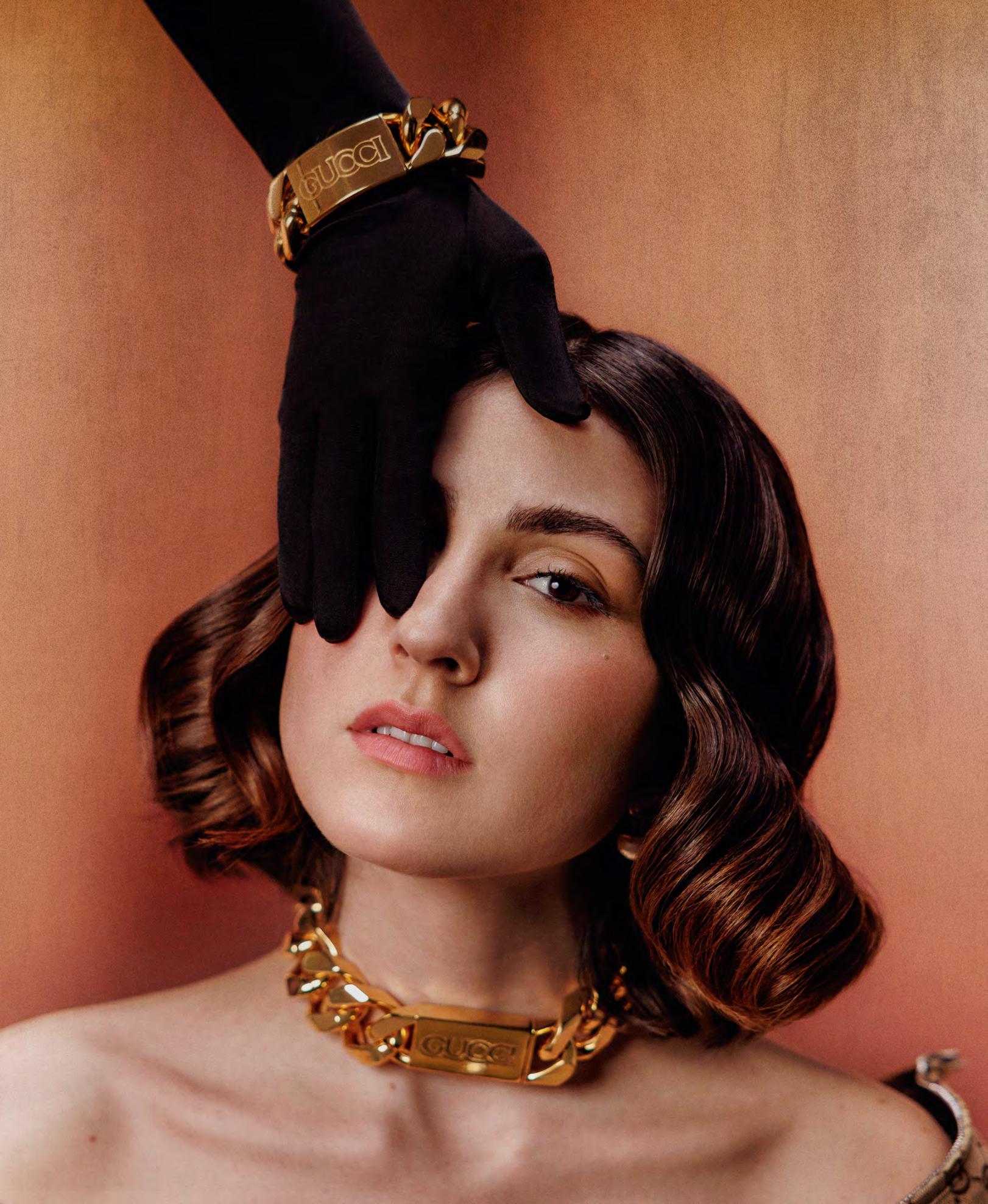

“I fully inhabit the character, immersing myself in their traits, quirks, and worldview. I meticulously dissect every detail, ultimately embodying them completely.”

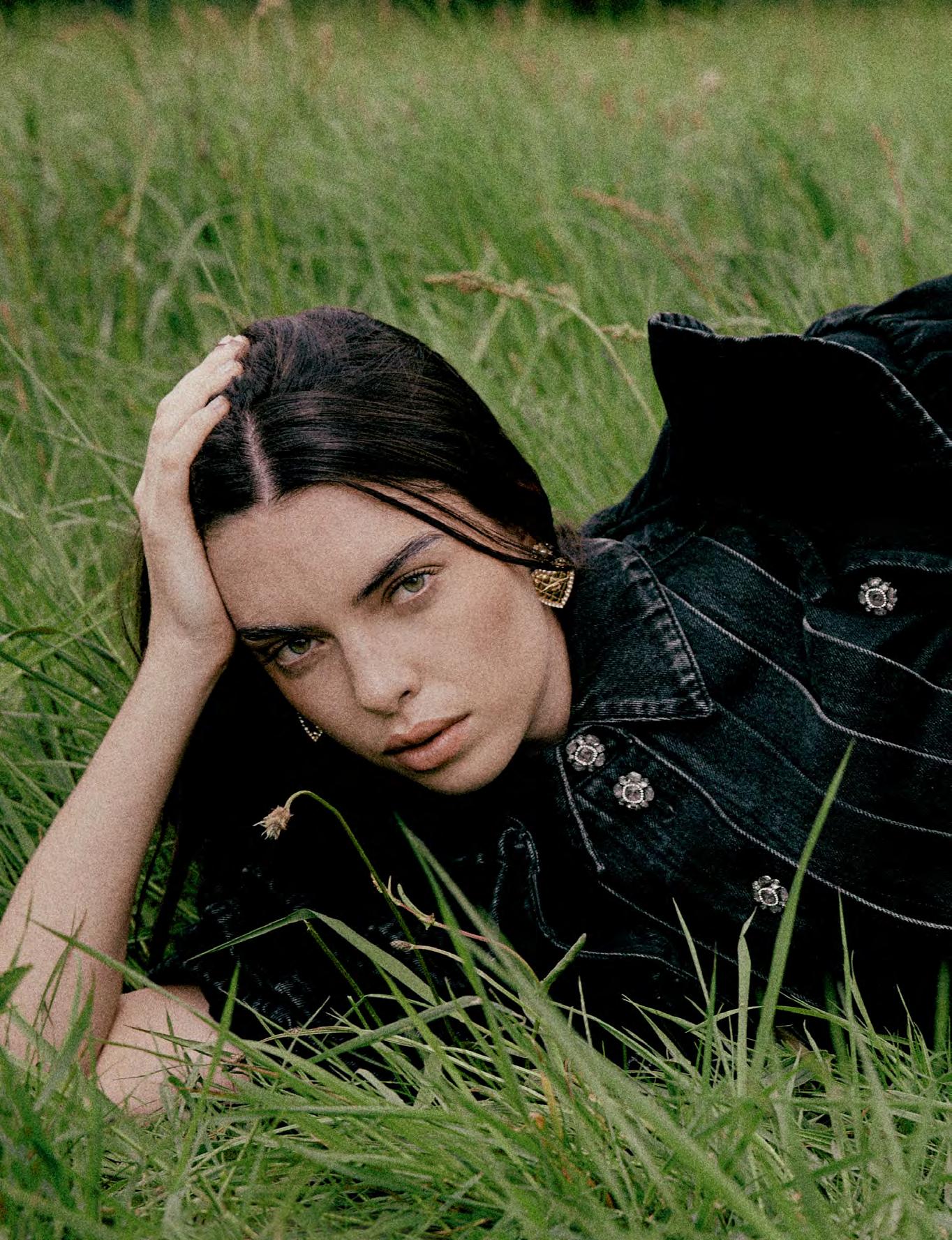

The 2023/24 Chanel Métiers d’art collection centres on the brand’s staples, inspired by Gabrielle Chanel’s use of the fabric with a modern twist, in these pages tweed and chains are mixed with contemporary elements such as denim and sequin velvet. Virginie Viard drew inspiration from Manchester’s music scene for a vibrant and youthful collection. Classic Chanel silhouettes with a pop twist, with playful details like vinyl records, are celebrated in the midst of British cultural elements, including the countryside, all while staying true to Chanel’s heritage.
photography CHARLOTTE ELLIS
styling SAIF HIDAYAH
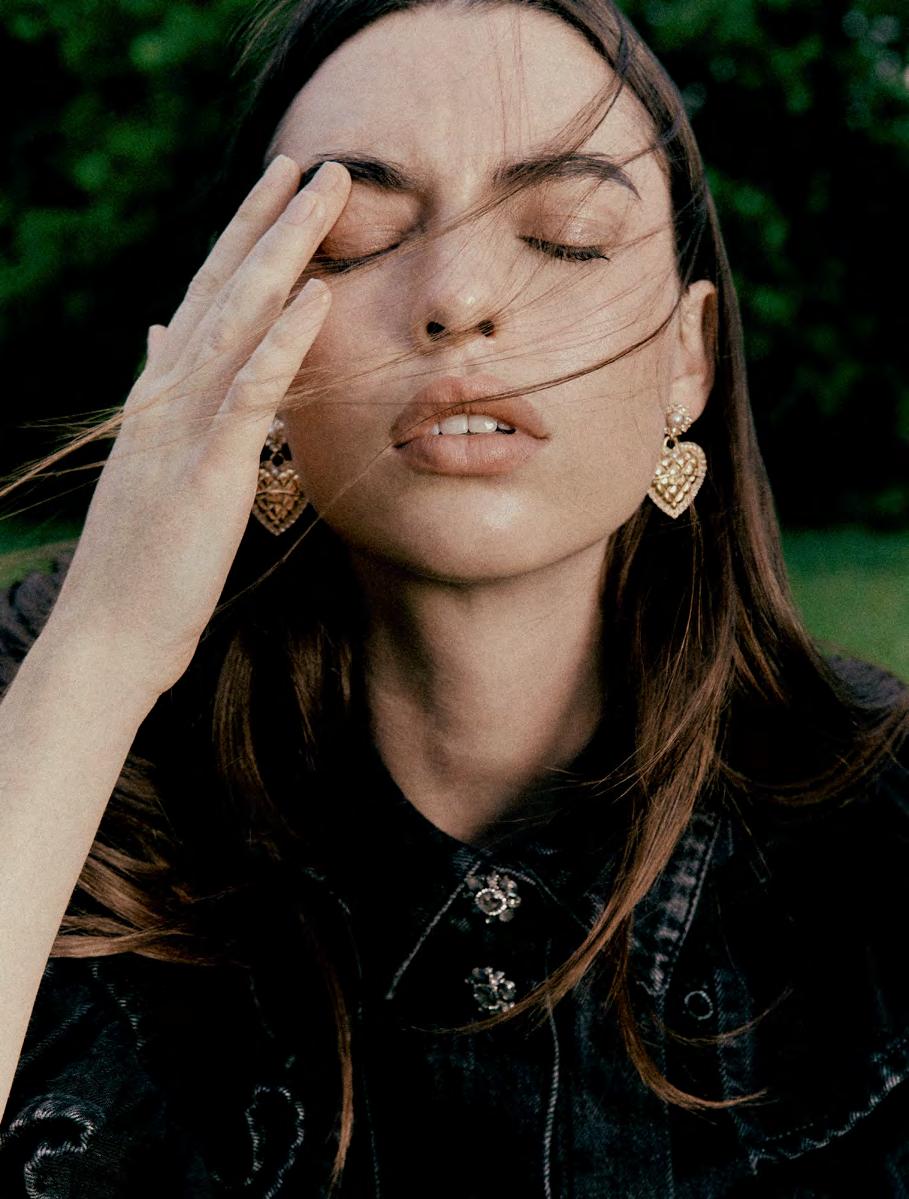
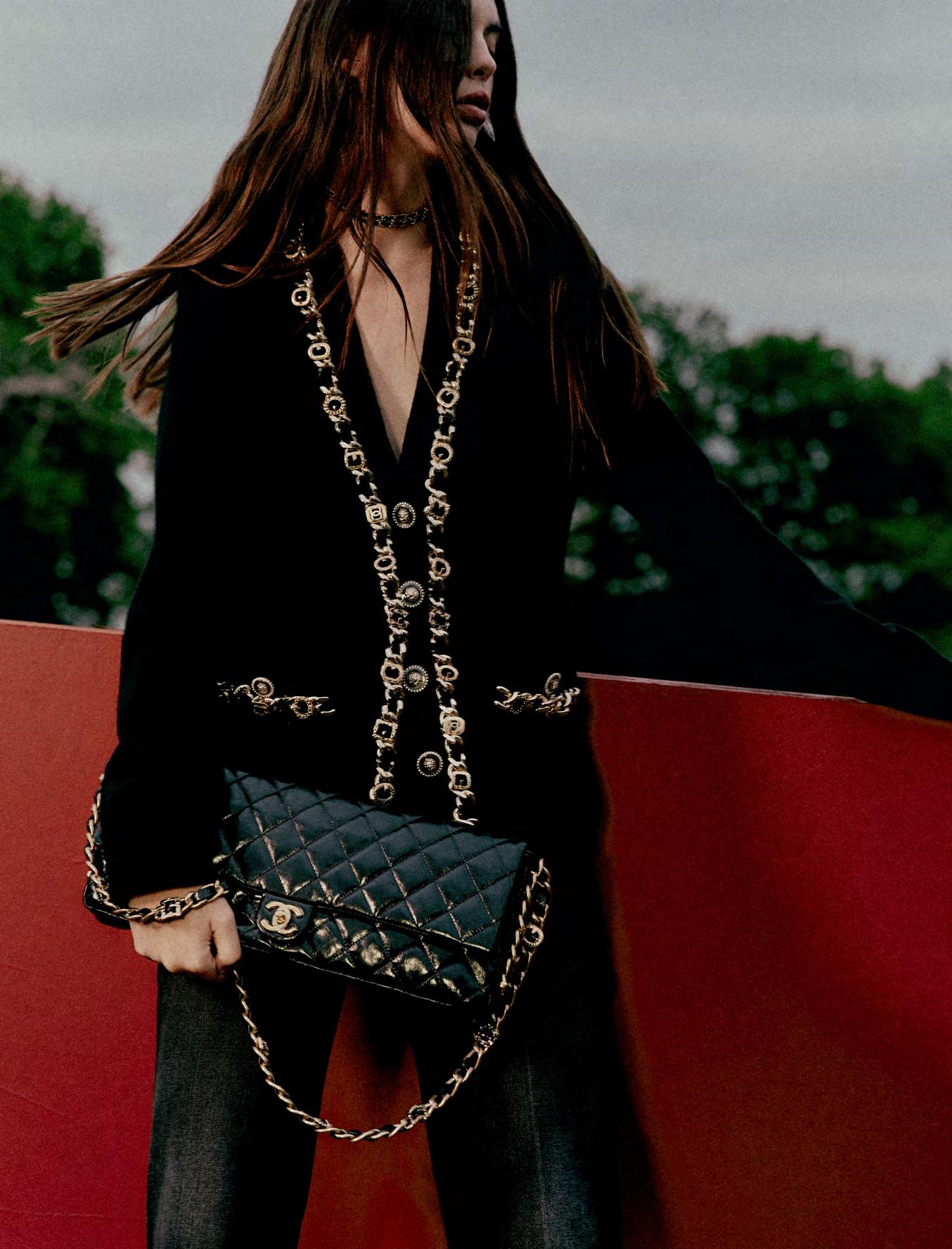


Jacket in iridescent lilac wool tweed with silk cuffs, embellished with jewelled buttons, CHANEL. Skirt in lilac fantasy wool tweed with a houndstooth-motif silk insert, CHANEL. Camellia brooch in lilac fantasy tweed, CHANEL. Mary-Janes in black leather, embellished with metal charms, CHANEL
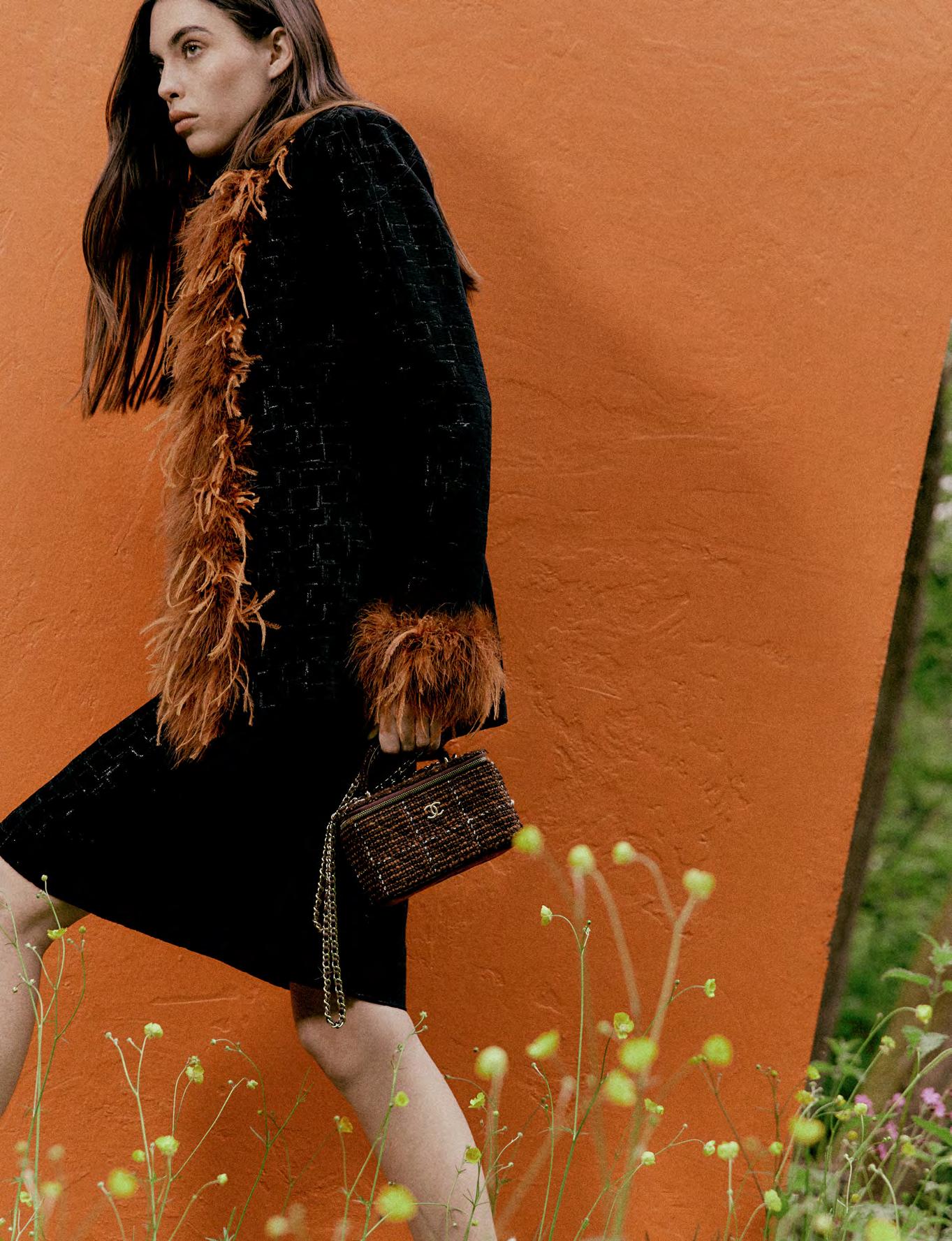

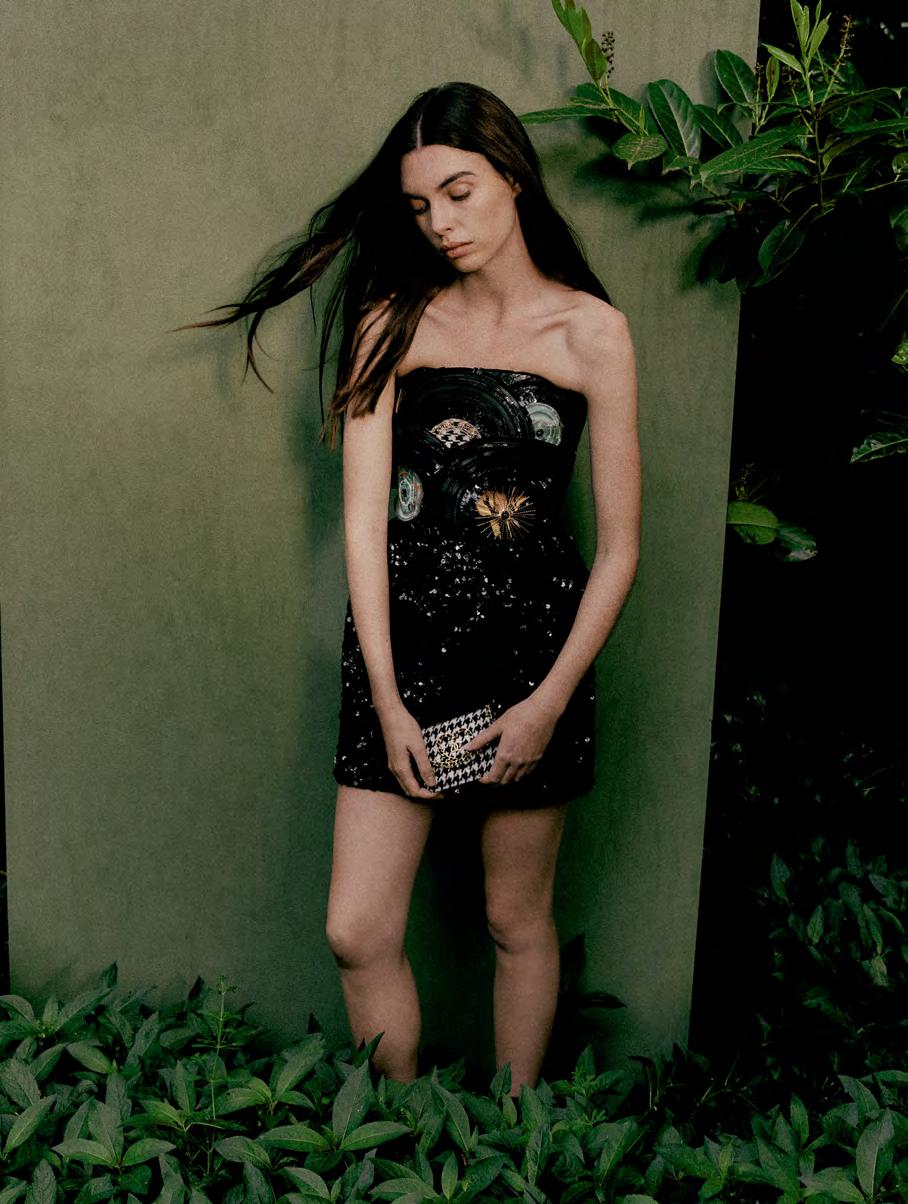

A look at fashion’s frantic heartbeat.
Step behind the velvet curtain into the intoxicating chaos of fashion’s hidden world with our latest editorial. Experience the palpable tension of last-minute fittings, the whirlwind of dress changes, and the raw energy that fuels the industry’s heart. Photographers dart like shadows, capturing fleeting moments that explode across social media, giving the world a glimpse of the backstage ballet in which the next fashion icons are born.
This editorial is a tribute to the unsung heroes—models, designers, stylists, and photographers—whose combined efforts create the spectacular shows that define fashion seasons. Feel the adrenaline, embrace the drama, and witness the birth of fashion history through their eyes. Discover new faces destined to become the industry’s future legends in this captivating behindthe-scenes journey.
photography BETH PRICE KING styling SAIF HIDAYAH

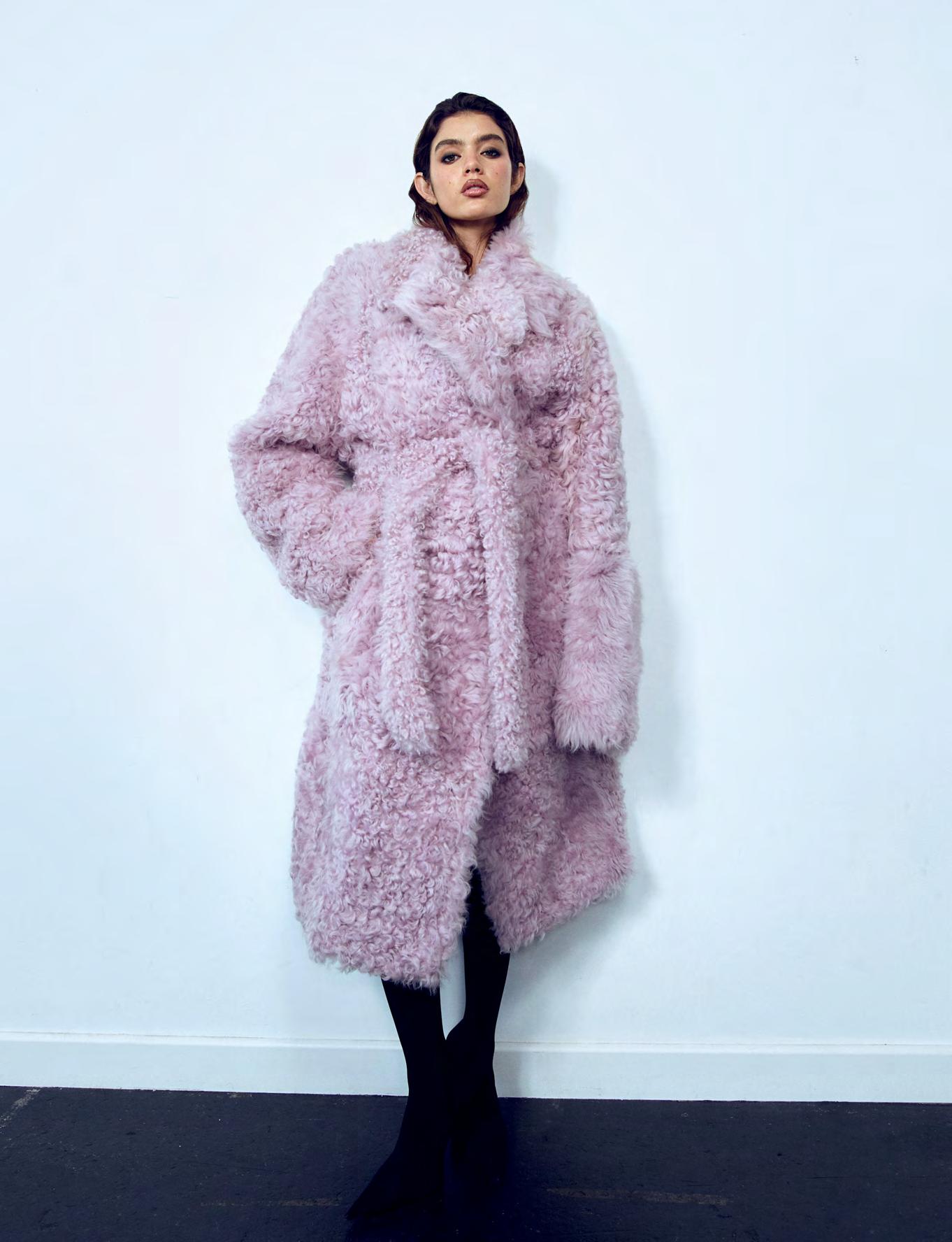
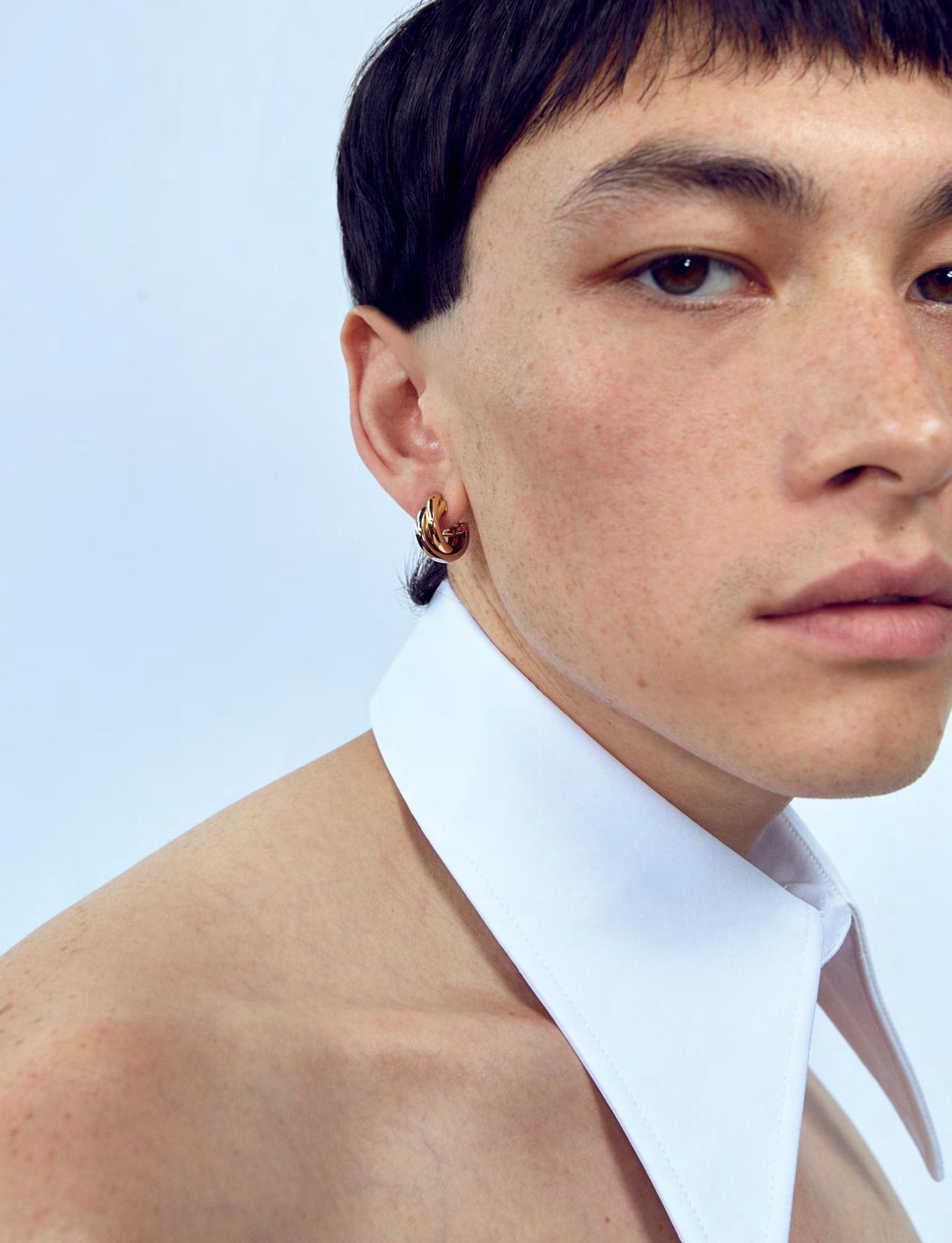






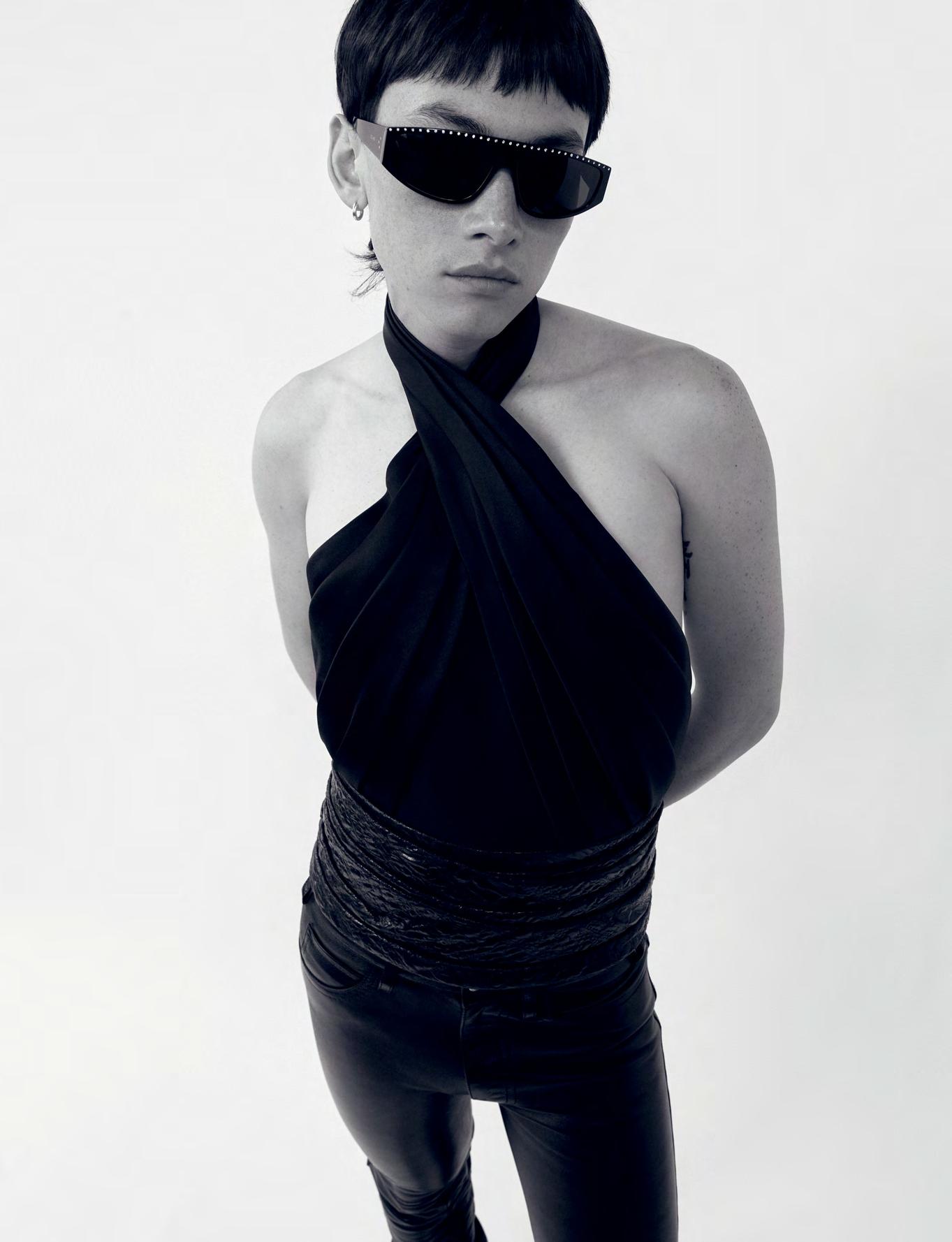



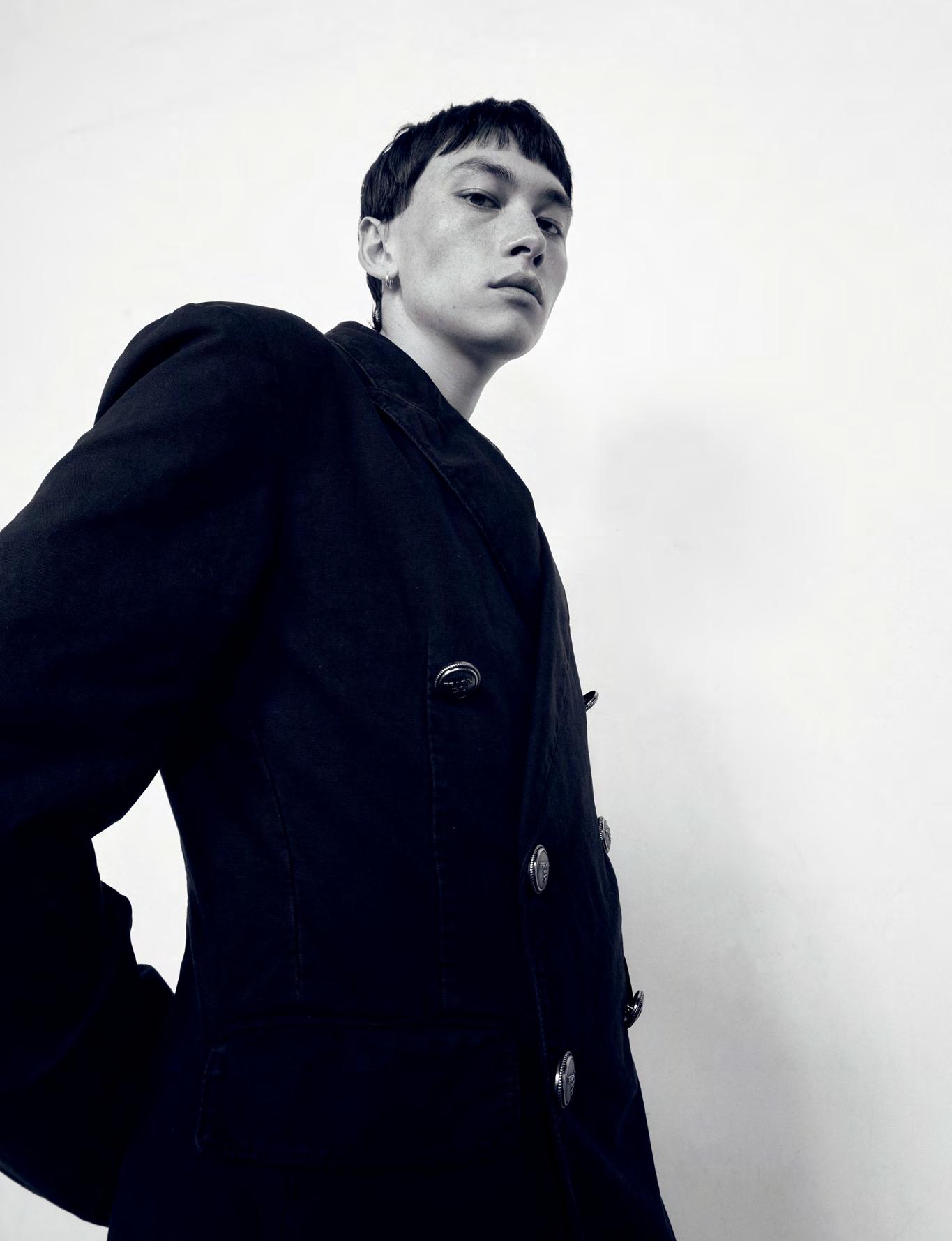


Voluminous garments take centre stage, evoking a haunting, ethereal quality. The stark contrast of the expansive, shadowy attire against minimalist, surreal backdrops mirrors the painting’s play with space and mysterious undertones. Each piece of clothing, heavy with drama, seems to float in a void. The garments, though silent, speak volumes, embodying a dialogue between art and mystery.
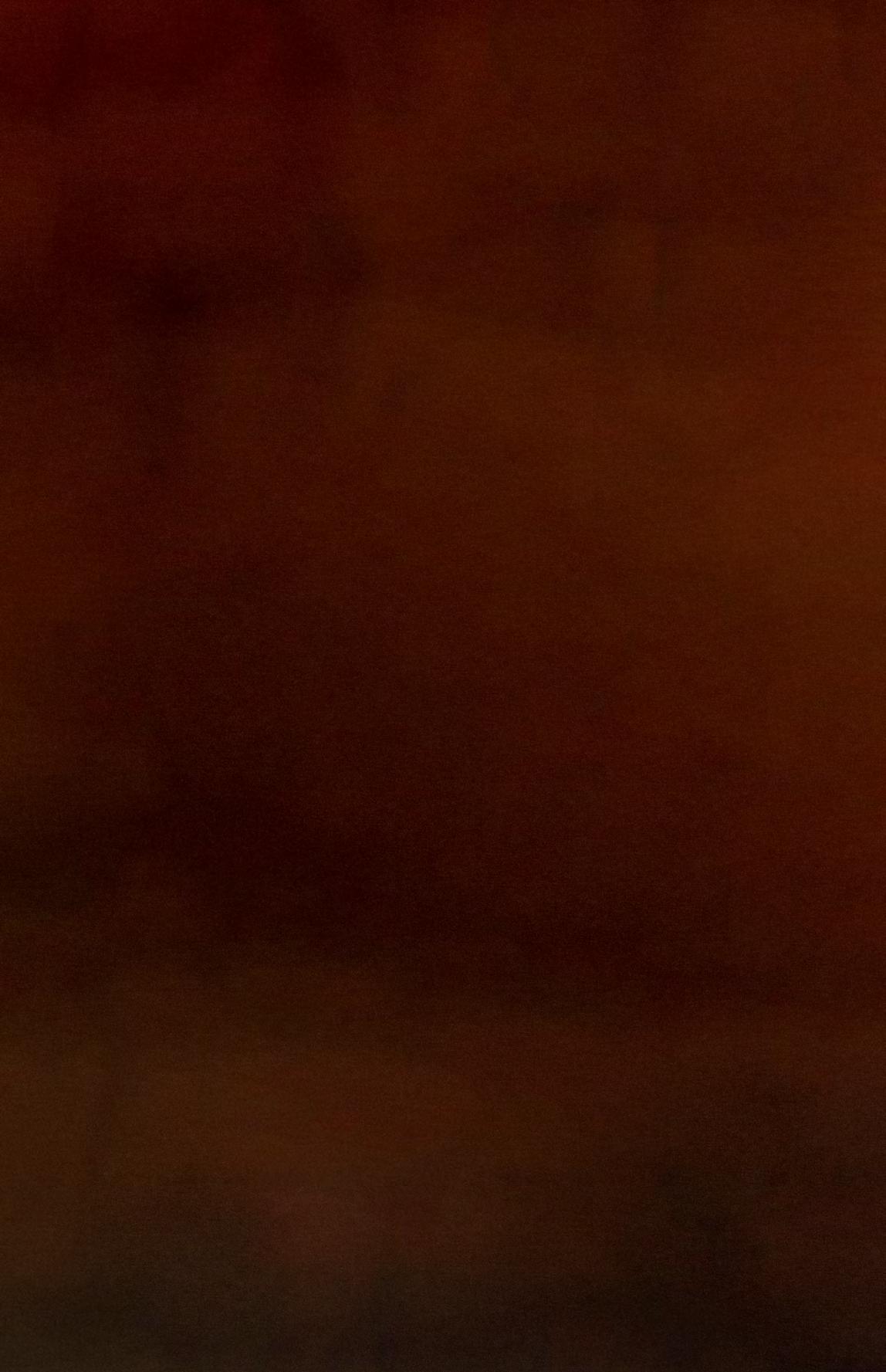
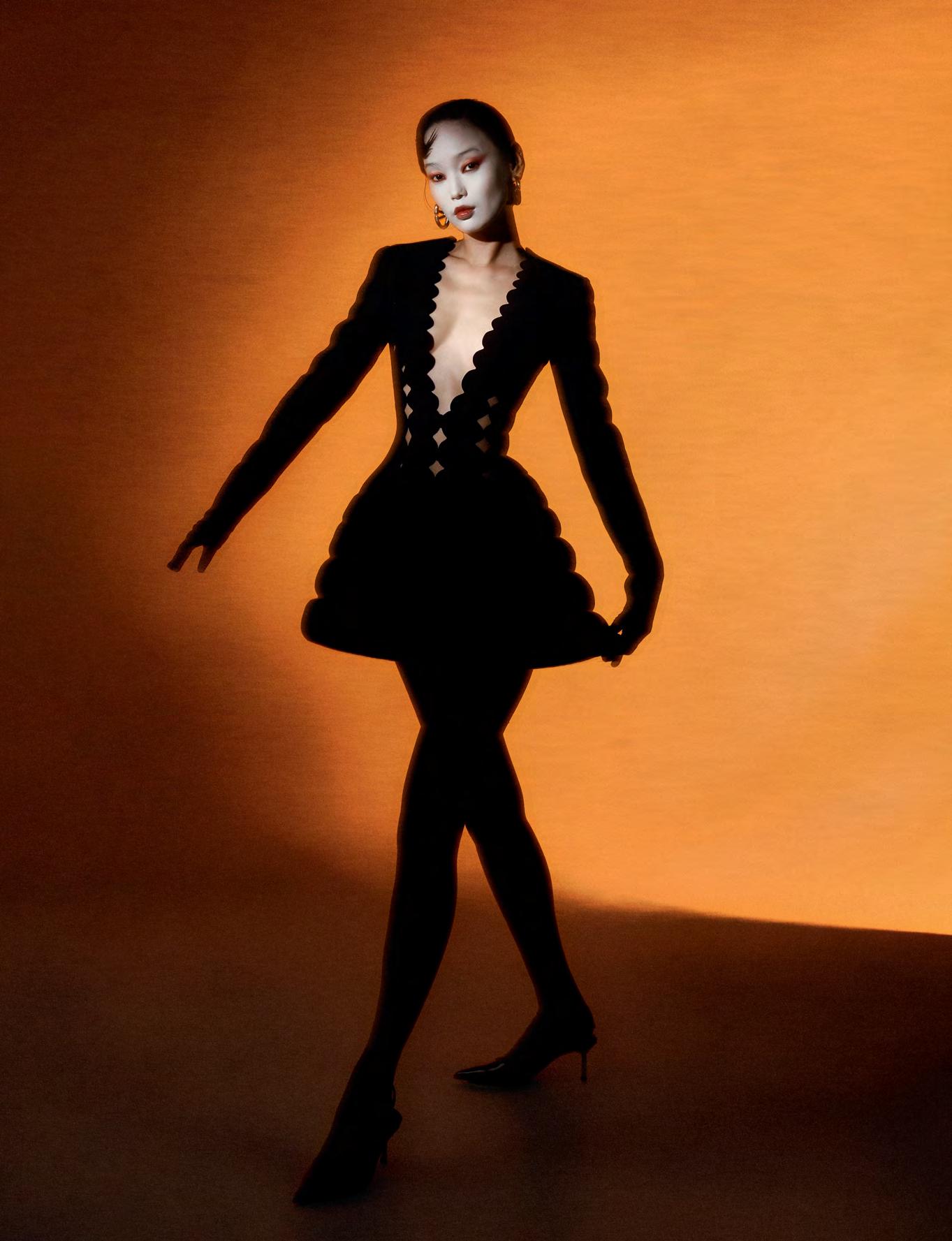

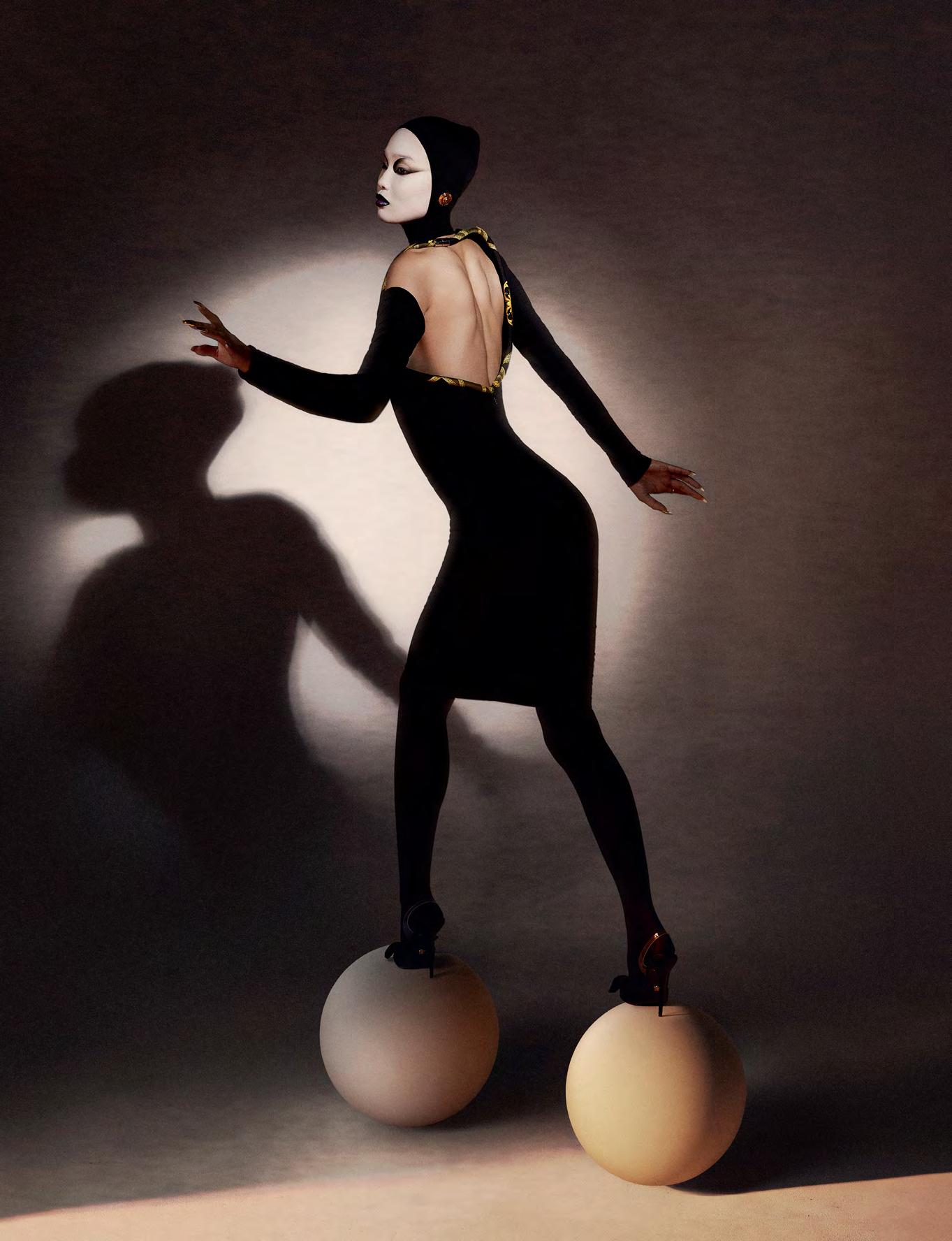

hairband, CHOCHENG.
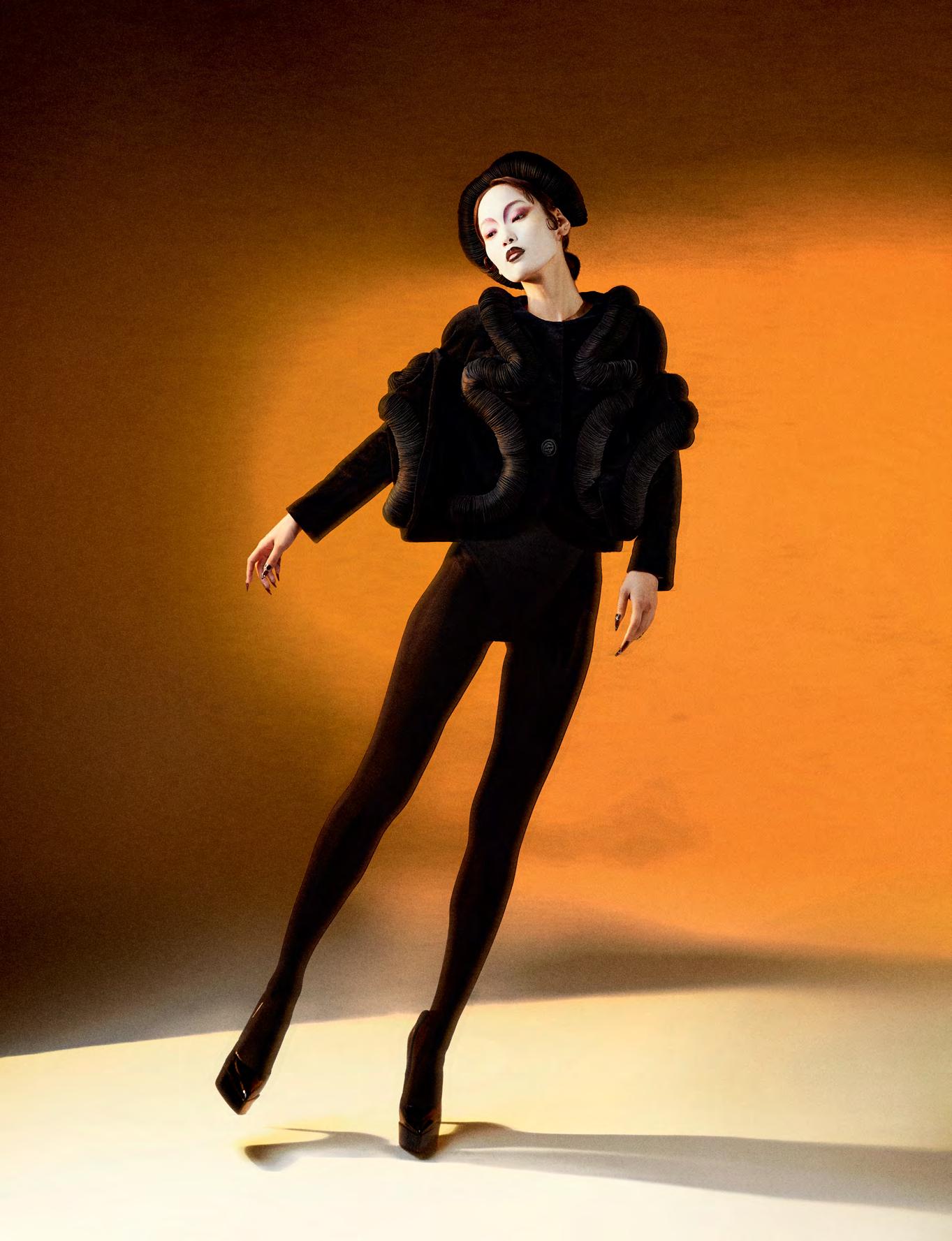
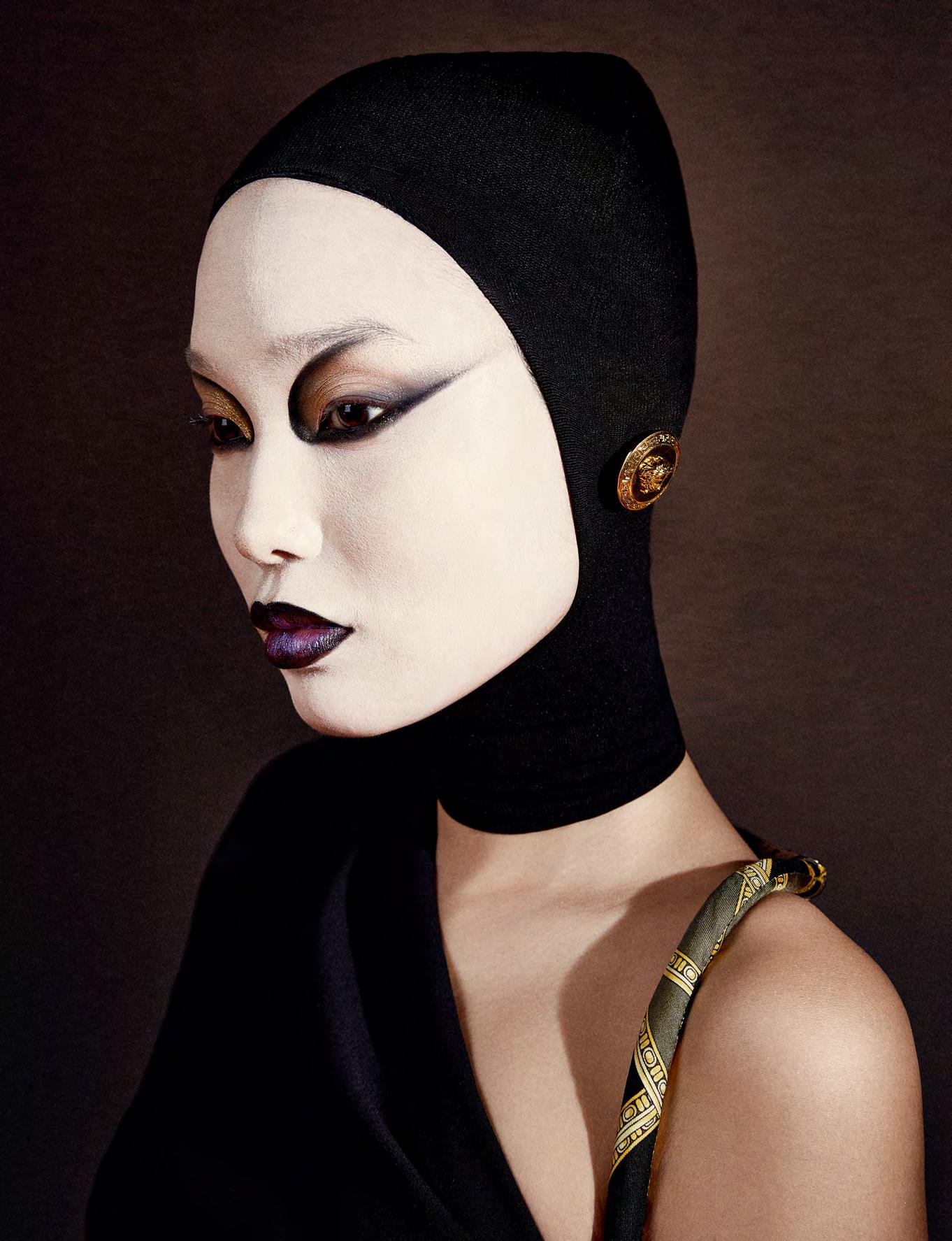
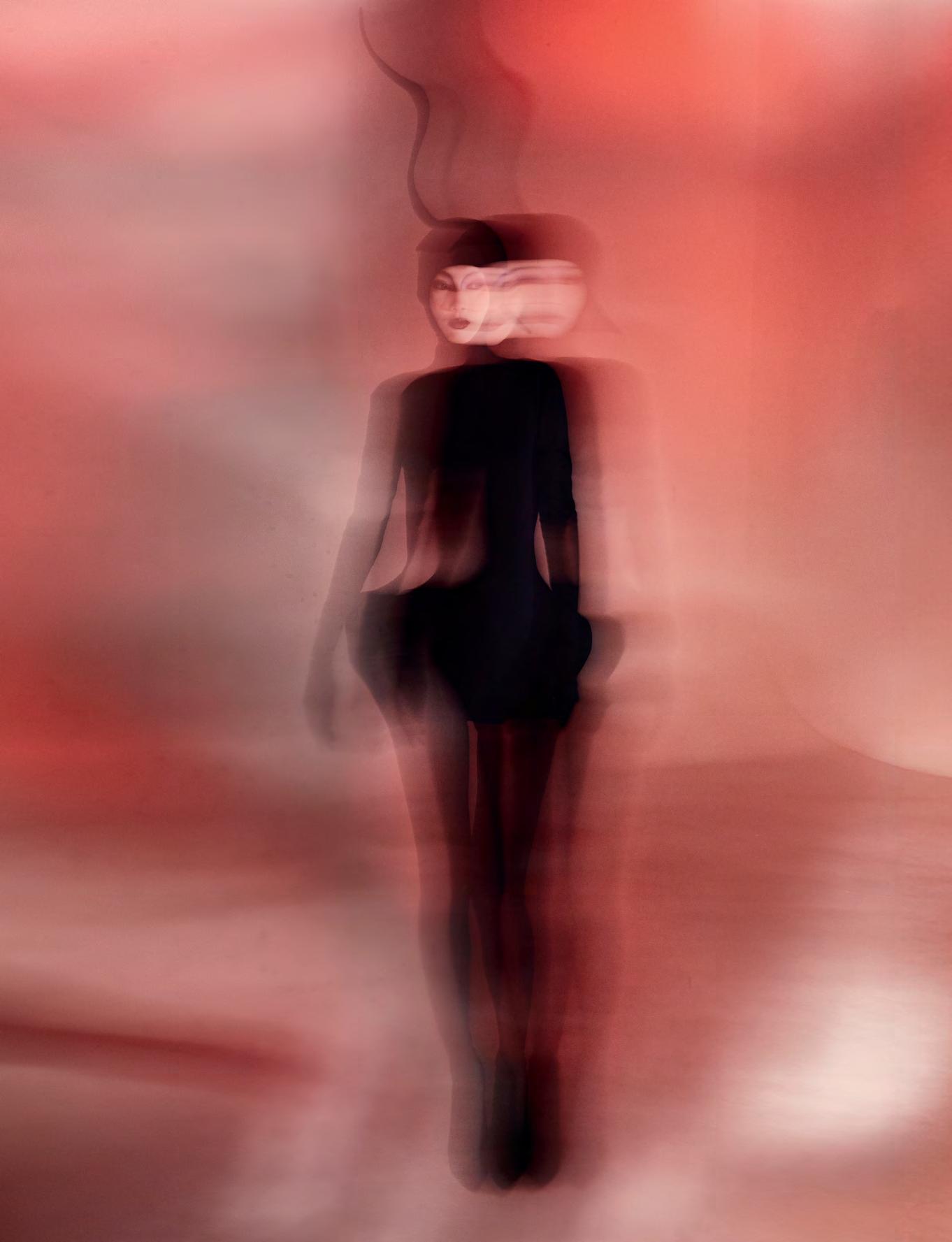
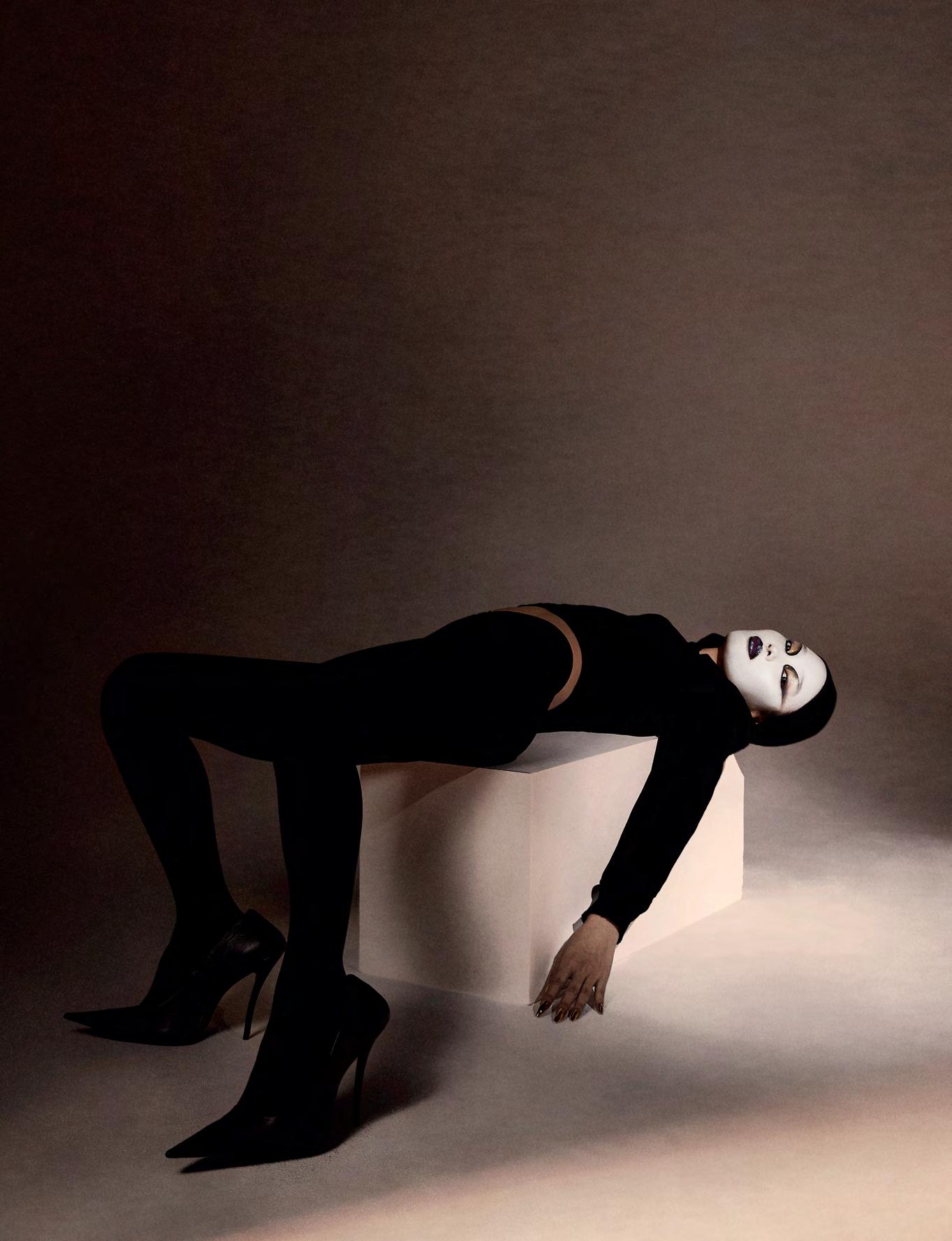





photography MATTHEW JACOBS MORGAN styling MATTHEW JACOBS MORGAN, RAY BUNDU
Matthew Jacobs Morgan is a multidisciplinary artist from London, whose practice spans visual arts, writing and music. His recent projects include Pompeii, which screened at Sundance London and was nominated for the Iris Prize, and his upcoming feature film Loco Parentis, with the BFI, and exec produced by Killer Films.
In this editorial, titled “REDEFINING POWER,” the London-born director takes us on a nostalgic trip, inspired by the 90’s era of supers, but reimagined with new faces and voices. In a world where models are so often to be seen and not heard, Jacobs Morgan attempts to empower them to be more than just a face.




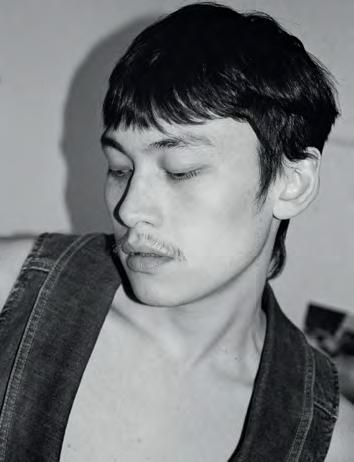





CHANEL’s 2023/24
Métiers d’art collection: A very English affair.
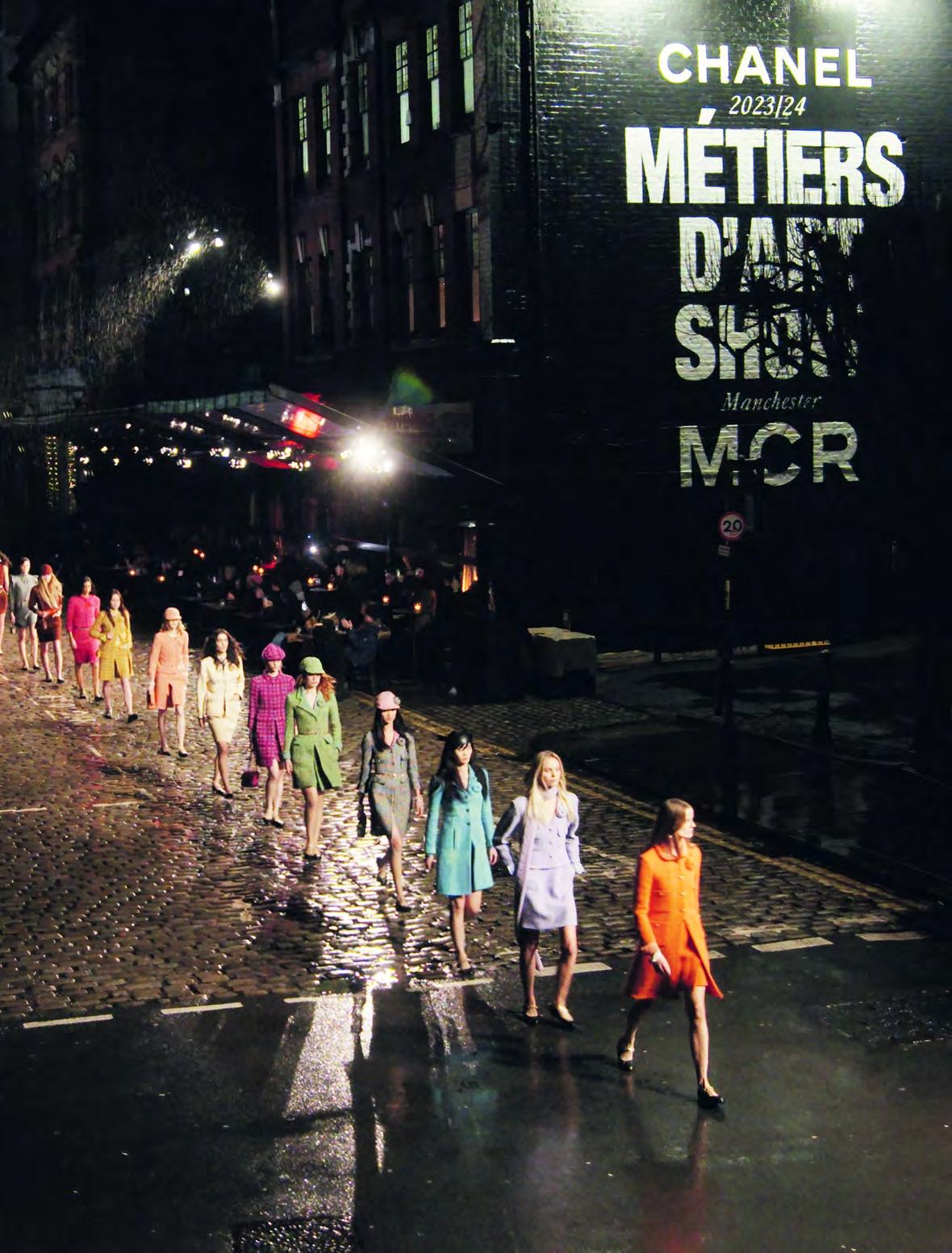
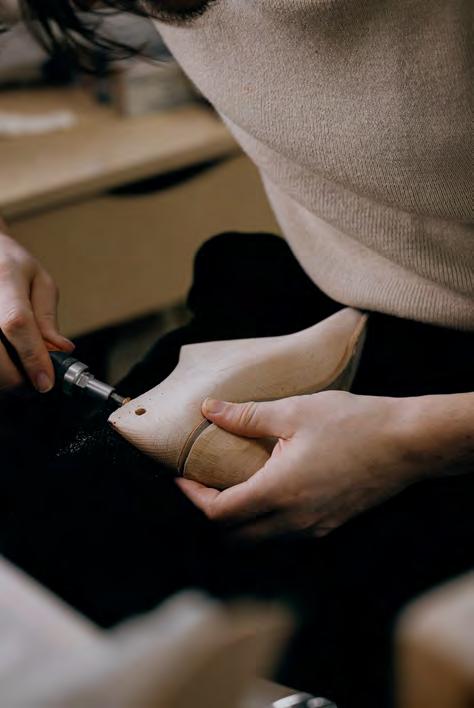

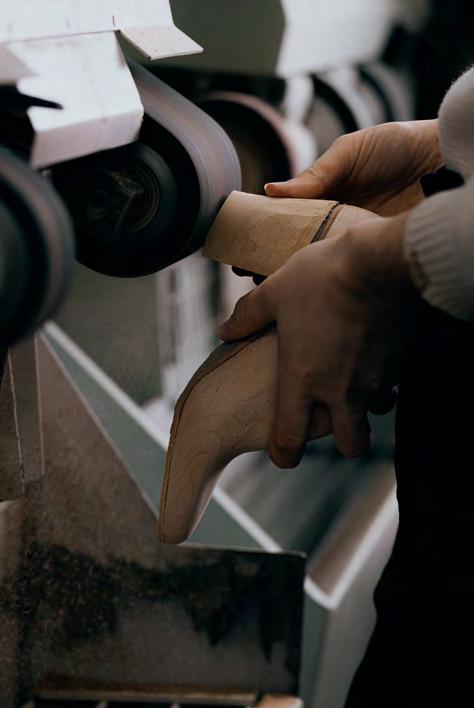

Inspired by Manchester’s vibrant cultural scene, CHANEL’s 2023/24 Métiers d’art collection celebrates a harmonious blend of tradition and modernity. With Virginie Viard at the helm, this collection infuses classic CHANEL elements with a contemporary twist, creating an unforgettable sartorial experience that resonates with the youthful, fashion-forward audience of today.
“Manchester is the city of music. It incites creation,” declares Viard, Artistic Director of CHANEL. The city’s profound connection to music and culture serves as the backbone of the 2023/24 Métiers d’art collection, which debuted on the atmospheric Thomas Street in the North of Manchester. As dusk settled over the city, the collection came to life, enveloping the audience in a symphony of colours, textures, and emotions.
Central to this collection is tweed, a fabric synonymous with CHANEL’s heritage. Viard’s vision, however, diverges from the traditional interpretations of this classic material. Inspired by Gabrielle “Coco” Chanel’s own innovative spirit, Viard introduces a vibrant, pop aesthetic to tweed. “I thought a lot about Gabrielle Chanel but I didn’t want to recreate Coco’s look, when she was wearing the Duke of Westminster’s jackets. I took my cue from the Coco who brought colour to her tweeds,” she explains.
The result is a dazzling array of suits, bags, and accessories in a kaleidoscope of colours: salmon pink, pumpkin, apple green, mustard, sky blue, red, and rust. This palette not only pays homage to the sixties but also imbues the collection with a youthful exuberance that is quintessentially CHANEL.
The CHANEL 2023/24 Métiers d’art collection is a tribute to the unparalleled craftsmanship of the House’s artisans. From the intricate embroidery and feather work to the jewelled buttons and hats crafted by the Métiers d’art residents at le19M, every detail is meticulously executed.
This dedication to savoir-faire is particularly evident in the collection’s signature Mary-Jane shoes. Reinterpreted by the legendary Massaro shoemaker, these two-tone Mary-Janes in kidskin and grosgrain are a modern take on an iconic CHANEL design first created by Raymond Massaro in 1957. The shape elongates the leg, while making the foot seem smaller. Available in both flat and heeled versions, these shoes perfectly complement the collection’s playful yet sophisticated vibe.
Viard’s vision for this collection is deeply rooted in British culture, drawing inspiration from various iconic elements of Great Britain. This is reflected in the diverse range of garments, including wraparound skirts, miniskirts with godets, Bermuda shorts, and coat-dresses, all featured in luxurious tweeds and knitwear from Shetland. The cuts are fitted, with skirt waists worn slightly low on the hips, exuding a casual yet chic elegance.
In yet more nods to British tradition, the collection incorporates whimsical touches such as teapots, vinyl records, and floral motifs, adding a playful dimension to the sophisticated designs. This juxtaposition of the classic and the contemporary encapsulates the essence of CHANEL’s enduring love affair with Great Britain, a relationship that has flourished for over a century.
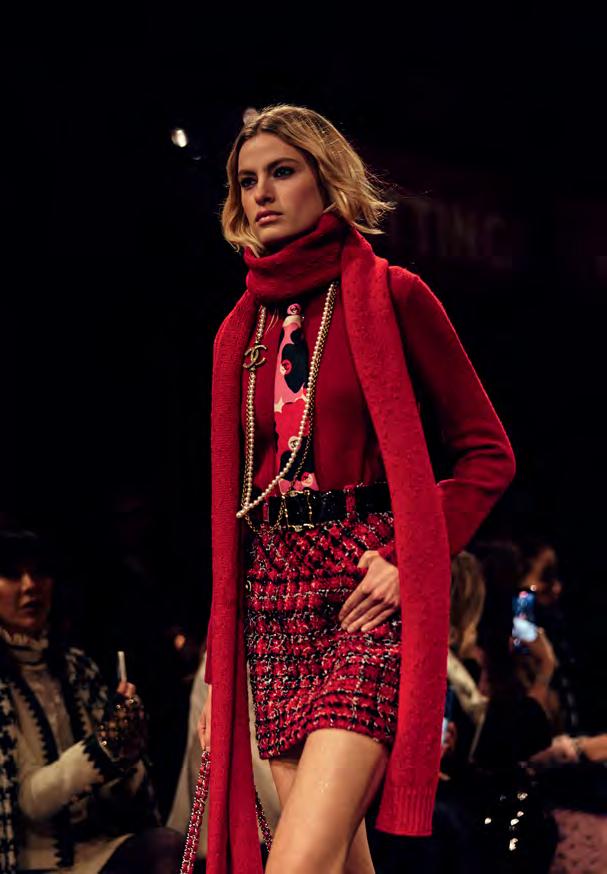
Virginie Viard’s approach to the 2023/24 Métiers d’art collection is both poetic and emotional. She focuses on the feelings evoked by the garments, rather than adhering strictly to the aesthetic. This emphasis on emotional resonance is beautifully captured in the collection’s fluid lines and harmonious colour schemes, which create a sense of continuity and coherence.
One of the standout features of this collection is the way Viard marries simplicity with precision. The chains at the bottom of the jackets, the contrasting inner fabrics, and the multiple topstitched panels not only enhance the functionality of the garments but also celebrate Gabrielle Chanel’s mastery of tailoring.
The CHANEL 2023/24 Métiers d’art collection is a vibrant celebration of youth, creativity, and craftsmanship. By blending traditional elements with modern influences, Virginie Viard has crafted a collection that speaks to the dynamic spirit of today. As the sun sets over Manchester, it’s easy to imagine the city’s streets echoing with the sounds of applause and admiration, a fitting tribute to a collection that truly embodies the timeless allure of CHANEL. ■
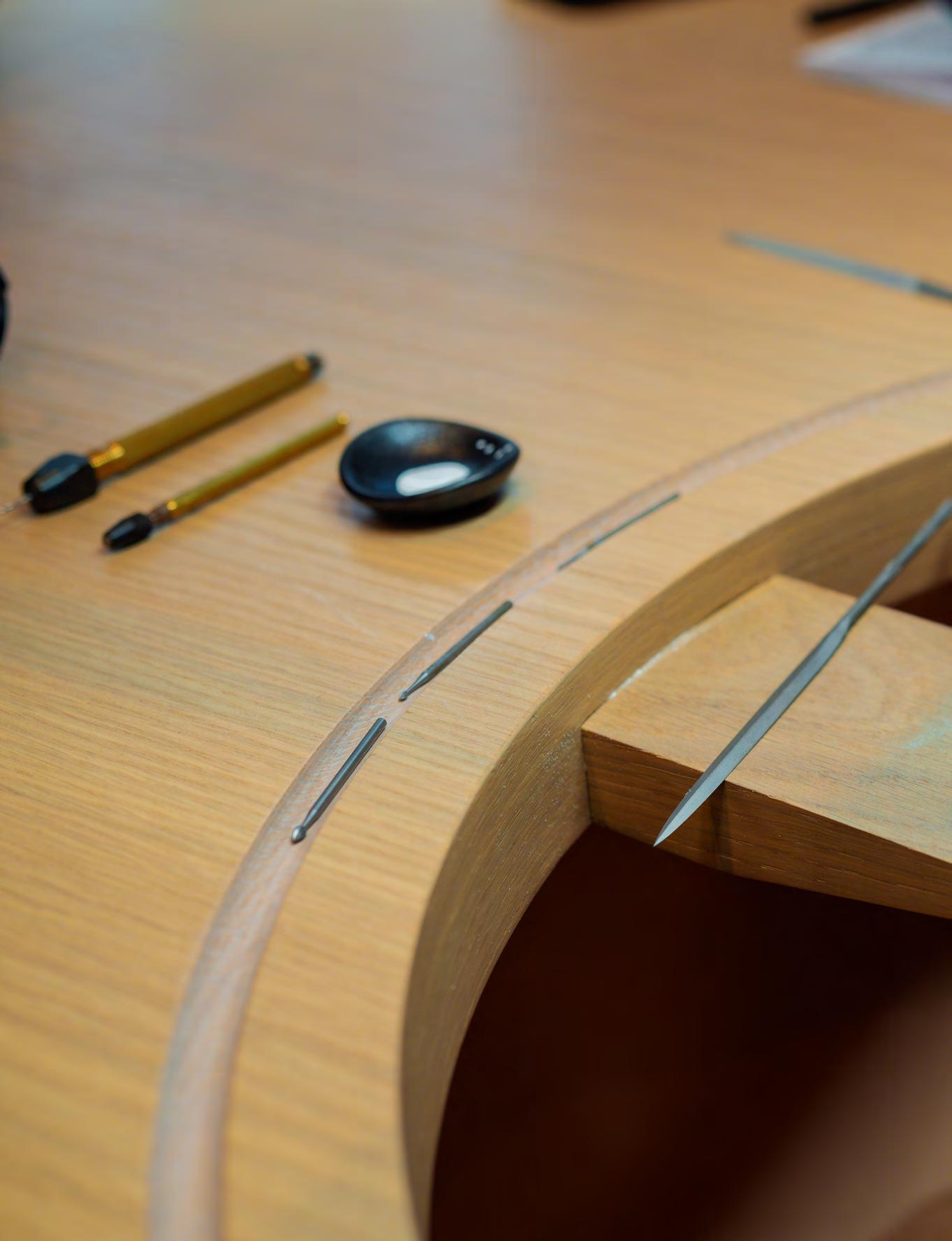
Discover the world of fine jewellery at the L’ECOLE School of Jewelry Arts’ first permanent campus in the Middle East.
words LOUIS PARKS


In a landmark moment for the world of jewellery arts, Her Highness Sheikha Latifa bint Mohammed bin Rashid Al Maktoum recently inaugurated the first permanent campus of L’ÉCOLE Middle East in Dubai. This prestigious institution, supported by Van Cleef & Arpels, promises to transform Dubai into a hub of creativity and craftsmanship, offering unique educational opportunities to students across the region and beyond.
Her Highness Sheikha Latifa bint Mohammed bin Rashid Al Maktoum, Chairperson of the Dubai Culture and Arts Authority, marked the official opening of L’ÉCOLE Middle East’s new campus. Located in the dynamic Dubai Design District (d3), this milestone is set to enhance Dubai’s growing reputation as a global centre for design and creativity. “The establishment of L’ÉCOLE’s first headquarters in the Middle East in Dubai underscores the city’s pivotal role in the creative industries and its commitment to pushing the boundaries of innovation,” said Her Highness.
L’ÉCOLE Middle East is at once both an educational institution and a cultural beacon. With its 13 comprehensive public courses and a first regional exhibition, ‘Gold and Treasures: 3000 Years of Chinese Ornaments,’ L’ÉCOLE is poised to engage a diverse audience. Running until August 10, the exhibition features 100 masterpieces from the Mengdiexuan Collection, showcasing the rich heritage of goldsmithing in China over three millennia. This exhibition, along with the courses, offers an unparalleled exploration into the art, history, and craftsmanship of jewellery design.
The courses at L’ÉCOLE Middle East will be tightly crafted, providing students with a unique opportunity to delve into the intricate world of fine jewellery. Guided by expert instructors and industry professionals, these courses cover a wide range of topics, including jewellery design’s art, history, and intricacies along with workshops for young people.
Established in 2012 with the support of Van Cleef & Arpels, L’ÉCOLE, School of Jewelry Arts aims to introduce the public to the multifaceted world of jewellery culture. Open to everyone from complete beginners to seasoned collectors, L’ÉCOLE offers courses that are hands-on and interactive and students can experiment with tools and techniques under the guidance of art historians, gemologists, and master jewellers.
Beyond its permanent campuses in Paris, Hong Kong, Shanghai, and now Dubai, L’ÉCOLE regularly travels the globe, bringing exhibitions, talks, and courses to international destinations. This global reach is intended to contribute to the promotion and visibility of jewellery culture worldwide.
The inauguration of L’ÉCOLE Middle East in Dubai is a significant step forward for the city’s cultural and creative landscape. With its rich programs and international exhibitions, L’ÉCOLE is set to inspire a new generation of jewellery enthusiasts and professionals in the Middle East. By fostering creativity and craftsmanship, L’ÉCOLE Middle East is not only preserving the heritage of jewellery arts, but also paving the way for future innovations in the field. ■
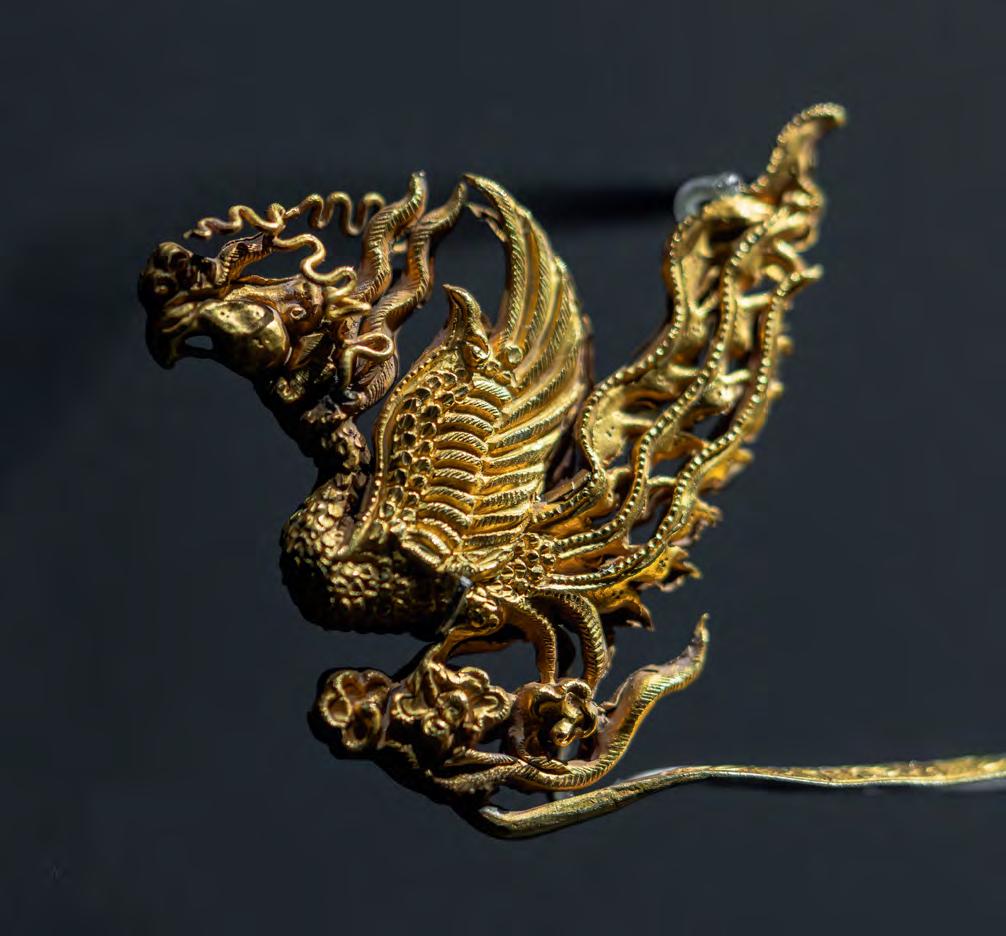
“The establishment of L’ÉCOLE’s first headquarters in the Middle East in Dubai underscores the city’s pivotal role in the creative industries and its commitment to pushing the boundaries of innovation.”
Her Highness Sheikha Latifa bint Mohammed bin Rashid Al Maktoum
the ancient art of
by
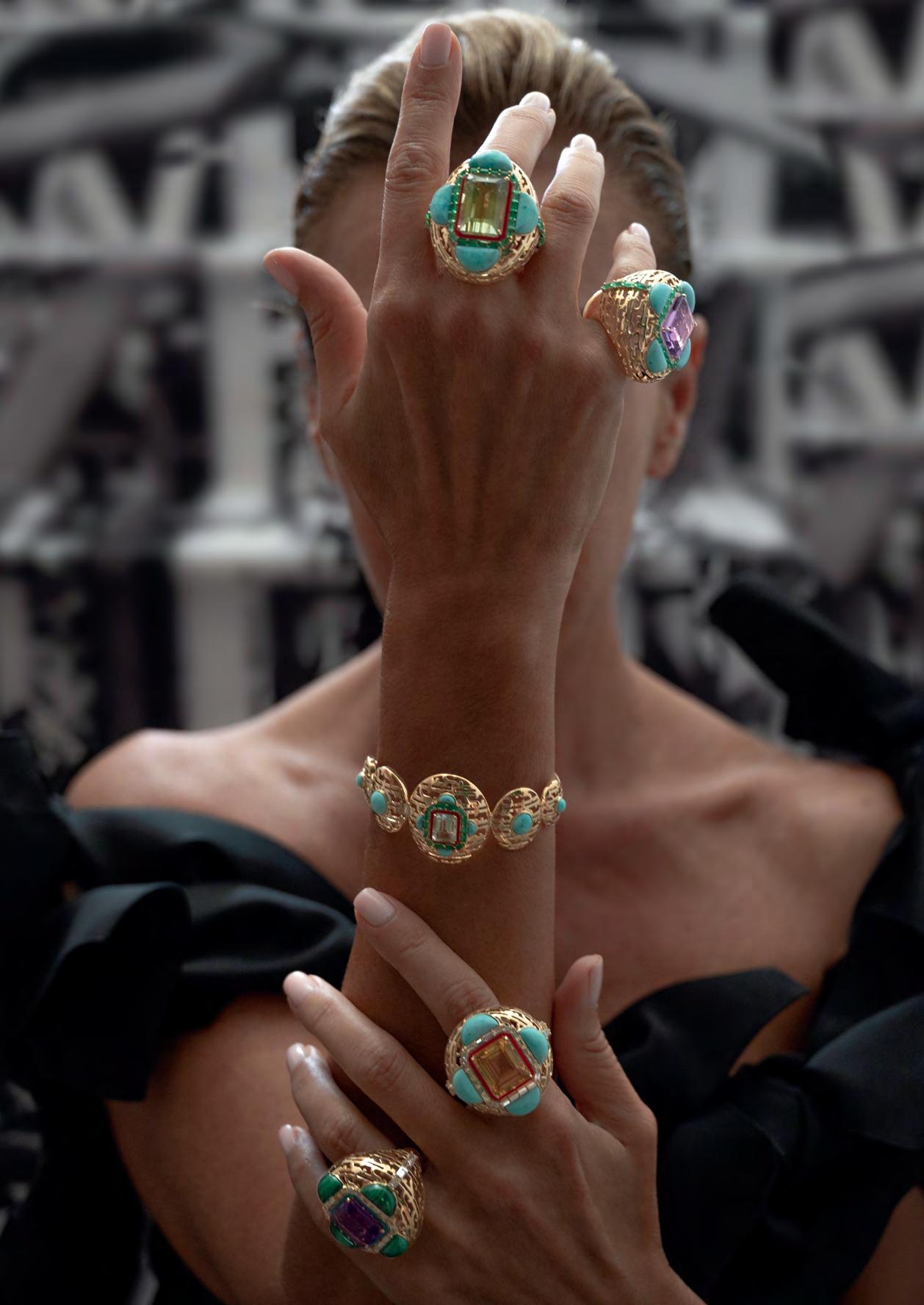

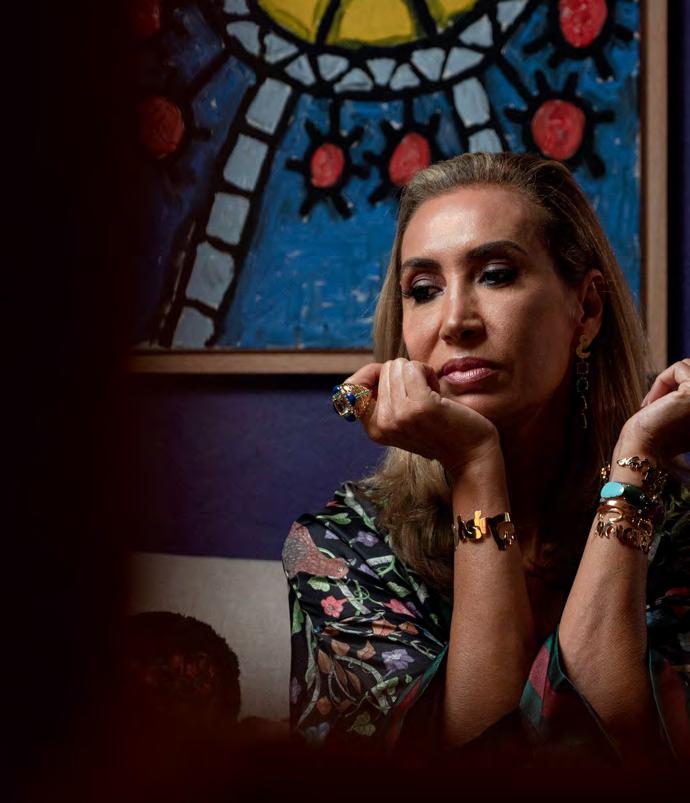
How do aspects of your personality influence the designs you create?
My outgoing and extroverted personality plays a significant role in the boldness of my design. I’m not one to shy away from making a statement, both in conversation and through my jewellery. I want my pieces to spark dialogue and capture attention, much like my personality does.
What led you to choose jewellery as your primary medium for self-expression?
Artistic photography was my primary medium of self-expression, and jewellery came next as the ultimate form of wearable self-expression. It’s like adorning yourself with a bold proclamation of who you are as an Arab. I love that it’s not only visually striking, but also deeply personal. Choosing jewellery as my primary medium was a natural fit for someone who values making statements with their appearance and showing their identity.
What is your earliest memory involving typography and calligraphy, and how did you decide to make them the main elements within your designs?
Arabic calligraphy is a beautiful, simple, and elegant form of art. I was always fascinated by vintage Arabic film posters. If I want to trace my earliest memory, or its use, it would be when I studied graphic design in university. As I grew older, I realised its potential to be more than just a form of writing—it could be elevated into an art form. This realisation led me to incorporate typography and calligraphy into my designs, making them central elements of my creative expression.
Your designs often blend traditional calligraphy with vibrant, unconventional elements. Could you elaborate on the creative process behind this unique approach?
The process behind blending traditional calligraphy with these elements is a journey of experimentation and innovation. I draw inspiration from both my Middle Eastern heritage and contemporary influences, seeking ways to bridge the gap between tradition and modernity. It’s about infusing timeless elegance with a fresh, dynamic energy, creating pieces that resonate with a diverse audience.
How has your Middle Eastern heritage and artistic perspective influenced the design process for Guerlain’s recent limited edition perfume bottles encrusted with 24-karat gold crystals?
These collaborations allow me to showcase the rich cultural tapestry of the region while infusing it with a touch of luxury and sophistication. It’s about celebrating heritage in a way that transcends borders and resonates with a global audience.
If you could collaborate on a new project, what would be your dream brand to collaborate with?
My dream collaboration would be with a brand that shares my passion for cultural fusion and artistic innovation. I envision partnering with a luxury fashion house or a renowned art institution to create something truly groundbreaking—a seamless blend of heritage and contemporary aesthetics that captivates the world.
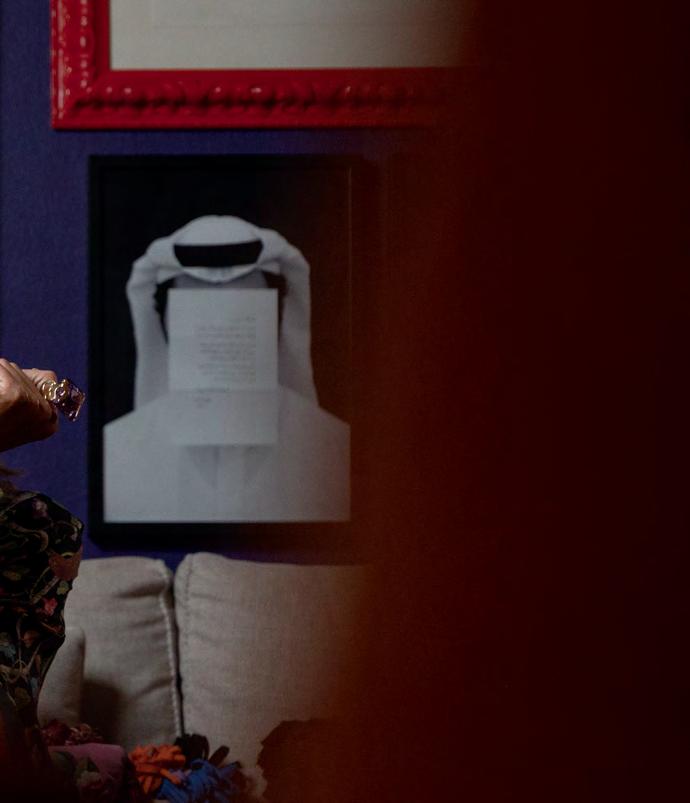

What advice do you have for female entrepreneurs entering the jewellery industry?
For female entrepreneurs entering the jewellery industry, my advice would be to stay true to your vision, your identity, and to embrace your unique perspective. Don’t be afraid to take risks and push boundaries.
What compelled you to challenge traditional boundaries in jewellery design when you launched your brand in 2006?
Challenging traditional boundaries in jewellery design was a natural progression for me. I’ve always been drawn to pushing the envelope, exploring new possibilities, and redefining conventional norms. Launching my brand in 2006 was a bold statement of defiance against the status quo, paving the way for a new era of innovation in the industry.
Given that calligraphy is inherently complex, how do you balance its intricacy with the functionality of your jewellery designs?
Balancing the intricacy of calligraphy with the functionality of my jewellery designs I do by simply using my handwriting calligraphy, combining it with a traditional one, giving it an edge and differentiating it from any other brand in the market. It’s about finding harmony between artistry and practicality.
What subtle messages do your pieces convey? In essence, if your jewellery could speak, what would it say?
My pieces convey subtle messages of identity, heritage, and individuality. If my jewellery could speak, it would say, “Embrace your roots, express yourself boldly, and let your unique story shine through in Arabic.”
As an internationally acclaimed designer, how have you observed the Western audience’s reaction to your designs?
The Western audience’s reaction to my designs has been incredibly positive and enthusiastic. While the Arabic language and our calligraphy may be unfamiliar to some, they are universally appreciated for their beauty and artistry. My work serves as a bridge between cultures, sparking curiosity and fostering a deeper appreciation for diversity and inclusivity.
As a prominent female entrepreneur, what does power mean to you?
Power means having the urgency to shape my own destiny and to make a positive impact on the world. It’s about using my platform to uplift and inspire others, especially women, to pursue their passions fearlessly and unapologetically. ■
words LOUIS PARKS
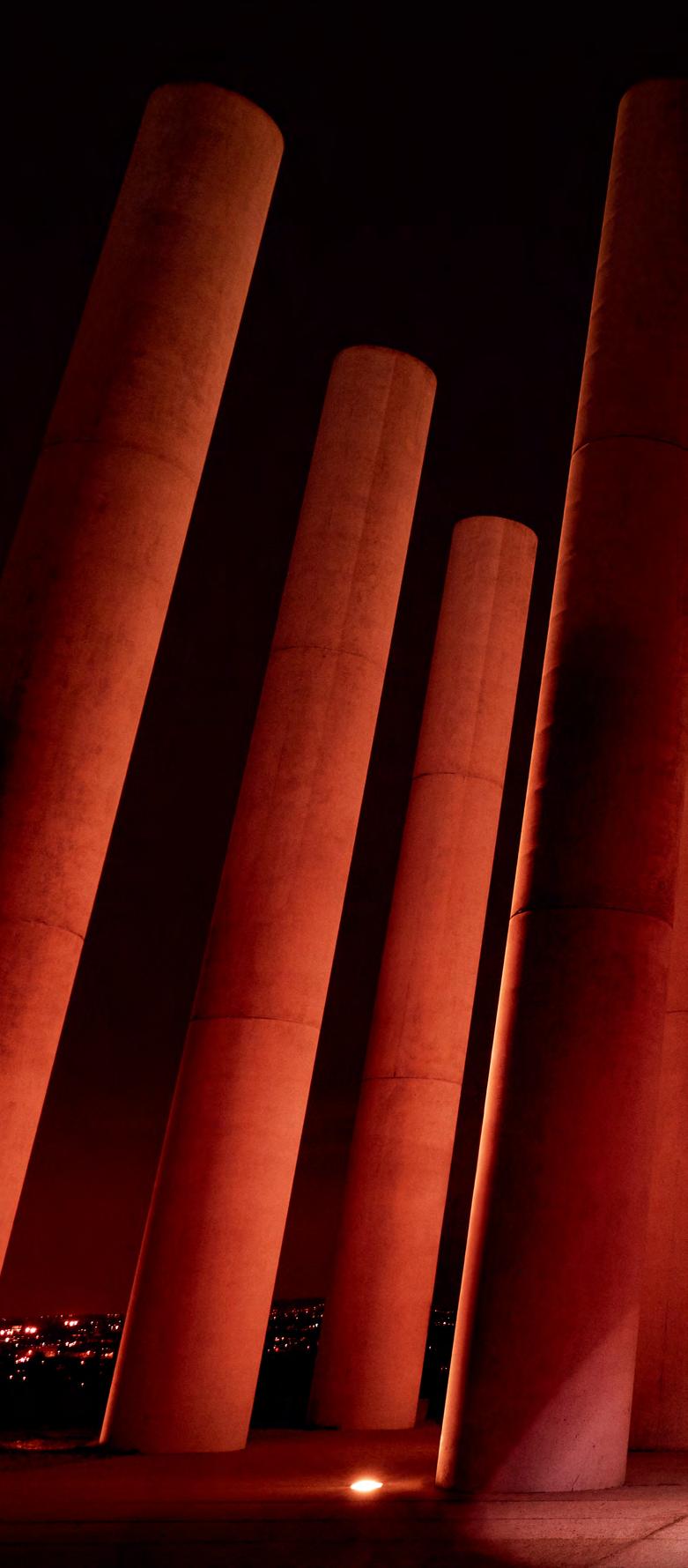


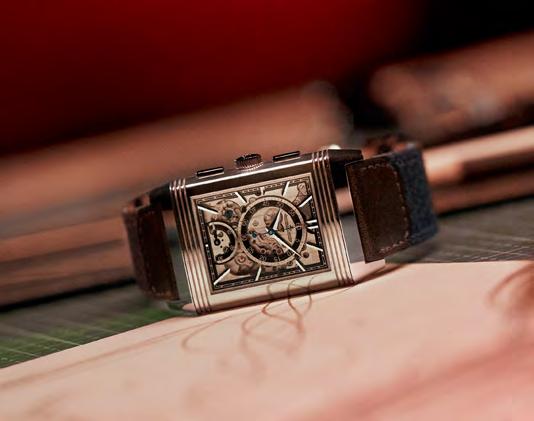

Roy Wang illuminates Jaeger-LeCoultre’s ‘The Precision Pioneer’ with artistry and innovation.
Dubai recently saw the debut of Jaeger-LeCoultre’s ‘The Precision Pioneer’ exhibition at ICD Brookfield Place in DIFC. This immersive showcase celebrated nearly two centuries of fine watchmaking and featured a stellar lineup of events and collaborations. One of the creatives at the heart of the opening night was Chinese urban artist Roy Wang, whose mesmerizing light-painting artworks left guests spellbound.
The exclusive opening featured names such as R&B singer Zeyne and actor Moatasem Al Nahar. The night was a celebration of the vast number of skills mastered by Jaeger-LeCoultre’s artisans and also the reveal of the company’s latest timepiece. The Master Grande Tradition Calibre 948 stands apart from the crowd thanks to its striking green enamel dial, representing a uniquely artistic interpretation of the world-time complication. This watch seamlessly blends mechanical excellence with exquisite handcrafts, including enamelling, guillochage, and lacquering. Its Universal Tourbillon completes a full circuit around the dial every 24 hours, mirroring Earth’s rotation on its axis and its journey around the Sun.
The audience was treated to a spectacular live light-painting performance by Roy Wang, who unveiled four exclusive pieces created specifically for Jaeger-LeCoultre. Wang’s performance, featuring his signature dragon motif showcased the skills and creativity involved in light-painting.
For those unfamiliar with light-painting, Wang provides a captivating description, “Light-painting art involves capturing and
recording light’s trajectory through prolonged camera exposure. Although the process is invisible to the eye, it manifests in the image through the spatial and collected memory of the creator.” His unique approach, which he developed while spending time in Japan, is effectively painting in the air with light, intentionally creating sweeping shapes.
Wang’s artistic process is both intricate and intuitive. He explains, “I operate from behind the light so I cannot see what I’m doing directly. I rely on my imagination and anticipate the final drawing, which requires a lot of practice to precisely remember the movement of the light and the positioning of my body. In light painting, continuous practice of basic skills is essential. Through muscle memory, I can control my body and arms to master the trajectory of light.”
Wang reflects on how similar his art and watchmaking are, saying that, just like a watchmaker’s precision, “In our work, precision is paramount. Every aspect—creation time, parameter settings, painting position, and creative steps—must be executed with meticulous accuracy. Any mistake requires starting over. For watchmakers, their love for their craft drives them to create masterpieces. Similarly, I am passionately devoted to light painting art. We all strive for excellence in what we love.”
As Wang continues to push the boundaries of light-painting, his collaboration with Jaeger-LeCoultre stands as a shining example of how art and technology can intersect to create something truly extraordinary. ■
“For watchmakers, their love for their craft drives them to create masterpieces. Similarly, I am passionately devoted to light painting art. We all strive for excellence in what we love.”
World class biathlete Johannes Thingnes Bø and Richard Mille combine in the creation of excellence.
words LOUIS PARKS
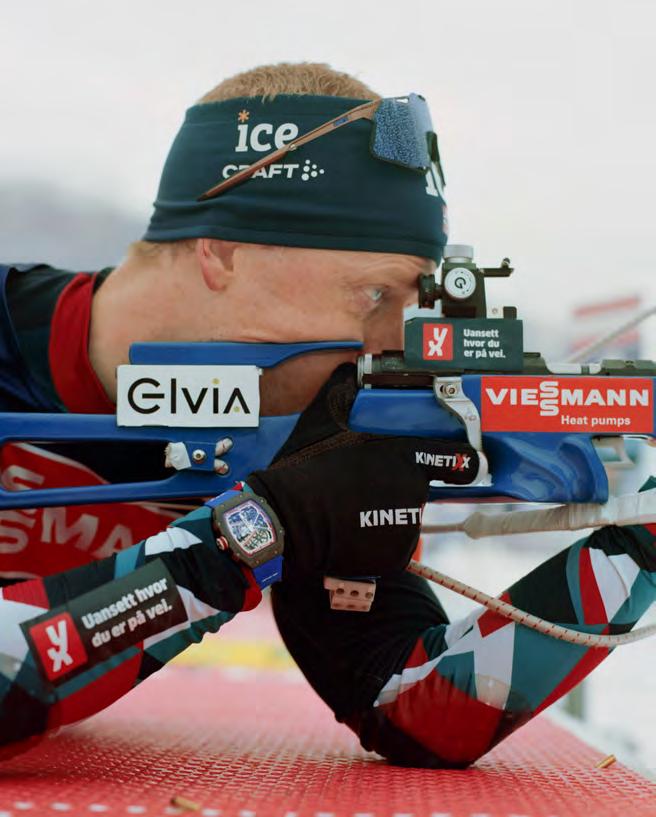


Norwegian biathlete Johannes Thingnes Bø is the best man in the world on a pair of skis and with a rifle in his hand. Thingnes Bø is redefining the sport – an event which combines cross-country skiing with target shooting - with his prowess and indomitable spirit. In keeping with the brand’s dedication to celebrating exceptional sporting talent, Richard Mille has created a stunning, unique timepiece to celebrate his achievements.
Born in 1993, in Stryn, Norway, Thingnes Bø burst onto the international scene becoming the junior world champion for the third time in 2012 and quickly became a dominant force in biathlon. To date, his career is studded with remarkable achievements, including records for the most World Cup wins in a single season.
In the 2018 Pyeongchang Winter Olympics Thingnes Bø won three medals, taking gold for the first time in the 20 km individual biathlon with an incredible performance. Since then, Thingnes Bø has claimed titles and crystal globes at the World Cup season after season. In 2020, he became world champion for the second time, winning his fourth individual title in the process. But it didn’t stop there, in the 2022 Beijing Olympics, Thingnes Bø was the only athlete to return home with four medals. This is a man at the top of his game and he currently stands on a career total of 85 wins, the world record of 95 – and sporting immortality - is within his reach.
Biathlon is a notoriously tough sport, where competitors have to combine the intense physical demands of cross-country skiing with the deep concentration required to accurately shoot a rifle. The training is intense, “Our pre-season starts on the 1st of May and our first race is at the end of November. So it’s quite a long pre-season. At first, you try to have fun, be relaxed but train hard, and during August, September, October you increase the level of training, hard sessions, the focus, the eating, the rest and everything,” says Thingnes Bø.

Thingnes Bø first fell in love with skiing when his father turned his hand to biathlon, “There was no club in the area, he just started,” he says. He started skiing and shooting with his children, Johannes and his brother Tarjei Bø. But, for the boys, it didn’t really stick at first, “[It] was just like a side quest until we were 15 and then my brother went to this top school in Norway to do the sport and he became really good, really fast and from there on he was my role model, and it’s like when you go skiing you leave tracks, so I could just follow his tracks so he made my early career very easy because he had good contracts with skis and equipment and when they were not good enough for him I got it,” he says.
In simple terms the sport revolves around demanding, long-distance skiing, followed by shooting. Time can be added to the athlete’s finish time if they miss their shots in the shooting section, meaning that there’s a delicate balance between speed and precision. Ski hard and fast and you might be exhausted when you’re shooting. Take too long shooting and your speed in the ski section won’t matter. Alongside incredible skill, a biathlete must be ferociously fit, you can’t shoot if your chest is heaving from exhaustion after a long ski. “The heart is beating very fast, of course, and you need to control it with your breathing while you are aiming. It’s all about risk taking. I am the fastest skier, so I can take less risk on the shooting. But if people are not so fast on the skis, they need to gain the lost time, so they need to be faster shooters,” says Thingnes Bø.
In celebration of Thingnes Bø’s success Richard Mille created a custom, unique RM 67-02 Automatic Winding Extra Flat bedecked in the colours of the Norwegian flag. The RM 67-02 is an exemplar of luxury sportswear watches, designed for both aesthetic appeal and performance. Weighing just 32 grams, the RM 67-02 is extraordinarily lightweight, testament to its use of TPT composite materials and grade 5 titanium.
“The heart is beating very fast, of course, and you need to control it with your breathing while you are aiming. It’s all about risk taking.”
Richard Mille’s collaborations with athletes have been a core part of the brand for a long time. The partnerships result in a watch tailored specifically to the needs of the sportsperson. Tim Malachard, Chief Marketing Officer of Richard Mille explains, “If you do a watch for Nadal playing tennis, it will be different to the one Johannes is wearing, which is very thin, very light and that doesn’t hinder their performance as well. Nadal wants a watch that, when he’s doing a backhand, doesn’t irritate his skin, the crown doesn’t impede into his palm. So every athlete’s watch is different.” This bespoke approach highlights the brand’s innovative spirit and commitment to performance. By creating timepieces that cater to the specific demands of various sports, Richard Mille ensures that its watches are not just luxury items, but functional tools for athletes.
At its core, Richard Mille is a technical brand, first and foremost. “For us, our prod ucts, the best way to test them is through sport. I mean, our tagline is “A racing machine on the wrist”, since day one, in 2001,” Malachard says. This philosophy is embedded in every watch, designed to withstand the rigors of high-performance sports while maintaining the elegance and sophistication expected of a luxury brand.
Central to the latest piece is the calibre CRMA7, a skeletonised automatic-winding movement that displays hours and minutes with remarkable precision. This movement is housed in a meticulously crafted case that seamlessly integrates form and function and which is reinforced by its bezel and extensions, adding both strength and a dynamic aesthetic.
Adding to its unique character, the RM 67-02 features a new comfort strap, entirely seamless and non-slip, designed to conform to the wrist’s shape, ensuring optimal wearability without sacrificing style. The strap is the lightest ever created by the brand, emphasizing the watch’s blend of innovation and comfort and making it perfect for sportspeople.
Ultimately, the challenge for Richard Mille is to create watches that are not only luxurious but also practical for everyday use. “It’s not just about making a fancy watch. It’s developing a watch that they can actually wear and use every day when they’re competing. That’s the challenge for us. And I think people buying the watch want to feel that it’s safe to wear it,” Malachard explains.

Tim Malachard Marketing Manager
The technological prowess extends to the RM 67-02’s rotor, crafted from Carbon TPT and white gold, employing a OneWay winding system with ceramic ball bearings for efficient power maintenance, supporting a 50-hour power reserve. The baseplate and bridges, composed of grade 5 titanium with black and grey DLC treatments, ensure the rigidity and flawless surface flatness crucial for the gear train’s operation.
In today’s digital age, the relationship between athletes and their image has evolved significantly, the watch, the clothes they wear, everything lends itself to the creation of a carefully curated style. Social media has amplified the importance of personal branding, making athletes ever more conscious of how they are perceived. “I think today, the athletes on social media are much more careful on what they portray and the values they want to with their community than before,” Malachard observes. This shift has made the collaboration between Richard Mille and athletes even more relevant, as both parties navigate the intersection of sport, lifestyle, and luxury.
The luxury watch industry often grapples with the balance between maintaining exclusivity and expanding production. For Richard Mille, the decision is clear. “We’re never going to go into a volume brand,” says Malachard. “Tomorrow we’re not going to say, oh, we have to make 10 or 15,000 watches. It’s not going to happen for two reasons. A, we don’t want to. And B, we can’t because today our production facility with 230 people is limited in terms of their expertise and their know-how.”
Richard Mille’s dedication to quality is paramount. The brand’s commitment to maintaining the highest standards of craftsmanship means that each watch is a testament to precision and innovation. “If you want to control quality, it’s a very dangerous zone when you go into making much more volume. Quality for us is the number one criteria,” Malachard emphasizes. This focus has allowed the brand to thrive, producing nearly 6,000 watches a year, a significant figure given their luxury price point.
The core philosophy of Richard Mille extends beyond mere numbers. It’s about staying true to the brand’s founding values. “For us, it’s more about continuation and keeping the brand faithful to its values since day one,” Malachard notes. This commitment to authenticity and integrity has been a cornerstone of the brand’s success, ensuring that each timepiece not only meets but exceeds the expectations of its discerning clientele.
This is a remarkable piece for a remarkable sportsman. And remarkable Thingnes Bø is. When asked what he wants to do next, his answer was simple, “I want 11 more wins. The record is 95, I have 85. I have 11 this year, it’s possible, I have two more seasons, five or six a year, I can do it.” Simple. Or not. ■
“I want 11 more wins. The record is 95, I have 85. I have 11 this year, it’s possible, I have two more seasons, five or six a year, I can do it.”
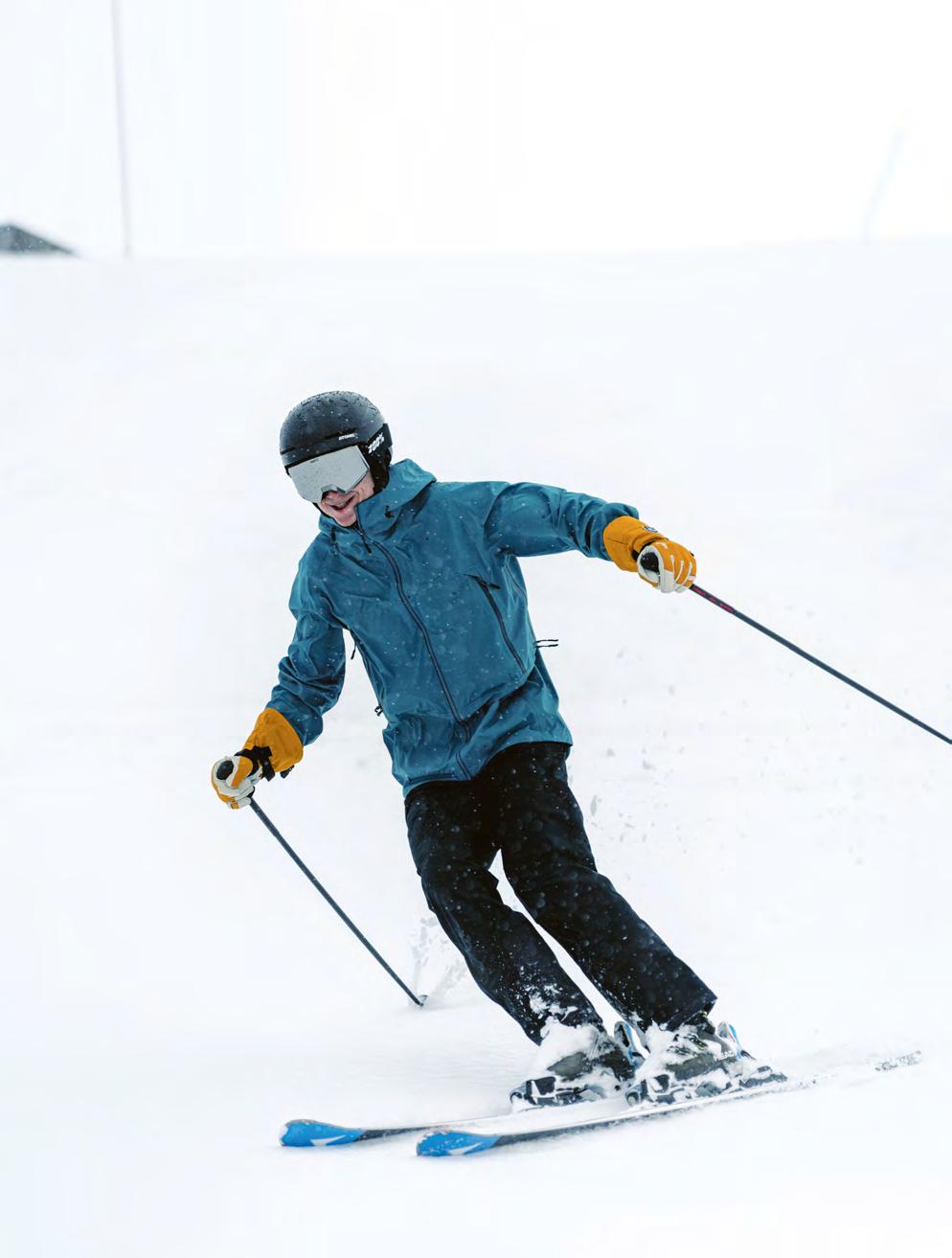


The Arsham Droplet is a stunning contemporary reimaging of a pocket watch that unites Hublot’s technical mastery with designer Daniel Arsham’s distinctive artistic vision to create a unique take on a timeless classic. Known for transforming everyday objects into “future relics,” Arsham typically explores the malleability of time and memory. The Droplet, inspired by the organic, fluid forms found in nature, embodies a harmonious blend of past, present, and future, representing a milestone in horology.
“It hasn’t been done in this way before, this is the first full sapphire pocket watch as far as we can tell. So much of my work is about thinking about the past and connecting it with the future, it’s like mixing times. This object looks like something with the past, it recalls this way of telling time that’s from another era, but it feels like a kind of technology of the future. In a way it has a lot of relationships with the other works that I make,” said Arsham of this remarkable piece.
Crafted from a combination of titanium, rubber, and sapphire crystal, the Arsham Droplet showcases Hublot’s attention to detail, innovative use of materials and commitment to design excellence. Measuring 73.2mm in length, 52.6mm in width, and at 22.5mm thick, its ergonomic design fits perfectly in the hand, offering an immersive horological experience. At its heart lies Hublot’s iconic Meca-10 manufacture movement, boasting a 10-day power reserve, ensuring the timepiece remains functional for extended periods without frequent winding.
Arsham’s design incorporates a sandwich construction with domed teardrop-shaped crystals, creating an open-worked titanium case that resembles delicate lace. The case is adorned with custom Arsham Green rubber bumpers, stamped with the artist’s monogram. The double sealing system with 17 O-rings ensures a perfect seal, reflecting Hublot’s pursuit of technical excellence.
Arsham’s collaboration with Hublot began with a visit to their Swiss factory, where he was inspired by the laboratory-like environment and the materials, particularly sapphire crystal and titanium. His vision for the Droplet stemmed from historical timekeeping practices and his desire to create a piece that transcended traditional forms. “Hublot has always been a master of materials. We are known for combining materials in our watches. It was only natural for us to use these materials for the watch. We again continue to show that we are a leader in sapphire,” said Ricardo Guadalupe, Hublot CEO.
The Droplet’s design process involved significant technical challenges, including scaling the sapphire crystal and developing a new clip-in system for its versatile uses. The resulting timepiece, limited to just 99 examples, features a distinctive rounded drop shape and showcases Hublot’s signature design elements, including six H-shaped screws and a semi-matte varnished Arsham Green dial and hands.
“It hasn’t been done in this way before, this is the first full sapphire pocket watch as far as we can tell. ”
The Arsham Droplet is not just a pocket watch; it can be enjoyed in three different ways: as a pocket watch, a pendant, or a table clock. The timepiece comes with two titanium chains featuring Hublot’s patented double “Oneclick” system for seamless attachment, allowing it to be worn as a necklace or a traditional pocket watch. Additionally, it can be displayed as a sculptural centrepiece on its decorative titanium and mineral glass table stand.
Speaking of the piece’s adaptability, Arsham said, “Going back to this idea of the clock, it is not a traditional pocket watch, it is three potential uses, it can be worn as a necklace or pendant, pocket watch or table clock. I really love the One-click system of Hublot, so we developed it on the pocket watch for the band and so the watch can be worn in other ways. I also had the opportunity to design the titanium chain, and to also extend the design to the packaging. The packaging is also very special, it’s a sand-blasted aluminium case that has three different levels that carry everything in it, it almost become a jewellery case on its own.”
Summing up the collaboration, Guadalupe said, “We were able to reinvent the pocket watch and create something totally new for the watch industry. We have taken Daniel’s organic shapes, and created a watch that does not follow the traditional rules of watchmaking design. The watch is transparent, with an organic shape that fits in the hand and can be worn in three different ways. It was made possible thanks to Daniel’s incredible vision and our team was able to work with him to bring his concept to reality.”
A pocket watch, and yet so much more, the Arsham Droplet is testament to extraordinary design and the unrelenting pursuit of excellence. ■
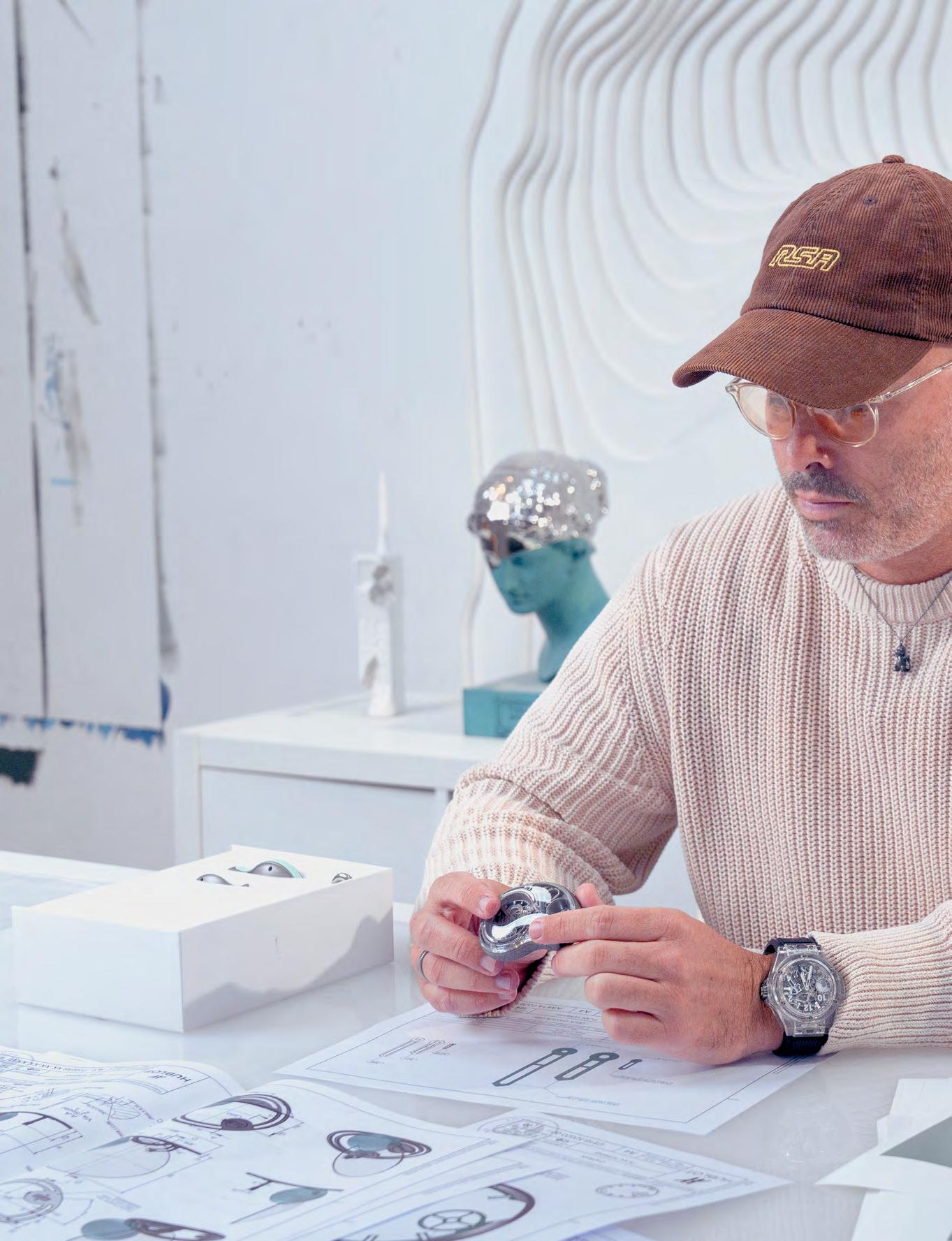
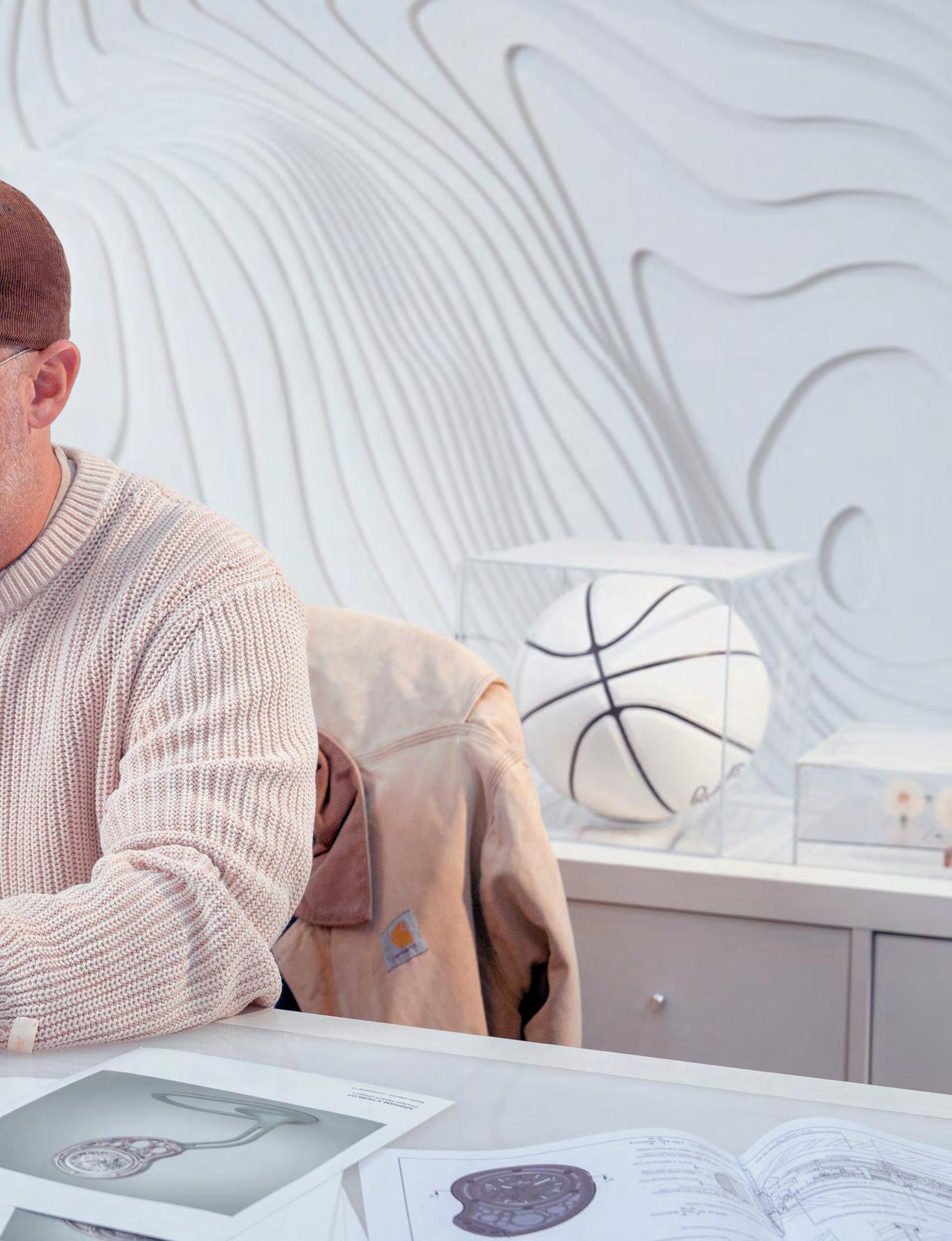
“Going back to this idea of the clock, it is not a traditional pocket watch, it is three potential uses, it can be worn as a necklace or pendant, pocket watch or table clock.”
words LOUIS PARKS Bvlgari’s Octo Finissimo Ultra COSC is a groundbreaking fusion of engineering genius and artistic elegance.
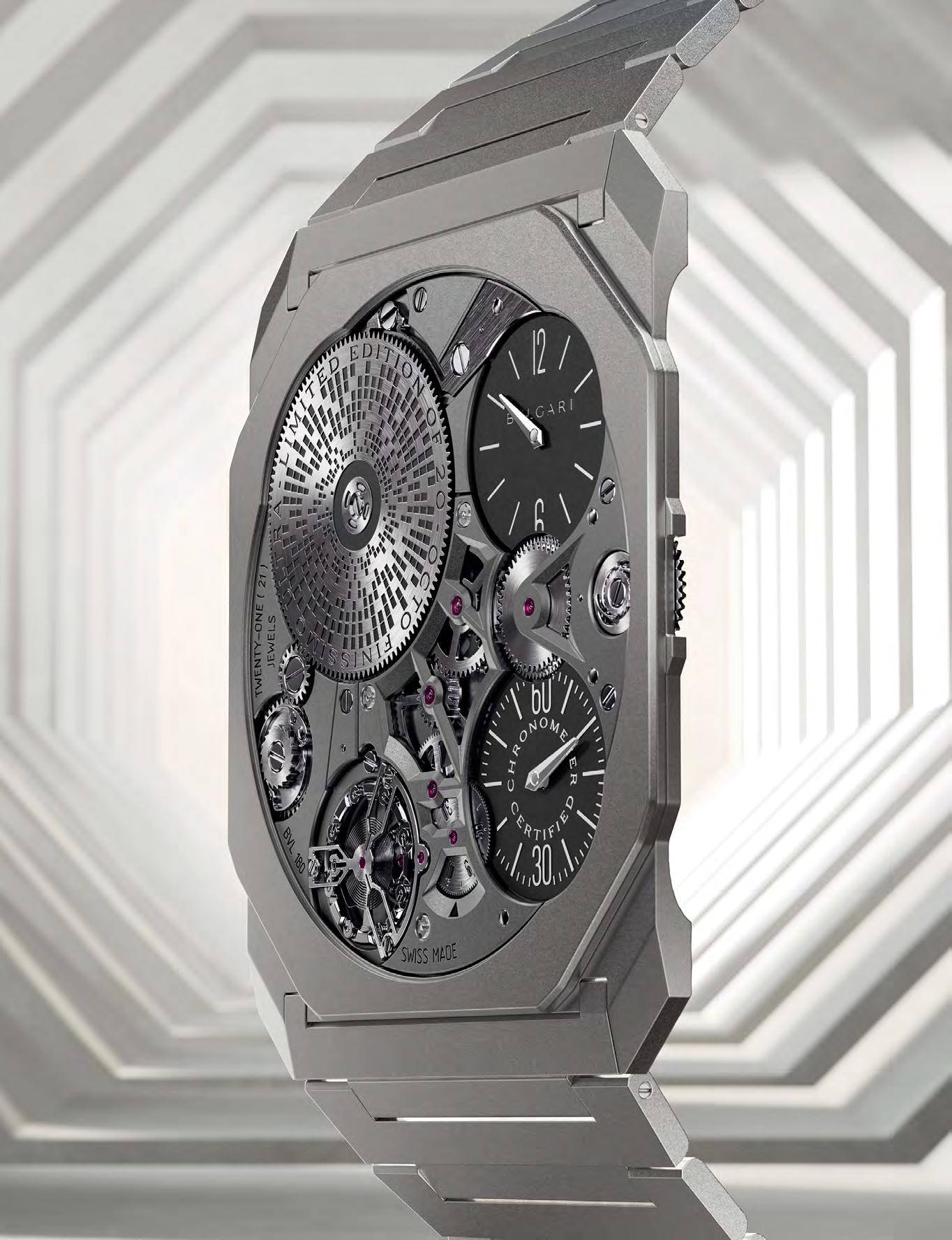





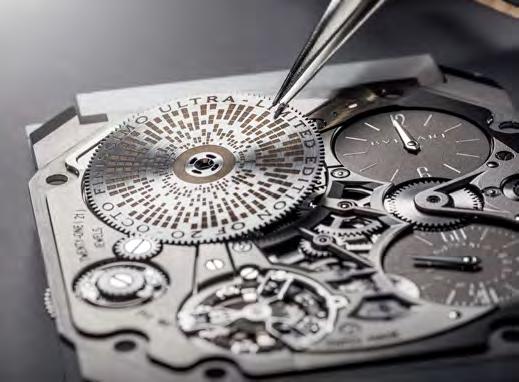
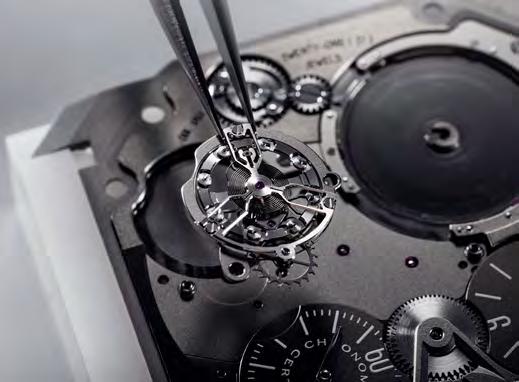

“When you turn the watch ... you see there is no side view ... It looks like an illusion.”
- Fabrizio Buonamassa Stigliani, Product Creation Executive Director at Bvlgari.
There are thin watches and then there’s the Octo Finissimo Ultra COSC from Bvlgari. Intricate, delicate, incredible, the Octo Finissimo Ultra COSC, limited to 20 pieces, is the world’s thinnest mechanical watch. Here, Fabrizio Buonamassa Stigliani, Bvlgari’s Product Creation Executive Director, delves into the intricacies and inspiration behind this masterpiece.
Even after years of development, the experience of holding the Octo Finissimo Ultra COSC remains a profound surprise for Stigliani. “Each time that we have it in our hand, the watch is always the same, the same surprise,” he shares. The watch’s ultra thin profile, combined with its complex, layered design, evokes amazement every time, “When you turn the watch ... you see there is no side view ... It looks like an illusion,” he continues. This “illusion” is testament to the meticulous craftsmanship and innovative thinking that went into its creation.
Creating the world’s thinnest watch demanded an unorthodox approach and the design team was encouraged to think outside traditional constraints. For Stigliani, the Octo Finissimo Ultra COSC is not just a collector’s item, but a watch to be worn and enjoyed daily. “My obsession was to put the watch on the wrist, not to make a watch for the safe,” he asserts. This emphasis on functionality ensures that despite its delicate construction, the watch can be part of everyday life. “You have to enjoy and you have to use the object,” he insists.
Stigliani reflects on the philosophy behind the design, quoting Leonardo da Vinci: “Simplicity is the biggest complication.” This principle has guided the meticulous process of crafting the Finissimo. “It’s our know-how, it’s 15 years of development of Finissimo,” he states. The design process was deeply collaborative and secretive, involving only a select few within Bvlgari for a considerable period.
The development of the Octo Finissimo Ultra COSC fits into Bvlgari’s broader heritage and vision. Since joining the company in 2001, Stigliani has witnessed significant transformations. “In 2010, we decided to fully integrate the manufacturing side to develop the Bvlgari watch division in a different way,” he explains. This strategic move allowed Bvlgari to harness its unique skills and innovate within the ultra-thin watch segment.
Achieving the thinnest watch in the world was fraught with challenges. “Often we receive the reply, ‘It’s not possible to do,’” Stigliani admits. The journey involved meticulous planning, extensive testing, and collaboration with reliable partners. “The bracelet of the platinum watch... it took two years of development,” he notes, highlighting the intricate process behind each component.
Bvlgari’s journey with the Octo Finissimo line is far from over. “We have a very, very interesting plan for the future,” Stigliani hints, but will say no more. The brand’s agility and willingness to take risks, backed as it is by the world’s largest luxury financial group, ensure continuous innovation. “Bvlgari is like a big, small, independent watchmaking brand,” he concludes, speaking of their unique position in the industry.
The Octo Finissimo Ultra COSC is a culmination of Bvlgari’s heritage, innovation, and relentless pursuit of perfection. For lovers of fine watches, it represents no mere timepiece, but a symbol of exquisite craftsmanship and timeless elegance. ■
Primal simplicity inspires a beautiful new timepiece from illustrious French house Hermès.
words LOUIS PARKS
Hermès has long been synonymous with timeless elegance and artisanal craftsmanship, a legacy deeply rooted in its history of creating exquisite objects. That, of course, extends to its watches, and the stunning new Hermès CUT.
Hermès’s journey into the realm of horology began in the 1920s, when the company introduced its first timepieces in collaboration with renowned Swiss manufacturers. These watches were sold at the iconic 24 Faubourg St-Honoré store, marking the beginning of a distinguished relationship with time.
The evolution of Hermès Horloger gained momentum in 1978 under the leadership of Jean-Louis Dumas. Dumas, a visionary driven by curiosity and a passion for cultures worldwide, expanded the company’s horizons. His tenure saw the establishment of new métiers and the opening of new markets, guided by the Maison’s artisanal model and entrepreneurial spirit.
A significant milestone was reached in 2006 with Hermès’ strategic integration with Vaucher Manufacture Fleurier, renowned for its movements. This was followed by the inauguration of a leather workshop at the La Montre Hermès S.A. site in Brügg, complementing the assembly workshop established in 1978. By 2017, Hermès Horloger had fully integrated its capabilities, with the acquisition of Natéber for dials and Joseph Erard for cases, culminating in the creation of Les Ateliers d’Hermès Horloger in Le Noirmont.
Today, Hermès Horloger stands as a fully-fledged watch manufacturer with a comprehensive mastery of in-house skills and a commitment to the highest production standards. The Maison has garnered recognition at the prestigious Grand Prix de l’Horlogerie de Genève (GPHG) with six awards since 2011 for its innovative timepieces, including the Arceau Le temps suspendu and the Slim d’Hermès Quantième Perpétuel.
This distinctive approach resonates strongly in the MENA region, says Delhotal, “The MENA region and its customers have been very savvy about watchmaking in general. At events, we’ve experienced a fruitful exchange with customers in the Middle East, and a lot of curiosity about our craftsmanship. I also experienced an assertion in tastes, they are sensitive to crafts and mechanical watches. Collectors of the region also show interest in our pieces, our novelties and invest in our watches.”
The latest addition to Hermès’ illustrious collection is the Hermès CUT, a watch inspired by a primal sense of creation, “Simple in appearance, it is a combination of different shapes, ‘cut’ on the edge by a bevel that adds another dimension and opens up unexpected perspectives. It’s this rupture, this polished bevel, that inspired its name,” says Delhotal.

“It was developed with a feminine style in mind, and with its universal design it has proved popular with a broad male audience,” says Delhotal. “Our aim was to create a contemporary watch with a simple, timeless shape that combines the house’s singular style with its watchmaking expertise.”
Powered by the Hermès Manufacture movement H1912, the self-winding piece boasts a 50-hour power reserve and was crafted by the Vaucher Manufacture Fleurier. This beautiful creation is accentuated by a circular-grained and snailed mainplate, satin-brushed bridges and oscillating weight and intricate decorations, including the signature “semi de H” pattern.
In the competitive landscape of luxury watchmaking, Hermès distinguishes itself as a creative House with a unique vision. “We see time as a friend, not as a constraint to be controlled and measured. This is how we are twisting traditional complications and come out with our singular complications - Le temps suspendu, L’heure de la lune and Le temps voyageur. We envisage a different, singular watchmaking vision and creation,” says Philippe Delhotal, creative director of Hermès Horloger, adding, “With our values and philosophy at the heart of our creation, we are not following the trends, we create objects we believe in.”
Delhotal, clearly in love, elaborates further, “It interprets the Hermès vocabulary of shapes and features a multitude of sharp angles that forge its unique personality. Playing on circles and roundness, the new Hermès Cut is a celebration of simplicity and above all of simple, self-evident and timeless shapes. This simple shape deserves to be approached in a singular way, with its beveled sculpted edges, as if it had been sliced off, and its crown placed between 1 and 2 o’clock. This is a watch that we wanted to be deliberately different, endowed with an assertive style and an unconventional shape, in the same spirit of what we’ve done with Hermès H08. They belong to the same territory around vocabulary of shape.”
A vocabulary of shape, how wonderfully simple. Much like this incredible piece. ■


Deconstructing genre and identity one track at a time.
photography SAIF AL-SOBAIHI
styling ALHASSAN ANGAWI
words MENNA SHANAB
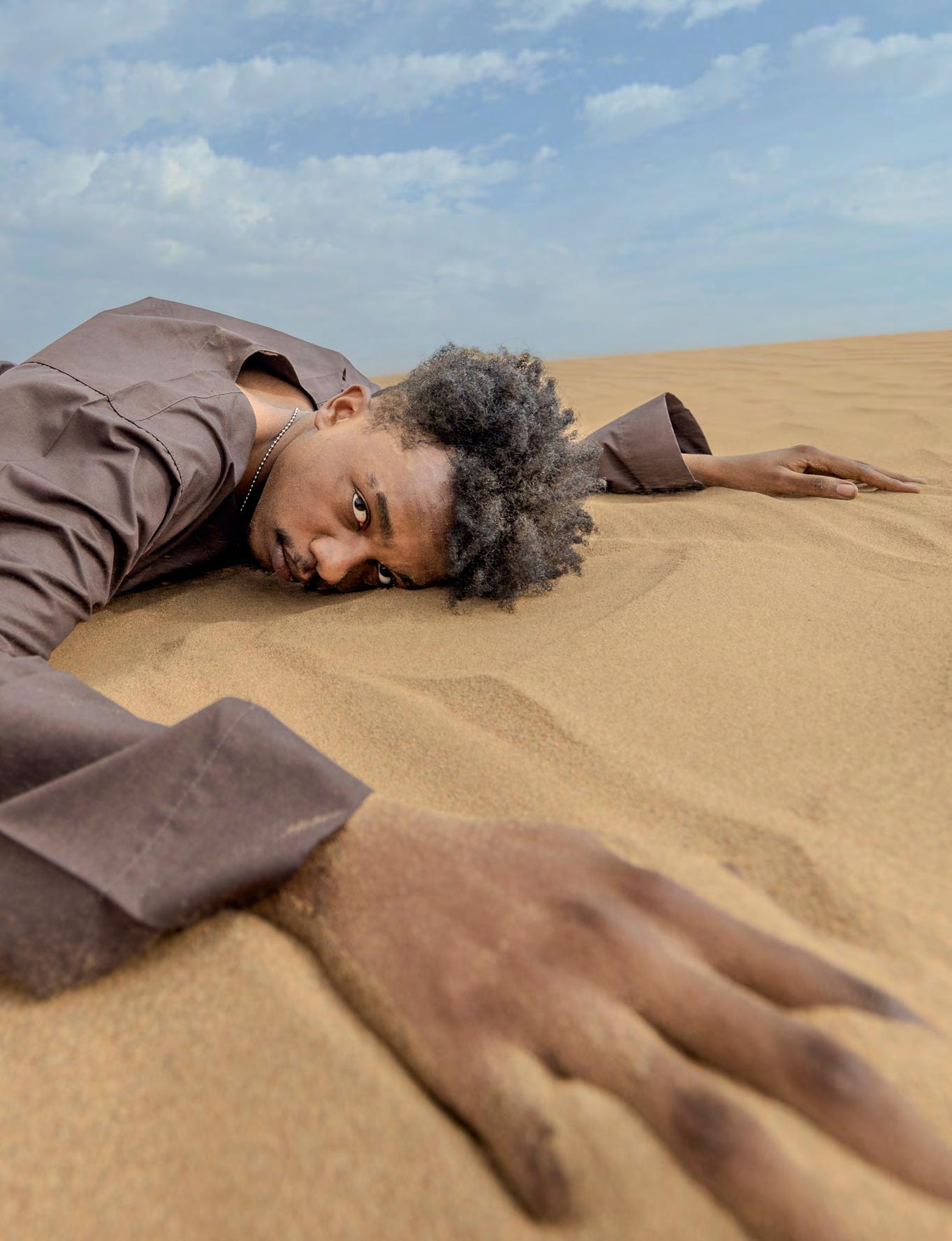
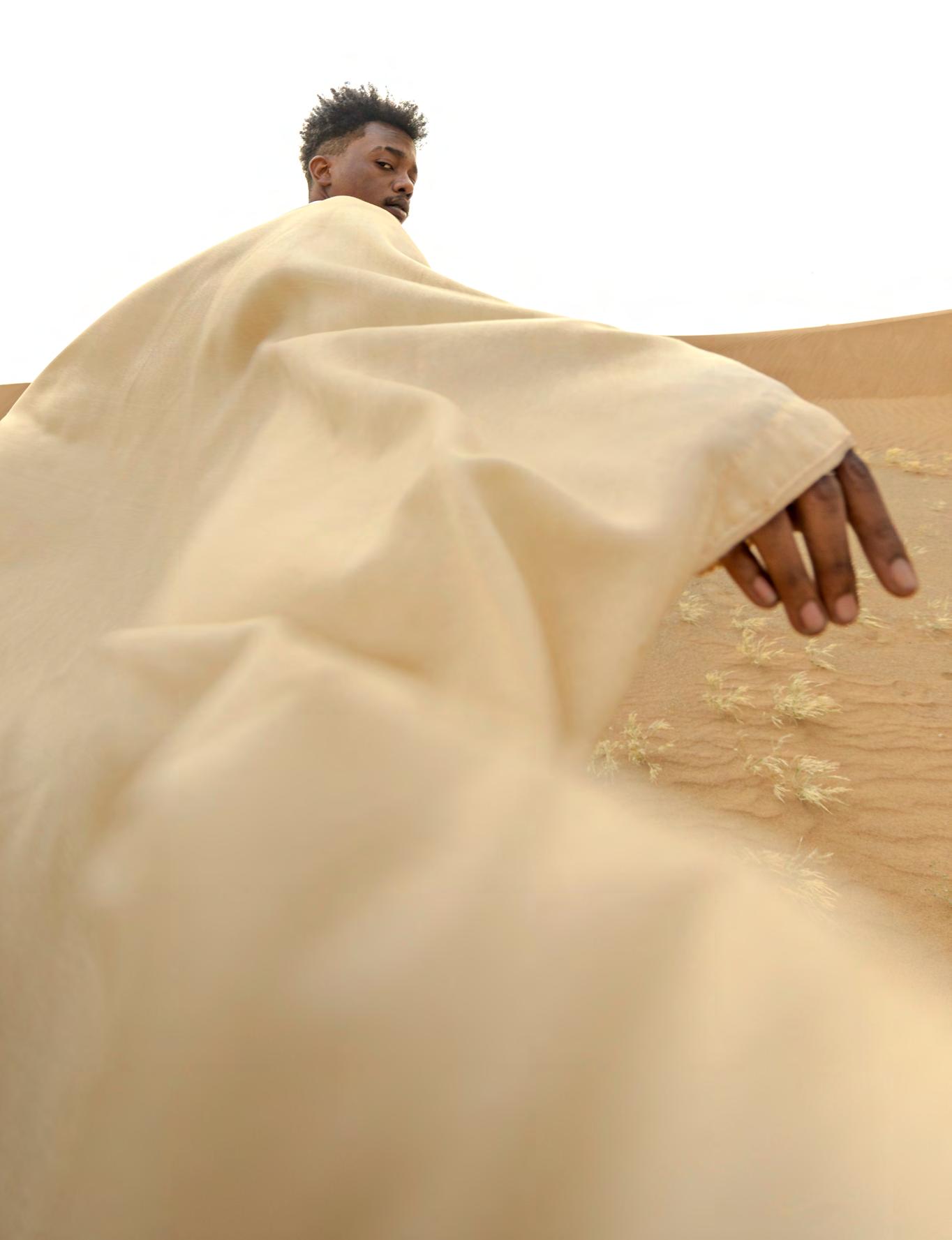
“The language of my thoughts is the language of my music.”
Omar Bin Mohammed Alfadel, known to the world as Dafencii, is a puzzle, a walking paradox, never fitting neatly into the music industry’s pre-set boxes. He is a rapper, a poet, a disruptor, a traditionalist who embraces experimentation, an artist who moulds words and sounds into a message that bypasses the confines of genres or nationalities. Dafencii grew up in Saudi Arabia but his Sudanese roots run deep. This hyphenated identity is his creative fuel.
“I think in different languages and accents,” Dafencii muses, his voice a melodic blend of his multicultural upbringing. “It’s something I can’t control. Sometimes it’s English or Saudi, other times Sudanese or Egyptian. It depends on where I am and what I was listening to or who I am talking to. The language of my thoughts is the language of my music.” This linguistic dexterity, this ability to seamlessly switch between dialects and cultural references, is a hallmark of Dafencii’s music. His lyrics are a whirlwind of social commentary, personal reflection, and playful wordplay, delivered in a laid-back flow that belies the razor-sharp intellect behind them.
“My music is a reflection of my life,” he declares. “It’s about the things I’ve lived, the things I’ve seen, and the things I want to change.” But it’s not just about the music. It’s about identity, about challenging the notion that one must fit neatly into a single category. He’s a cultural ambassador, a bridge between different worlds. He refuses to be pigeonholed. “I’m a mixture of more than culture,” he asserts. “And I don’t want to be specified as a certain one, not the other. I want to be all parts of myself.” This fluidity of identity is inextricably intertwined with his music, which he aims to make so genre-bending that listeners question what they’re hearing.
“What I want to do is make music that will make people say, ‘What kind of genre is that?’ or ‘What exact nationality is this?’” Dafencii declares. “So, if you’re a playlist curator on the DSPs, you won’t be able to place it in just one category, or under just one umbrella.”
This defiance of categorization is a recurring theme in his work, galvanised by his belief that identity is not a fixed concept but a fluid, ever-evolving mosaic. His ambition is to create music that is not just heard, but questioned, prompting listeners to reconsider their own assumptions about identity and cultural expression.
“I don’t need to show my passport to anyone,” he asserts. “You just need to listen to my music to understand who I am.” This defiant declaration of self, this embrace of multiplicity, is what makes Dafencii such a compelling figure.
Defying the industry’s penchant for categorization, Dafencii’s music is a genre-bending fusion of Sudanese rhythms, Arabic melodies, and American hip-hop. His upcoming project is a marriage of all the different cultural influences that have made him who he is today, incorporating traditional instruments and rhythms while maintaining his signature experimental style.
His breakout hit “King Al 7alaba,” a collaboration with Palestinian producer Khayyat, catapulted him into the mainstream. It was a game-changer, a bold declaration of his arrival on the regional rap scene. But Dafencii’s ambitions extend beyond chart-topping hits.
He wants to make music that inspires, that challenges, that changes people’s way of thinking. He is not content with simply riding the wave of mainstream success. In his words, “Success to me is receiving messages from people saying how my music or my interviews changed their life, how it encouraged them to take a step or move forward with their dreams,” he explains. “That’s success to me. That positive influence.”
He also sees his music as a tool for social change, a way to “change people’s ways of thinking.” His lyrics tap into issues of identity, belonging, and the complexities of cultural heritage, inviting listeners to engage in a deeper dialogue about the world around them.
And when it comes to making magic in the studio, there’s no set formula, no rigid structure. Dafencii’s creative process is a whirlwind of ideas, a constant exploration of new sounds and styles. “Sometimes the beat comes first. Sometimes the lyrics come first. Sometimes the name of the song comes first,” he reveals. “My approach to music differs every time. It’s intuitive.” Unburdened by preconceived notions of how music should be made, this spontaneity and willingness to experiment course through his diverse discography, which ranges from introspective ballads to hard-hitting bangers.
But Dafencii’s music is more than just a collection of songs. It’s a conversation, an ongoing dialogue between the artist and his fans. He values their feedback and sees them as an integral part of his artistic journey. “They made me in a way,” he acknowledges. “They have to be happy about what I’m doing so I can continue to succeed.”
He’s not afraid to peel back the layers of his larger-thanlife persona and reveal his vulnerabilities. “I’m trying to be as transparent as I can,” he says. “I’m trying to show everything I feel in my music. He strives to be an “open book for anyone to read,” sharing his personal struggles and triumphs through his music.
Although he has an aversion to labels, if he had to choose one he would be a “creation of God.” “I’m nothing more or less than anyone else that was created by God,” he says, humbly. His words, like his music, are a blend of the sacred and the profane, a reflection of his complex identity as a Saudi-Sudanese rapper navigating the ever-shifting sands of cultural expectations. ■

“I’m a mixture of more want to be specified as other. I want to be all

than one culture. I don’t a certain one, not the parts of myself.”










Since the inception of women’s media, there’s always been this captivating allure sur rounding the items celebrities carry in their bags. “What’s really in your bag?” has consis tently been a burning question. In this feature, we’re diving into the handbags of Middle Eastern entrepreneurs and style gurus Lana Albeik, Zoya Raza, Aya and Mounaz Abdel Raouf, and Helena Shahin. Titled “What’s Inside?”, our feature takes cues from the recent trends among influencers and style aficionados who are showcasing the contents of their bags. It’s a peek behind the curtain, revealing the everyday essentials and personal
words NUJOUD OWEIS


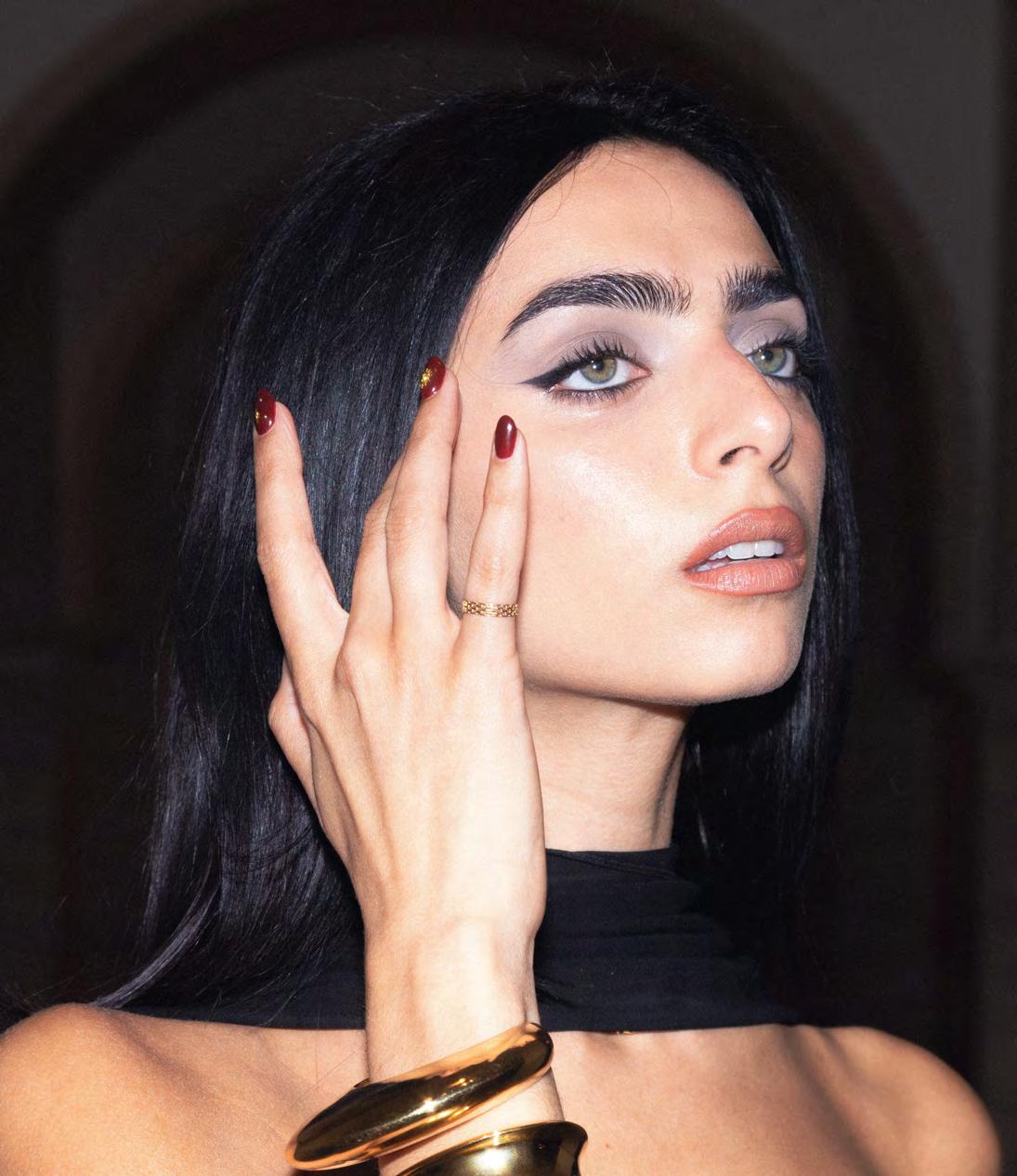

If you were to trade bags with anyone who would it be and why?
I watched a video of Bella Hadid’s bag and I think this would be my choice!
In your opinion, what do the components of your bag say about you?
That maybe I spend a lot of time outside the house and need a change of look and to care for my skin throughout the day!
If you were invited to an event and the power piece was your bag, which bag would you choose?
Either the Okhtein Micro Duo Bucket or the Schiaparelli Bijoux Clutch.
In three words, how would you describe your personal style?
I think feminine but with a little bit of an edge.
What does ‘power dressing’ mean to you?
It would mean getting ready as the whole process is part of feeling powerful, kind of like a ritual. and wearing a silhouette enhancing outfit paired with the right perfume.




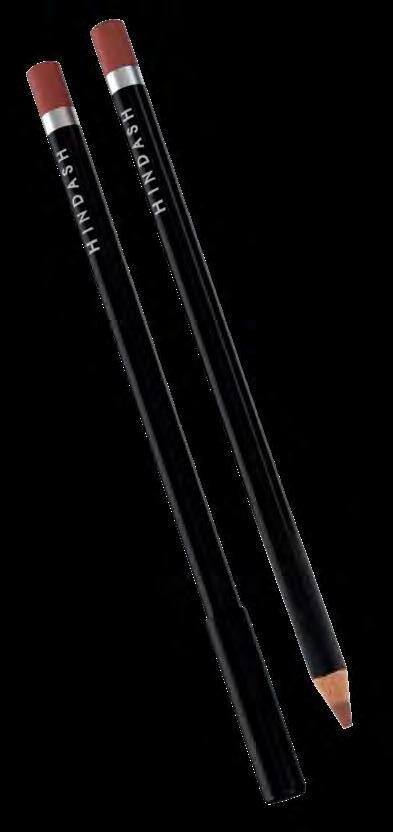

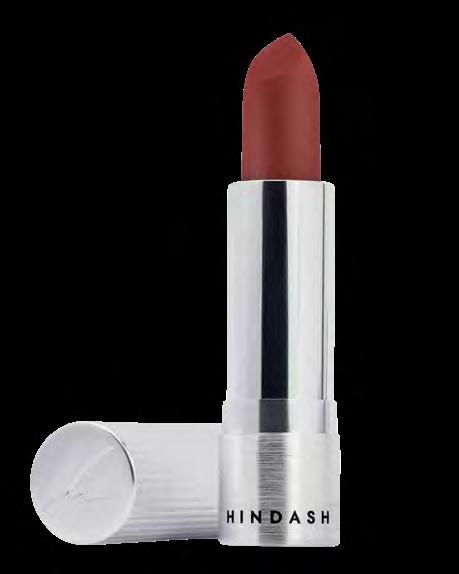





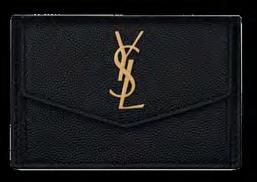

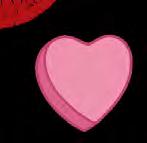

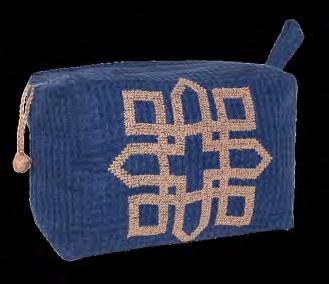




Playing in her mother’s wardrobe was where it all started for Zoya and she became something of a global fashion trendsetter in 2023. Her elegance and relatability captivate audiences in the US, UK, Europe, and the Middle East. British-Pakistani with a Boston background, Zoya’s authentic style and story resonate with Gen Z, transcending borders and crafting enduring influence.
If you were to trade bags with anyone who would it be and why?
Marci Hirshleifer! She has the most incredible bag collection and I love how she customises them with charms.
In your opinion, what do the components of your bag say about you?
For me, mini bags give off a more care-free, ‘I just need my lipgloss and airpods’ vibe. Bigger bags feel more serious and mature. Colourful bags always add a playful and fun element to an outfit, in my opinion adding colour makes my outfits less serious and more youthful.
If you were invited to an event and the power piece was your bag, which bag would you choose?
Hermes mini Kelly! A teeny tiny bag but it makes a bold statement!
In three words, how would you describe your personal style?
Colourful, eccentric and classy!
What does ‘power dressing’ mean to you?
Power dressing to me means to be able to unapologetically dress as yourself. It’s to not care about trends or what’s currently ‘cool’. Wear whatever makes you feel the most confident and the best version of yourself! For me personally I find power in dressing modestly! I love that it gives me the ability to experiment with different silhouettes and layering different items to create a unique look.



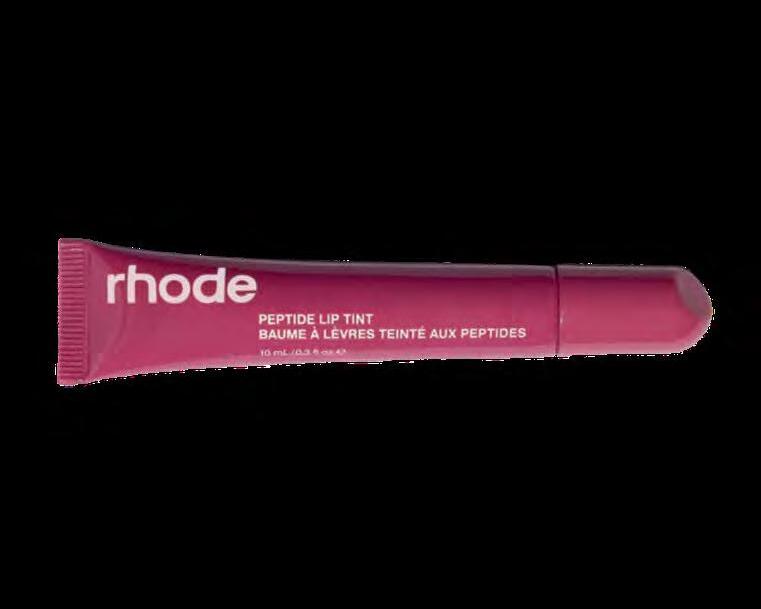










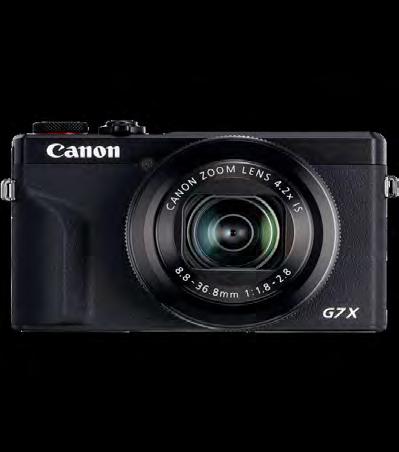


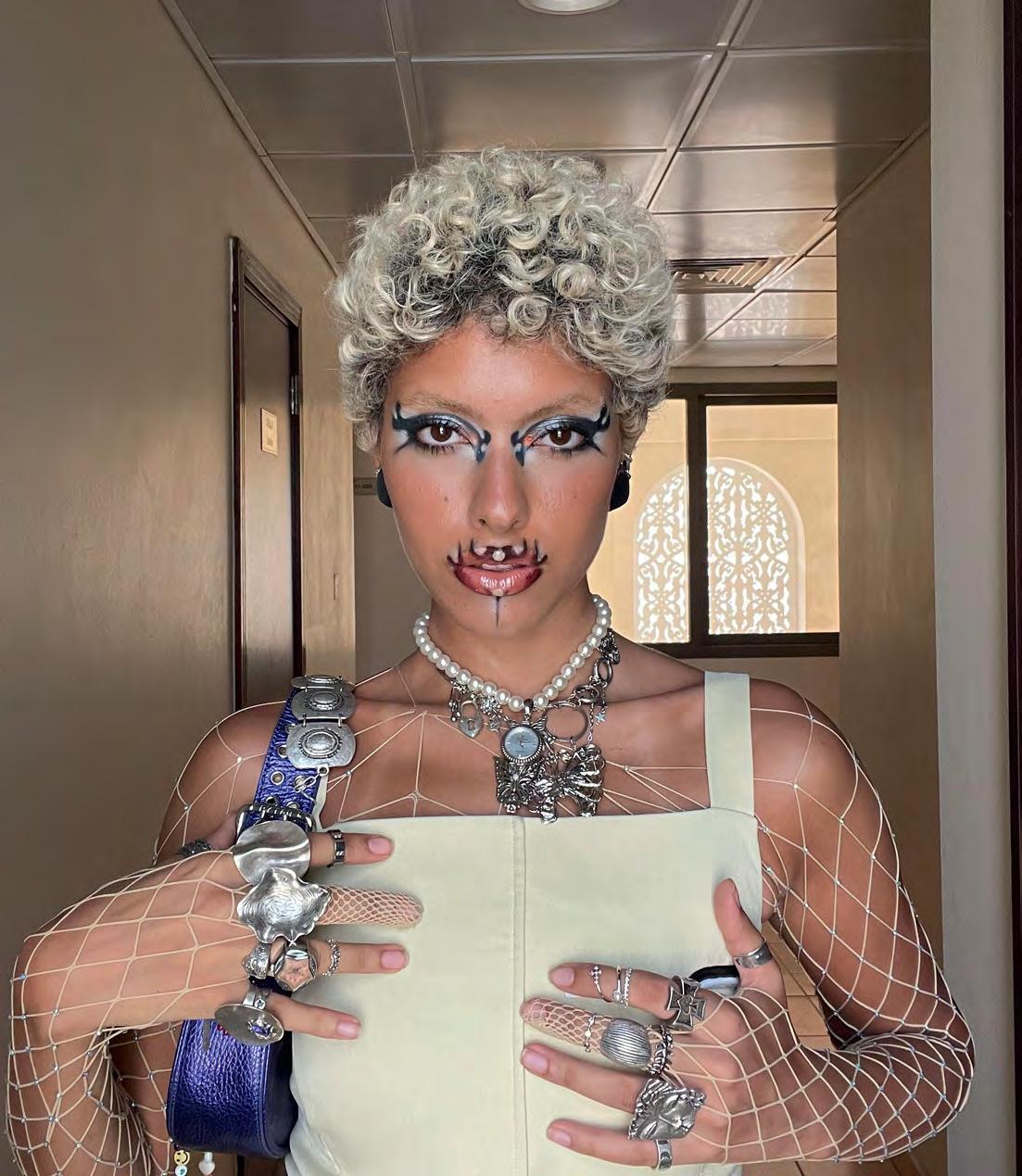

Helena
also known as
is an Egyptian multidisciplinary
based in
Her creative expertise spans a wide range of fields, including creative direction, sustainable fashion, editorial hairstyling, and creative makeup. As a fashion stylist,
is curates unique and impactful looks and as a content creator inspires and innovates through diverse artistic expressions.
If you were to trade bags with anyone who would it be and why?
My mum! She’s got everything in her bag. I can survive a whole day with her go-to bag.
In your opinion, what do the components of your bag say about you?
A fashionable, particular, edgy, practical, artistic person who likes things done in a certain way.
gloss bomb heat universal lip luminizer and plumber in hot chocolate, FENTY


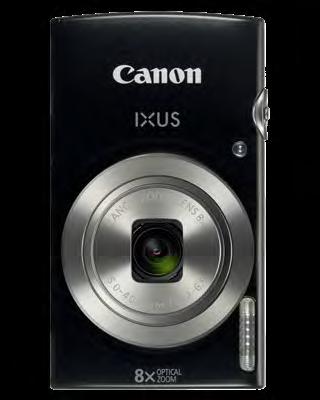






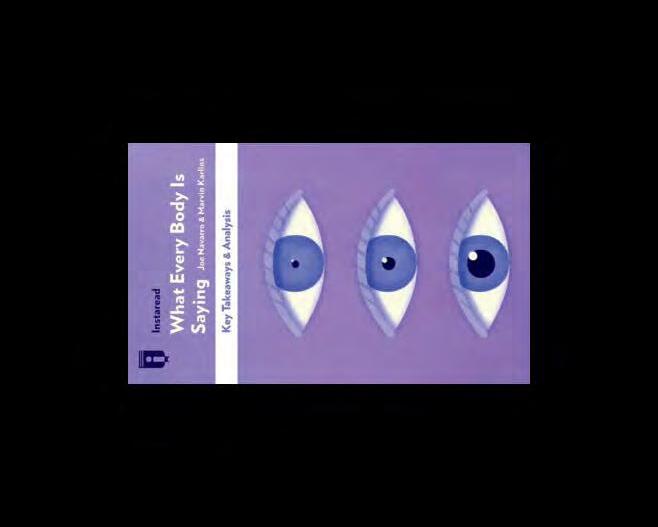
what everybody is saying, JOE NAVARRO
If you were invited to an event and the power piece was your bag, which bag would you choose?
A vintage Vivienne Westwood pink leather handbag.
In three words, how would you describe your personal style?
Experimental - maximalist - edgy.
What does ‘power dressing’ mean to you?
It means you can dominate a room with what you’re wearing, including wearing your confidence!





e ssential energy hydrating cream,






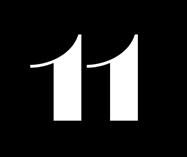
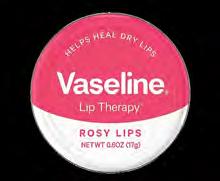


k/signature folder cardholder gold, KARL LAGERFIELD





Reflecting on your journey, what are the most significant lessons you’ve learned in building your brand?
Mounaz: When you don’t have control, you have to surrender, and that’s when the magic happens.
Aya: When one door closes, another one opens.
How have your Middle Eastern roots influenced or inspired aspects of your brand?
Both: Our brand showcases local craftsmanship and traditional techniques modernized for today’s market. Our motifs and brand identity are deeply rooted in our Middle Eastern heritage, reflected through our use of local artisans, cultural values, and Middle Eastern elements in our marketing.
What gap in the market did you aim to address through your brand?
Both: We wanted to increase Middle Eastern representation in the global luxury market. As significant spenders, we also wanted to be creators.


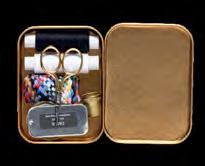





If you were invited to an event and the power piece was your bag, which bag would you choose?
Aya: I would choose the Palmette Minaudiere.
Mounaz: I’d go with the Bangle Clutch.
In three words, how would you describe your personal style?
Aya: Trendy, timeless, chic.
Mounaz: It depends on the weather. When it’s hot, I dress as if I’m on the beach. In cold weather, I love coats. My style ranges from very chic to very hippy.
What does ‘power dressing’ mean to you?
Aya: Confidence.
Mounaz: A woman who shares the values and energy of independence and empowerment.






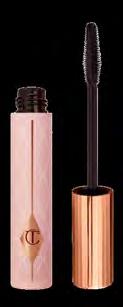
embossed pamlette pouch, OKHTEIN first aid kit



pillow talk pushup lashes mascara, CHARLOTTE TILBURY


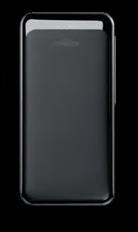




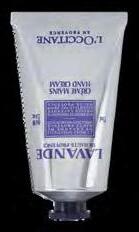
hand cream, L’OCCITANE






letting go: the pathway of surrender book, DAVID R. HAWKINS






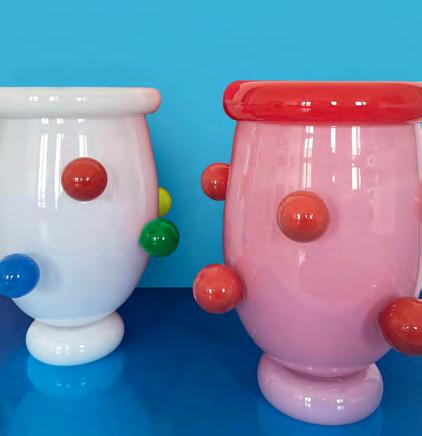






Amid testing times and an uncertain future, Beirut celebrates her creatives.
Beirut has weathered numerous challenges, yet, amidst adversity, its resilient people continue to shine, showcasing the city's rich tapestry of artistry and craftsmanship. Within its vibrant streets lie hidden talents and treasures waiting to be discovered and embraced. From May 23 to 26, Mariana Wehbe, founder of We Design Beirut, joined forces with industrial engineer Samer Alameen and visual communications studio Bananamonkey to unveil the city's boundless world of design and artistry to a global audience.




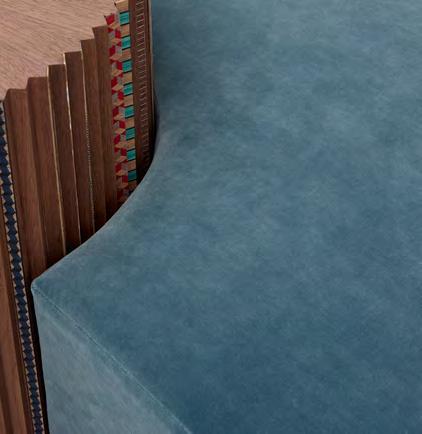



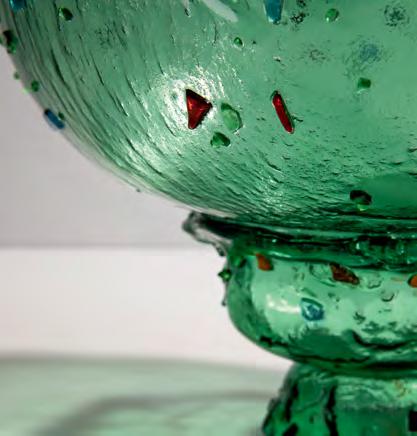
In its inaugural edition, We Design Beirut brought light onto the city's artistic landscape, reaffirming its position on the international stage. Comprising six exhibitions, alongside engaging talks and pop-ups, the event offered a unique experience, showcasing a diversity of Lebanese talents. Over four days, artistry and crafts breathed fresh life into the city, reaffirming Beirut as a beacon of hope and creativity, where dreams flourish and aspirations take flight.

by
The trailblazing public relations and creative events executive, Mariana Wehbe can now add another title to her professional repertoire: The Catalyst Behind Beirut’s Creative Rebirth. This year, Wehbe launched We Design Beirut, an event that spotlighted the city’s artists, artisans, architects, and craftspeople to a global audience, breathing new life into Beirut’s vibrant creative scene. But this is all in line with her career so far. Famed for orchestrating some of the region’s most ambitious contracts, her visionary approach to brand development, event management, and production has set new industry standards. Born in Abu Dhabi and raised in the US, Wehbe returned to Lebanon to start a 16-year career at DHL before founding her namesake PR firm in 2013. Her firm now represents top brands in fashion, interior design, automotives, and architecture. With a talent for identifying potential and forging strategic partnerships, Wehbe’s comprehensive 360-degree approach has solidified her reputation as a leading figure in public relations, celebrated for her innovation, dedication, and ability to realise grand visions.
When was it that you realised that this was the field you wanted to venture into?
It was never a realisation, more like my journey led me here, but also my freedom to not hold myself in a box that is specific to one field.
Your ability to dream big is well-known. Can you share with us from where you draw your inspiration for these grand visions?
Thank you for that, I’m humbled by this question. I really think it’s a matter of the amount of work you put into something without fear, I also worked for DHL for 16 years and I really believe that it truly impacted my capacity to think logistically whether big or small. Inspiration is all around us, you just need to know what truly moves you from that inspiration. Mine always goes back to my city, I’m not sure if it’s a blessing or a curse.
How do you approach creating immersive experiences that transport guests to a different place or time?
It starts with an idea, usually one that I tell myself is absolutely crazy! Then I build on it, most of the time I actually take a lot of advice. I share my idea with friends I believe have a vision, or friends I admire for their opinion. They always give me the first indication when I tell them the idea. I can sense it in their eyes or body language if it’s going to work or if I’m totally crazy.
What do you think is the secret to successful collaboration in creative projects?
Absolutely without a doubt, inclusivity of everyone, of course with standards, but I just love collaborations. You can never go wrong with everyone putting in the effort for a successful outcome.
How do you stay organised and ensure each one receives the attention to detail it deserves?
I have always known that my 16 years at DHL played a role in my business and entrepreneurial life. But I have to say, I believe they played a major role in putting We Design Beirut together. The logistical experience and know-how I gained over those 16 years kept coming back to me whenever we were planning, organising, and putting things into specific details. Working for a German company for that long set the ground for me to be capable of compartmentalising and creating a system that works for incoming and outgoing information. I truly found myself at many times pausing to say: “Oh my God, I’m so glad that I got this corporate experience”, because to a certain extent, the corporate world could be such an added value to many entrepreneurs in different stages of their career.
What was the lightbulb moment that gave birth to the idea behind WDB?
We Design Beirut was really my reaction to seeing and feeling all the design and creative talent in my country and wanting to show it to the world. The lightbulb moment actually came to me during a meeting at my Beirut office with the ladies behind Saccal Design House. They asked me why don’t I do a design week for Beirut? I instinctively picked up the phone and asked my team if they wanted to do it, and We Design Beirut was born.
Lebanon is known for its talented artists and designers. How do you think We Design Beirut will help introduce these talents to a global audience?
Lebanon’s design scene and talents don’t really need an introduction, they always end up finding their way into the regional and international communities. Through WDB, it was important for us to have these talents touch base back home, and from here also give an opportunity to the local design scene, including our artisans, students, and emerging designers, to all collaborate on one ground, in one place, in Beirut. We wanted to initiate conversations between our guests and participants to allow them to exchange knowledge and hopefully collaborate in the future, and of course to bring further international light and attention to the local design scene. We hope that WDB will bring opportunities to everyone involved and hopefully to our city on an economic level as well.
What is your next step after We Design Beirut?
We know that we have a big role to play in making sure that the next steps are at the same standard and even higher. We are definitely very proud of what has been done and achieved by everyone involved, for ourselves, for our city, and for our region. However, we know that it is time to go back to the drawing board and look back at everything that was done to analyse it, work on it, and get ready for next year.
In the realm of luxury stone, Rania Malli is a beacon of innovation, seamlessly blending artistry with nature’s most exquisite creations. As the driving force behind Stones by Rania Malli, her journey traces back to her family’s legacy in the industry. From her earliest days as a third-generation member of her family’s business, Malli was steeped in the artistry of stones, fostering an appreciation for their timeless allure. Given her lifelong fascination with the beauty of natural elements and inspired by the impeccable craftsmanship she observed, Malli embarked on a mission to redefine luxury through Stones by Rania Malli. Each project undertaken by her team is meticulously curated, with an unwavering attention to detail ensuring that every piece is treated as a prestigious work of art. From hand-selecting the finest marble to employing skilled craftsmen who seamlessly blend traditional techniques with modern technology, precision is paramount at every step. Through her work, Malli’s vision knows no bounds. With Stones by Rania Malli, she continues to carve her legacy, crafting timeless treasures that redefine opulence and elegance in the world of stone.
What inspired you to start Stones by Rania Malli and focus on the luxury stone industry?
Being the third generation in my family in this business, I had the opportunity to see the beauty created by nature and to get to learn a lot about it from a young age. The decision to enter the luxury stone industry was inspired by a lifelong fascination with exquisite craftsmanship and the timeless beauty of natural materials. Growing up surrounded by people mastering this field instilled a deep appreciation for the elegance and sophistication that high-quality stone brings to any space.
Can you describe the process your team goes through to ensure each project is treated as a prestigious work of art?
The team initiates each project by conducting thorough consultations with the clients to understand their vision, preferences, and expectations, and with a keen eye for quality and aesthetics, the team carefully selects the finest marble for each project. Then it goes to highly skilled craftsmen, employing traditional techniques and modern technology to bring the design concepts to life. Every cut, carve, and finish is executed with the utmost care and precision, ensuring that each piece of marble is transformed into a masterpiece. Throughout the project, the team maintains quality control measures to ensure that every aspect of the work meets the highest standards of excellence. With the right planning and coordination, the team arranges the installation process with professionalism and expertise, ensuring that the final presentation is nothing short of spectacular. After completing the project, the team remains dedicated to ensuring the client’s satisfaction and happiness with the finished result. They provide ongoing support and maintenance services to preserve the beauty of the marble elements, ensuring that each project continues to be admired as a prestigious work of art for years to come.
Can you share more about the consultancy services you offer and how you guide clients through the selection of stones, marble types, and colours?
As a team of experienced consultants, we provide personalised advice and guidance to clients, we study the clients’ needs and project requirements to recommend the most suitable marble materials.
What factors do you consider when choosing materials for both interior and exterior projects to ensure durability and elegance?
The architectural and interior style and design intent of the project influence the choice of marble materials, both indoors and outdoors. As for the exterior areas, we ensure that we choose the right type, that’s durable given the climate conditions, marble finishes with textured surfaces, such as honed or brushed finishes, provide better results and slip resistance compared to polished surfaces, making them ideal for outdoor use.
How do advanced manufacturing techniques play a role in the success and quality of your projects?
We’re always up to date with the advanced manufacturing techniques, as it plays an essential role in elevating the quality, efficiency, and sustainability of marble projects. We apply techniques and treatments such as water-repellants, isolation and polishing materials, ensuring long-lasting performance and maintaining the appearance of marble surfaces.
What are some of your favourite types of stones to work with, and why?
I have no preferences when it comes to choosing stones, as every type has its own beauty and I really enjoy working with different types of stones and materials to work with.
What made you want to sponsor We Design Beirut, and what aspects of the event are you most excited about?
Working with the Design Beirut team was both a pleasure and an enjoyable experience. Their involvement significantly enhanced our exposure through the international media covering the event, and the designers that attended from around the world.
Could you share your vision for the future of Stones by Rania Malli and the legacy you hope to leave in the industry?
My vision is to expand and to get to open a Stones boutique to showcase master art pieces, furniture and decorative items made with exotic natural stones.
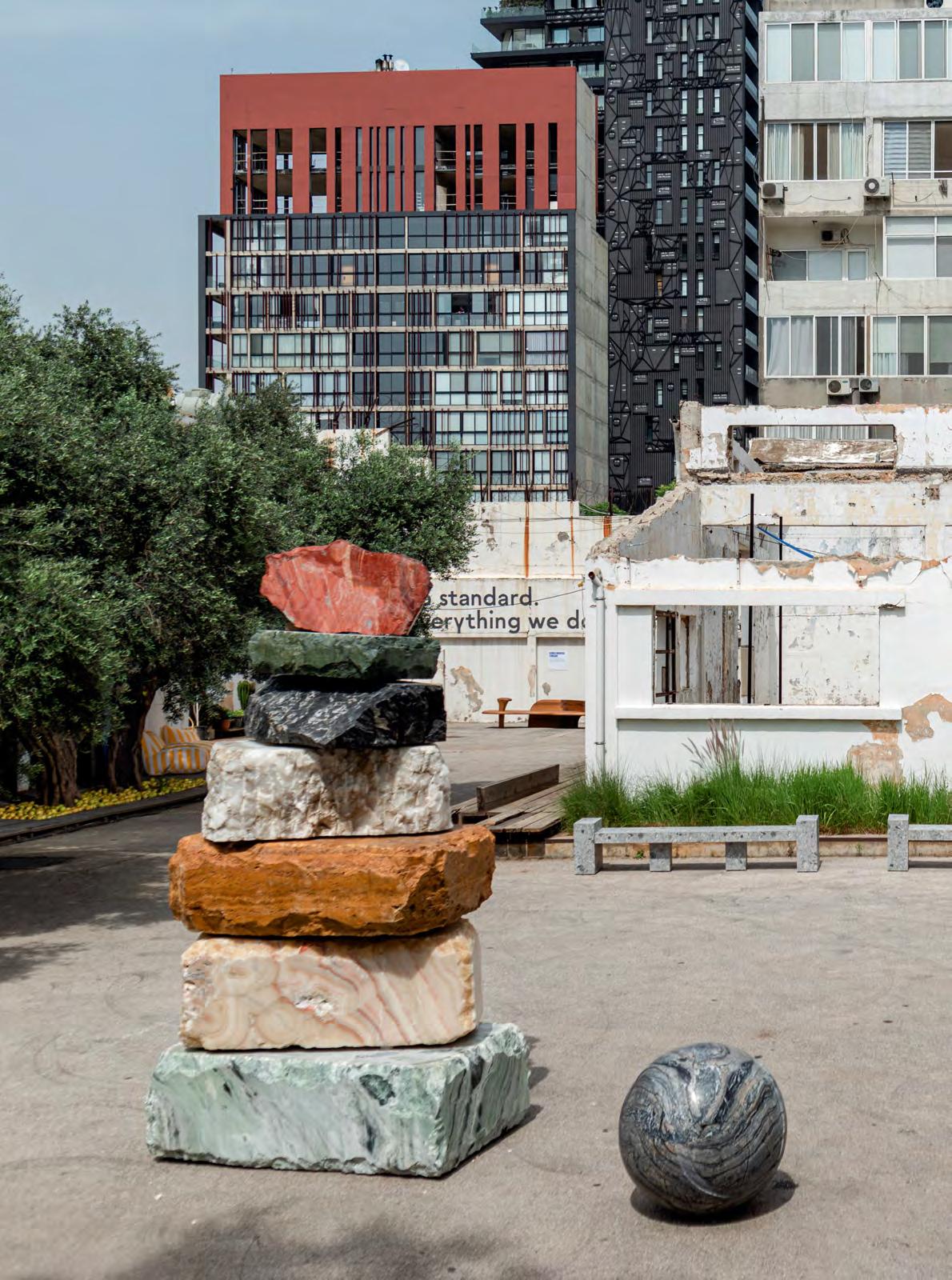

At The Silly Spoon, a Beirut-based boutique, every piece tells a story, reflecting the essence of its creators and inviting guests in a whimsical world of tablescapes. Inspired by the belief that a woman’s table is a canvas for self-expression, its vision infuses each dining experience with personality and charm. Stepping into the boutique is akin to entering a playful realm, where every piece embodies its own unique soul, yet seamlessly harmonises within the Silly world. Here, the concept of the table as a living space, rather than just a dining area, is celebrated. The mix-and-match approach at The Silly Spoon transforms dining experiences, surprising guests with vintage-contemporary blends and culinary delights. Challenges in redefining traditional settings were met with organic growth, where each item in the collection has its own tale to tell. Embracing diversity and creativity, The Silly Spoon offers a delightful array to satisfy every table and palate. This departure from the conventional idea of the Silver Spoon marks a bold step into a new era, defined by the playful and contemporary essence of The Silly Spoon.
What inspired you to create The Silly Spoon and focus on the ‘fashion of the table’ in modern homes?
I think every woman should express herself when she hosts, her table is a reflection of her personality, her taste, and her mood. This is what inspired me to focus on the fashion of the table.
The name ‘The Silly Spoon’ evokes a sense of playfulness. How do you incorporate this playful spirit into the pieces and overall shopping experience at your boutique?
When you step into the boutique, you immediately enter into the Silly world. Every piece embodies a soul, and you can immediately notice the difference between the works of the artisans, yet everything works together seamlessly. It is one world, but different women can find what makes them happy depending on their style.
How do you define the concept of a table being a ‘living space’ rather than just a place to eat, and how does The Silly Spoon embody this idea?
Ever since I was a kid, my favourite part of the day was dinner. I used to sit with my family and this moment was so sacred for me. The laughs, the fights, the long discussions - I loved and cherished those moments so deeply. The dining table is the most precious piece in your home. You share treasured moments on it with your kids, your friends, your family. It needs to be styled with love and passion.
Can you share some examples of how The Silly Spoon’s mix and match approach to table settings can transform a dining experience?
I like to surprise my guests. When they leave the dinner, I want them to have a dreamy smile on their face as they’re in the elevator. I love to mix and match vintage with contemporary and incorporate different materials and textures. But what I like the most is the “food surprise”, which I love to do by presenting a dish from old cooking books, or for example by playing with the colours of fruits and vegetables.
What challenges have you faced in redefining traditional table settings for a contemporary audience, and how have you overcome them?
Honestly, it happened organically. I used to do it at home and post stories on our Instagram account which our audience loved, and then it began to grow slowly and naturally.

Every piece at The Silly Spoon is said to tell a unique story. Can you share one of the stories behind some of your favourite items in the collection?
It would have to be my Lake Candle, which was actually inspired by the slime my kids were playing with. I was walking around their playroom, and here it was … the slime beautifully and perfectly shaped on the floor. I said to myself what if I add a stick to it, and thus my Lake Candle came to life.
How do you see The Silly Spoon’s participation in We Design Beirut enhancing your brand’s contribution to the local and international design community?
We Design Beirut was an amazing opportunity for all of us to show our work on an international scene but most importantly to bring back the light to our beautiful country. During those four days, it was about “Beirut” - the beautiful Beirut that has always been known to be full of life, talent, and art.
Nada Debs’ designs are defined by the synergy of two foundational principles: Handmade and heartmade. These values form the cornerstone of Nada Debs’ identity, driving the creation of designs that seamlessly meld her Middle Eastern roots with her Japanese upbringing. The result? Designs that are not only aesthetically pleasing but also deeply imbued with tradition, tranquility, modernity, and simplicity. Drawing on her multicultural background—nurtured through studies at the Rhode Island School of Design and a life rich with global exploration—she crafts pieces that serve as bridges between cultures. Her work spans various scales and disciplines, encompassing product and furniture design, bespoke commissions, and collaborations across craft, art, fashion, and interiors. Through her embrace of geometric shapes inspired by regional crafts, she breathes new life into tradition, ushering in a contemporary aesthetic beloved by many and that she terms Neo-Arabia.
Your work spans various creative fields. What initially drew you to such a diverse range of outlets, and what brought you into the arts?
I studied interior architecture, so I was already in the world of architectural design. When I came to Beirut 23 years ago, I was very interested in craft. But I noticed that there was no interest in craft in this part of the world. So I set out to discover the world of craft in the region and adding a design element to elevate it.
How do you weave your cultural influences, both Arab and Japanese into your designs?
The Japanese design philosophy is more about less is more. I simply applied this onto our beautiful craft techniques, such as mother of pearl inlay or marquetry. This achieved two significant things. First, it established a unique identity. We applied traditional craft in a contemporary manner, something unprecedented in our region. Second, it resonated with everyone, creating a new cultural language. I coined it Neo-Arabia.
You describe your approach as “handmade and heartmade”. Could you elaborate on what this means to you and how it shapes your creative process? Handmade items are more than just products; they embody the spirit and dedication of their creators. Unlike repetitive, machine-made goods, true craftsmanship comes from a place of deep commitment and passion. It’s rare to find a craftsman who doesn’t pour their heart into their work, making it a revered art form. It requires dedication and devotion. Hence, it is not only handmade, but heartmade.
How do you approach the process of developing new design ideas?
Usually, I start with a craft technique and a lot of samples. I find inspiration by staring at them, and seeing what type of furniture item I could design that will highlight the craft itself., I discuss the possibilities with my team, and together we take them to a whole new level. It’s really a collaborative process.
How do you use geometric forms to convey complex philosophies and emotions?
I first got into geometry by examining the traditional designs of this region, particularly in architecture, which feature a lot of calligraphy and repetitive geometric patterns. This repetition is a core aspect of Islamic philosophy, representing the abstract nature of God. But when you look at geometry, it is innate in all of us, it’s a universal language and transcends all cultures so I like to use geometric patterns to connect to each other.
Talk to us about the Dior Beauty Eid Adha collab, and how it came to life.
For me, the Dior collaboration is, in a way, a culmination of 20 years of effort to elevate our regional craft and our brand to the level of luxury. The fact that a global brand like Dior sought us out is something that makes me very proud.
The Dior marketing team from the Middle East headquarters reached out to us two years ago to design a limited edition of coffrets for their Oud perfumes. We used mother of pearl and tin inlay and carving in an elaborate way to achieve the Dior cannage pattern.
There’s a limited edition of 1,000 single coffrets and only 20 trio coffrets. Originally it was only for the Middle East market but today, the European market is also selling them as well.
What impact do you hope We Design Beirut will leave on craft?
The craft techniques that was seen in We Design Beirut is only a sliver of the craftsmanship in this part of the world, but nevertheless the exposure has been so important for us. Receiving acknowledgement for all the work that the designers have created despite the hardships we have faced in Beirut has been phenomenal, and I believe that has given hope to the Lebanese design scene again. ■
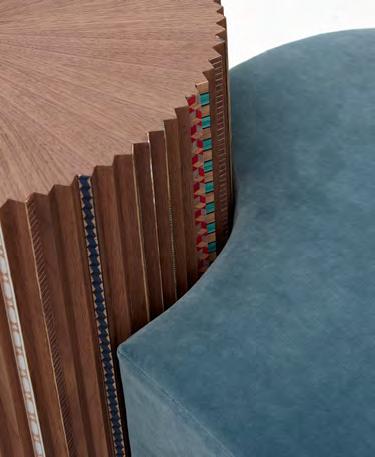




As its name suggests, PIK’D stands as an exclusive sanctuary for collectible art and design nestled in the vibrant heart of Beirut. Handpicked by Randa Missir, the creative force behind this acclaimed gallery, each piece reflects her impeccable taste and discerning eye. Since its inception in 2018, PIK’D Gallery has become a haven for art enthusiasts, boasting an exquisite collection of internationally acclaimed ceramic and glass pieces, thoughtfully complemented by exceptional works from Lebanese designers. Despite lacking formal training, Missir’s lifelong immersion in the art world has bestowed upon her a remarkable talent for sourcing and curating unique treasures. Her dedication and vision have earned her the trust of collectors, architects, and art aficionados worldwide. As PIK’D Gallery continues to shine on the international stage, it remains a distinguished platform for artistic exploration and a beacon of inspiration in the world of contemporary art and design.
What inspired the creation of PIK’D and to bring together such a diverse collection of international and Lebanese artists?
I have always had a passion for art and beautiful objects, I found myself purchasing pieces that spoke to me over the years and creating a personal collection. These were then used for styling photoshoots for my husband’s interior design business. Slowly but surely I started acquiring pieces for clients, and sharing my experience and love of ceramics and glass objects with others.
It was only natural to establish a gallery to house all the pieces, a perfect way for me to share them with the creative community both locally and abroad.
How do you curate your selections to ensure each piece maintains its exclusivity?
We maintain our exclusivity mostly through my involvement in the creative process because I personally provide my input about the piece, be it about a specific colour, size, or shape, making the piece unique and exclusive to us through our additional PIK’D touch. The curation process is a very personal one, and the pieces chosen really do speak to me. That said, the gallery must cater to the needs of my clients and the community at large. Oftentimes, if there is a need for mirrors for example, or side tables, I will order pieces that are able to fill that void. The gallery is a place where I can share beautiful pieces, spark interest and also provide clients with objects that they are in need of.
What is the story behind the name “PIK’D”?
The name was born from what we do, every item is ‘picked’ or chosen out of love, passion, and an eye for art and design. When finalising the name, we went with the shortened version “PIK’D” because we felt it looked and resonated better with our gallery, it just felt right.

How do you see PIK’D contributing to the global recognition of Lebanese designers and artists?
At PIK’D, we play our role in showcasing Lebanese talent globally by taking our artists and artisans to international craft fairs in France and London for example, allowing the international community to discover and appreciate the talent, creativity, and skill of Lebanese artists. I genuinely believe in the talents of Lebanese designers. The fact that I am able to curate collections with both internationally-acclaimed artists and Lebanese designers speaks volumes about the creativity of the local artisanal community. I see in Lebanese designers a desire to grow and improve. They are like a sponge, always wanting to learn new techniques, and then having the courage to adapt them to their own aesthetic and client’s taste. Many designers are able to ‘copy’ or ‘imitate’ a model, I think that the Lebanese artisan’s ability to create their own designs using new techniques is what sets them apart, and allows them to evolve.
What challenges do you face when curating such high-end and unique art pieces for collectors, architects, and art lovers?
With pieces from over 20 different countries, how do you ensure that PIK’D maintains a cohesive yet diverse gallery experience?
After many years of experience spent travelling, discovering new talents, and visiting and participating in exhibitions, I am able to maintain this cohesive curation, while always guaranteeing diversity through a large number of artists from all walks of life. I believe in collaborations with artists across the globe. My process is two-fold, at first I identify who it is I want to work with. An artisan or artist whose work reflects my ethos, and creates meaningful pieces. Then comes the process of customization. In order to keep my collection cohesive, oftentimes I work with the artist to create pieces that fulfil my curation process. The colourway, the object itself, the texture. These are all elements that I consider when placing an order. This ensures that my pieces are unique, well-curated for my gallery space, and also are aligned with the needs and desires of my clients.
Believe it or not, the international network of unique art pieces is made up of a small number of galleries that we are all familiar with. The real challenge is to find new and original pieces that I can take back home. If there is one thing that I treasure it is variety and diversity. I have always wanted PIK’D to be a place where people come to discover new ideas. A place where they can get inspired, which means that I need to continuously switch it up, add new artists, new objects and techniques.
What motivated PIK’D to become one of the main sponsors of We Design Beirut, and how does this partnership align with your gallery’s vision?
I believe in Beirut, and I believe in Mariana. The duo of her and Samer was exciting to me, and I could see it being a wonderful success. I see the importance of craft around the world, and I knew that what we had to offer in Lebanon was as equally compelling as abroad. I wanted to bring attention to Lebanese artisans, and allow them the exposure that they deserved. ■
The Venice Biennale, a cultural compass for the art world, focuses on the Global South.
words MARIANA BAIÃO SANTOS
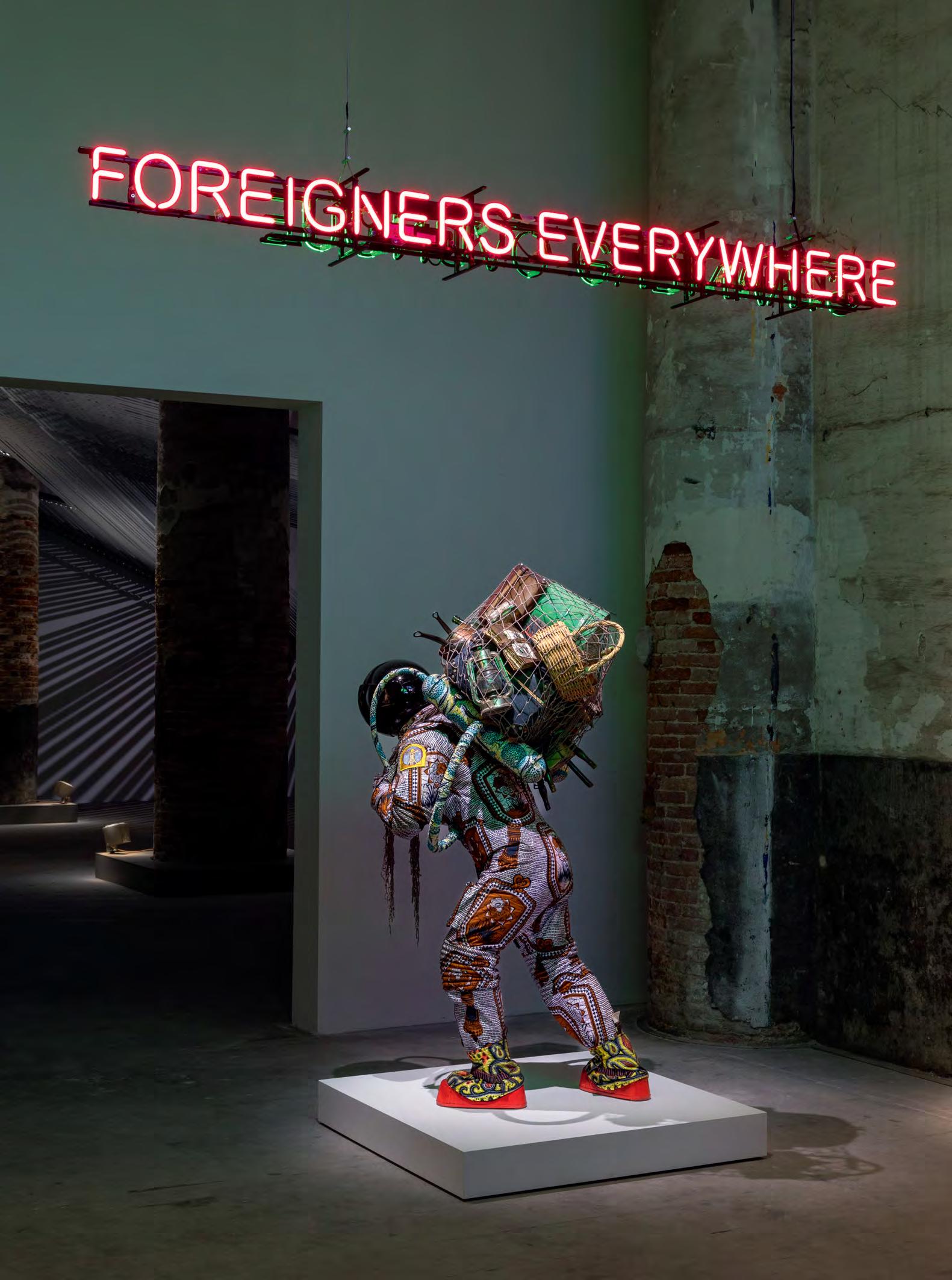

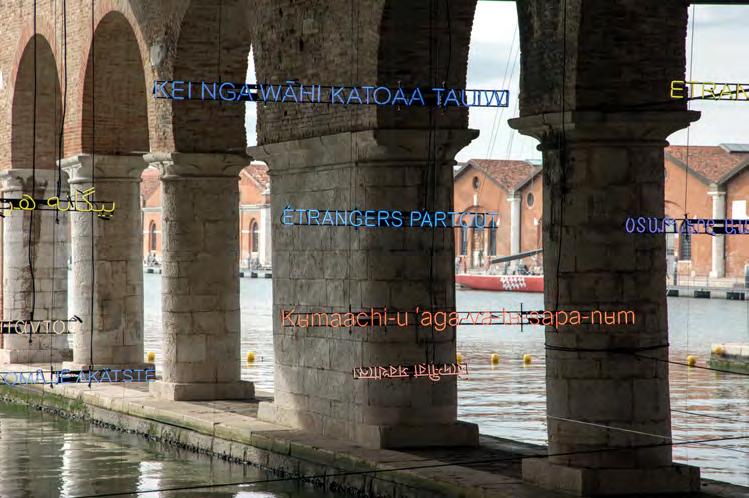

Recently, the Venice Biennale saw the crème de la crème of the art world descend upon the Italian city for a week of previews. The event officially opened on April 20th and will end on November 24, and it remains a major draw for art enthusiasts.
While there are undoubtedly egos and money on show, and perhaps a touch of posturing – as art world resident provocateur Jerry Gogosian quipped, “Instagramming a water taxi? For Venice? Groundbreaking.” – the Venice Biennale transcends the glitz. It’s more than just a glamorous excuse for art power players to mingle. The Biennale is a cultural compass, setting the direction for the art world every two years. Curators, artists, collectors and enthusiasts from across the globe are still flocking to Venice, their eyes fixed on the latest trends and groundbreaking ideas unveiled within the hallowed halls of the Giardini and Arsenale.
This year’s edition, under the leadership of Brazilian curator Adriano Pedrosa, is proving to be a landmark event. Pedrosa, the first Latin American and first curator from the Global South to hold the position, has taken a bold step towards inclusivity with his Biennale entitled “Foreigners Everywhere.” The focus is on artists from Africa, Latin America, Asia, and the Middle East. Gone are the days of Eurocentric dominance; Pedrosa is rewriting the narrative of art history, showcasing previously overlooked 20th-century artists from the South alongside established Western Modernists. The name, the curator explains, “has several meanings. First of all, that wherever you go and wherever you are you will always encounter foreigners— they/we are everywhere. Secondly, that no matter where you find yourself, you are always truly, and deep down inside, a foreigner.”
Despite being a visual art exhibition, the 60th Venice Biennale is deeply engaged with the power and complexities of language. This focus is driven by the central exhibition’s title, “Foreigners Everywhere,” borrowed from a neon artwork by the Claire Fontaine collective.
Claire Fontaine, itself not a single person but a group named after a stationery brand, based their work on the phrase “Stranieri Ovunque” used by a Torinese anarchist group. The chosen translation, “Foreigners Everywhere,” is deliberate. While “Strangers Everywhere” might be a more literal translation from the Italian, “Foreigners Everywhere” emphasizes the weight of national identity and its potential to be both a source of division and a unifying call. The neon artwork itself reflects this slipperiness of language, displaying the phrase in a growing number of languages, each iteration highlighting the potential for both misunderstanding and connection.
In the face of recent global turmoil, the exhibition’s message is impossible to ignore. The refugee crisis and rising tensions around immigration cast a long shadow over our world. “Foreigners Everywhere” isn’t simply an artistic exploration; it’s a powerful commentary on the human experience in the 21st century. By showcasing the artistic voices of displaced communities and those grappling with issues of identity, the Biennale compels us to confront these challenges head-on. It’s a call for empathy, a reminder of the shared humanity that transcends borders and backgrounds. The Venice Biennale has always been a platform for dialogue, and in these uncertain times, “Foreigners Everywhere” offers a much-needed space for reflection and understanding.
This highlighted the ongoing struggle for recognition by Palestine, which cannot have an official pavilion due to Italy’s (and many other EU countries’) stance on Palestinian statehood.
Still, Palestinian voices are prominently featured throughout the Biennale, both in the central exhibition and in separate “collateral events.” The artists underscore their belief that a ceasefire is only a temporary solution. True peace, they argue, requires addressing the underlying issues that fuel the conflict.
“South West Bank: Landworks, Collective Action and Sound,” an official collateral event curated by Artists and Allies of Hebron and Dar Jacir Center for Art and Research, housed at Palazzo Contarini Polignac, provides a platform for established and emerging Palestinian artists, including Emily Jacir and Jumanna Manna.
The showcased works offer a personal and poignant perspective on the Palestinian experience. Mohammed Saleh’s video blog documents his struggle to reclaim land destroyed by the Israeli army. Shaima Hamad’s installation “Dough Ball” explores Palestinian death rituals through the act of cultivating soil, even on the toxic land where Dar Jacir itself is located.
Sari Khoury’s project “Grapes of Wrath” symbolically resurrects a pre-1948 vineyard destroyed by Israel, while Dima Srouji and Jasbir Puar’s collaborative piece “Untitled (Onion Masks)” explores themes of destruction and healing. In a recent interview with Artnet, Srouji emphasized the ongoing need for Palestinian voices to be heard:
“I feel a sense of responsibility to speak on behalf of Palestinian artists in Venice because there are so few,” the group said. “Thankfully, Adam [from Artists and Allies of Hebron] was the person who applied for this. True solidarity means giving us the space to be heard, not waiting for us to beg Venice to show us.”

This year’s edition, under the leadership of Brazilian curator Adriano Pedrosa, is proving to be a landmark event. Pedrosa is the first Latin American and first curator from the Global South to hold the position.

Additionally, in a central room of Palazzo Mora, a series of stark black and white illustrations by Gaza artist Maisara Baroud hangs suspended on translucent paper. These tormented figures trapped on the page, juxtaposed with bombed buildings in the background, create a powerful barrier between the viewer and the cheerful energy of the Biennale. Baroud’s rawness, achieved by literally tearing pages from his sketchbook, forces even casual visitors to confront the harsh realities of Gaza through the filter of art.
A few blocks away, Malak Mattar’s exhibition, “The Horse Fell off the Poem,” uses a large-scale painting and smaller drawings to depict the ongoing horrors and destruction in Gaza. Mattar, a young artist who witnessed the conflict firsthand, utilizes powerful imagery reminiscent of Picasso’s Guernica, but emphasizes a distinct Palestinian perspective. These two exhibitions, alongside the “South West Bank” show, demonstrate the resilience and power of Palestinian art within the Venice Biennale.
Nevertheless, the Biennale isn’t just about political and intellectual exploration, it’s an immersive experience, and that is where the magic happens. As you navigate Venice’s labyrinthine streets, a cacophony of languages washes over you - Italian chatter bouncing off laughter and snippets of overheard discussions. This soundscape becomes the soundtrack to your artistic adventure, a constant reminder of the Biennale’s global reach.
Interactive installations blur the lines between observer and participant, drawing you deeper into the artwork. One moment you might be mesmerized by a video work, the next you’re lost in the touch-provoking textures of a giant sculpture. This constant shift keeps you on your toes, challenging your preconceived notions of what art is, or can be, and urging you to see the world through a fresh lens.
The thing about contemporary art is that it’s not about learning – it’s about unlearning. It doesn’t spoon-feed you information or tell you what to think. Instead, it challenges your preconceived notions about what art is and can be. It’s a playground for breaking the rules, a platform for the unexpected. Experiences, like the Biennale, force you to re-evaluate your definition of art. This “unlearning” is the heart of contemporary art. It’s not about passive consumption; it’s about active engagement and sparking critical thinking. ■

Discover a land of plenty and indulge in just a little of the high life while you do.
For the discerning traveler seeking an unparalleled Canadian adventure, look no further than the incredible Shangri-La Hotels in Toronto and Vancouver. With Air Canada expanding their routes to include a direct flight from Dubai to Vancouver, there’s never been a better time to visit. This is one luxurious travel experience, where you can discover the vibrant metropolises of Vancouver and Toronto in style.
Air Canada, Canada’s national airline, offers a comfortable and convenient start to your journey. They recently announced the relaunch of non-stop flights from Dubai to Vancouver, starting October 2024. Their Boeing 787 Dreamliners boast three cabins of service, including the luxurious Signature Class with lie-flat seats, Premium Economy and Economy Class, all designed to ensure a relaxing and enjoyable flight.
Air Canada’s commitment to culinary excellence is plain to see, dishes are created by a panel of celebrated Canadian chefs, including David Hawksworth and Vikram Vij. In addition, top sommelier Véronique Rivest has curated a selection of exceptional Canadian wines to complement your meal. For frequent flyers, Air Canada’s Aeroplan loyalty program allows you to collect and redeem points, while eligible customers can enjoy priority check-in, access to Maple Leaf Lounges, and other exclusive benefits.
Once you touch down in Vancouver or Toronto, Shangri-La Hotels will be your welcoming haven. Both locations boast stunning architecture and unparalleled service, ensuring a truly unforgettable stay.
Shangri-La Toronto offers two unique signature packages, catering to the discerning traveller’s every need. For the thrill-seeker, the “Unique Toronto Escape” package includes a helicopter tour over Niagara Falls and a gourmet meal at the renowned Peller Estates Winery. If you’re a lover of fine food, then “An Epicurean Getaway” is perfect for you. This package includes a guided shopping expedition through the historic St. Lawrence Market with the hotel’s expert chef, followed by a delectable three-course meal at Bosk, featuring the freshest local ingredients.
Shangri-La Vancouver is an urban oasis nestled between the mountains and the sea. Each of the 119 beautifully appointed rooms and suites offers breathtaking views of the city or the surrounding mountains. The hotel’s commitment to sustainable practices is evident throughout, from its green spaces to its energy-efficient design.
Air Canada and Shangri-La Hotels together provide the perfect combination for your Canadian adventure. Whether you’re seeking relaxation, exploration, or a touch of both, their partnership has curated a unique experience. So, pack your bags, book your flight! ■
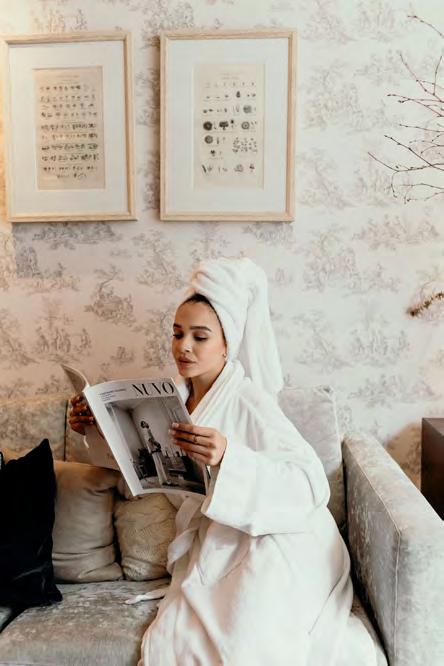


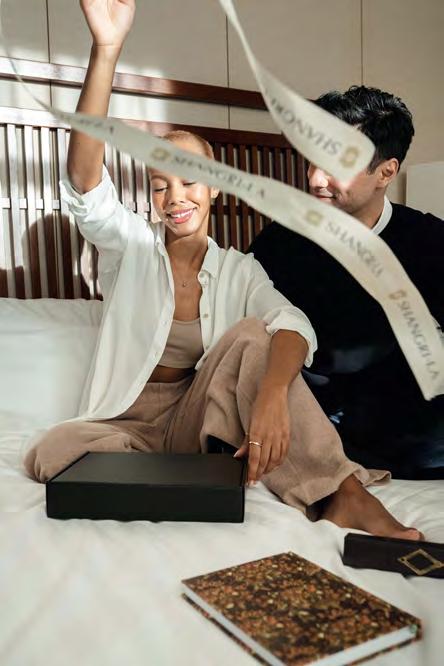



Nestled in the vibrant heart of Yalikavak Marina, the newly opened Yalikavak Marina Hotel by Sunset Hospitality is redefining luxury on the Turkish Riviera. Designed for discerning travelers seeking a blend of high-energy excitement and opulent comfort, this sophisticated haven offers an unforgettable escape with panoramic views of the Aegean Sea and a wealth of world-class amenities.
Yalikavak Marina Hotel, the latest venture by Sunset Hospitality, represents the perfect fusion of comfort and luxury. Situated in one of Turkey’s most dynamic marinas, the hotel stands out as an epitome of modern sophistication and fast-paced life.
Guests are welcomed into an environment where every detail has been meticulously crafted to offer an unparalleled experience. The hotel features 36 refined and spacious rooms and suites, each designed to provide maximum comfort and style. Among these, the luxurious duplex suites speak to contemporary comfort and style, and the Panoramic Villa provides an elevated experience with breathtaking views. The highlight of the hotel is the Yalikavak Suite, one of Turkey’s most luxurious offerings and one which embodies modern elegance and sophistication.
The Yalikavak Marina Hotel ensures that relaxation and recreation go hand in hand. Guests can unwind in the 25-metre lifestyle pool or on the private beach, perfect for soaking up the sun and enjoying the serene surroundings. For those seeking rejuvenation, Casia Spa & Fitness at Yalikavak Marina offers a range of massages and skin and body care treatments using world-renowned Elemis beauty products. Facilities include and steam rooms, as well as a traditional Turkish Bath, providing a holistic wellness experience. Personalized diet and fitness programs overseen by experienced personal trainers are also available, helping guests stay in shape and healthy.
Yalikavak Marina is more than just a destination for yacht enthusiasts and beachgoers, it’s a shopping paradise featuring an array of luxurious brand stores and boutique outlets including Bottega Veneta, Louis Vuitton, and Yves Saint Laurent. As night falls, the marina transforms into a hub of vibrant nightlife and dining experiences. Guests can indulge in exquisite international flavours at iconic culinary destinations like Bagatelle Bodrum, Nusr-et, Novikov Restaurants, Zuma, and Sait, each offering a unique and unforgettable epicurean journey. The nightlife scene is equally captivating, with famous DJs, elegant parties, and entertainment that lasts from night to day.
Every moment at Yalikavak Marina Hotel is designed to inspire wanderlust, offering a seamless blend of Mediterranean elegance and modern sophistication where luxury and excitement converge. Whether you seek relaxation, rejuvenation, or high-energy fun, Yalikavak Marina Hotel promises an unforgettable Mediterranean retreat.
The METT Hotel & Beach Resort Bodrum offers a unique experience in Turkey’s beating heart.
Located along one of the most beautiful stretches of beach on the Turkish Riviera, METT Hotel & Beach Resort Bodrum invites travelers to experience the ultimate Mediterranean escape. Combining modern minimalism with the natural beauty of Bodrum, this luxurious resort offers an exquisite blend of comfort, relaxation, and vibrant entertainment.
METT Hotel & Beach Resort Bodrum, a jewel along the Turkish Riviera, beckons travelers with its promise of an extraordinary Mediterranean escape. This luxurious resort, part of Sunset Hospitality’s portfolio, perfectly balances contemporary elegance with the breathtaking natural beauty of its host city.
The resort features 72 gorgeous guest rooms and 31 premium suites, lofts, or villas, each offering stunning views of the Aegean Sea. Designed to provide a home-away-from-home experience, the accommodations blend Mediterranean charm with modern sophistication, ensuring maximum comfort and style for guests seeking stylish getaways.
A fantastic dining and nightlife destination in its own right, METT Bodrum boasts four unique restaurants, each catering to different tastes. ISOLA, the resort’s stylish Italian restaurant, is situated within the beautiful Manzara Garden, offering impressive views overlooking the Castle and Marina of Bodrum. ATTIKO, perfect for sundowners and late-night gatherings, treats guests to delicious bites and drinks in a vibrant atmosphere with live DJs and soulful music. For an authentic Turkish experience, Anjel serves Bodrum’s most delicious daily breakfast indoors and on its stunning outdoor terrace, now complemented by an all-new shisha lounge. Finally, FOLIE Restaurant and Sea, inspired by the Mediterranean Riviera, redefines the traditional beach club scene with its unique concept offering four guest experiences: an elevated seaside sunbed platform and beach, a chic southern Mediterranean open-air restaurant, private VIP cabanas, and a bar lounge. Entertainment at METT Bodrum is a vibrant affair. FOLIE’s famed daytime Cabaret Chic shows captivate guests with their performances, adding an extra layer of excitement to their stay.
METT Bodrum’s holistic approach to hospitality extends to its wellness offerings. MOI Spa provides rejuvenating treatments designed to pamper and de-stress guests using summer products that invigorate both mind and body. The MOI Spa Signature Hammam offers a traditional body scrub followed by an exfoliating effect of coffee milk and honey crystals, paired with an aromatic foam application and massage and finished with a refreshing rose water application.
METT Hotel & Beach Resort Bodrum promises a complete holiday experience where thrills meet relaxation. Whether it’s lounging by the beach, indulging in fine dining, or rejuvenating at the spa, guests are guaranteed an unforgettable stay. ■

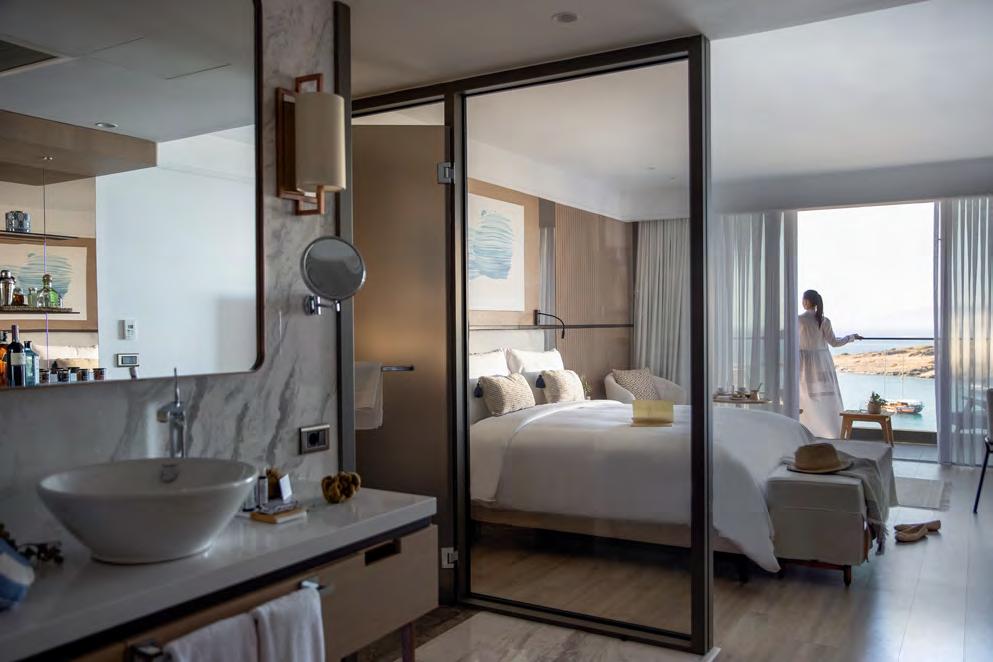
WE DESIGN BEIRUT 2024
by KARIM SAKR

May 23 - 26




RM 65-01
Skeletonised automatic winding calibre
60-hour power reserve (±10%)
Baseplate and bridges in grade 5 titanium
Split-seconds chronograph
Function selector and rapid winding mechanism
Variable-geometry rotor
Case in 5N red gold and Carbon TPT®